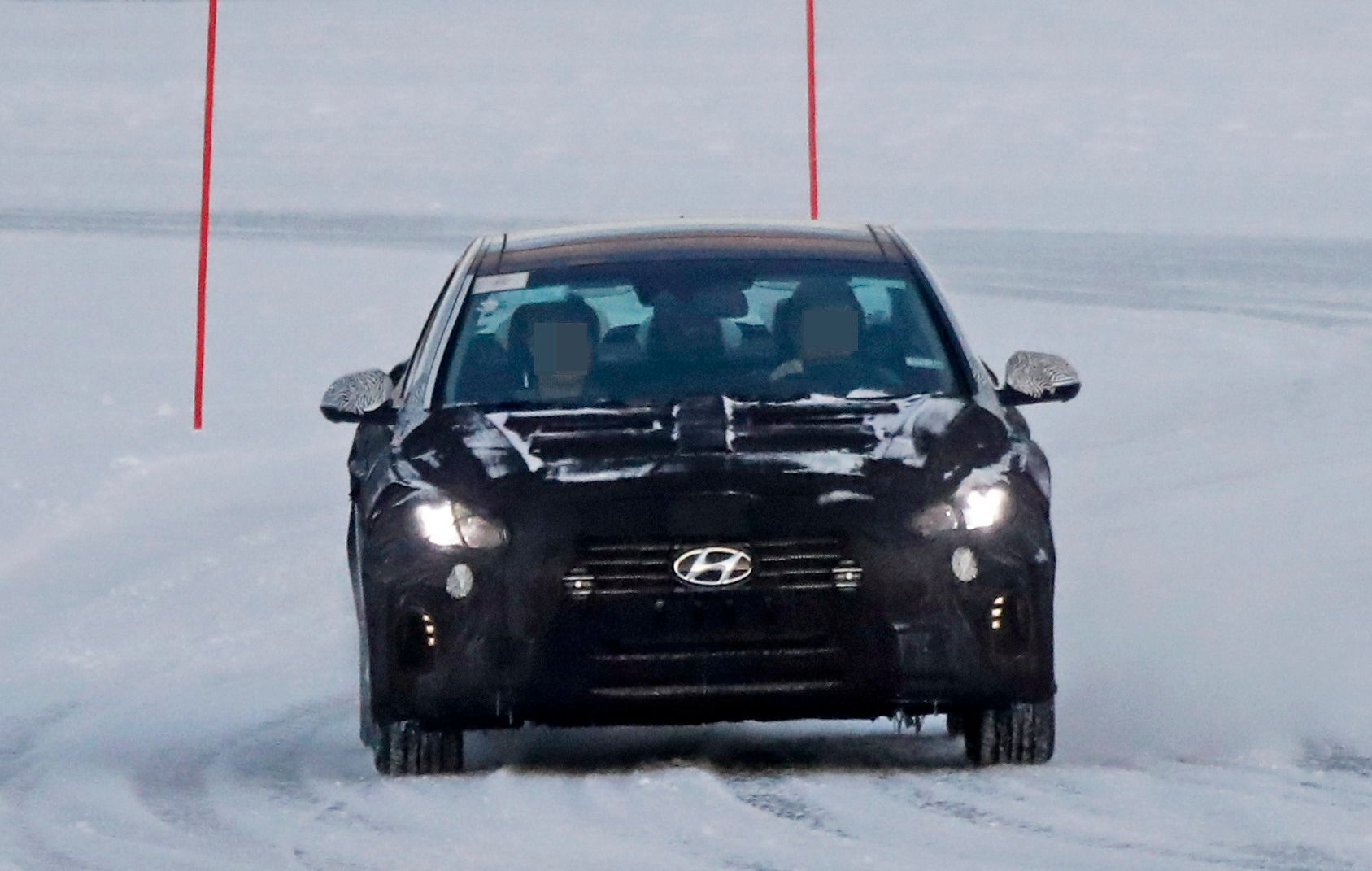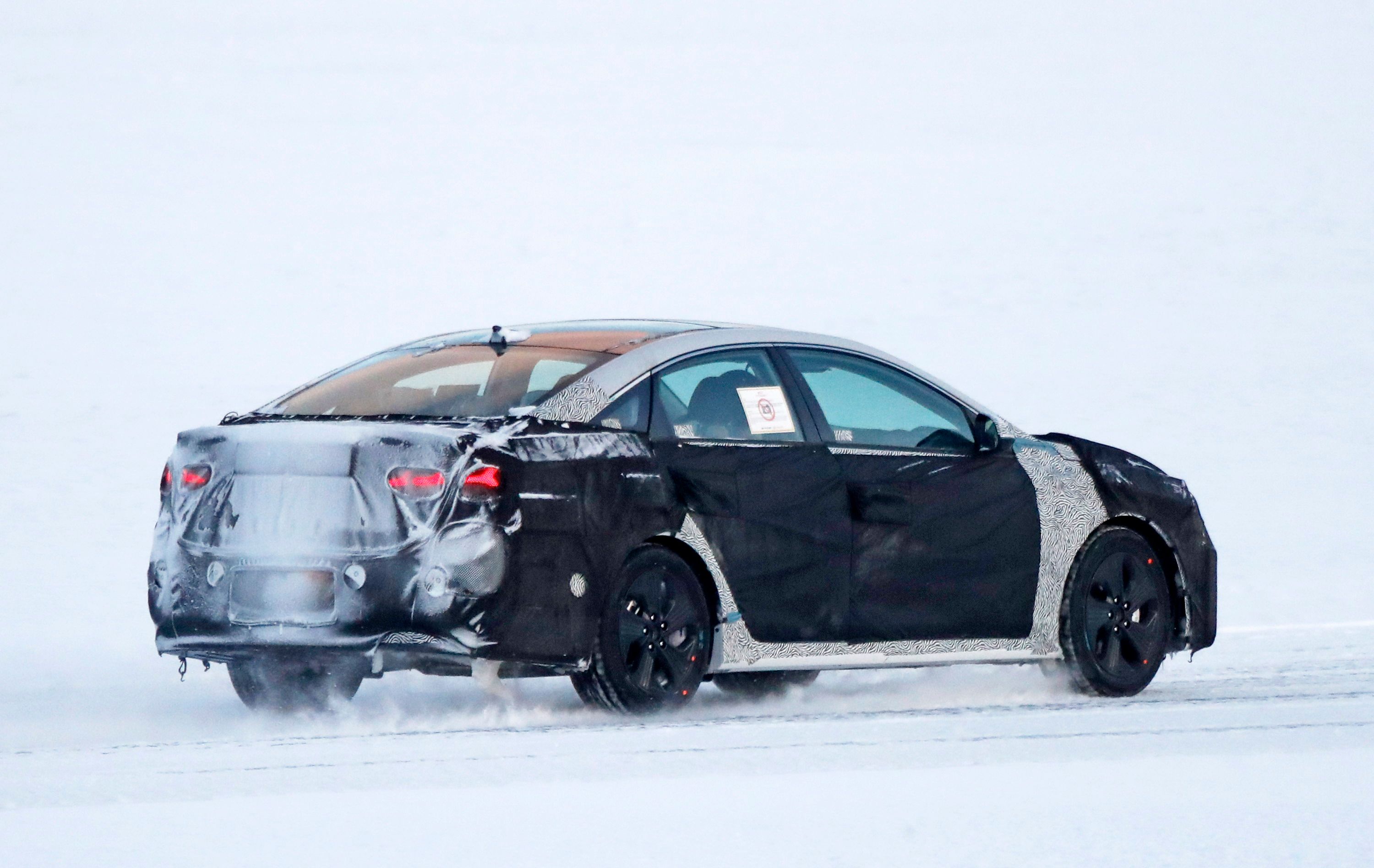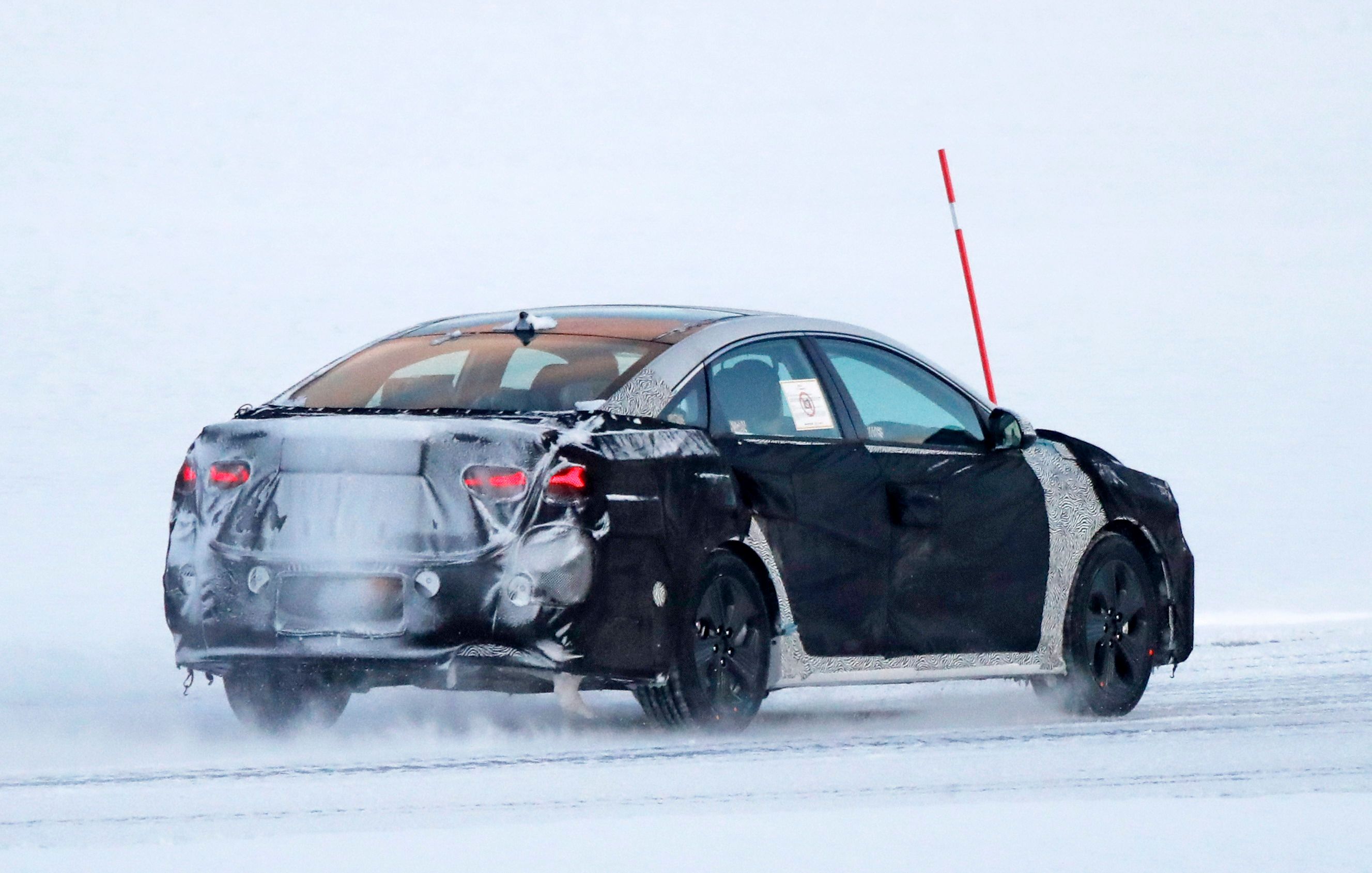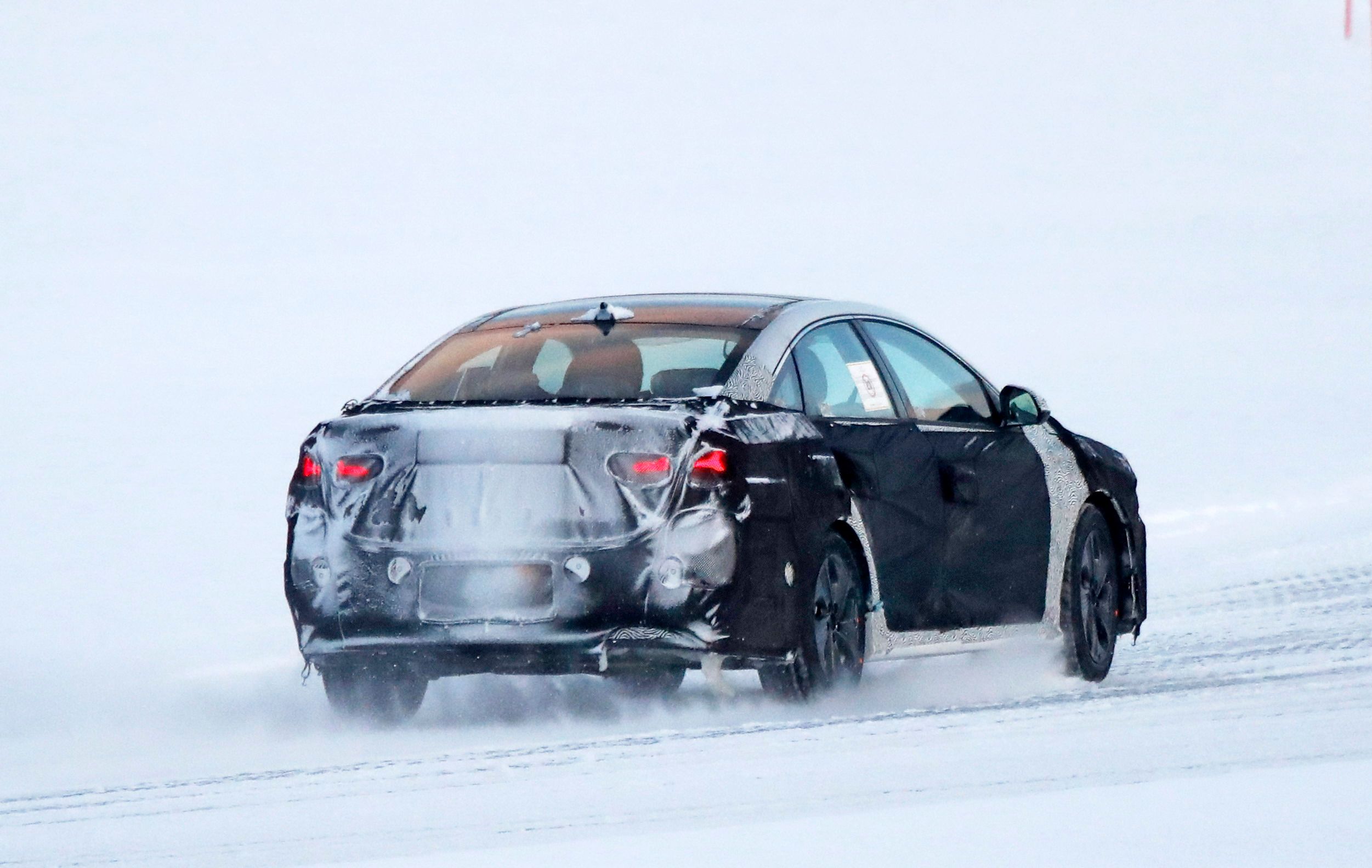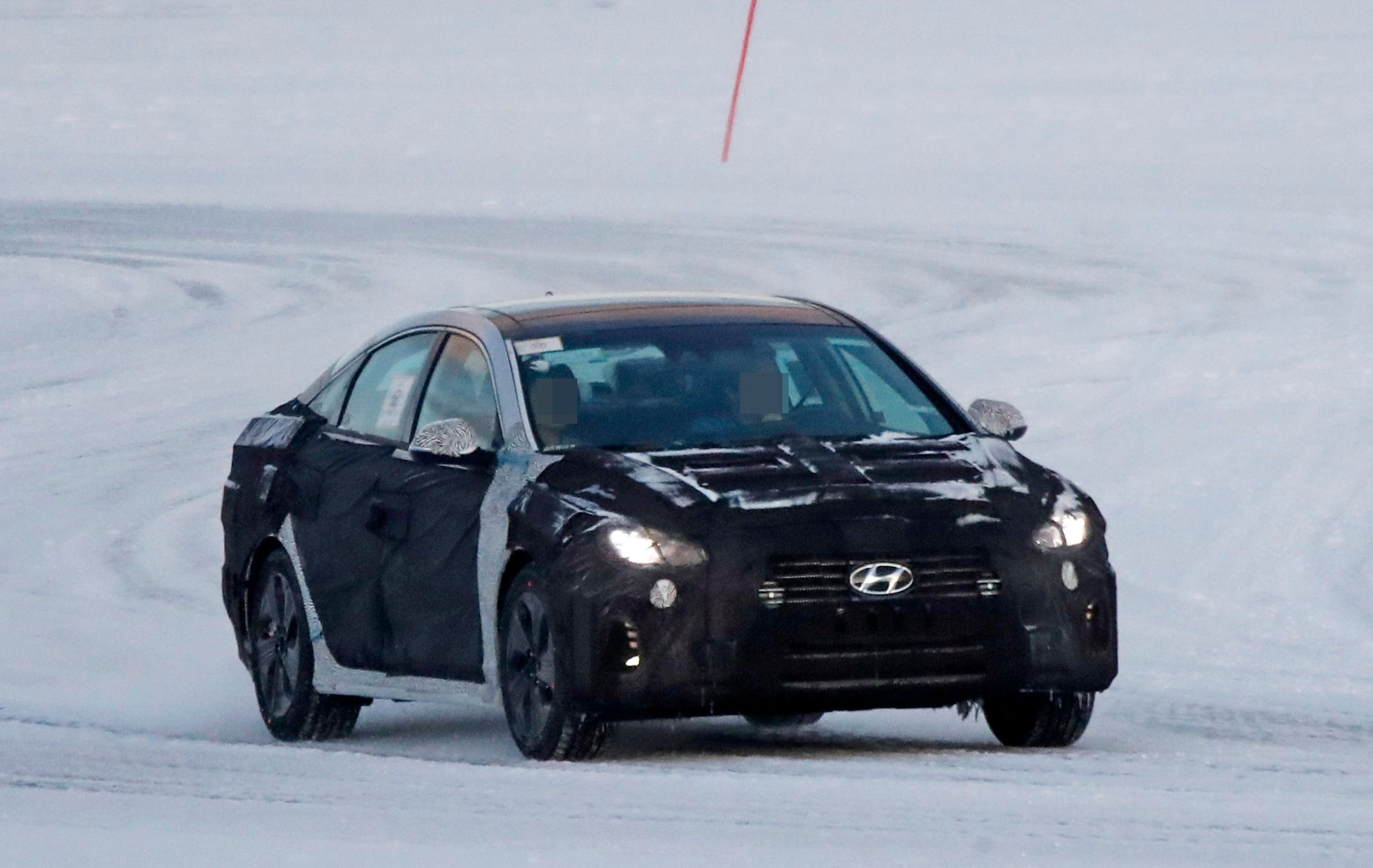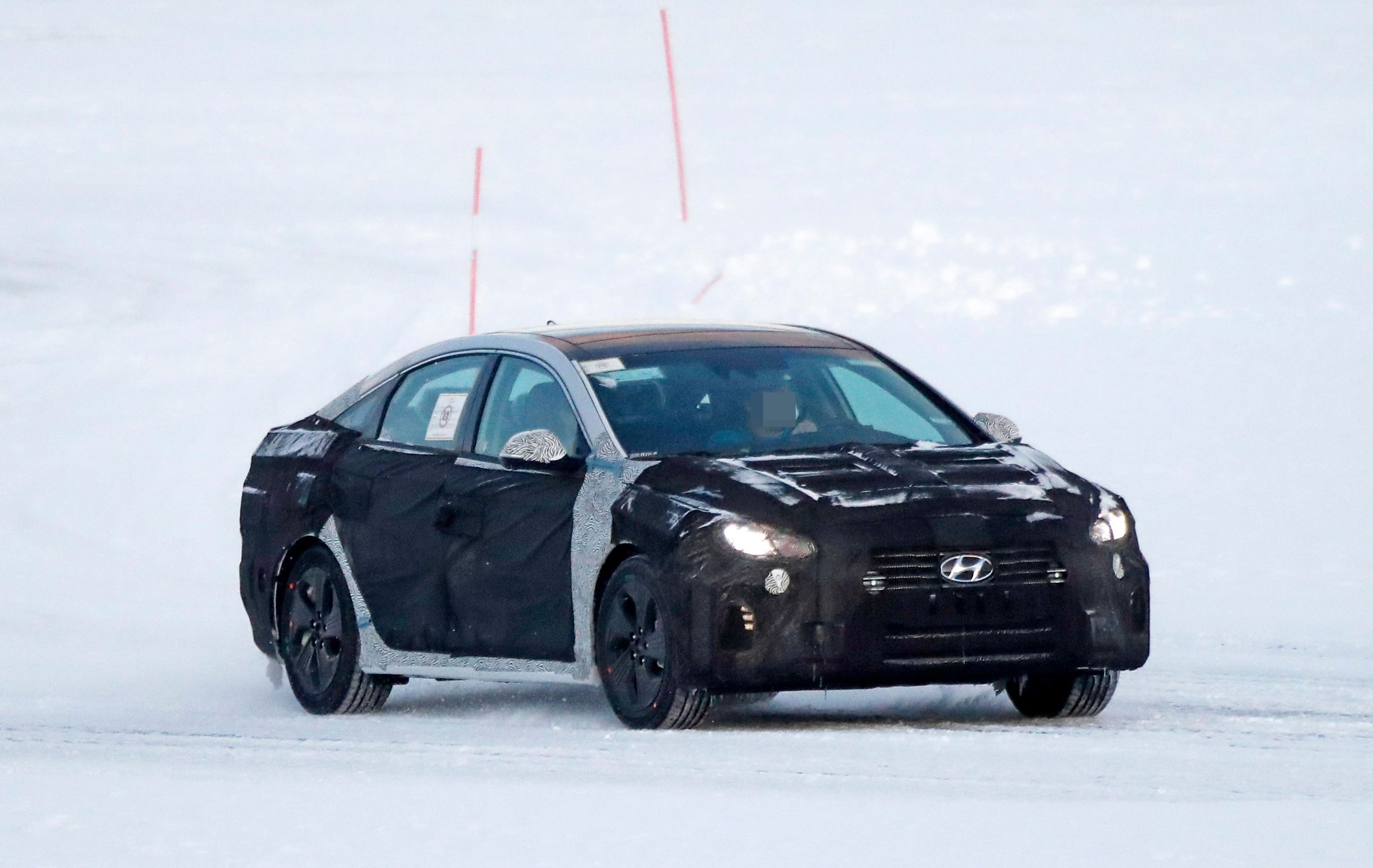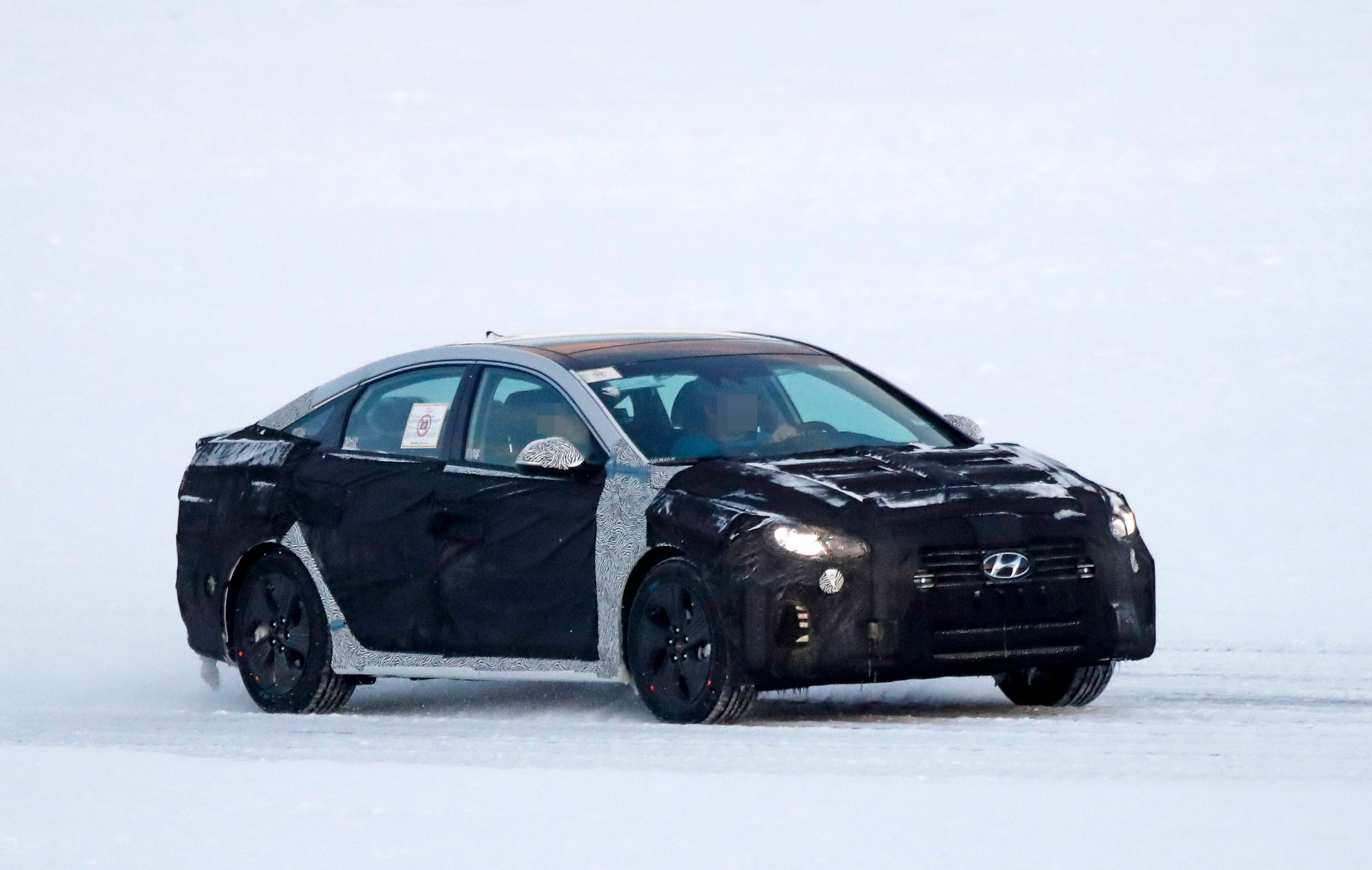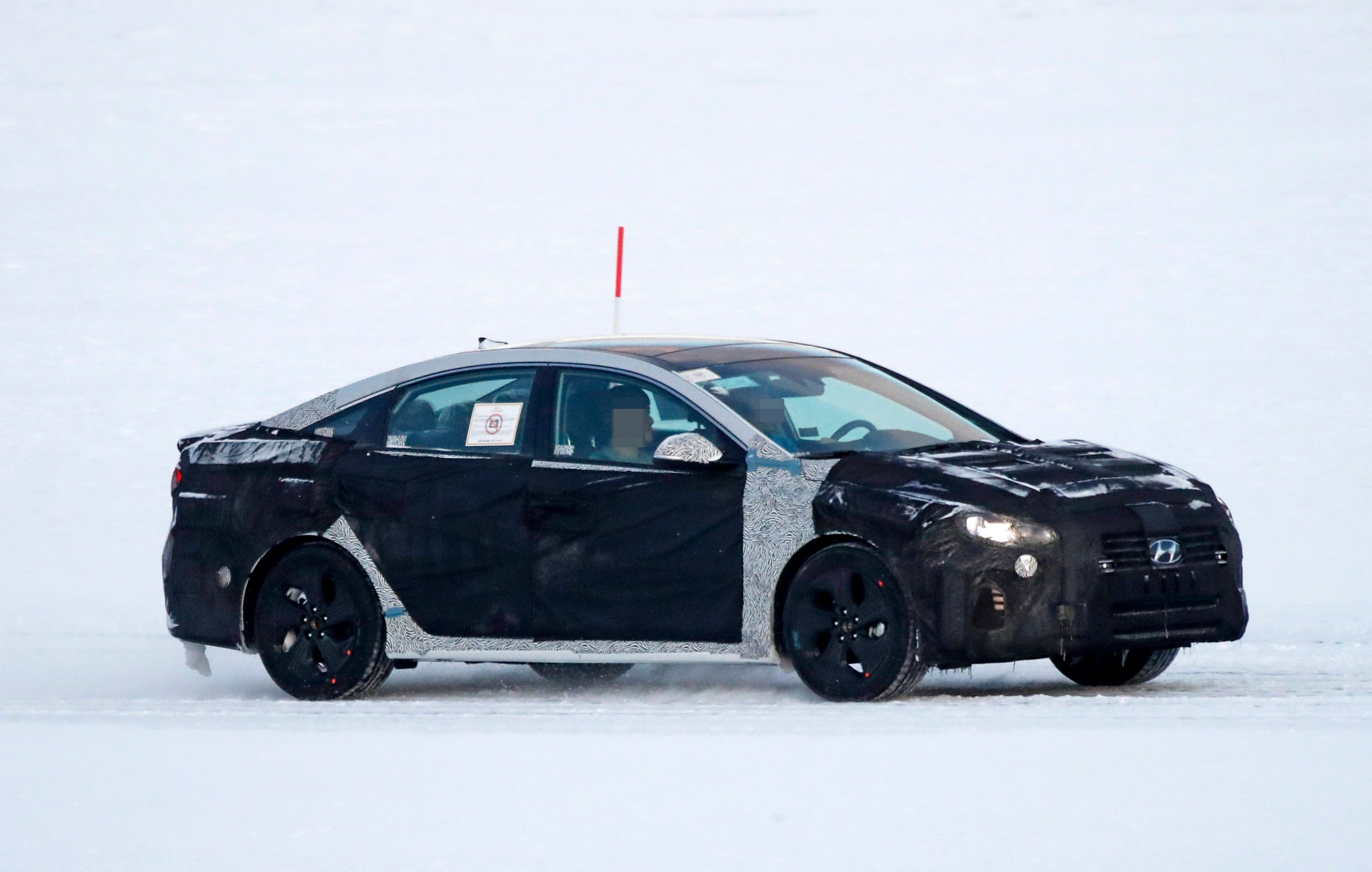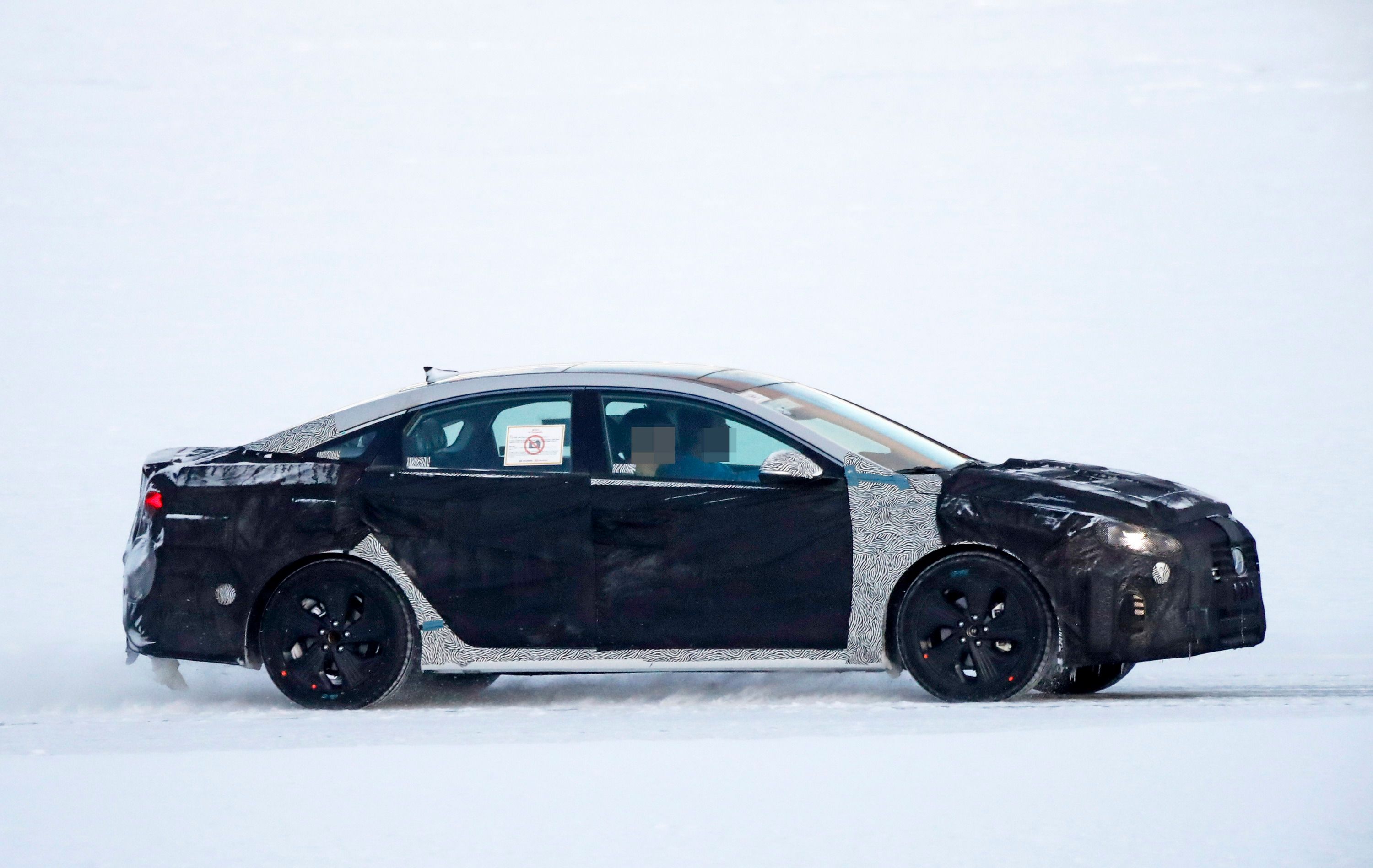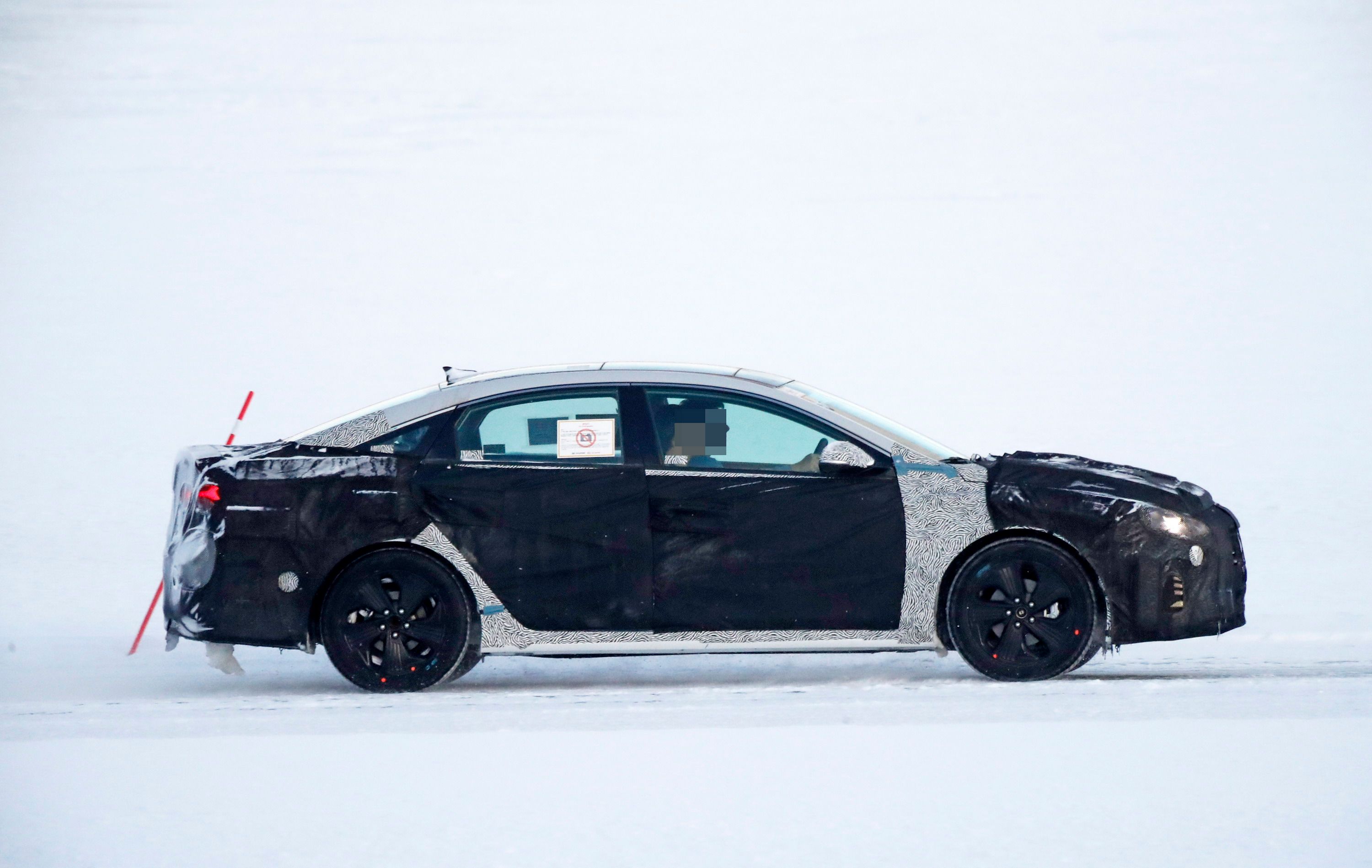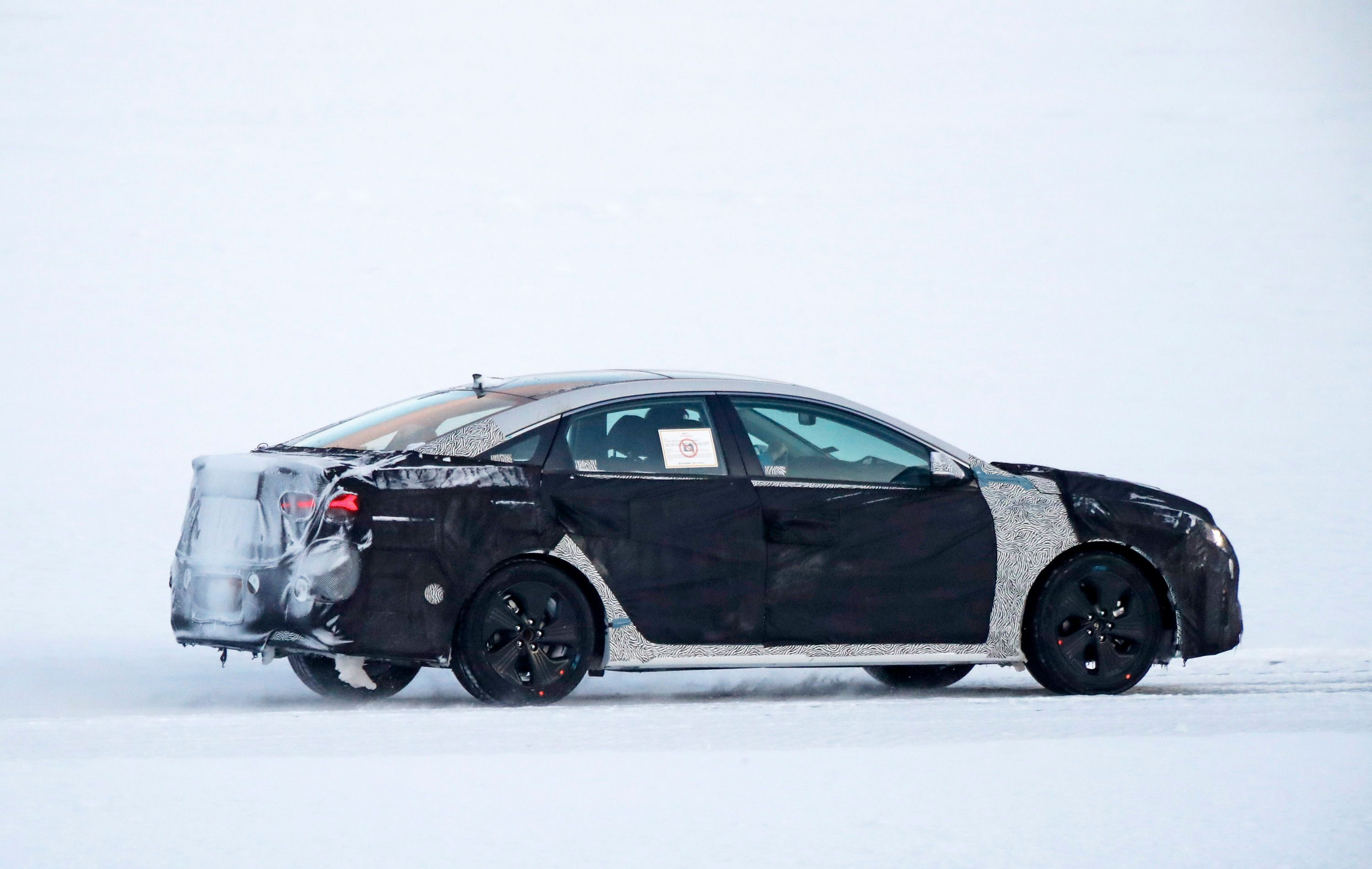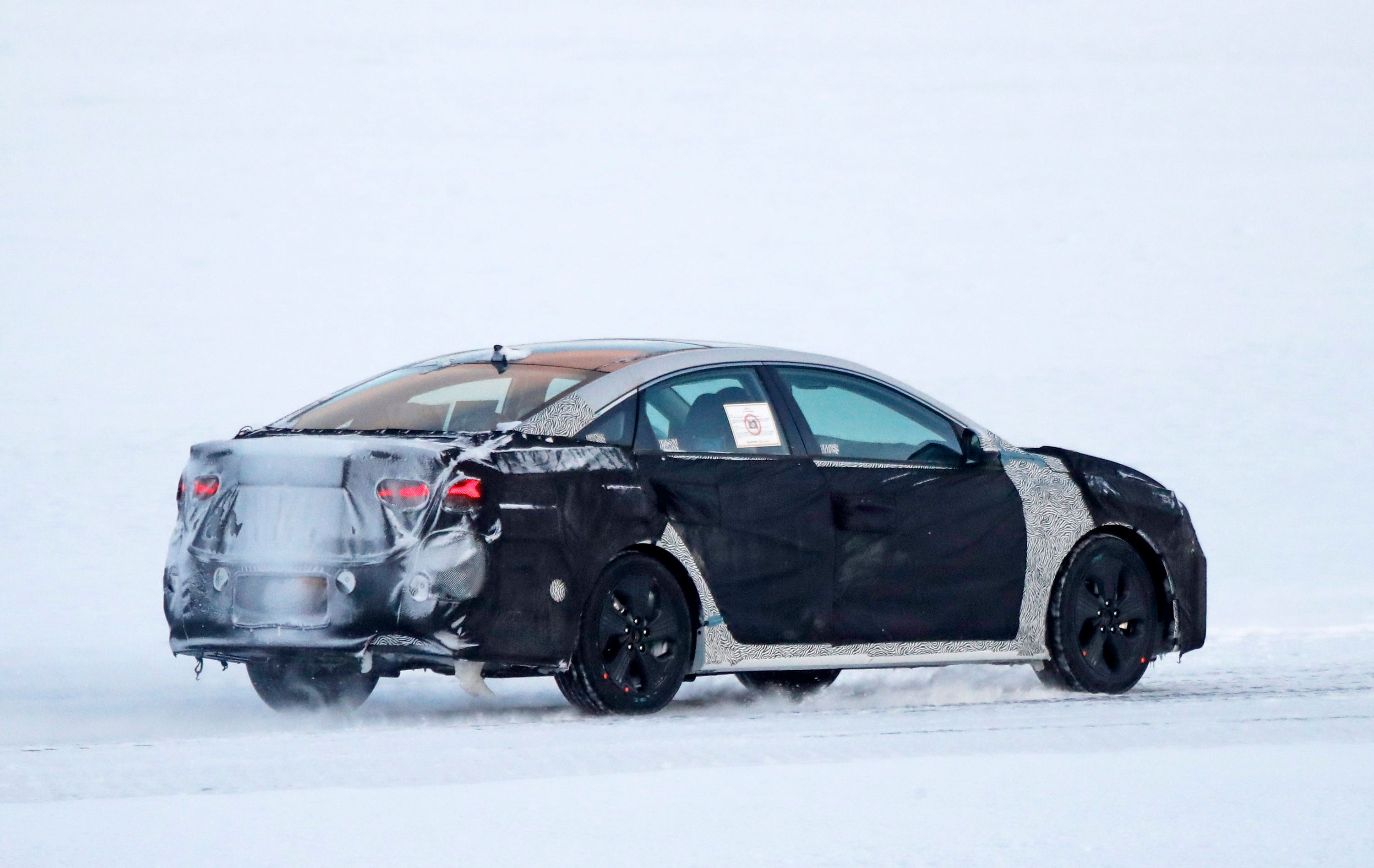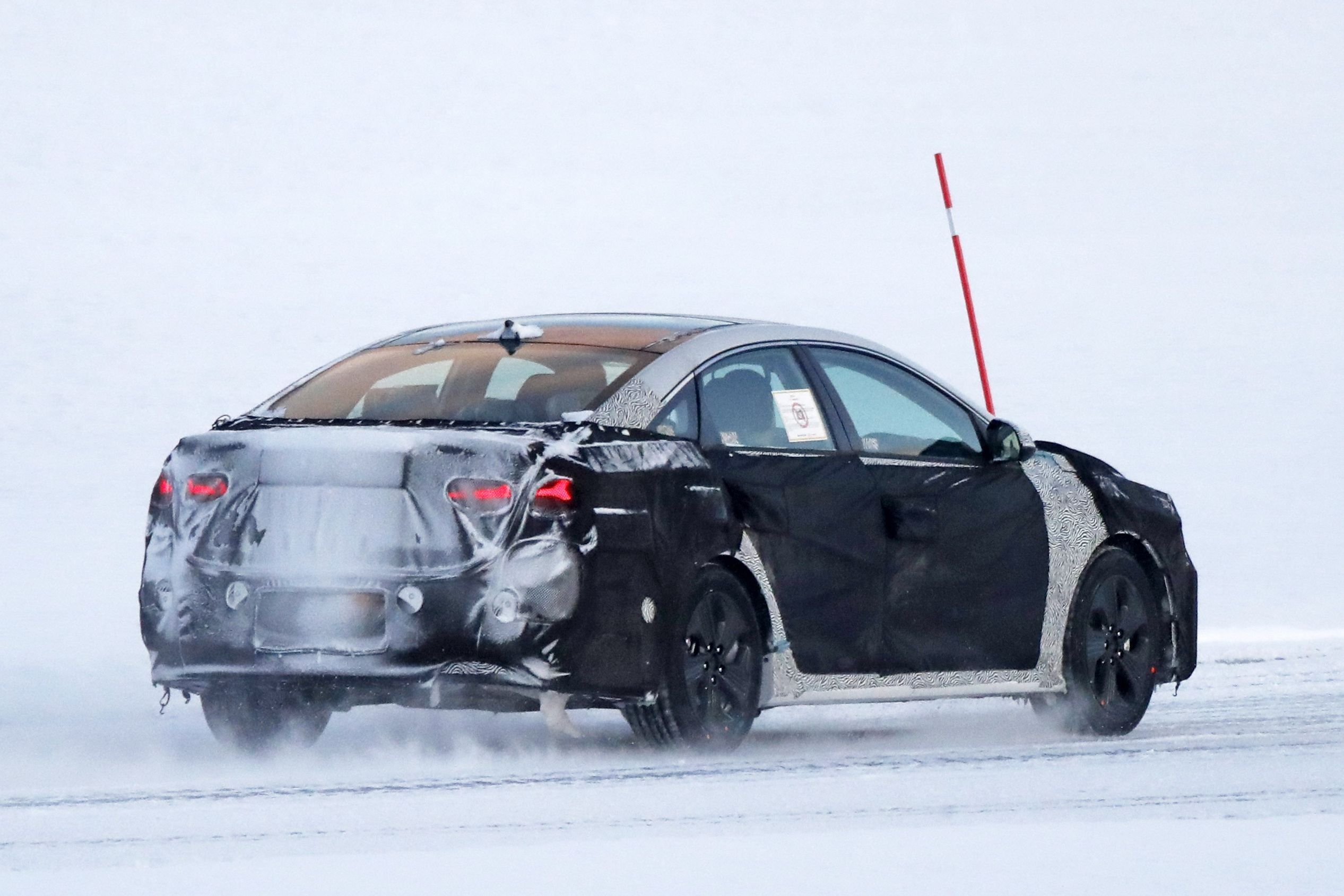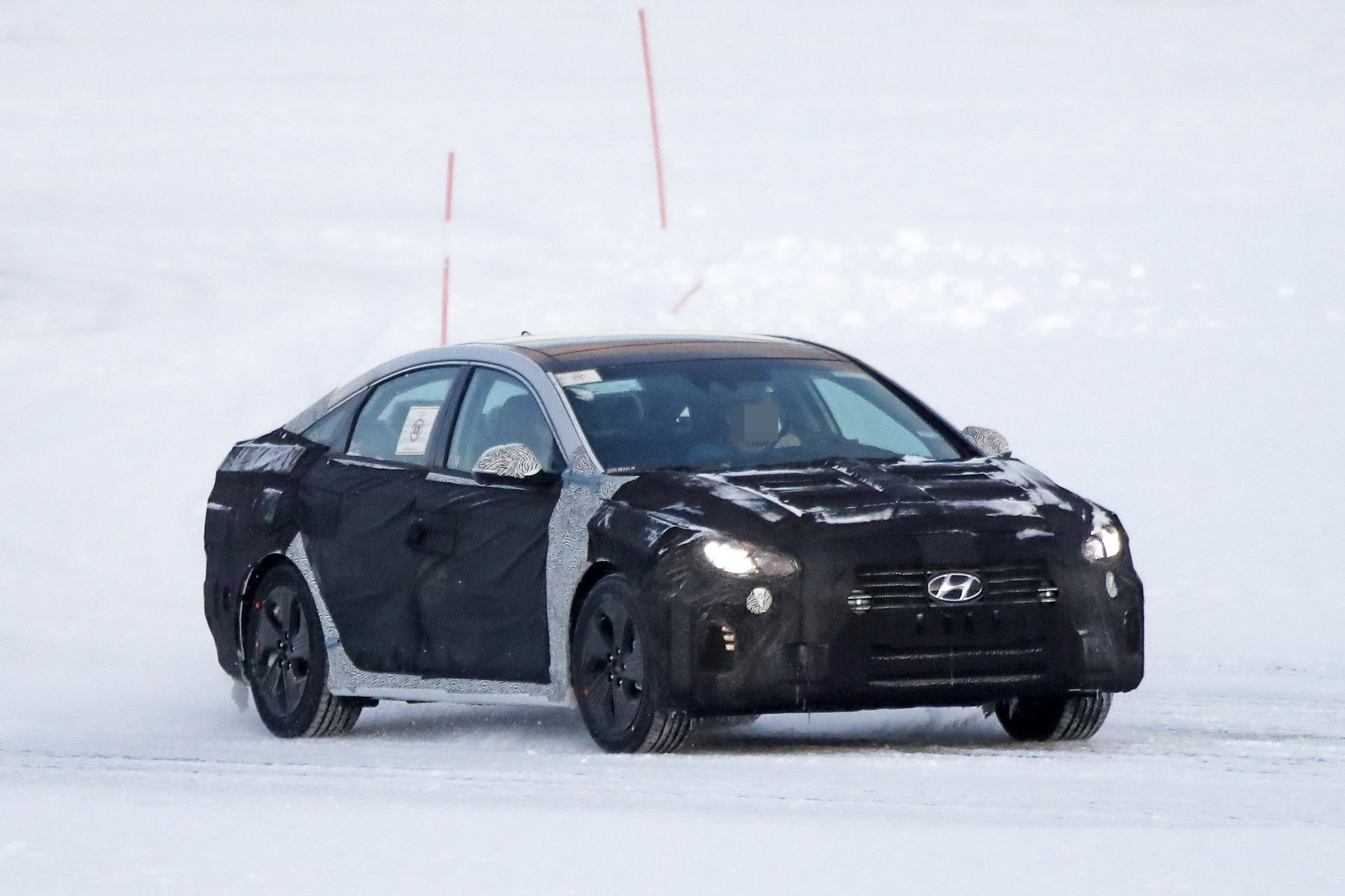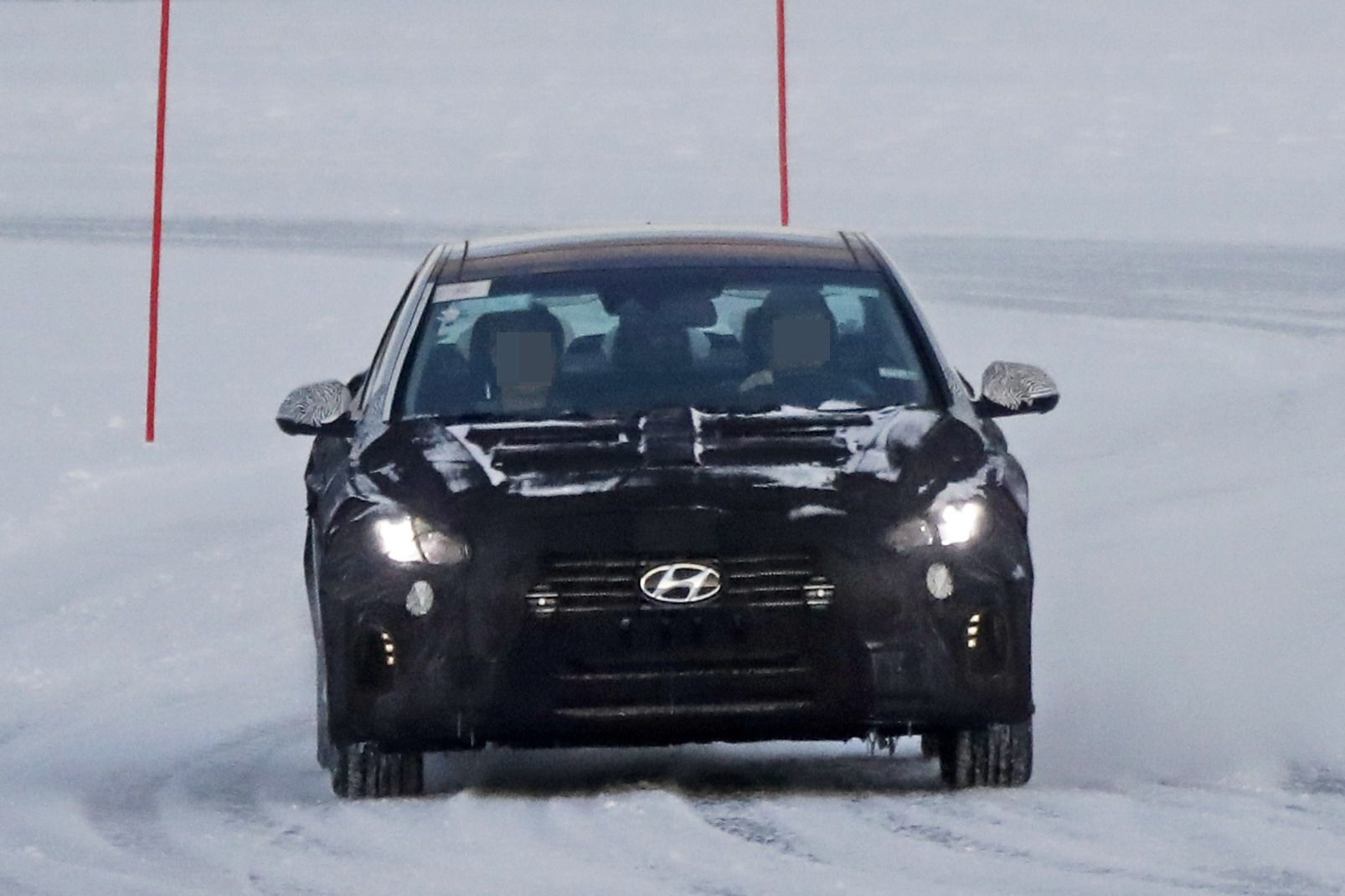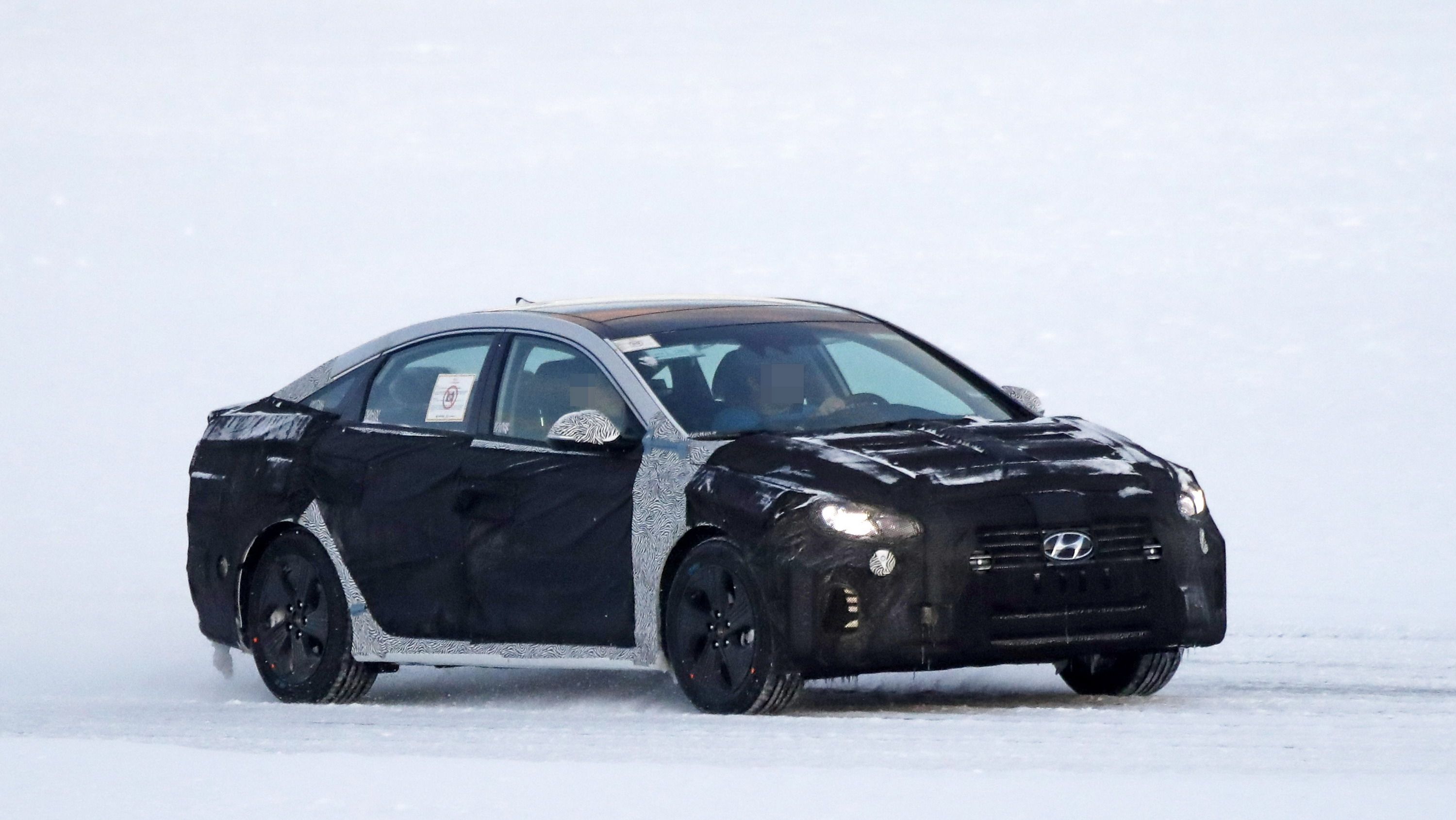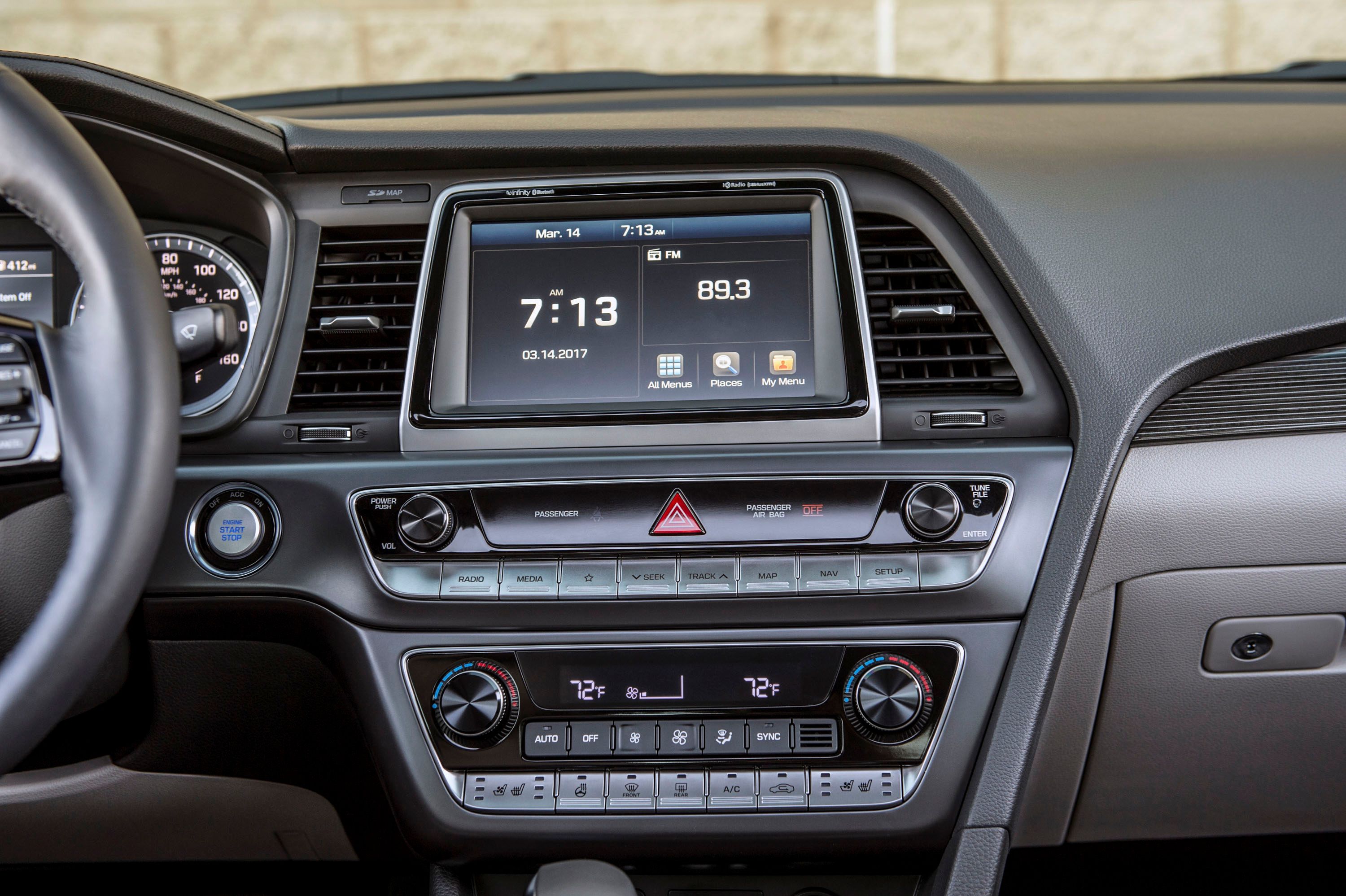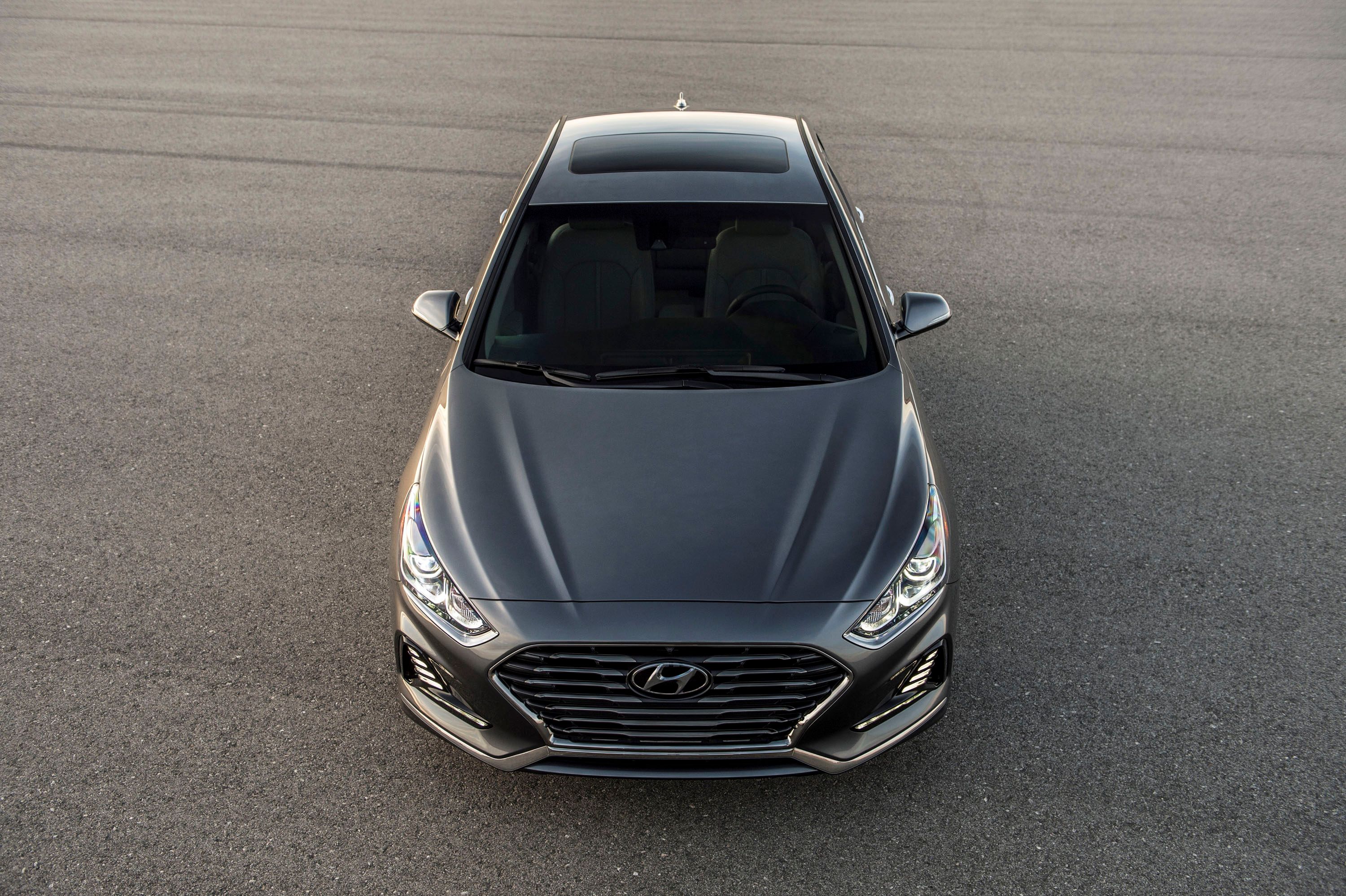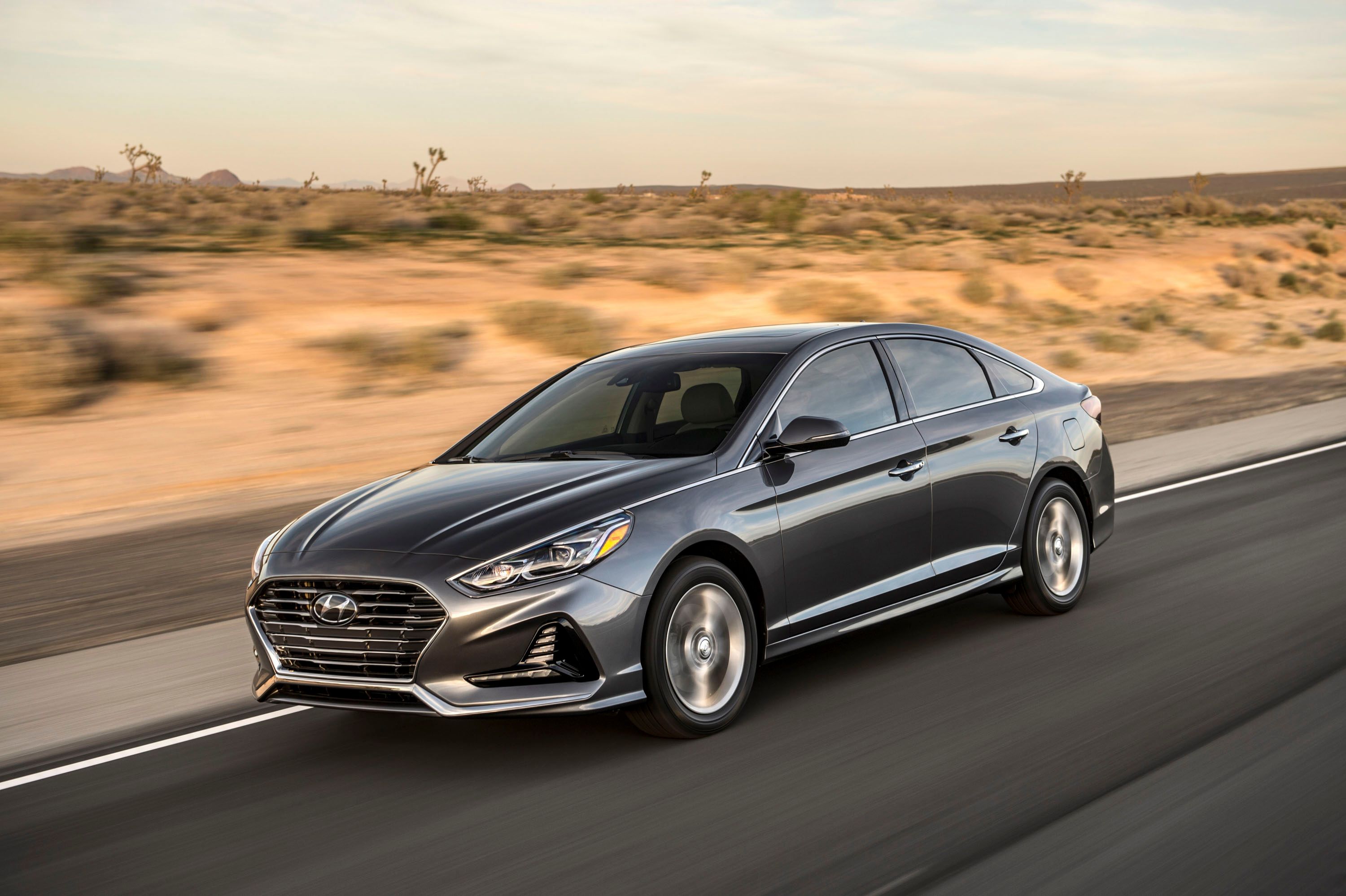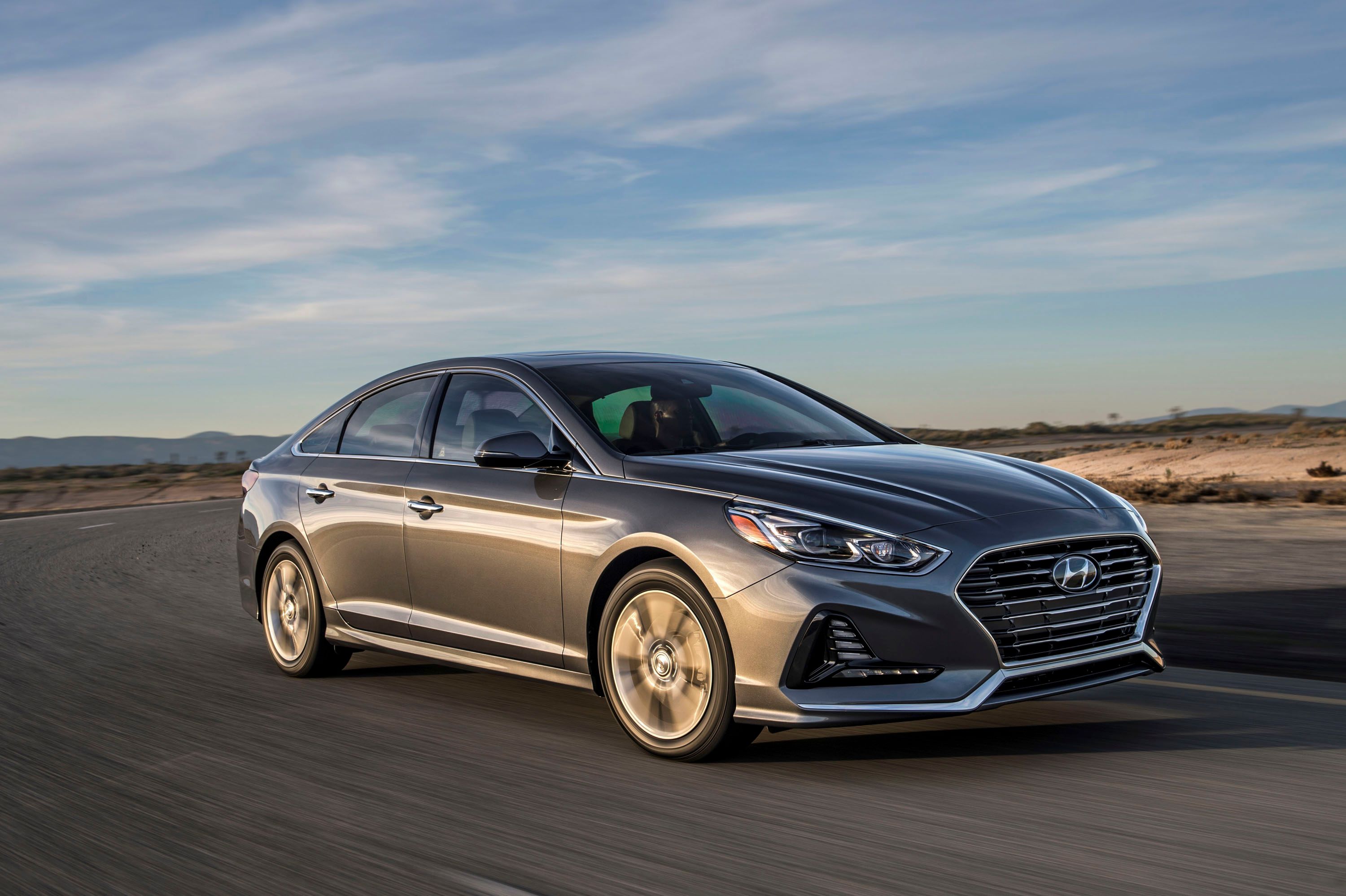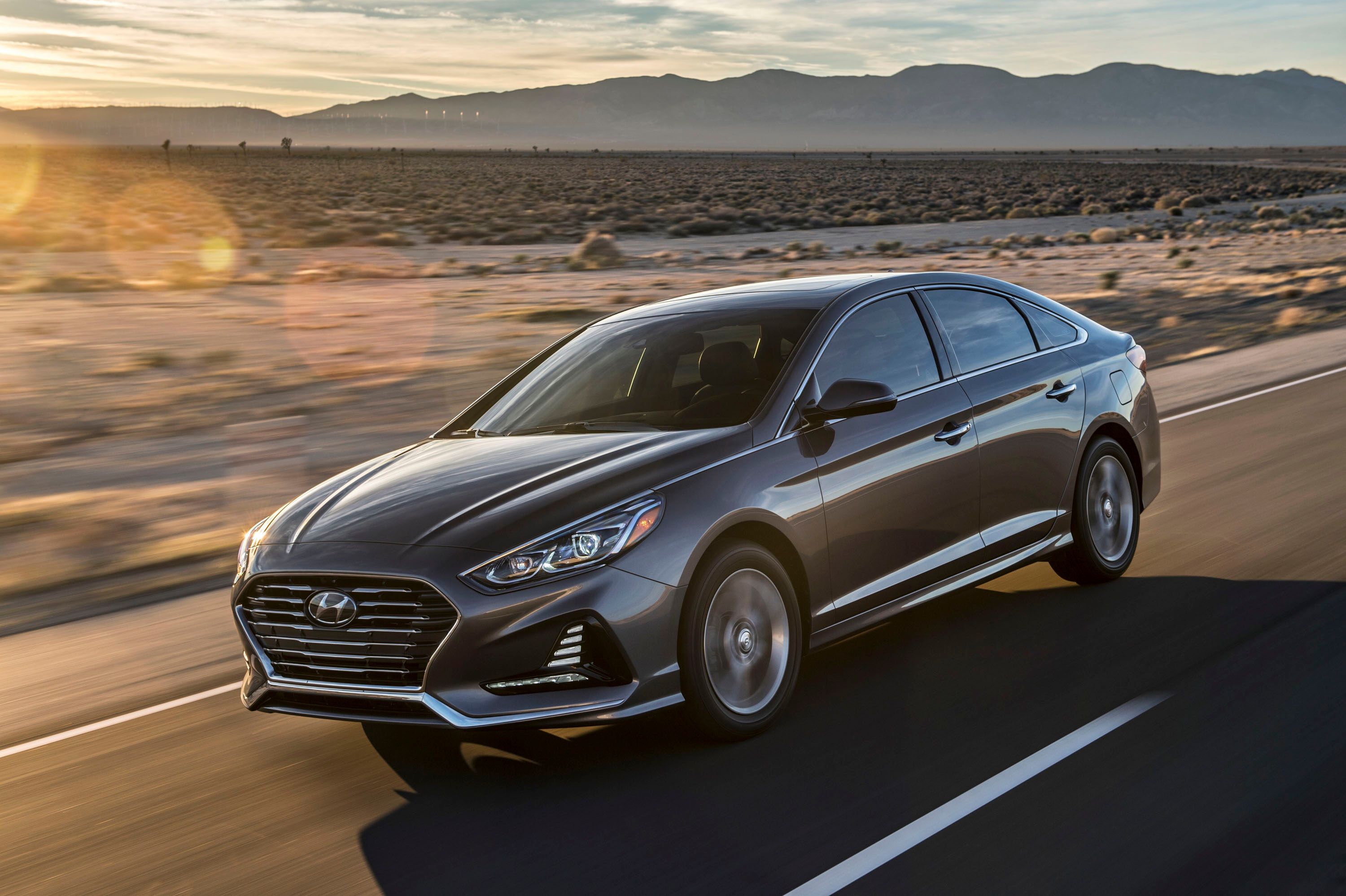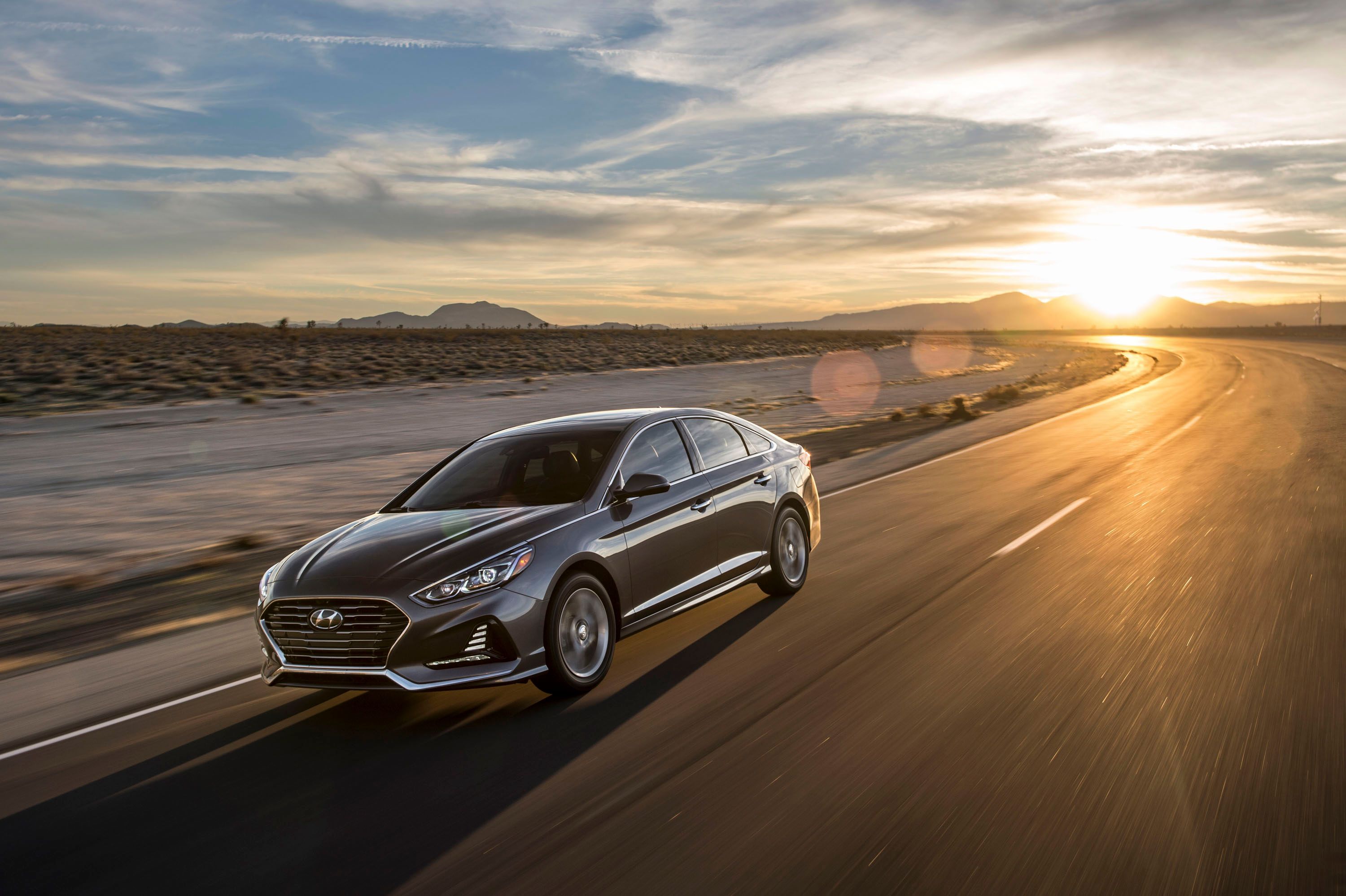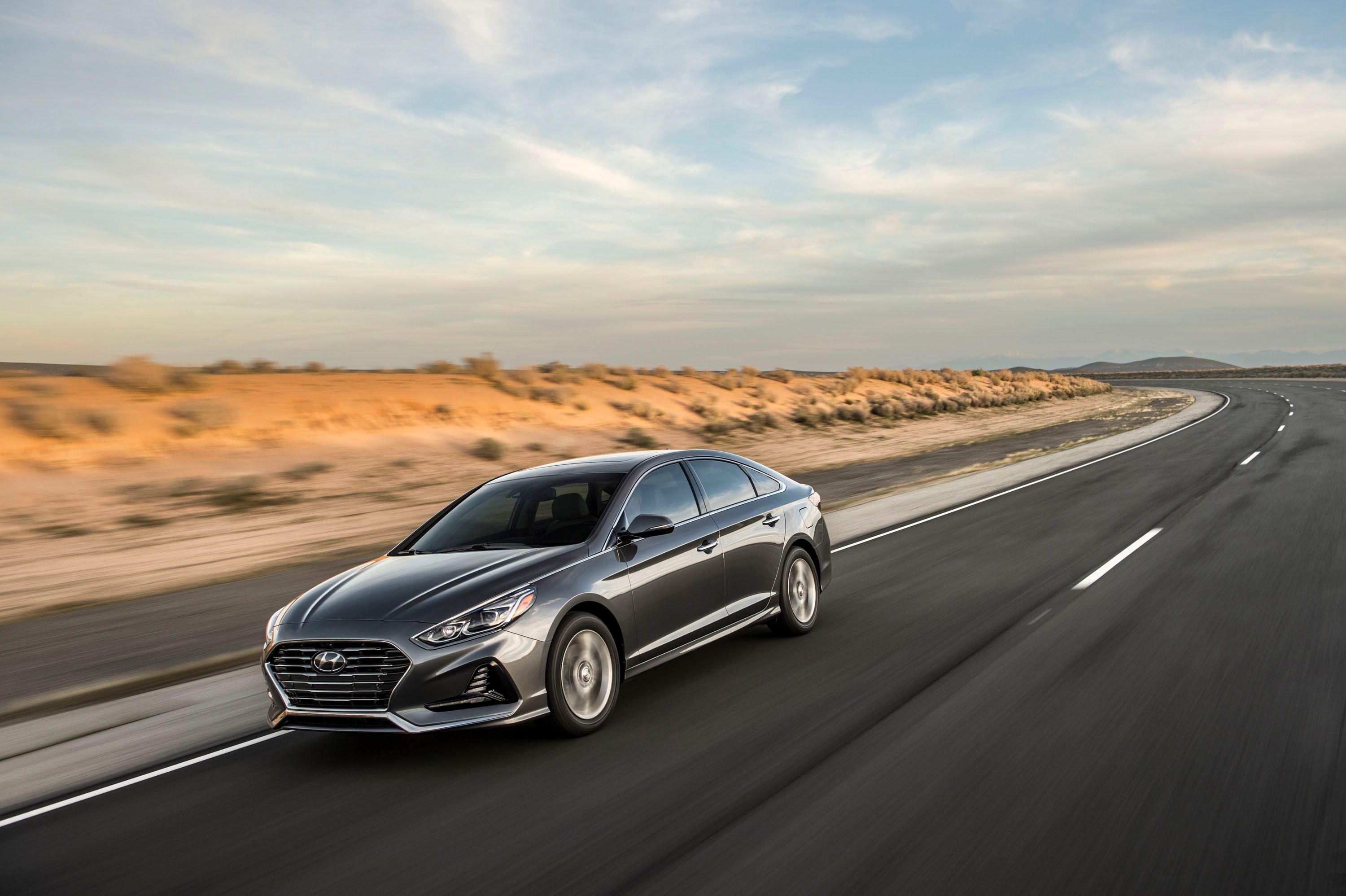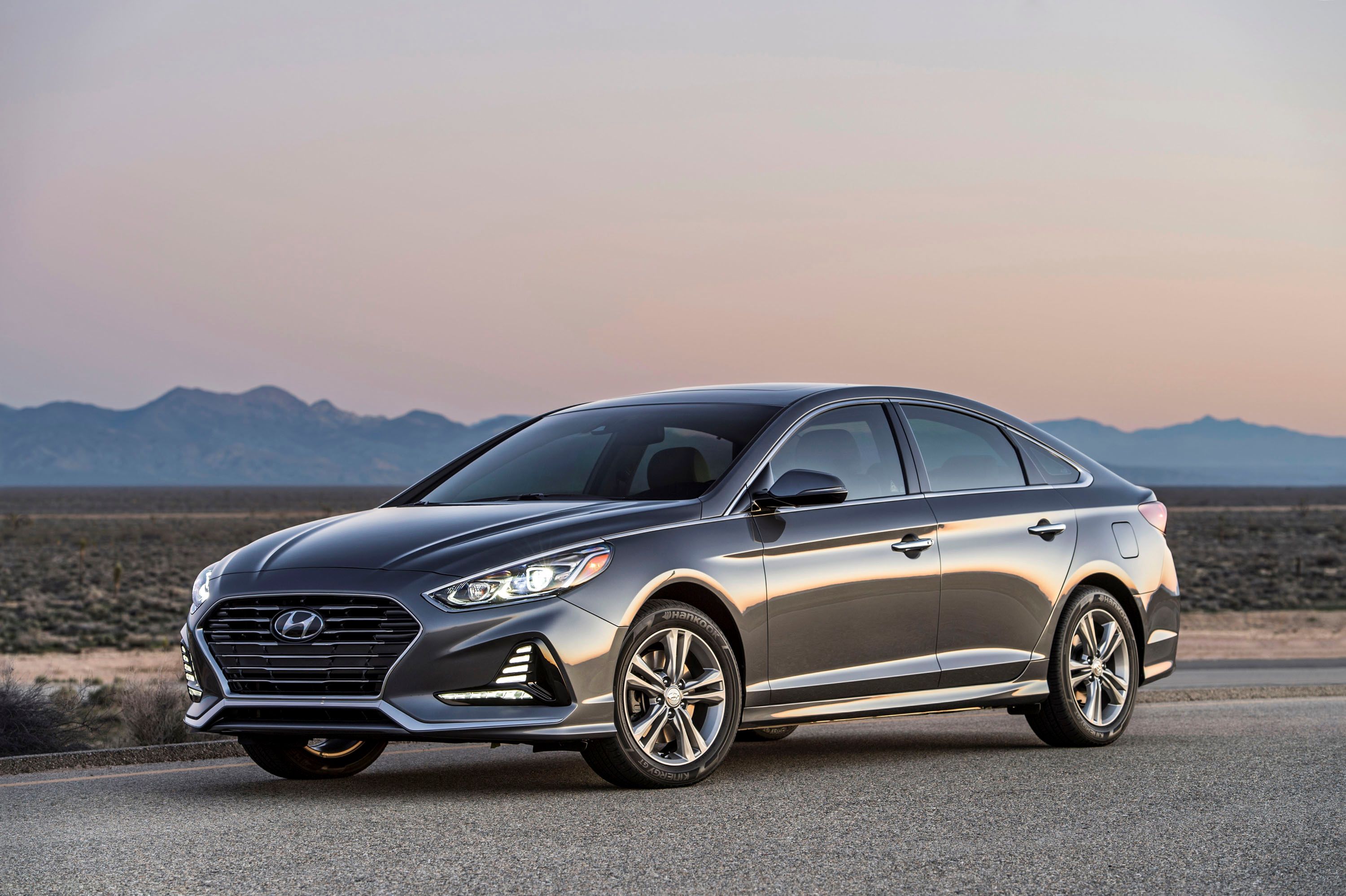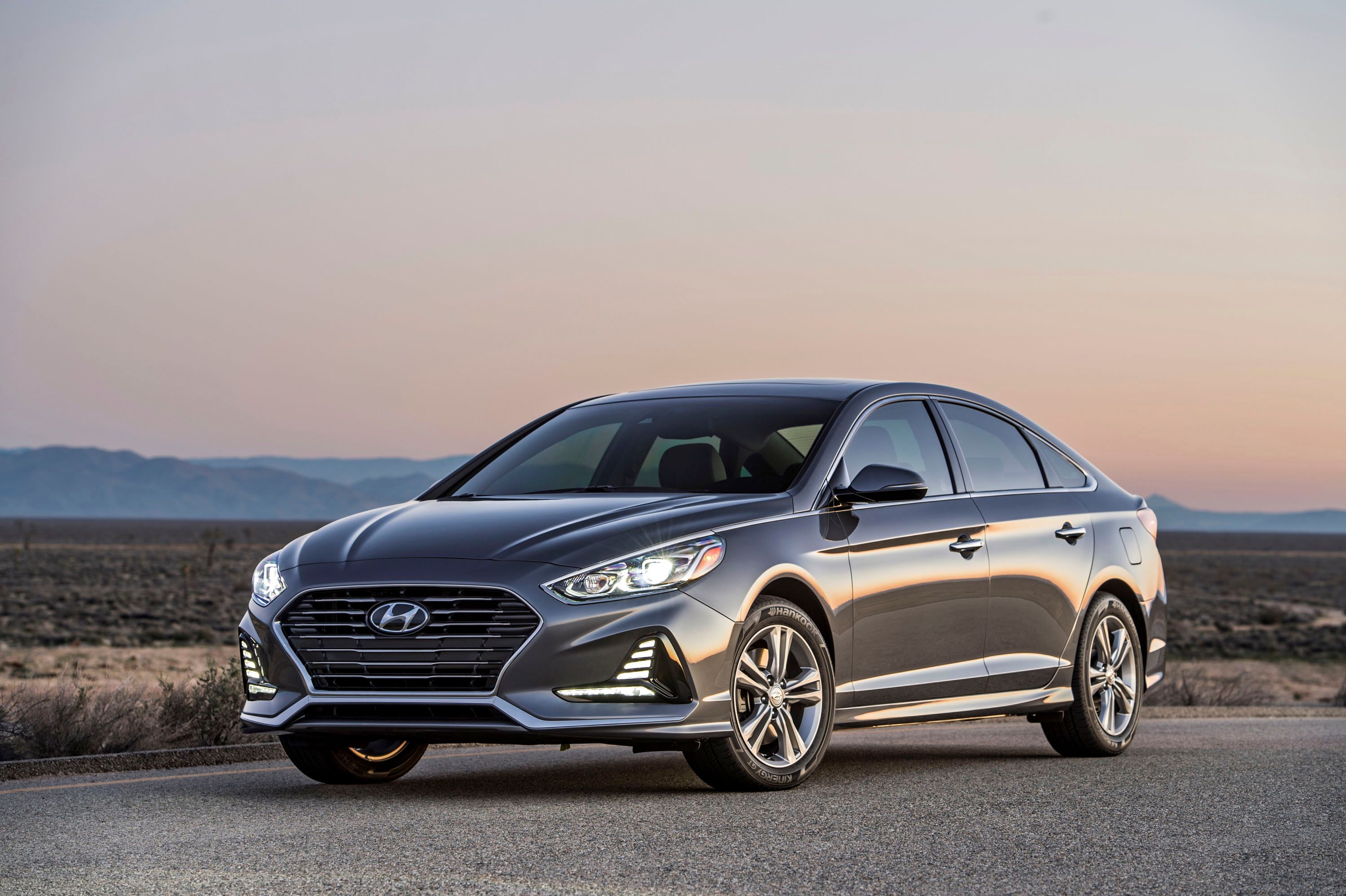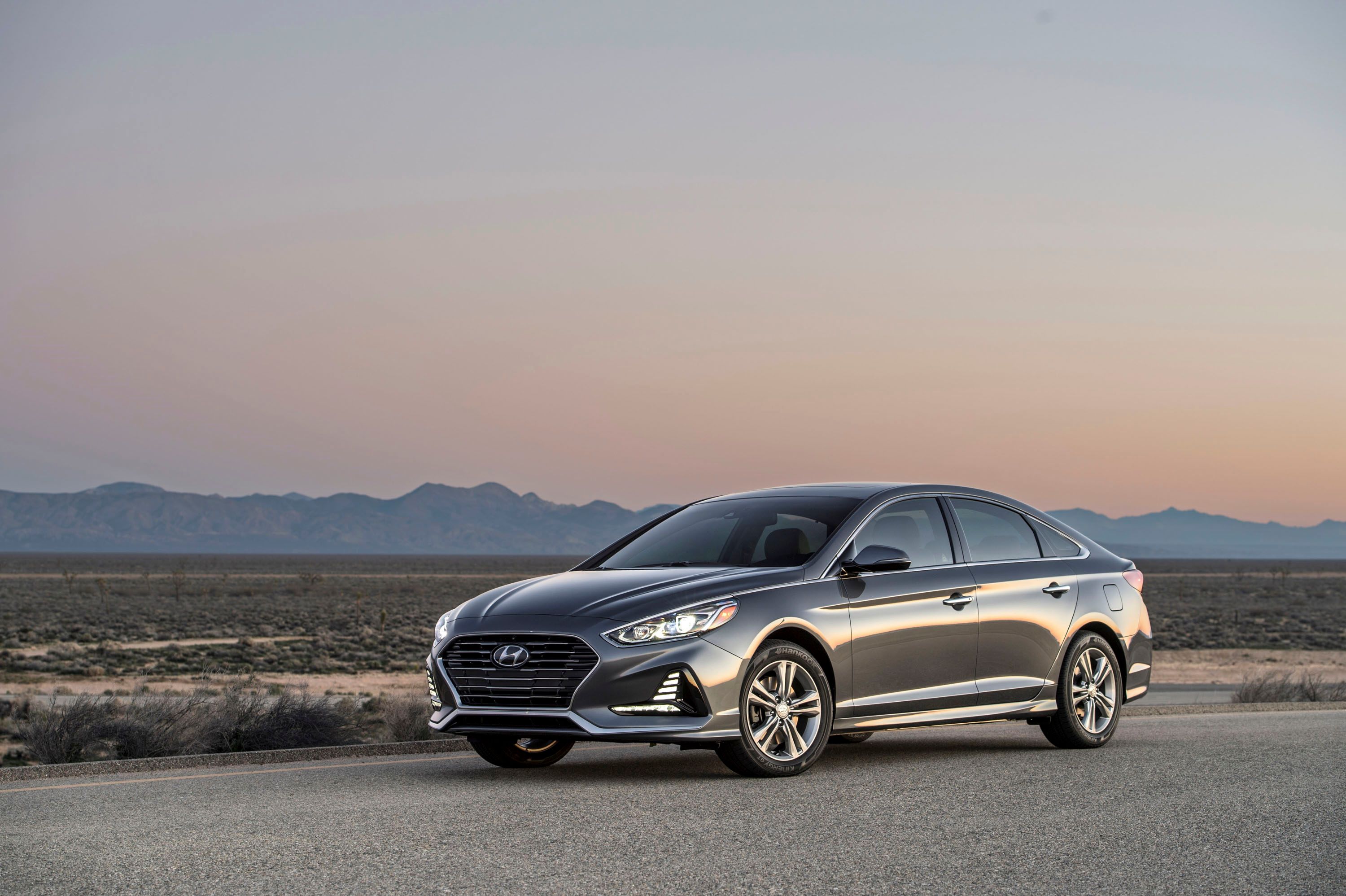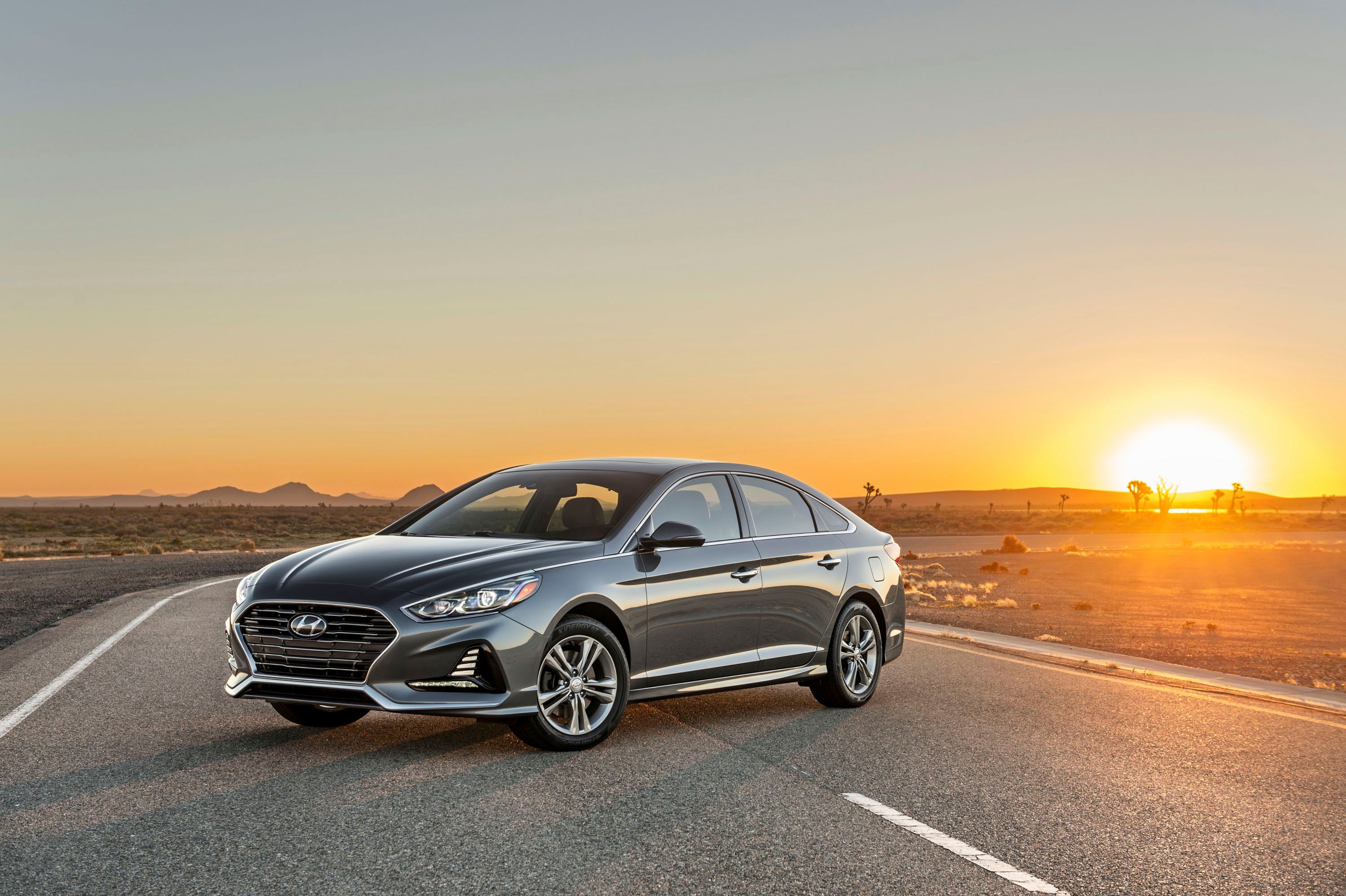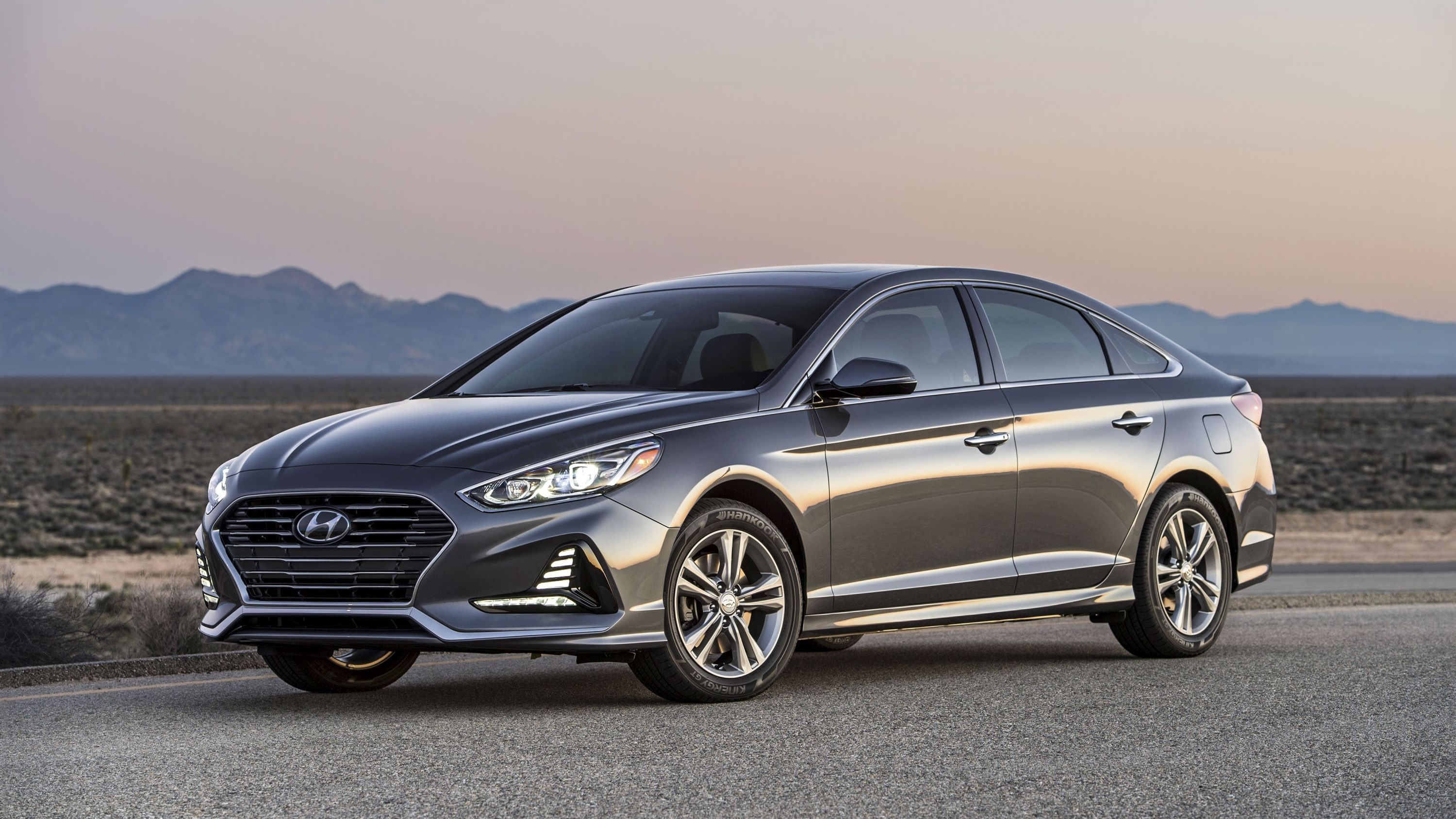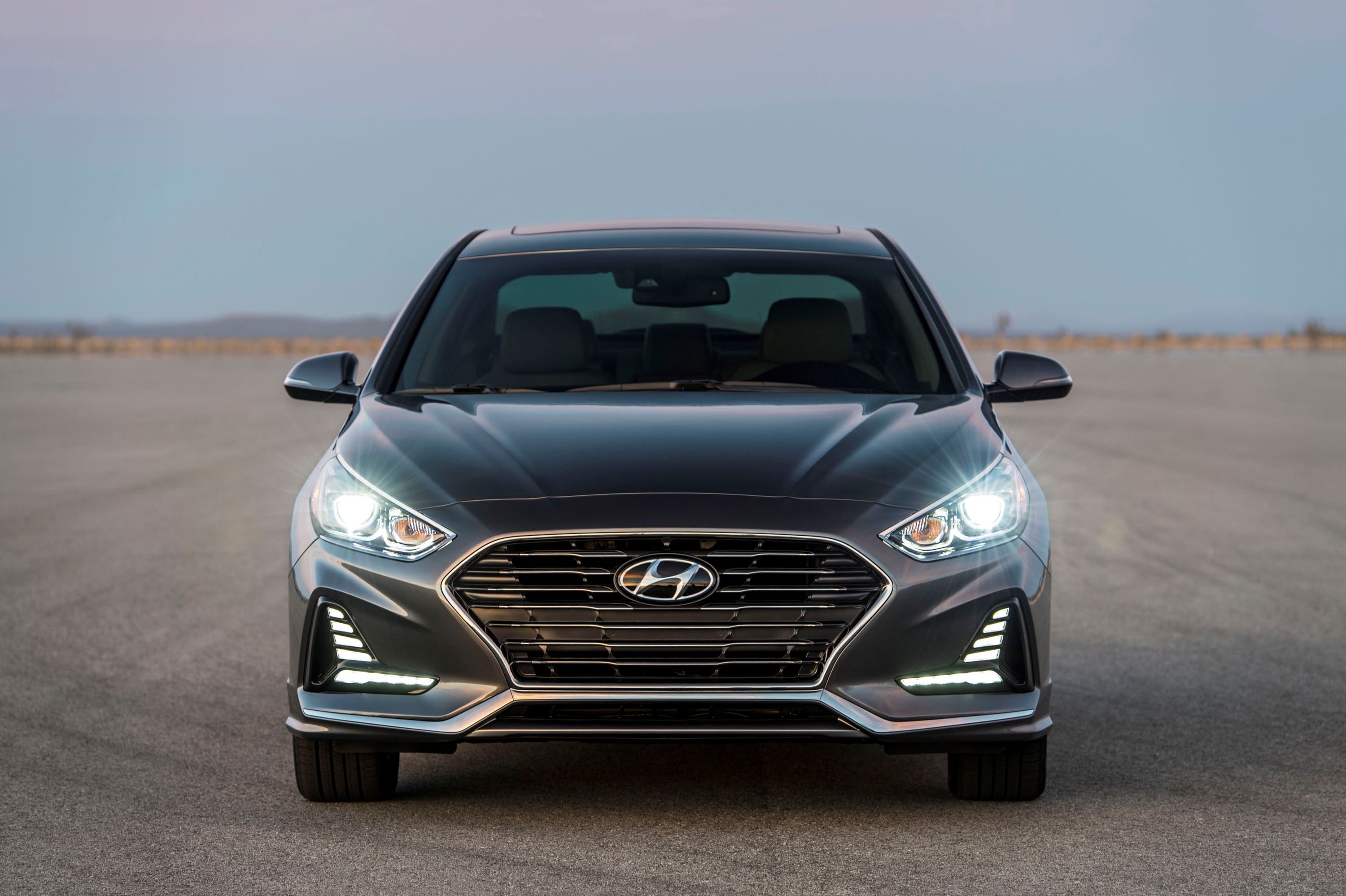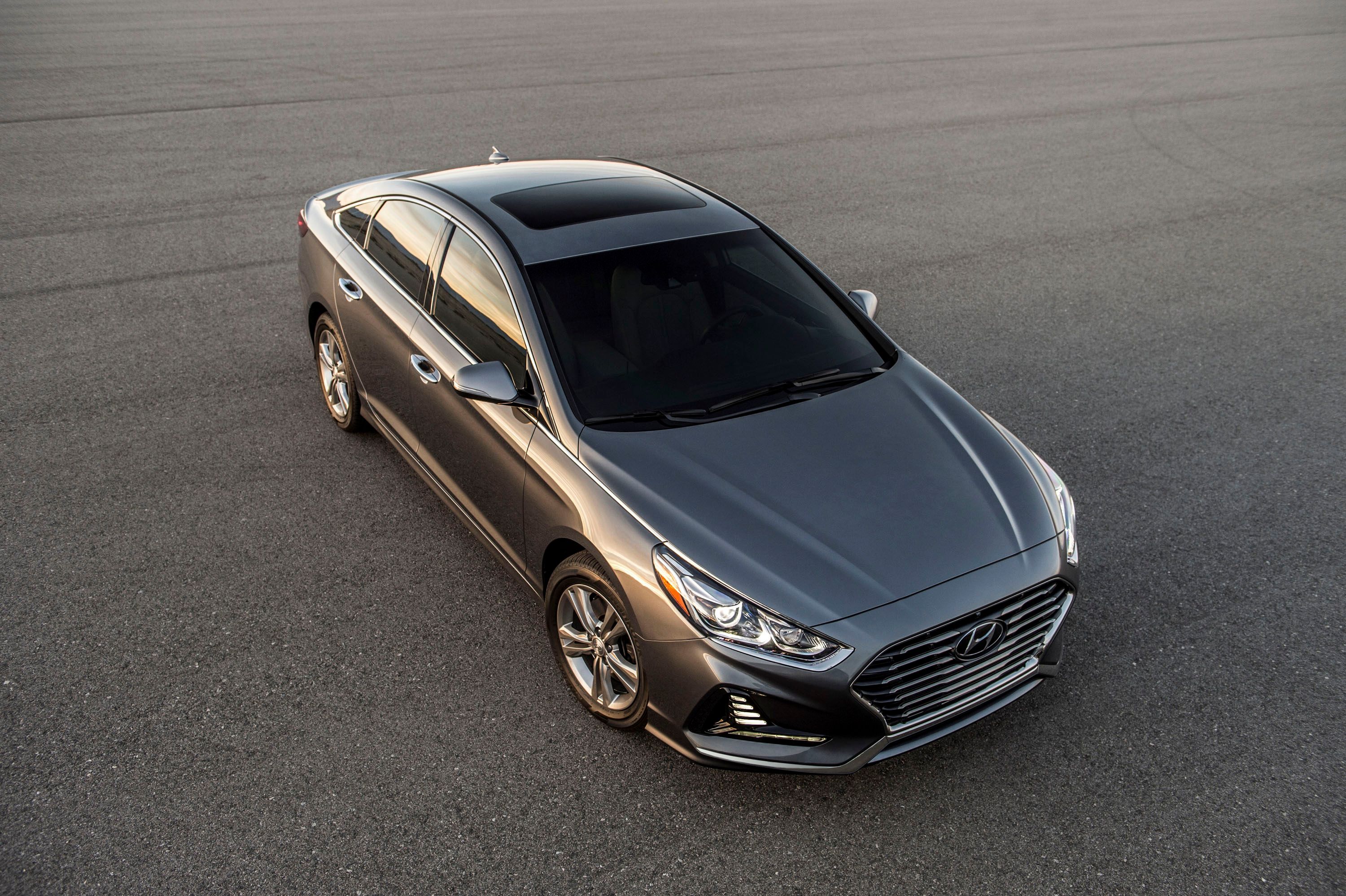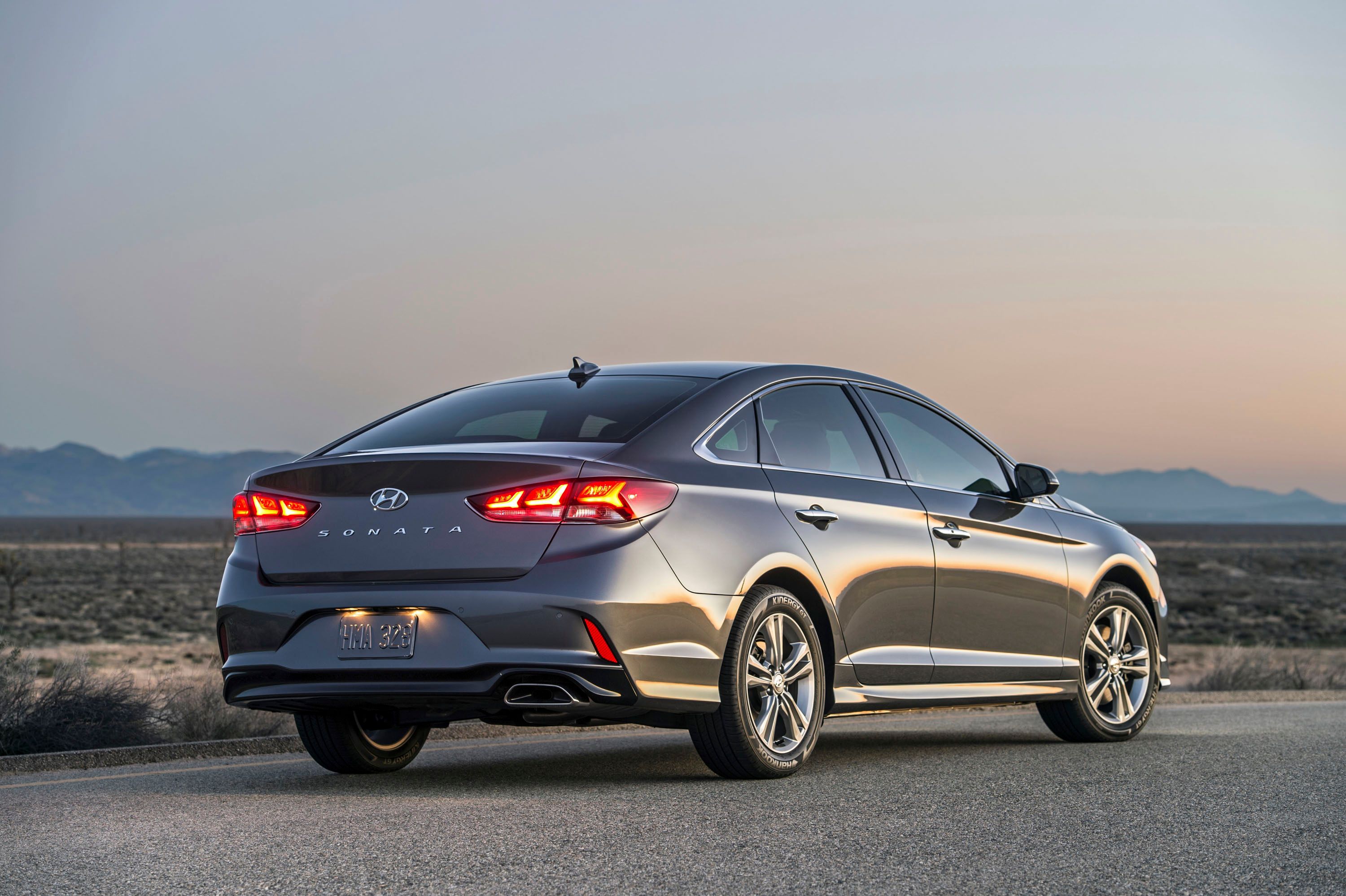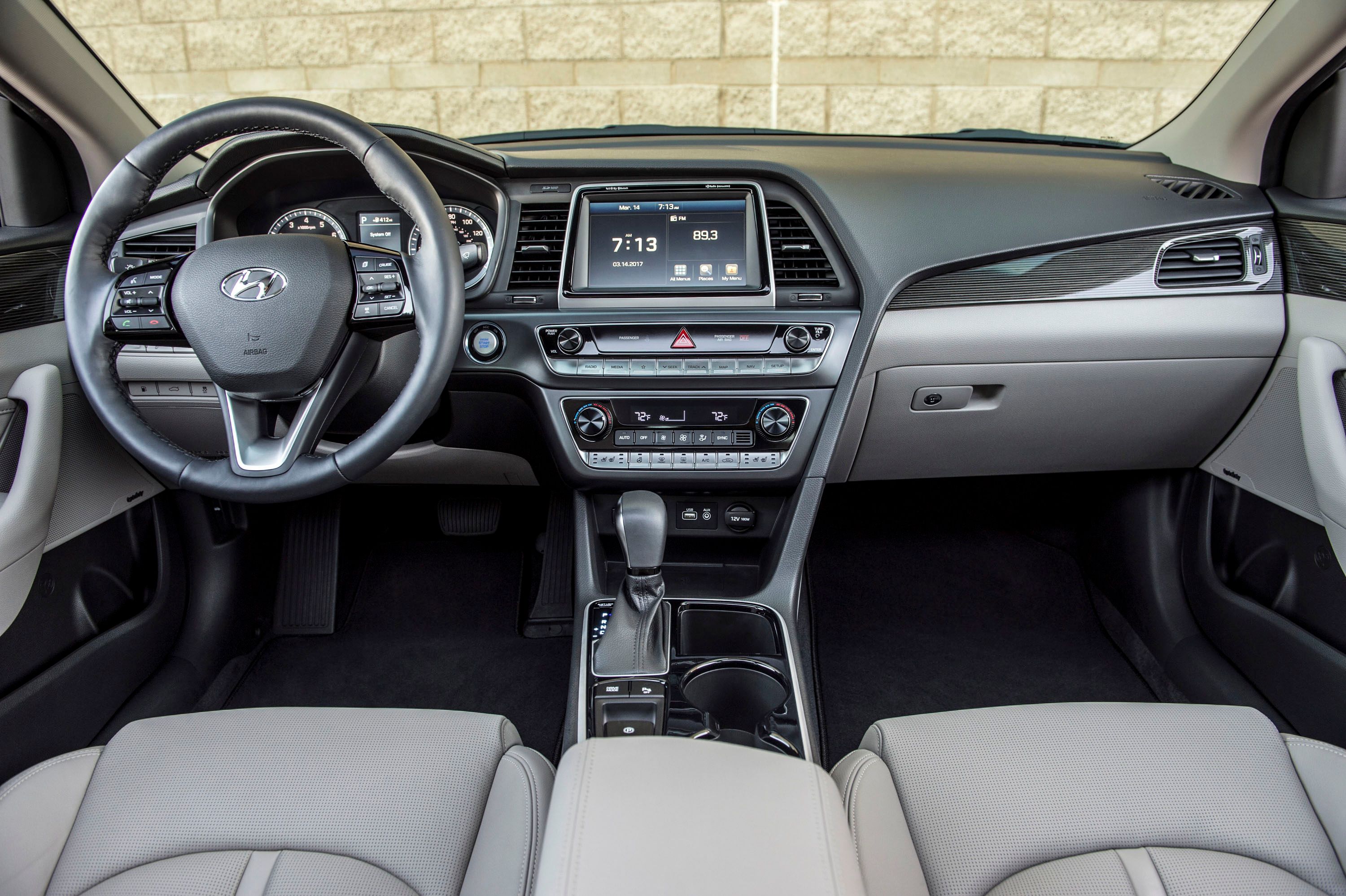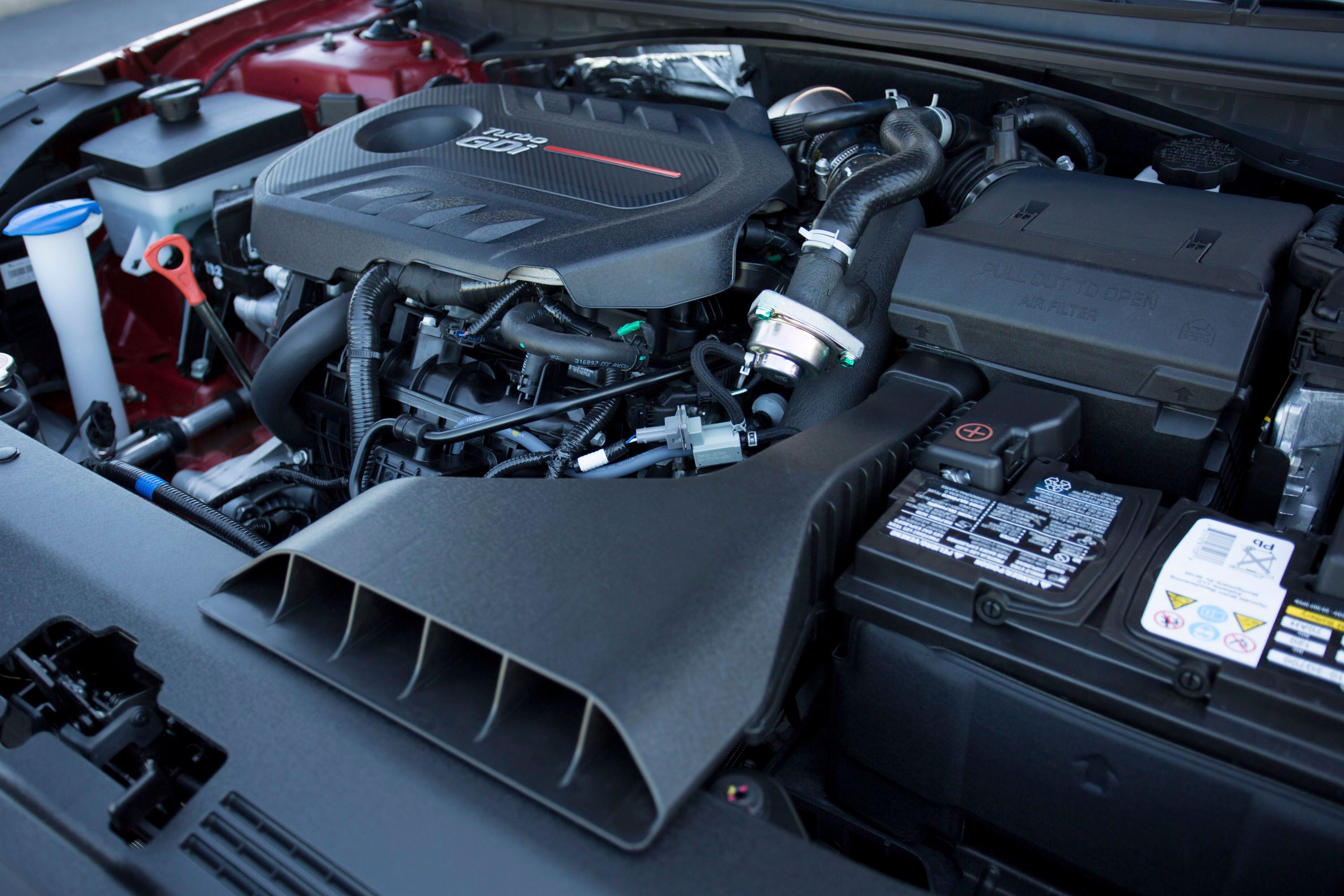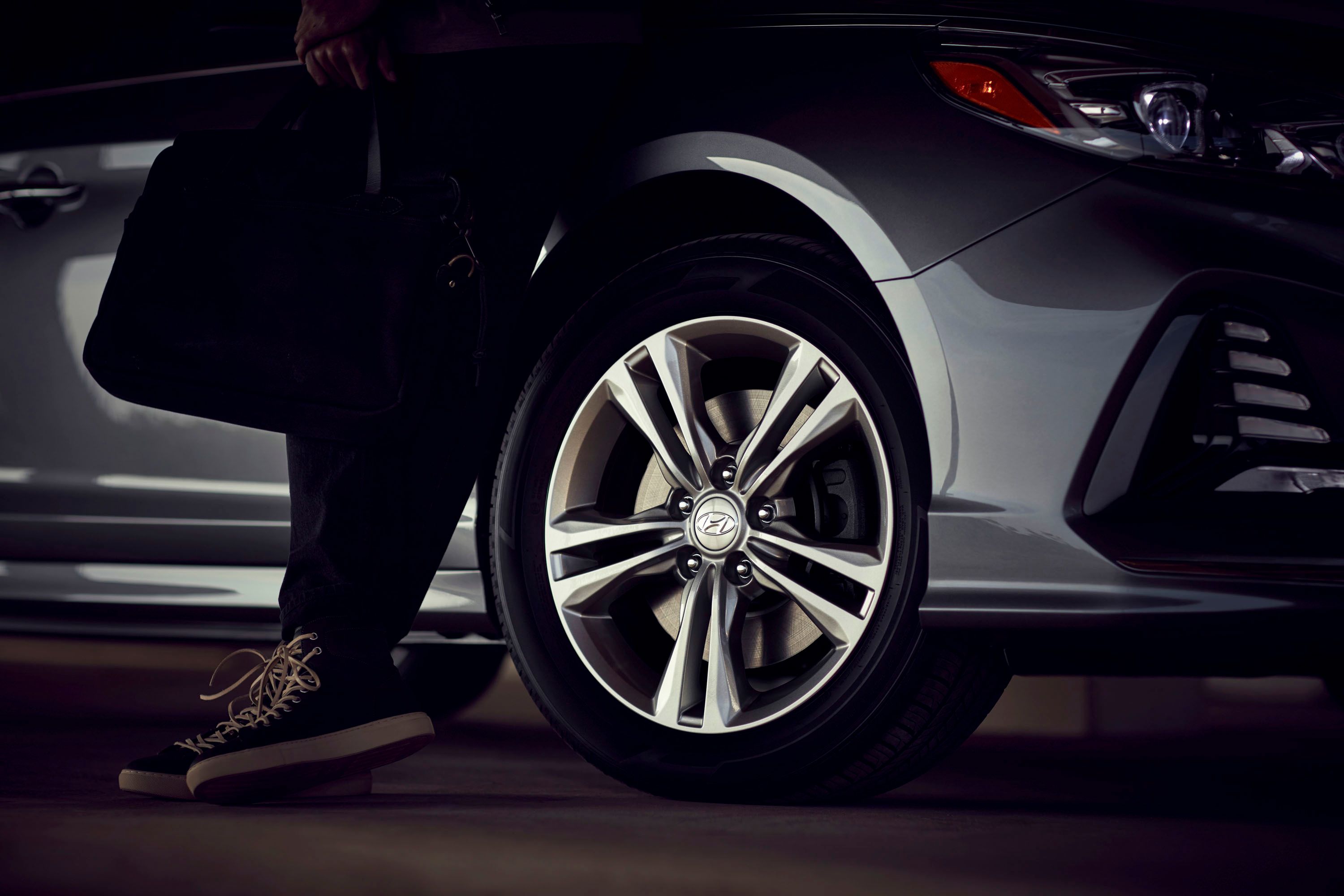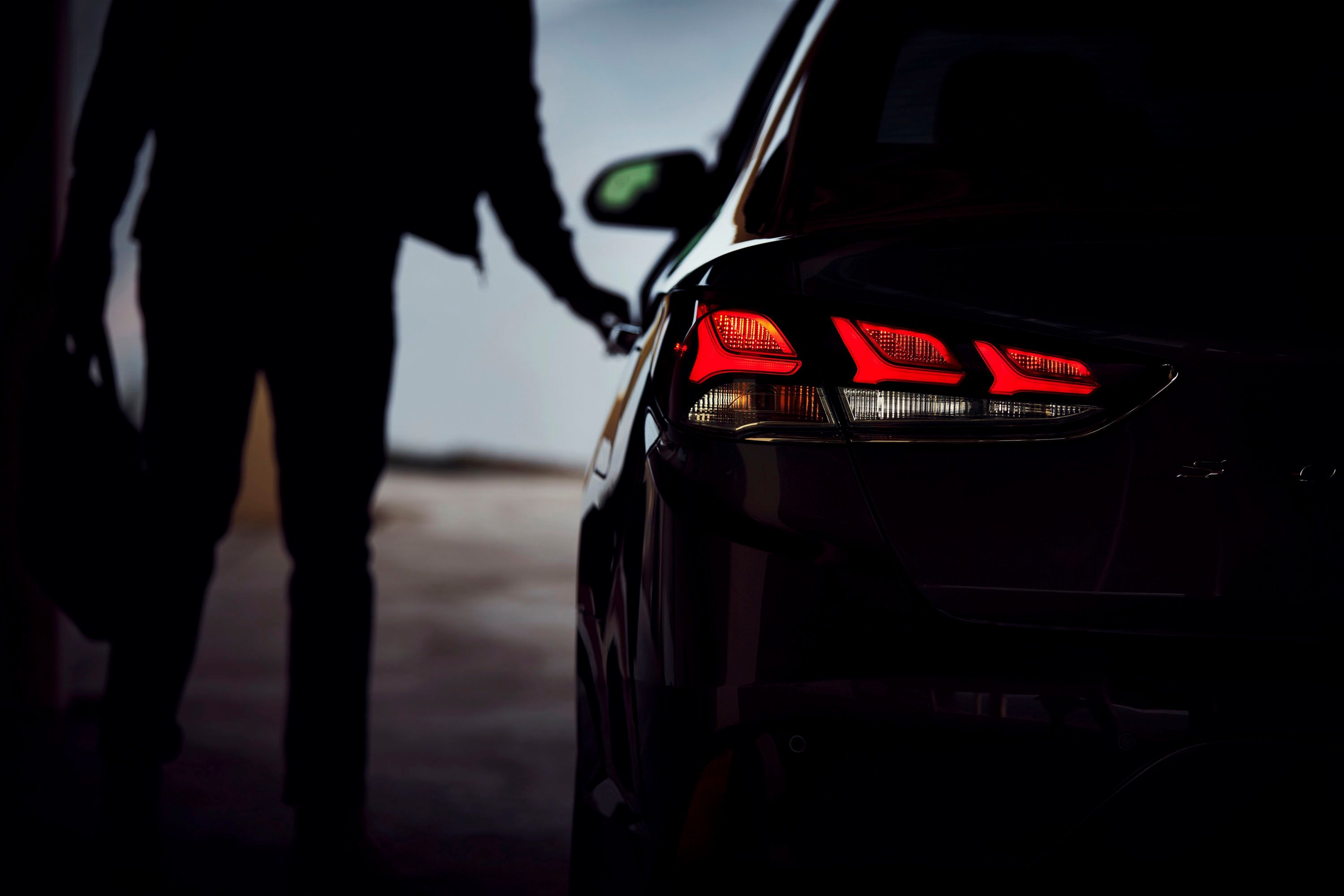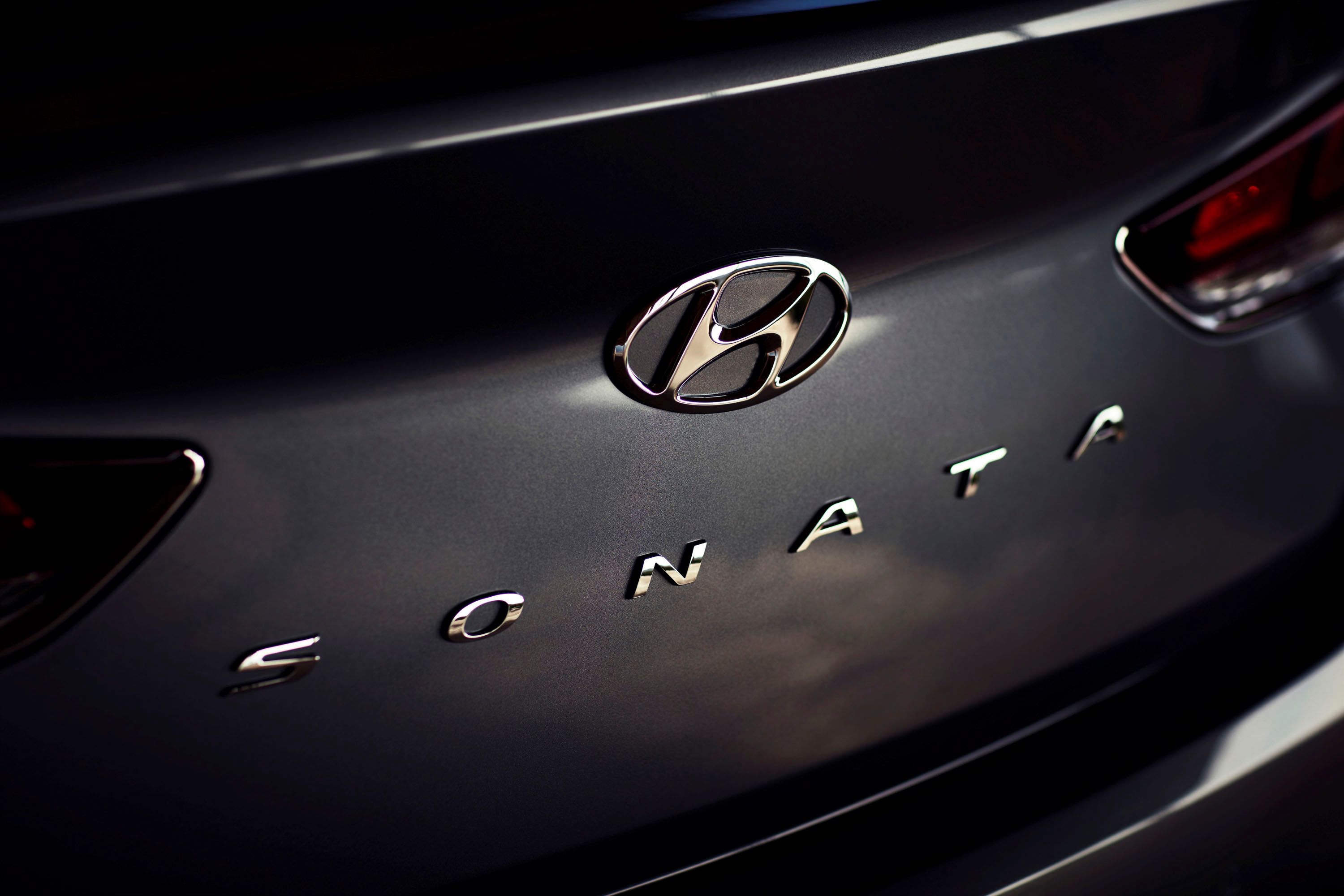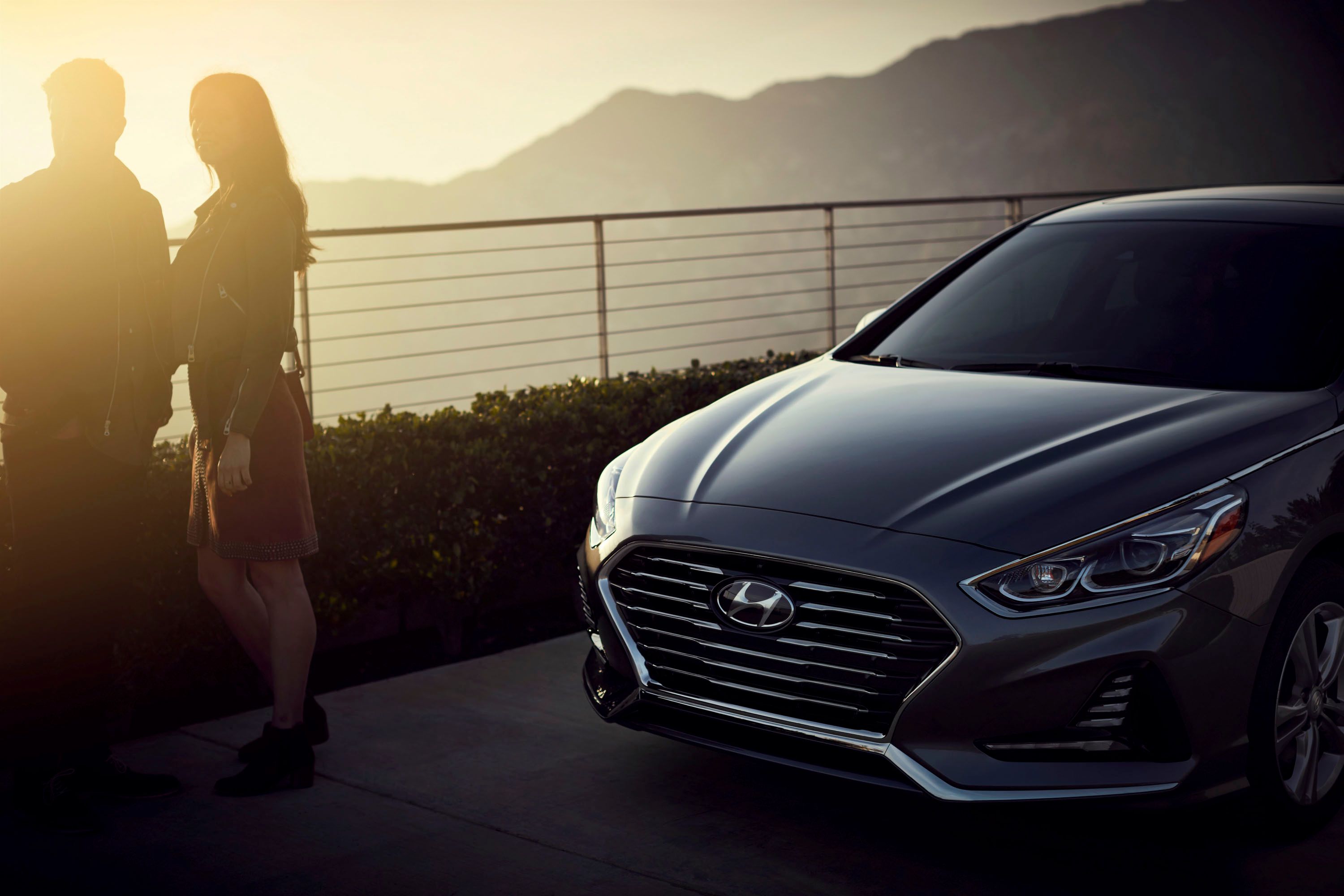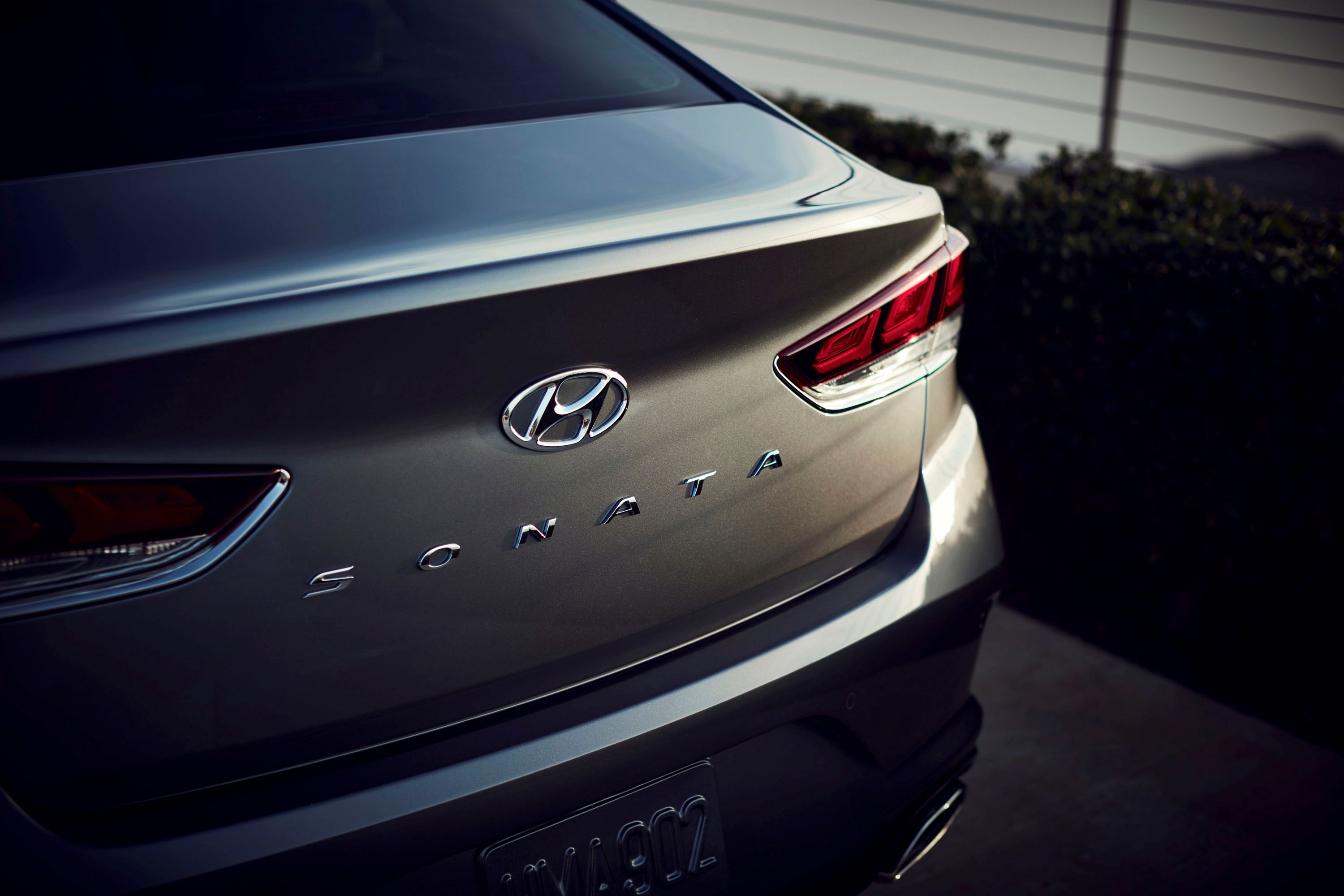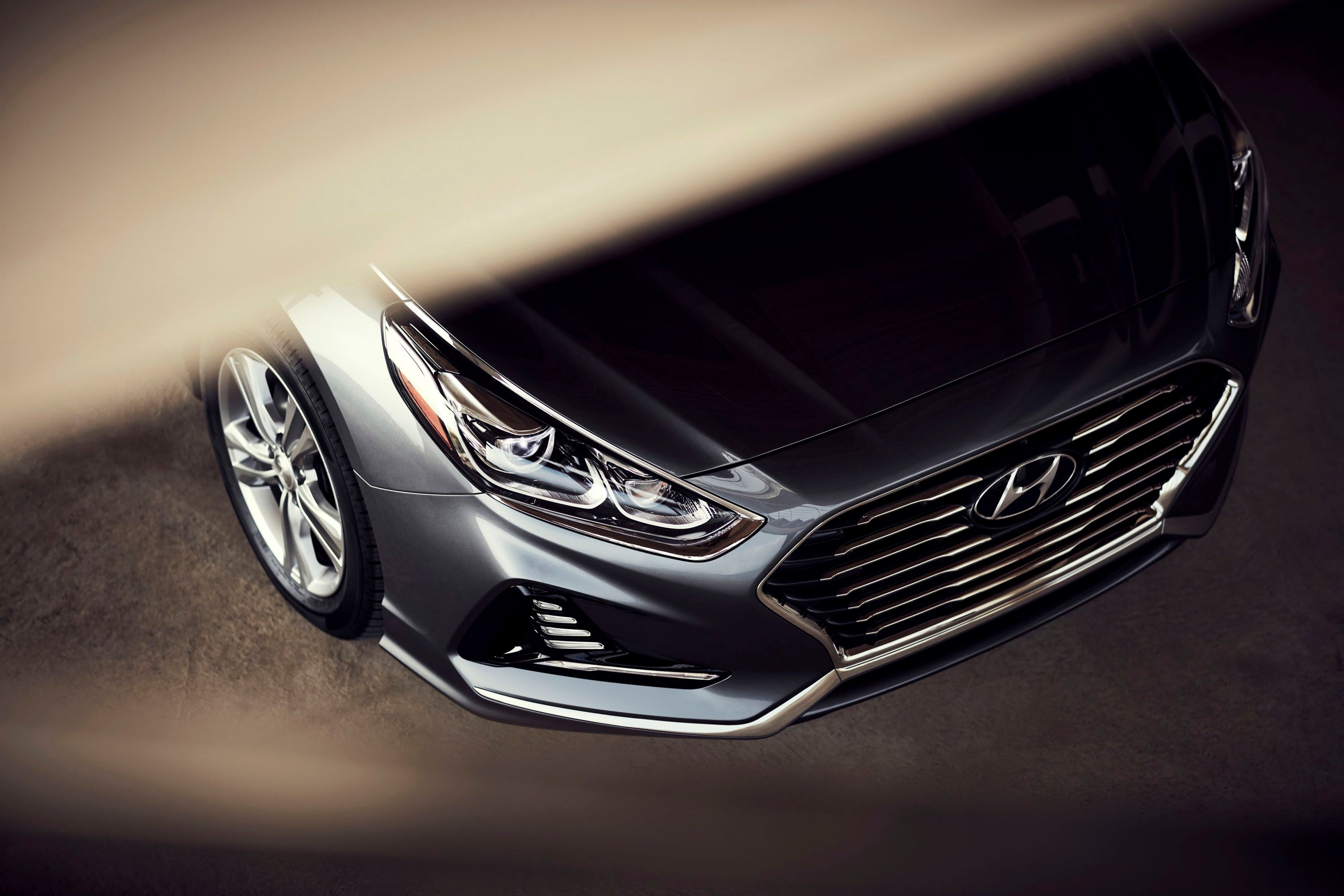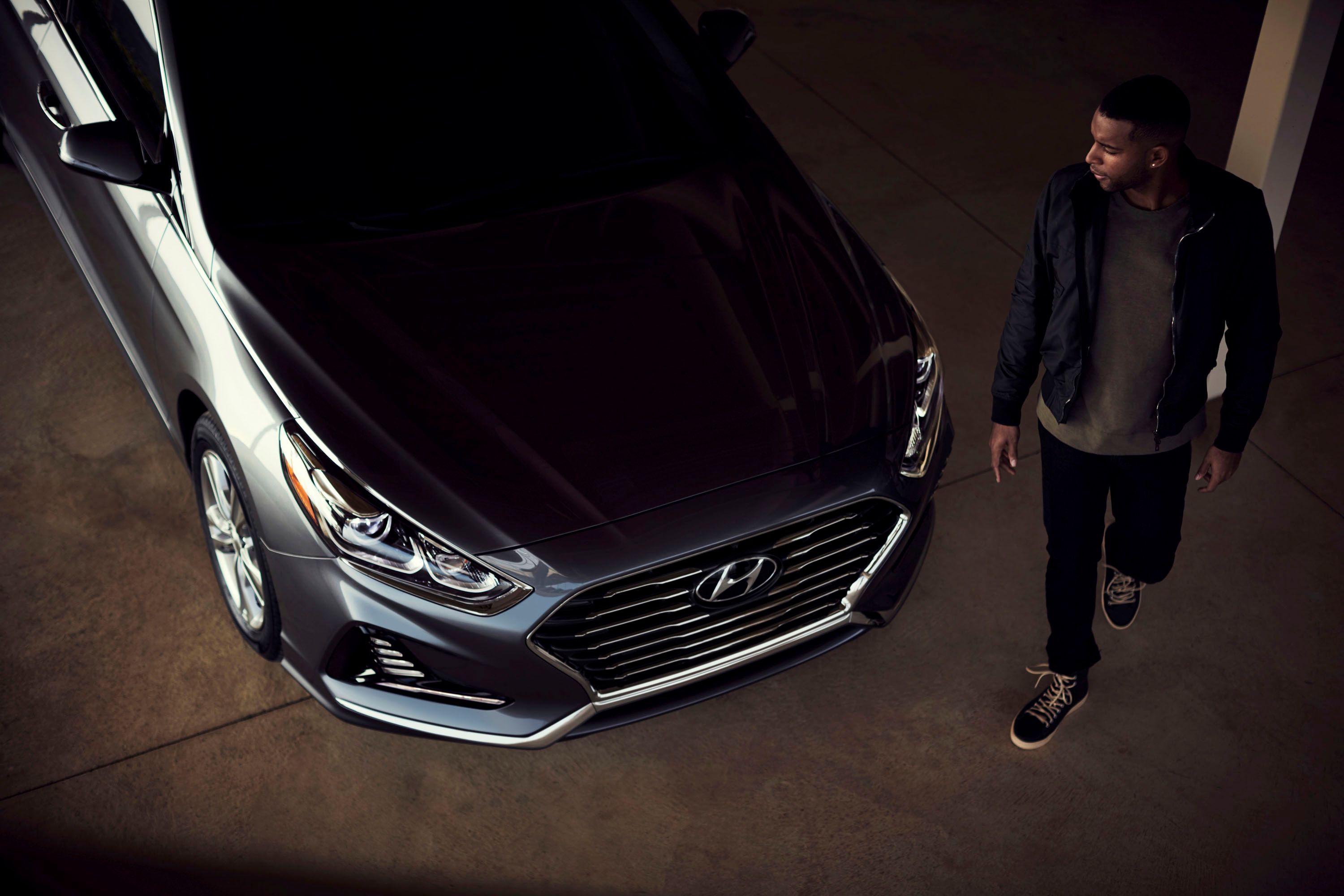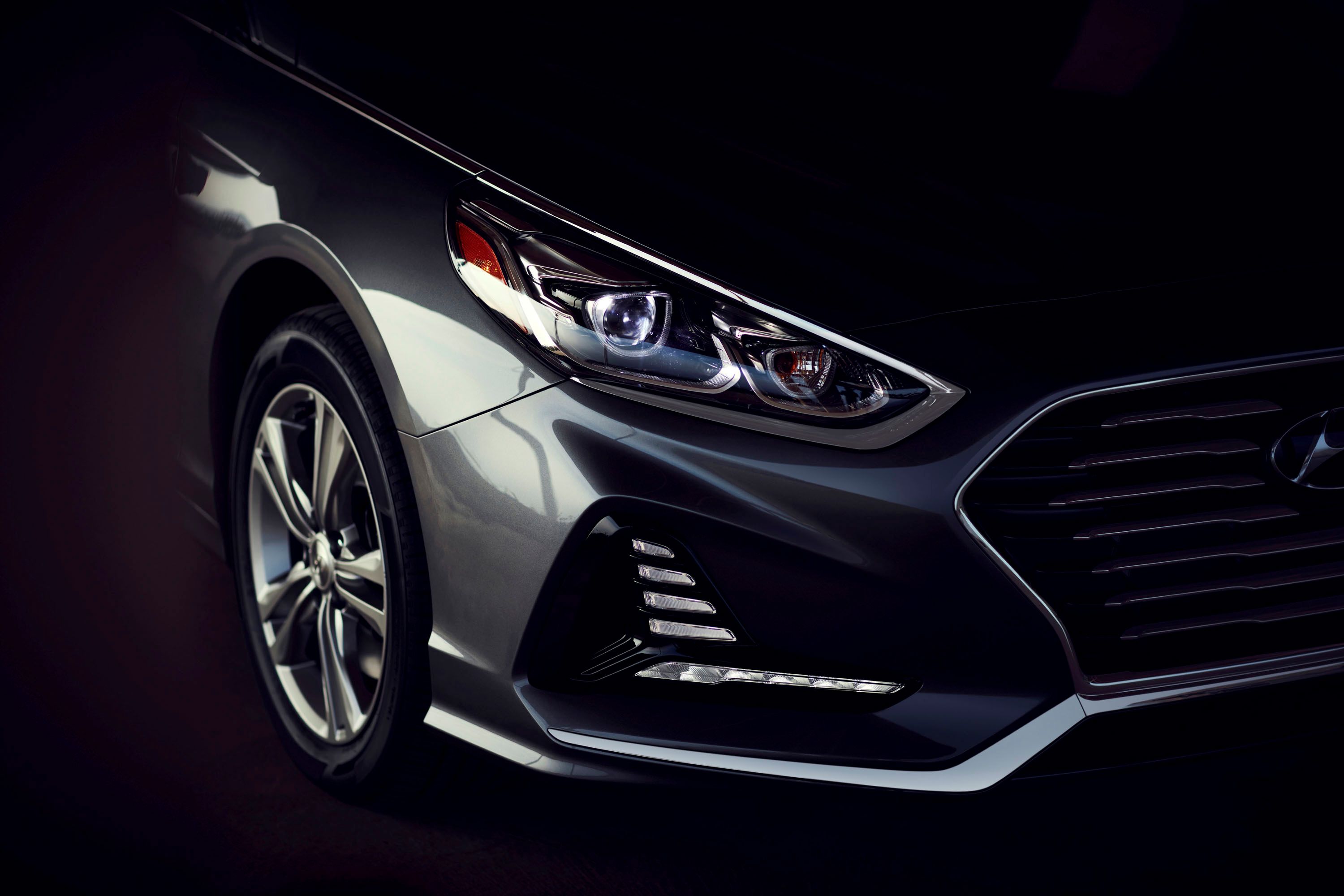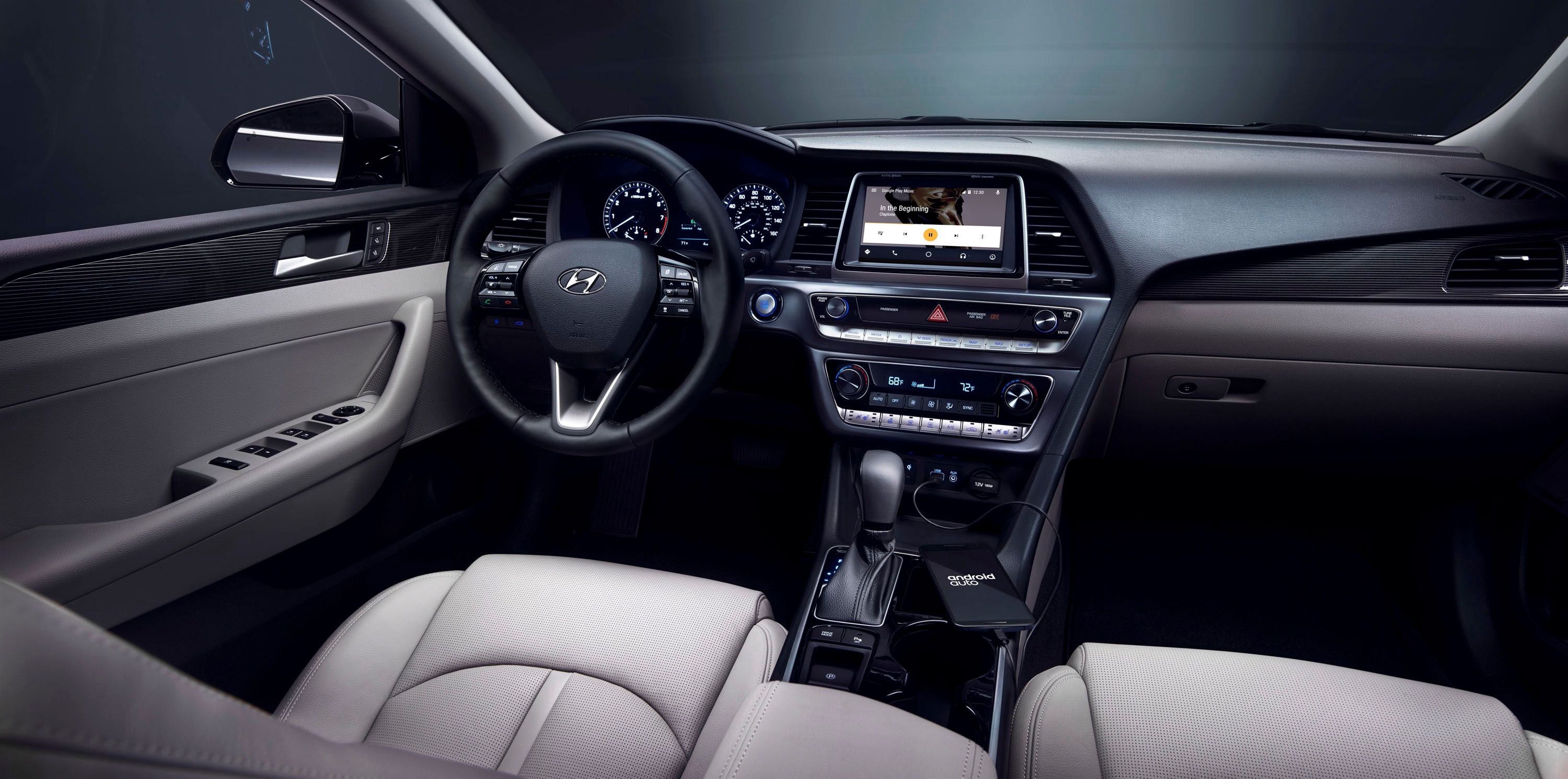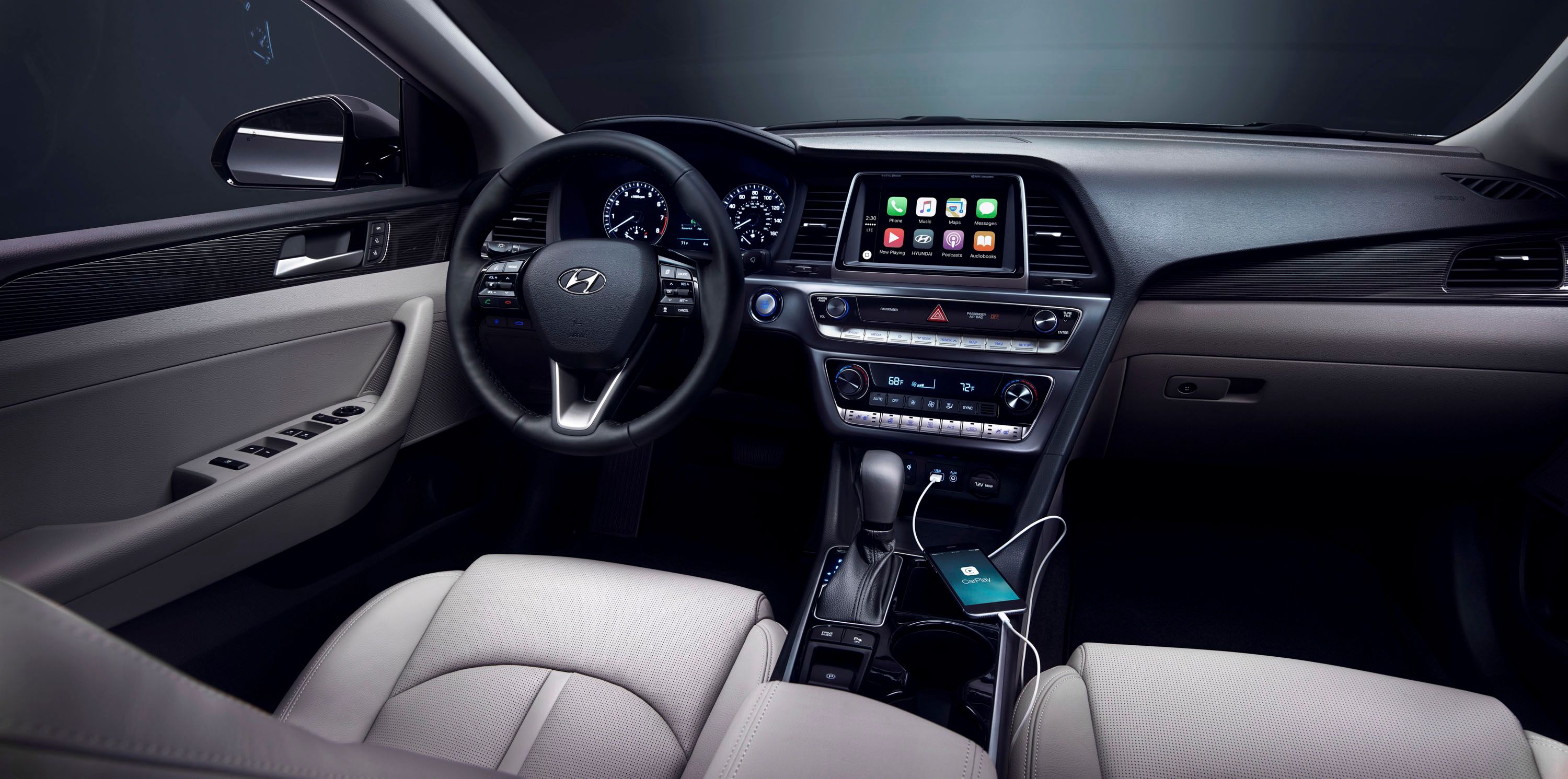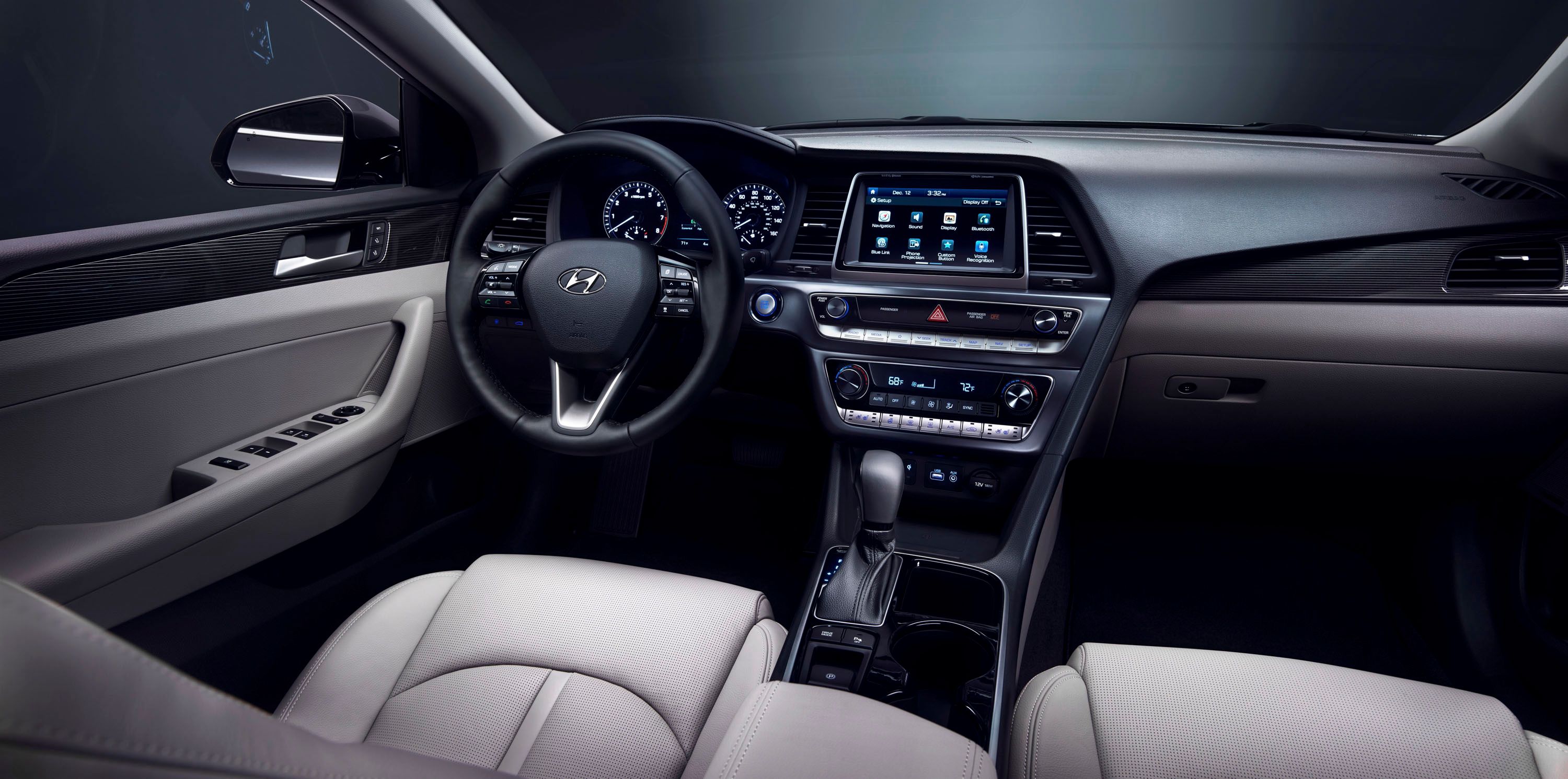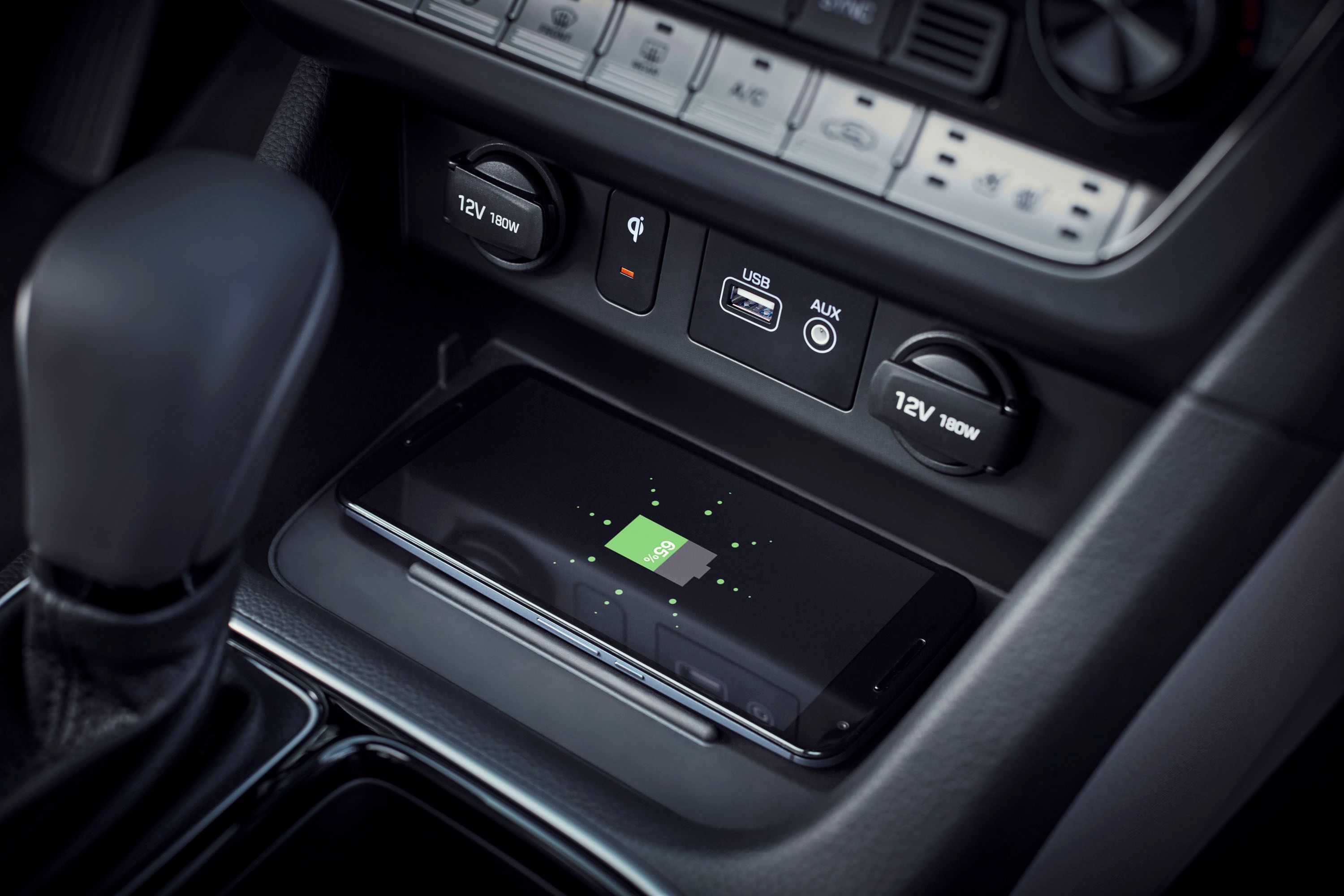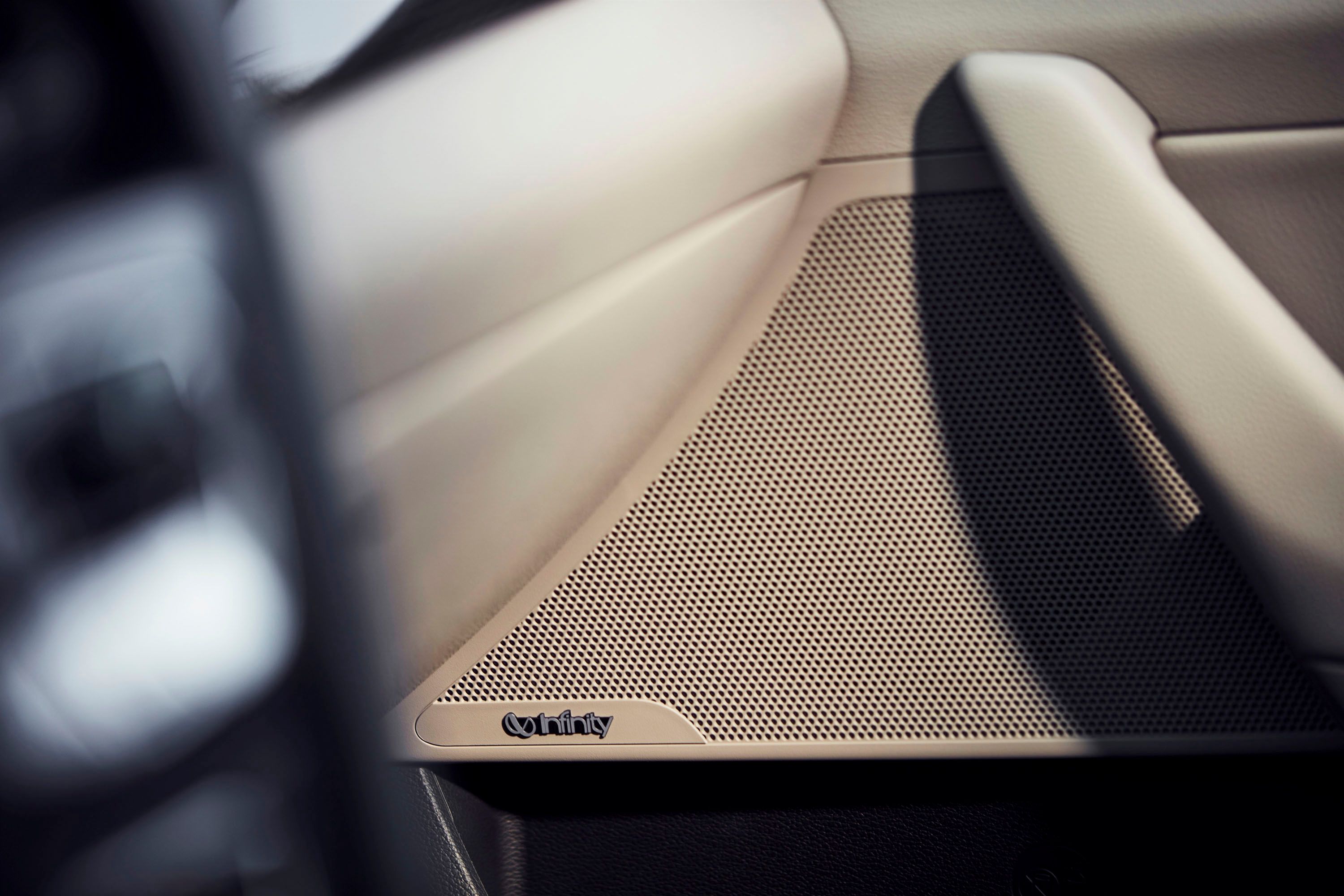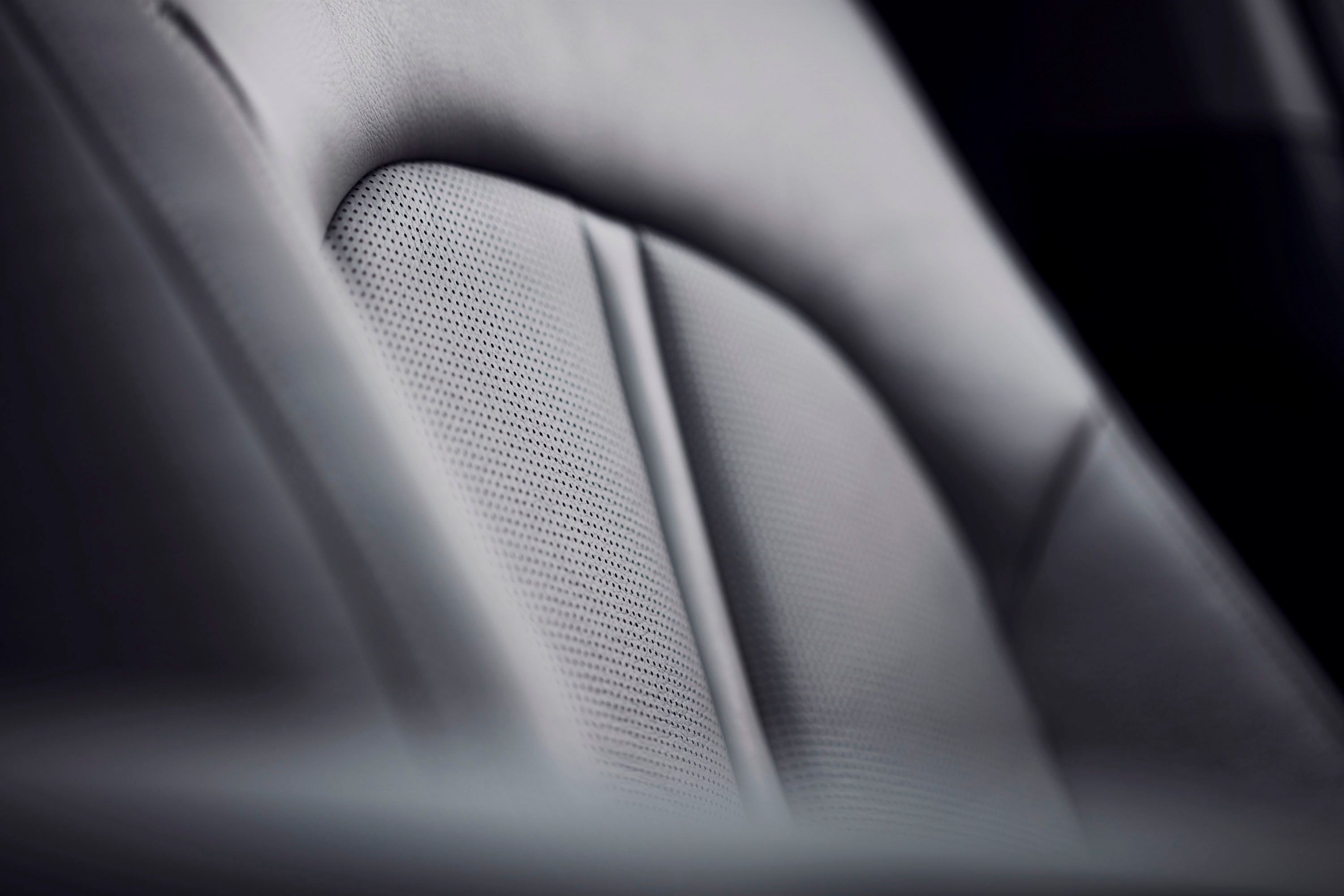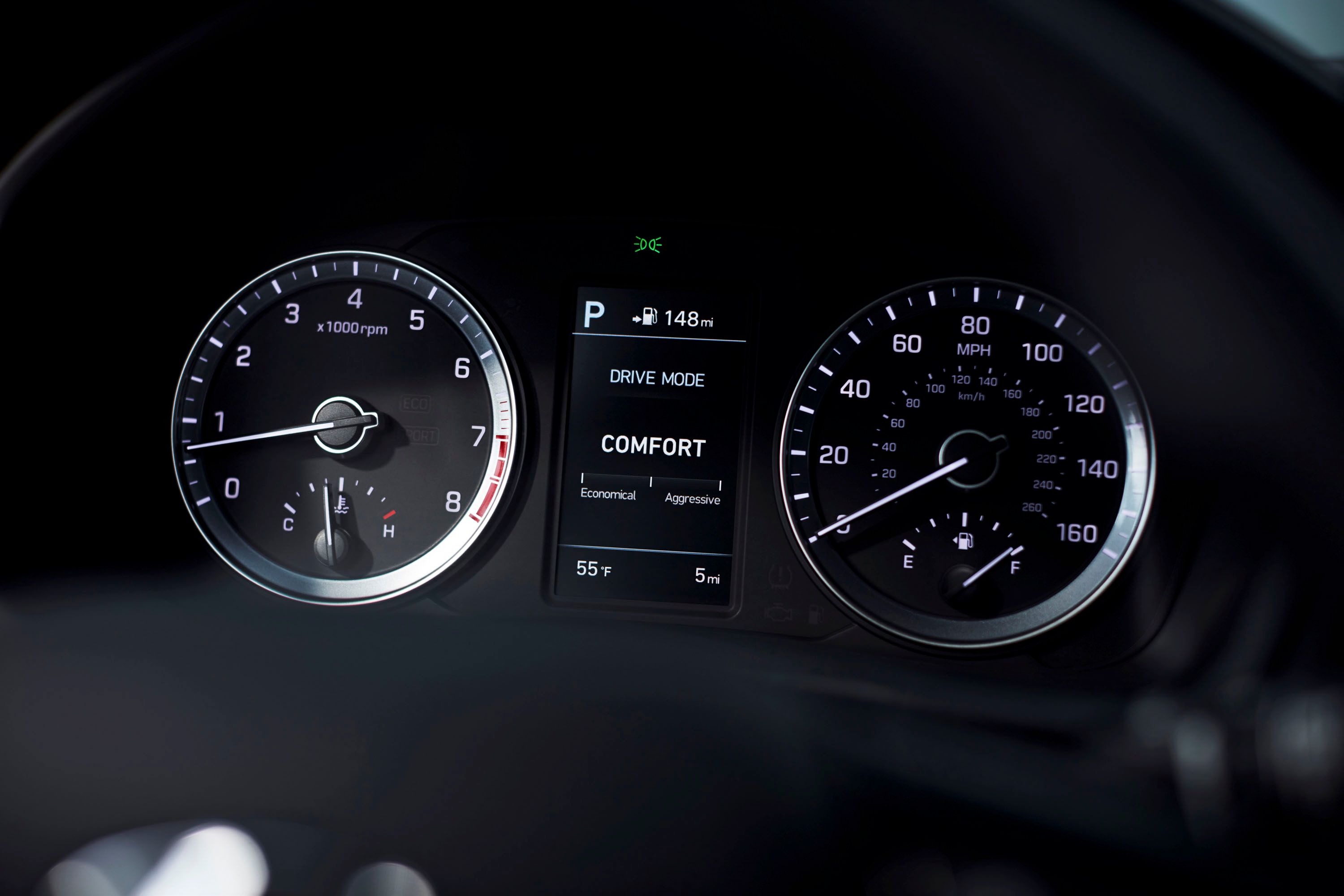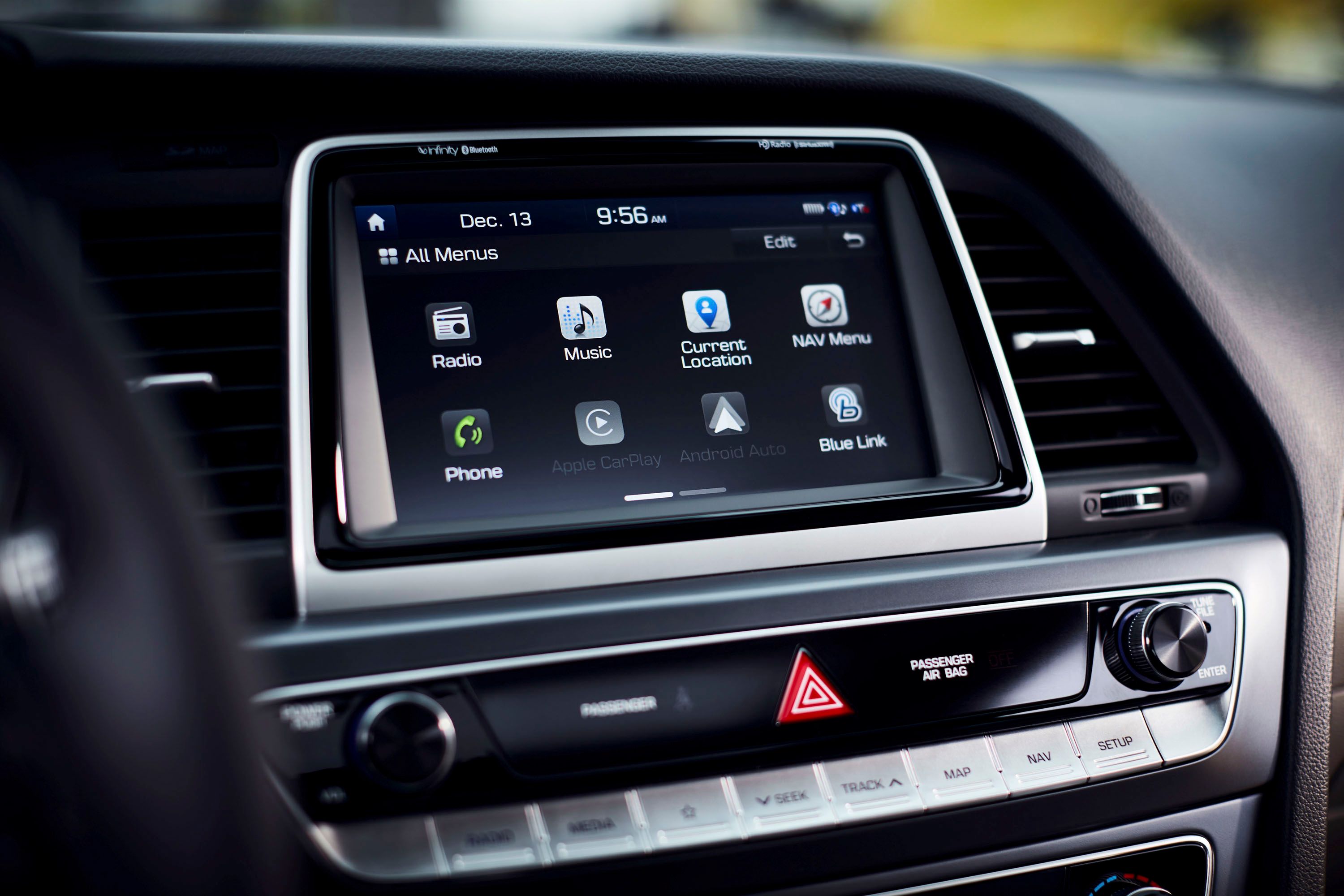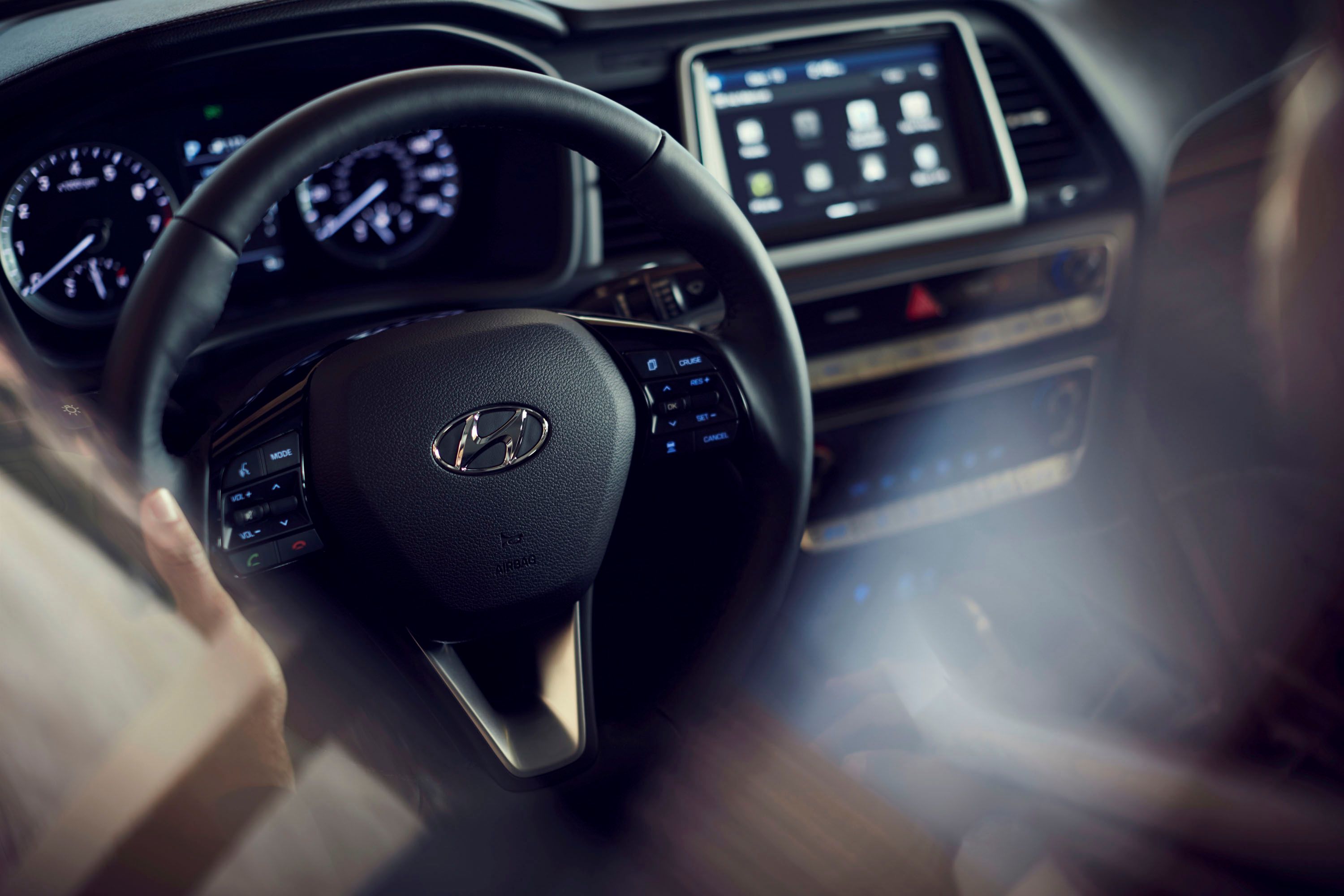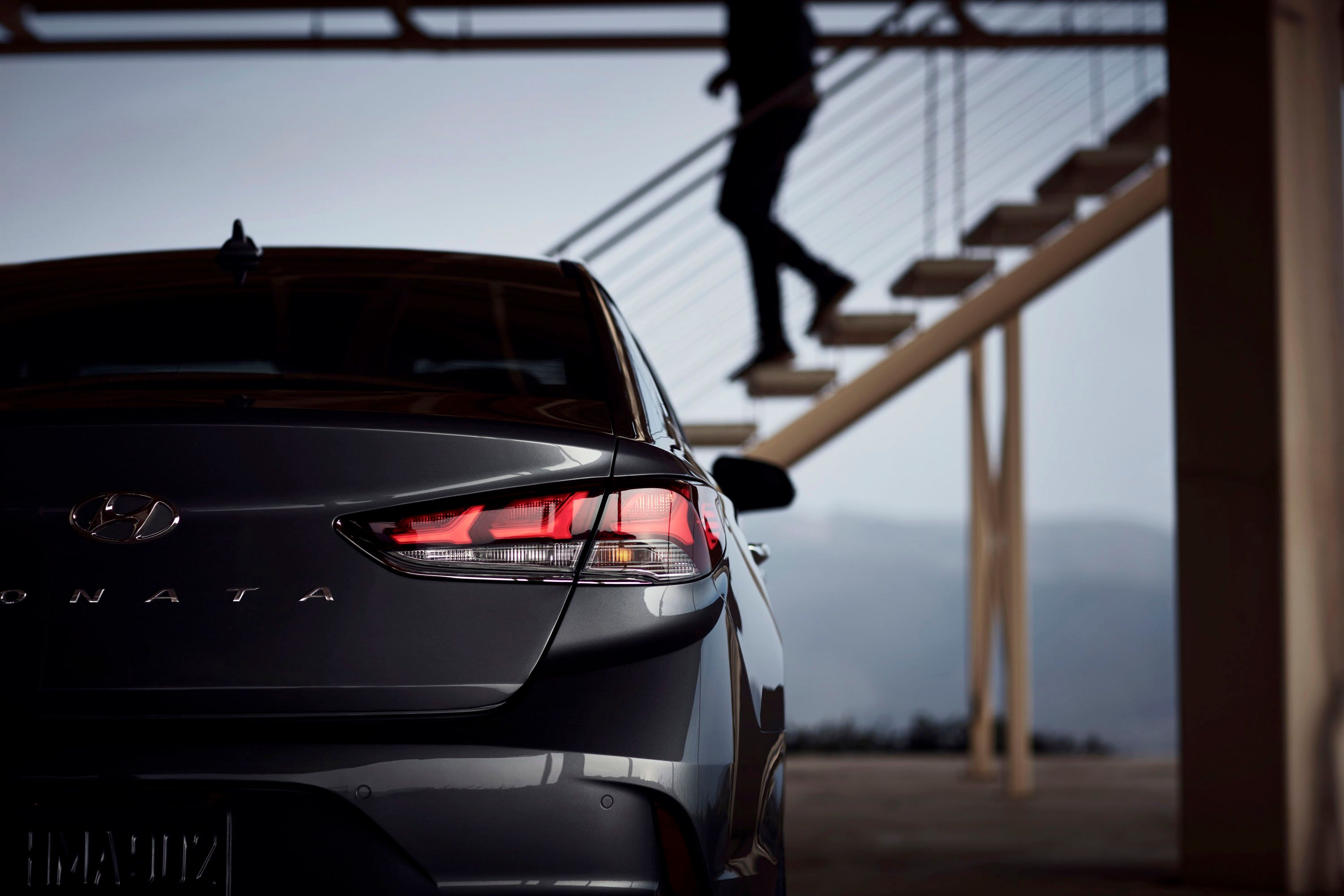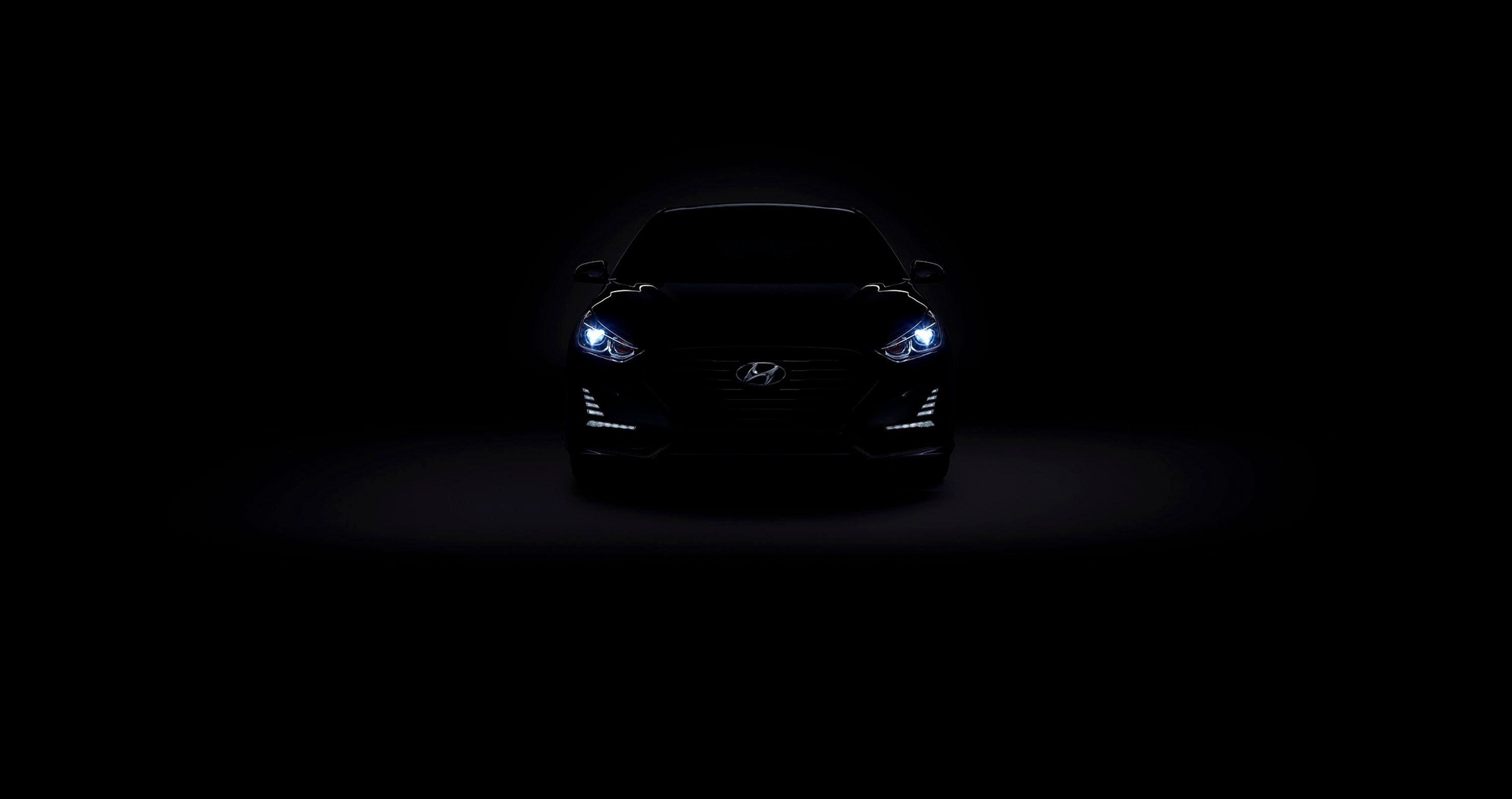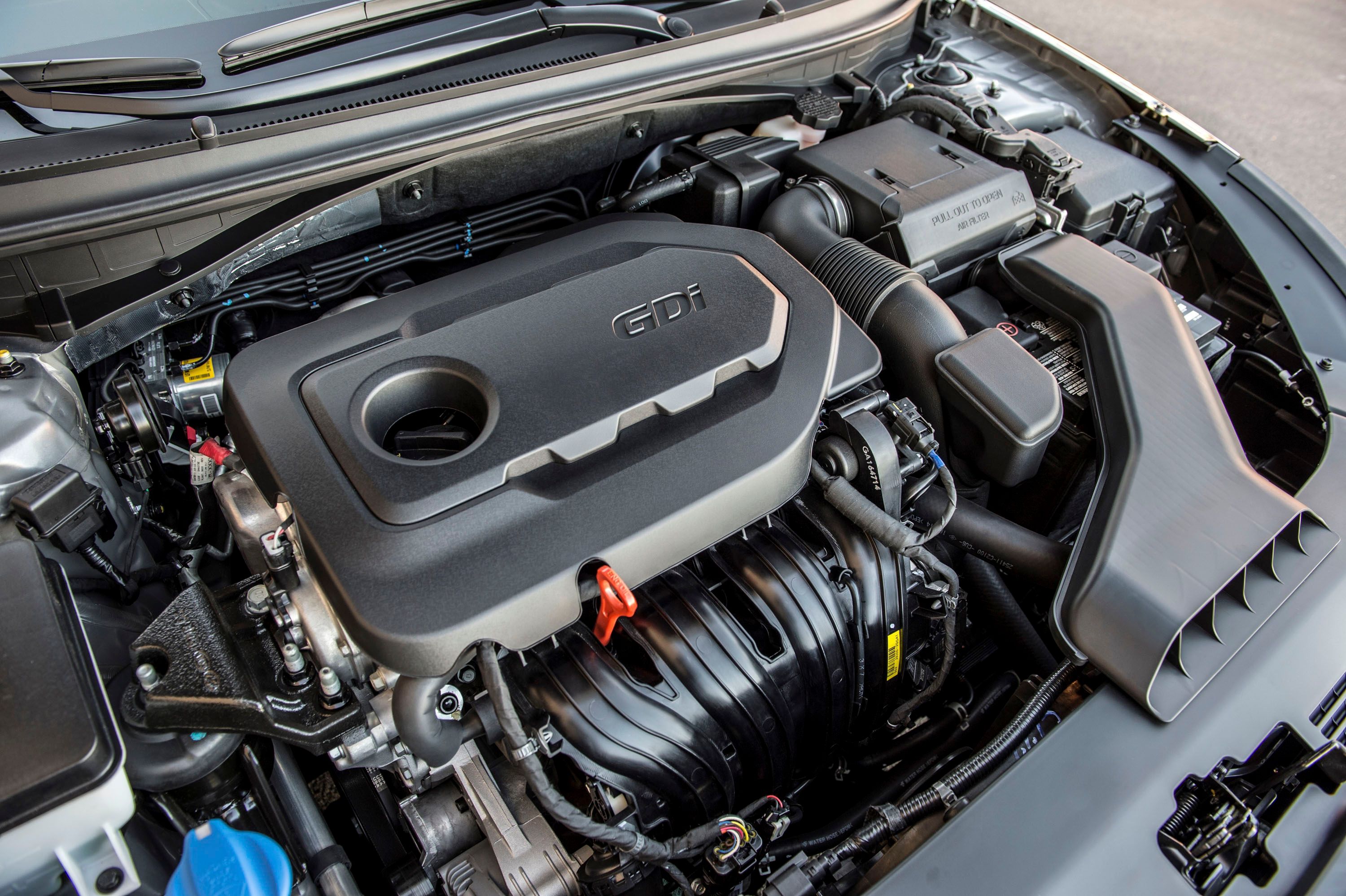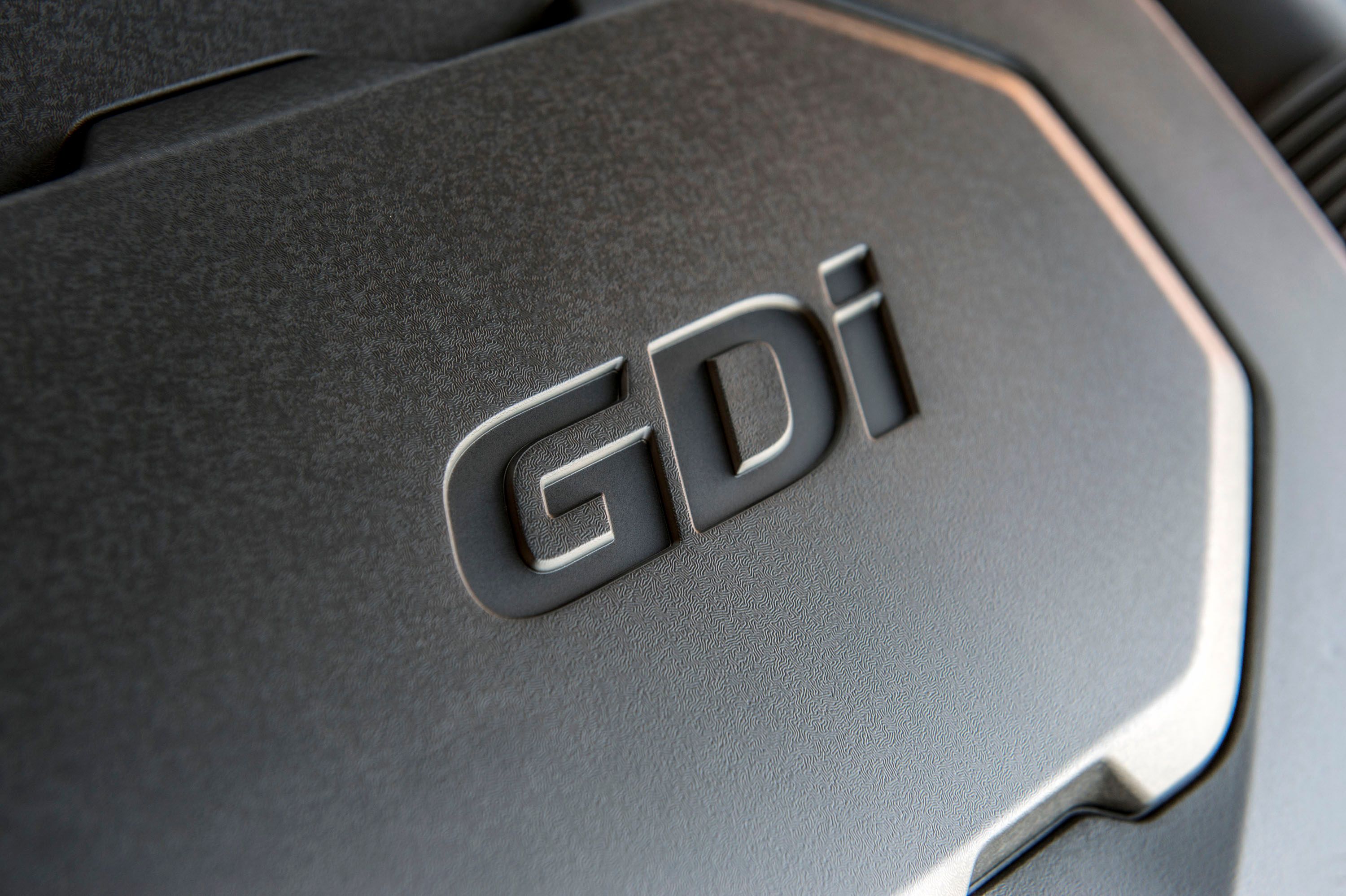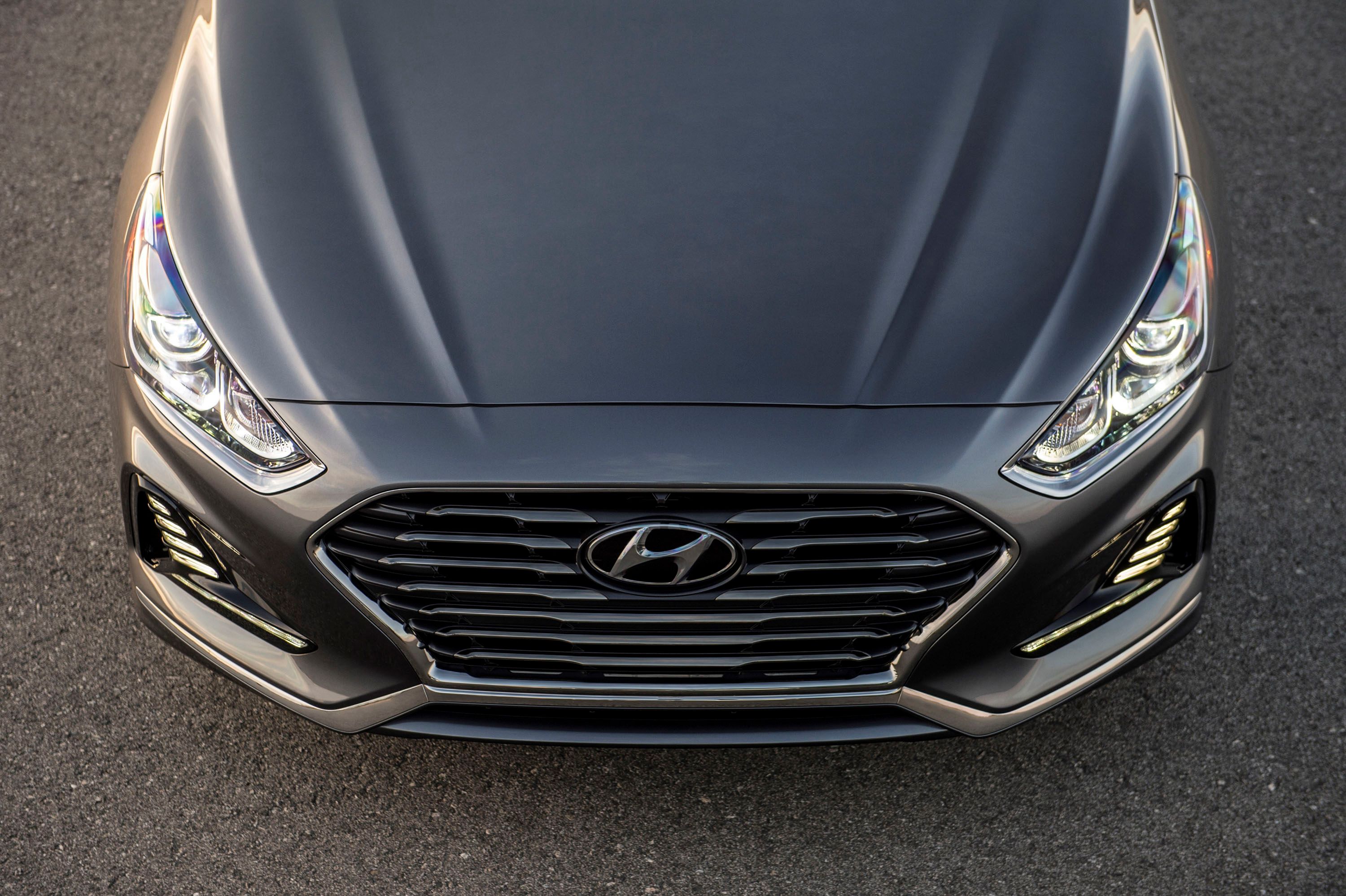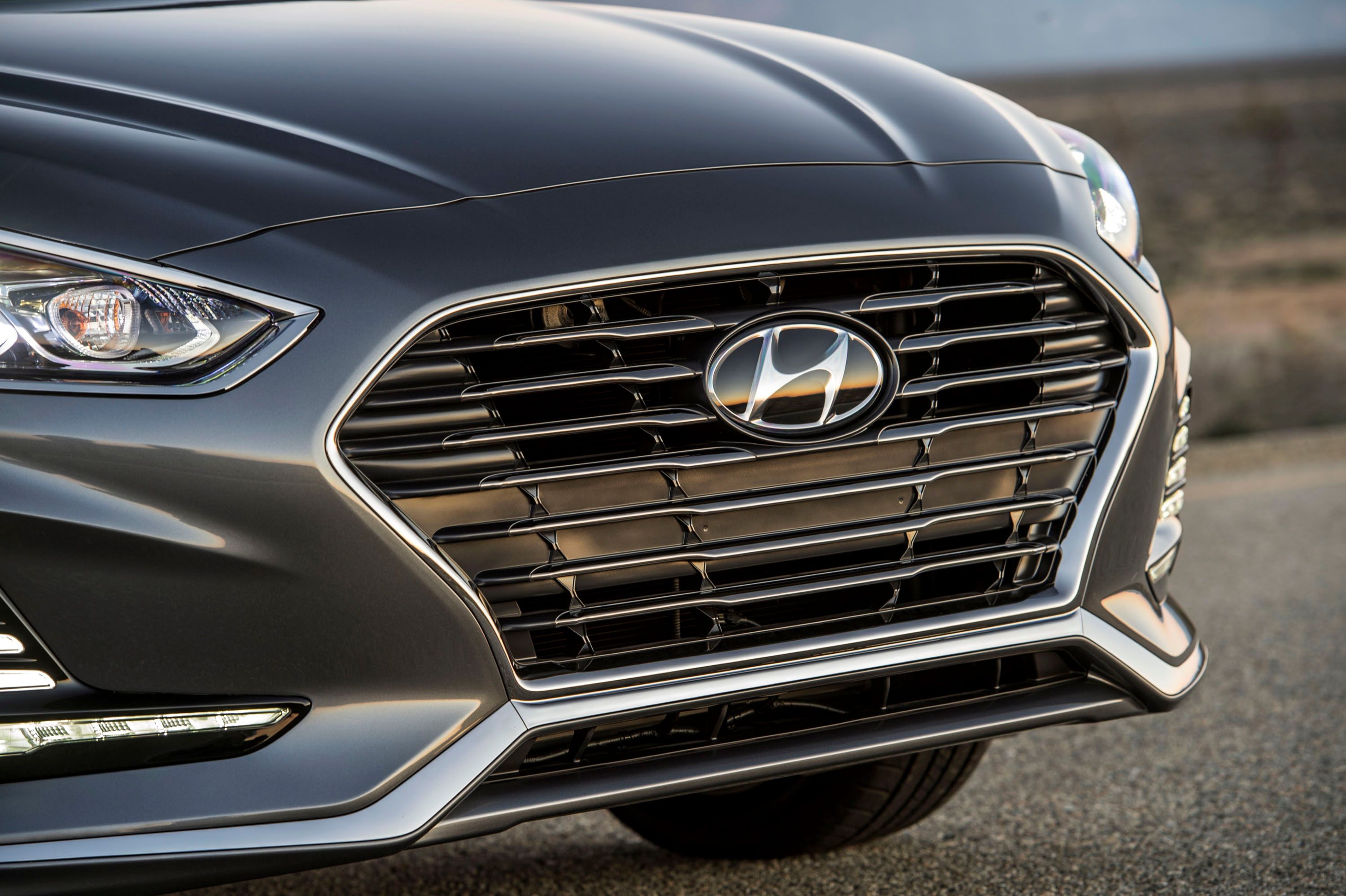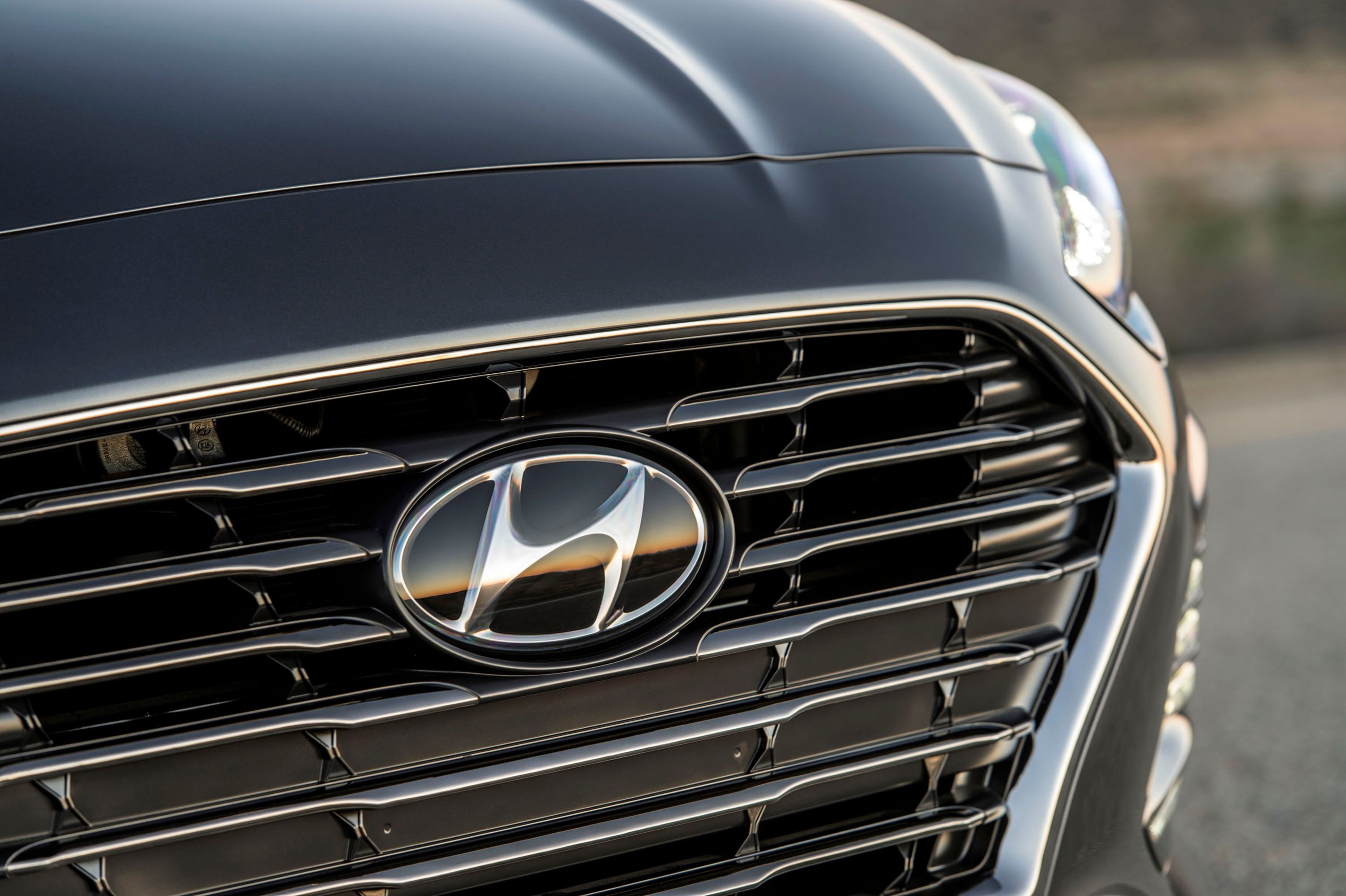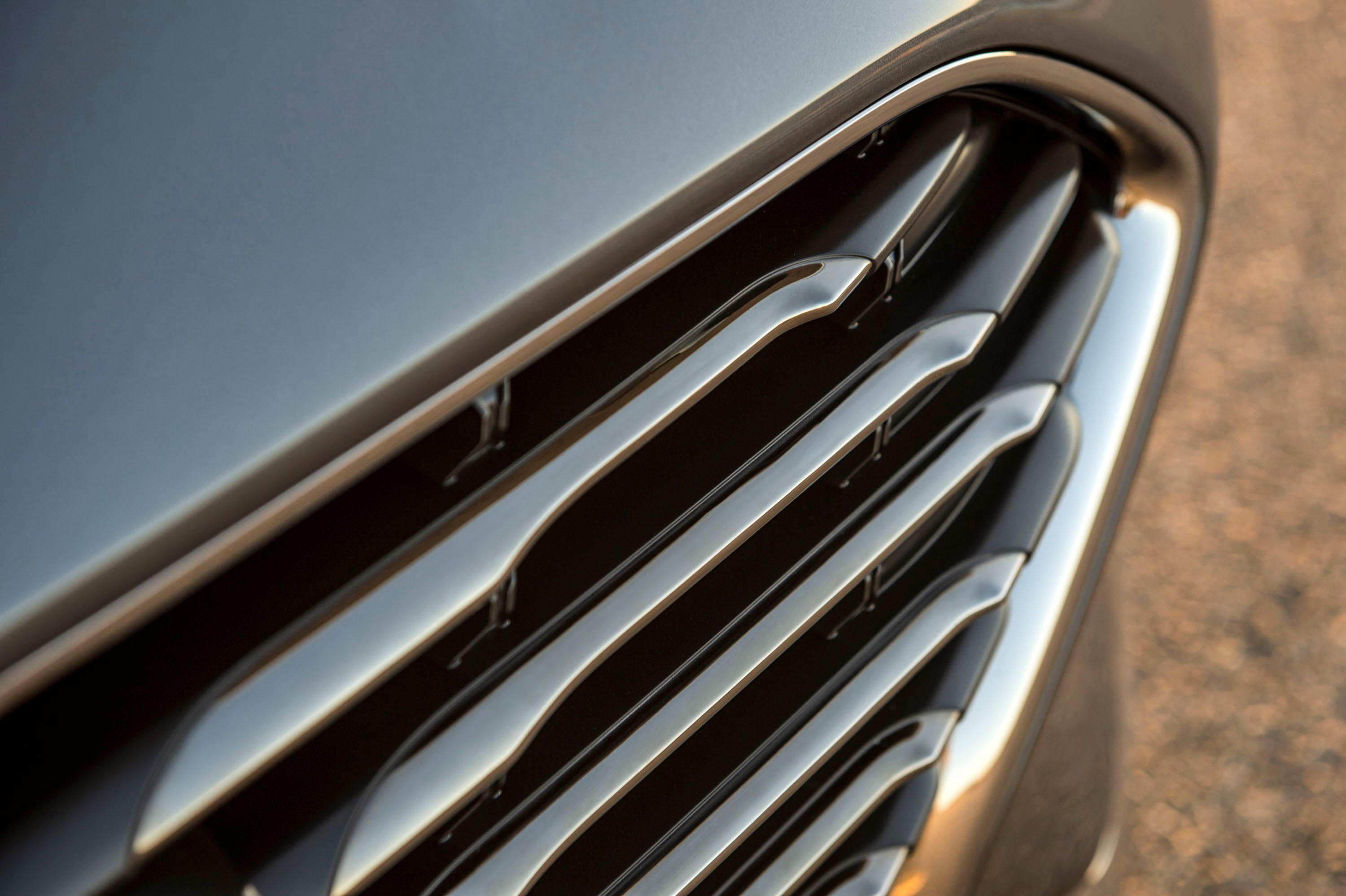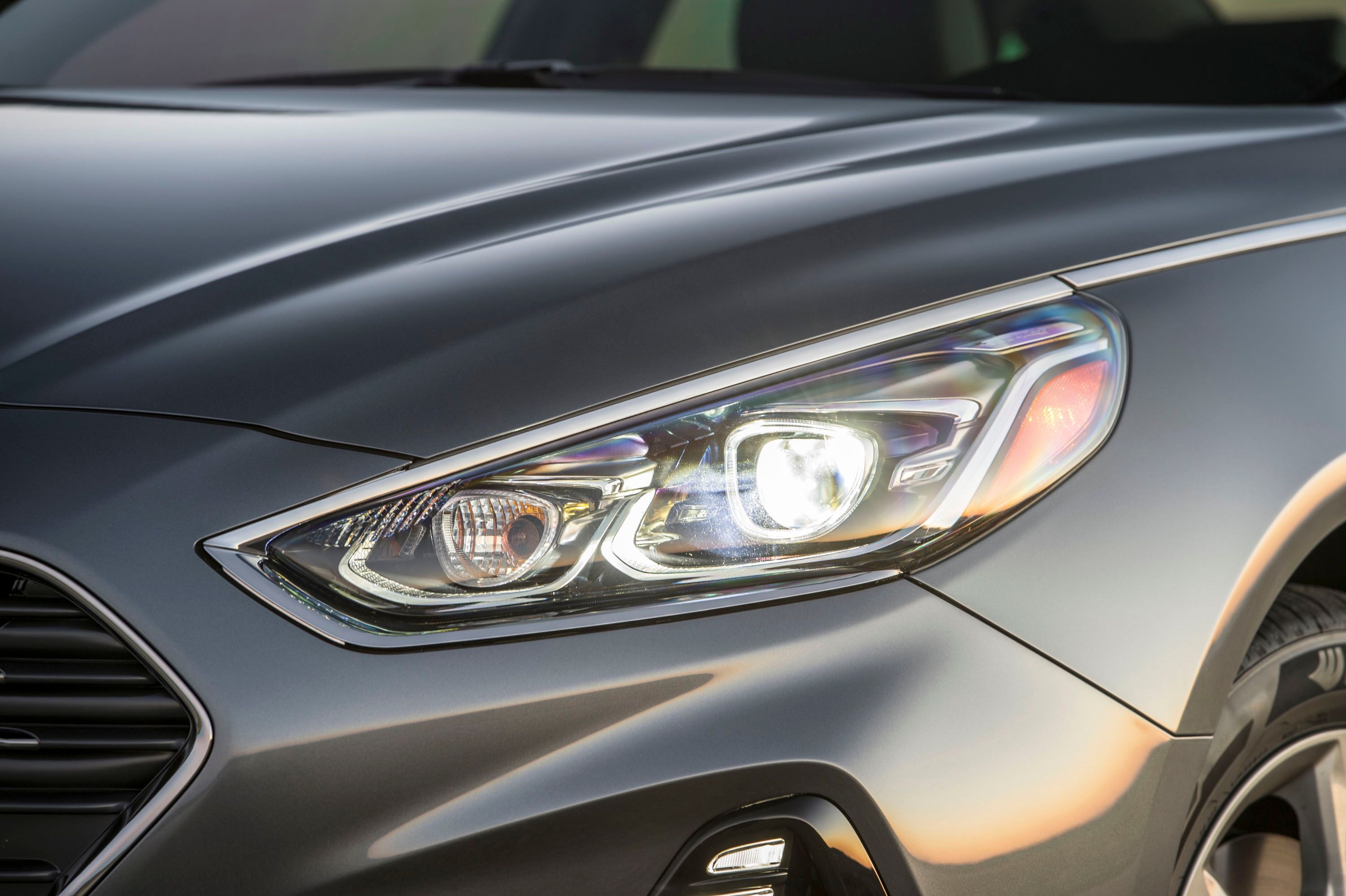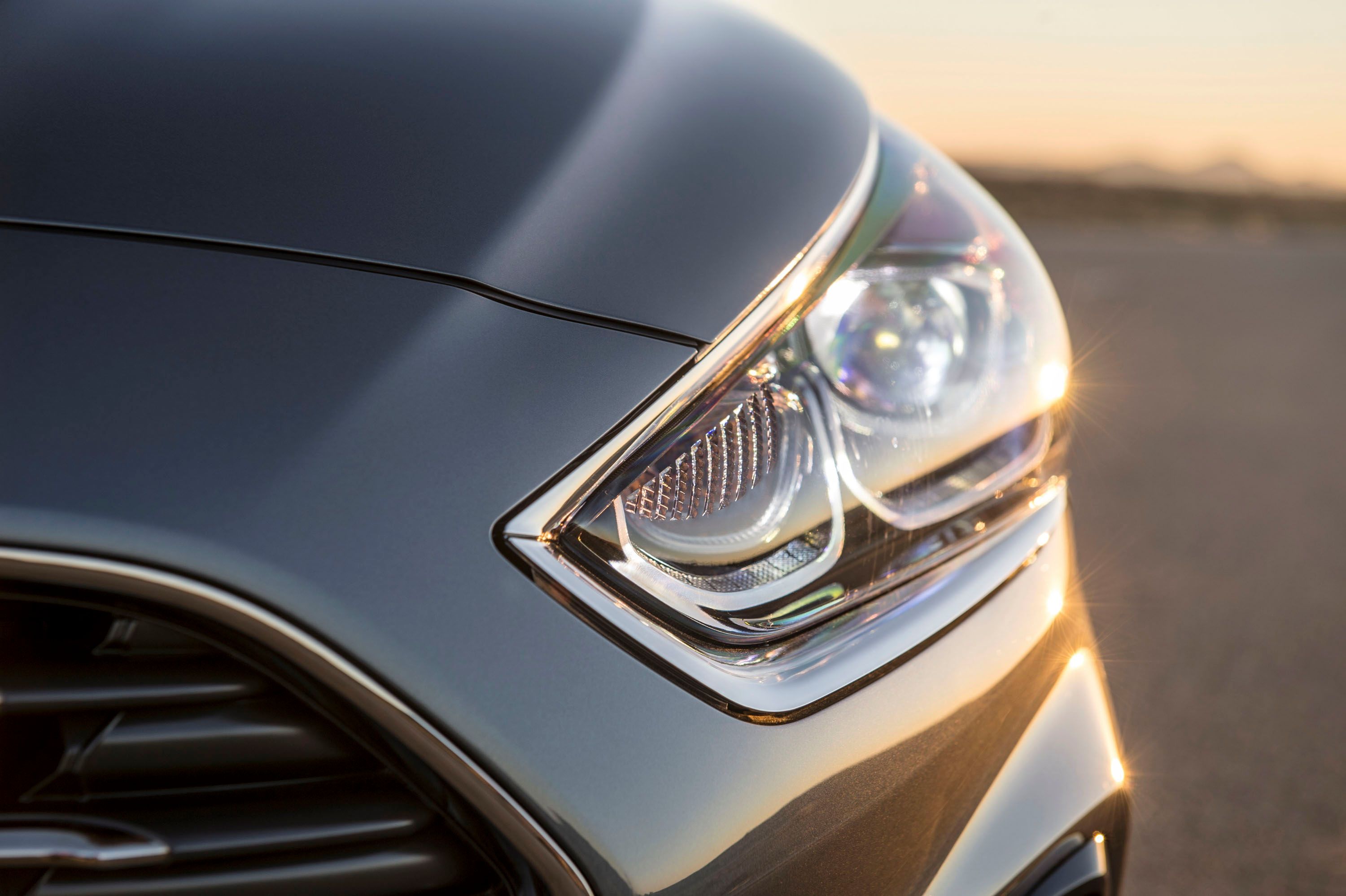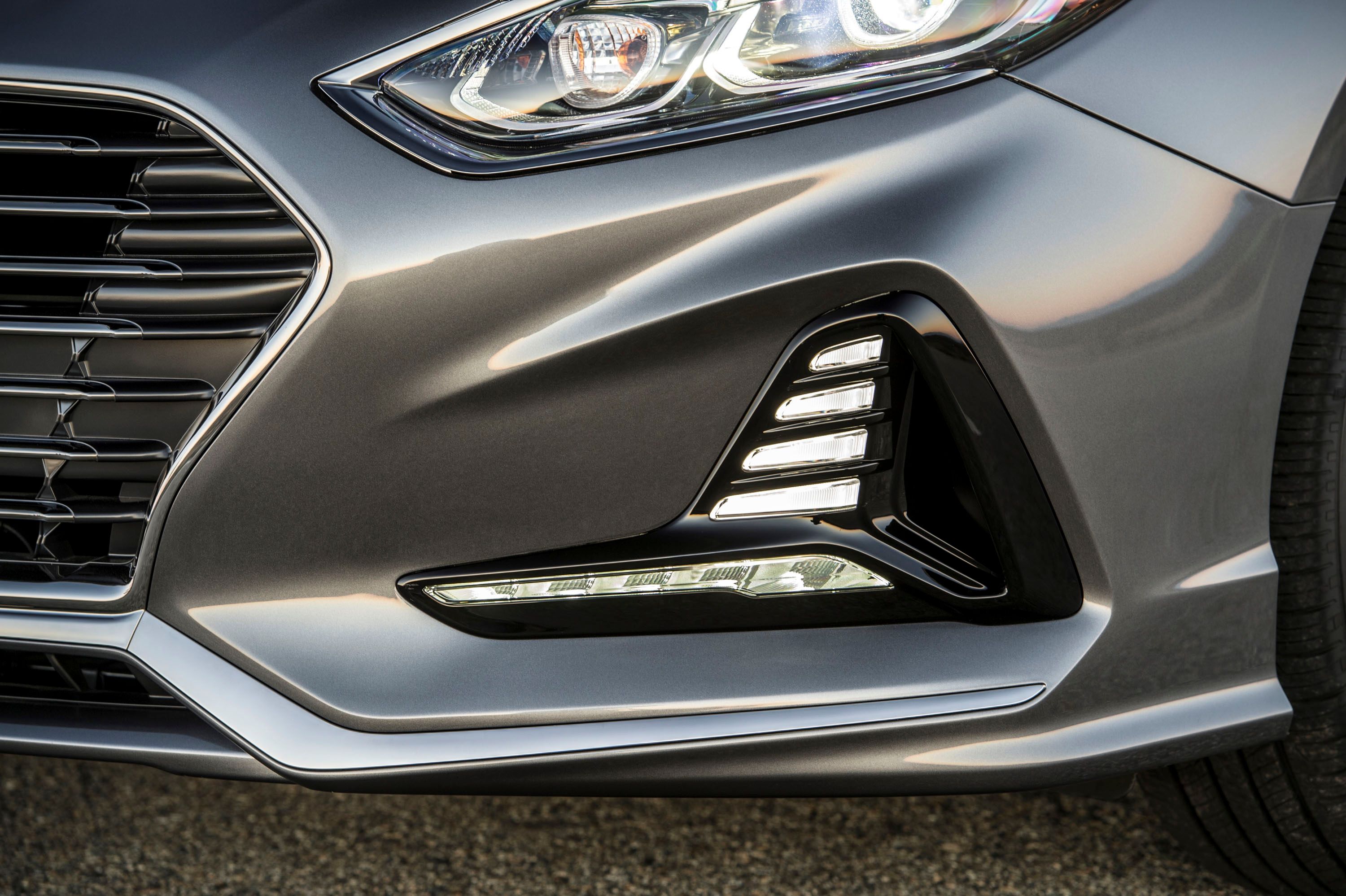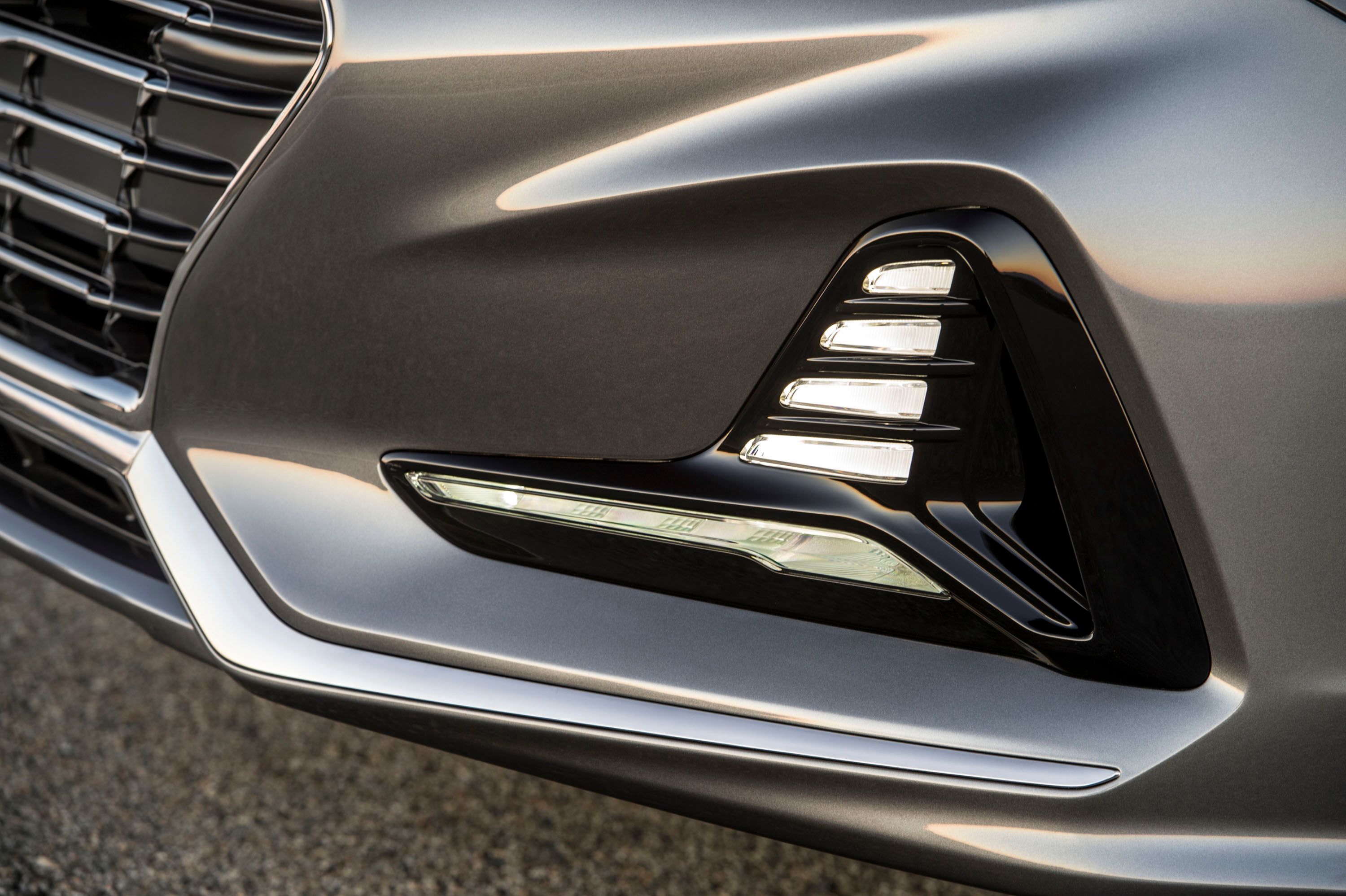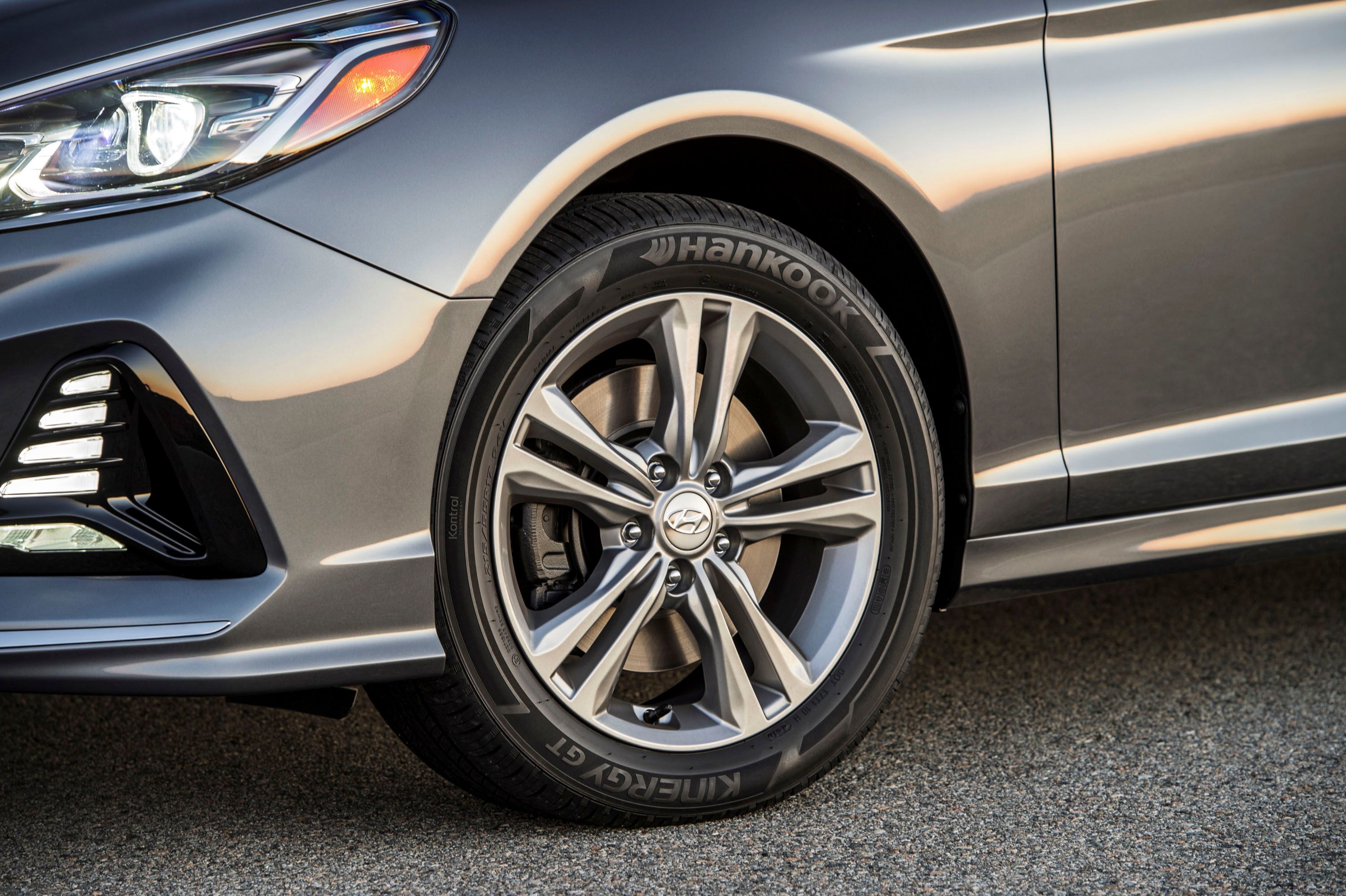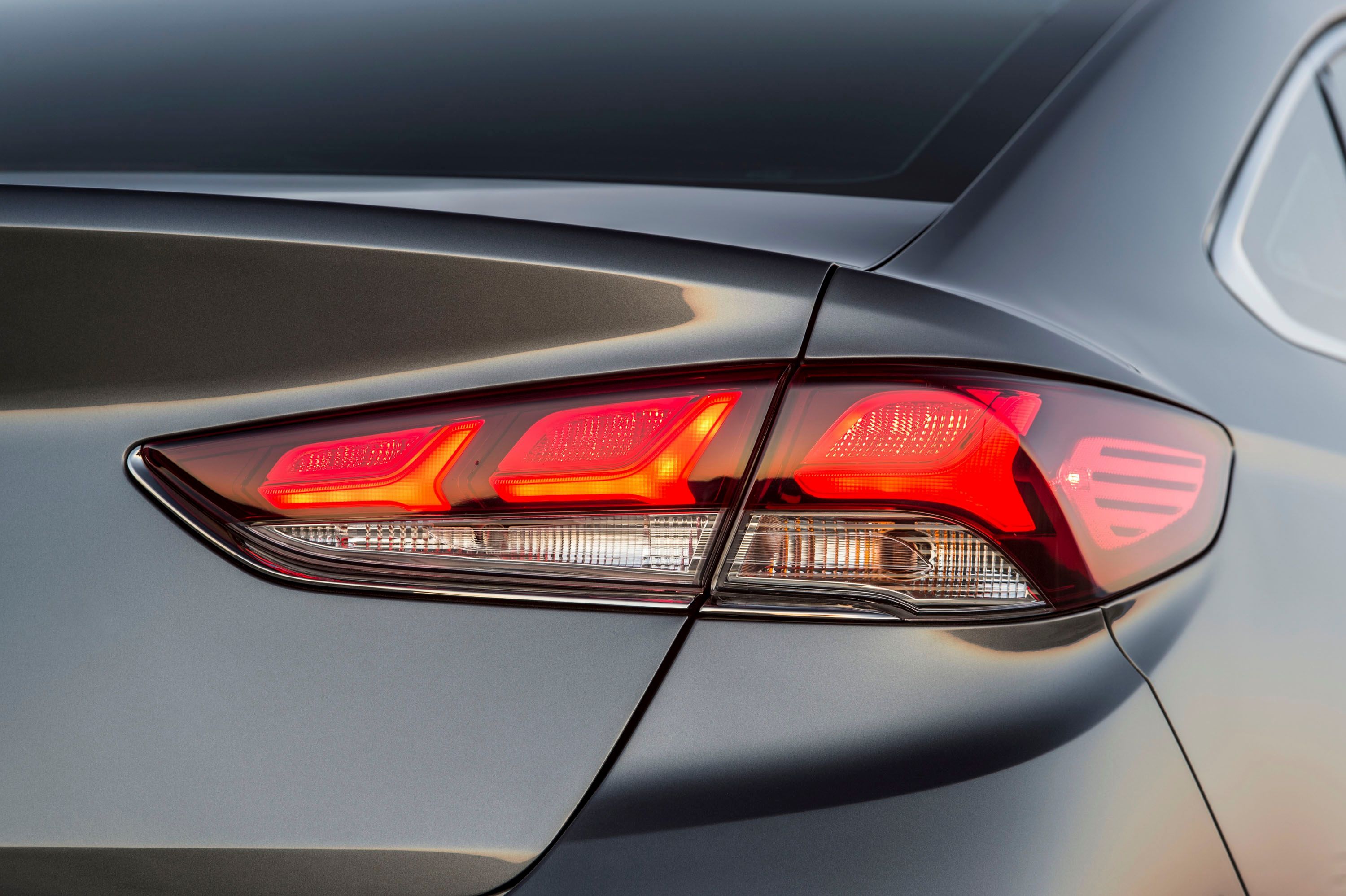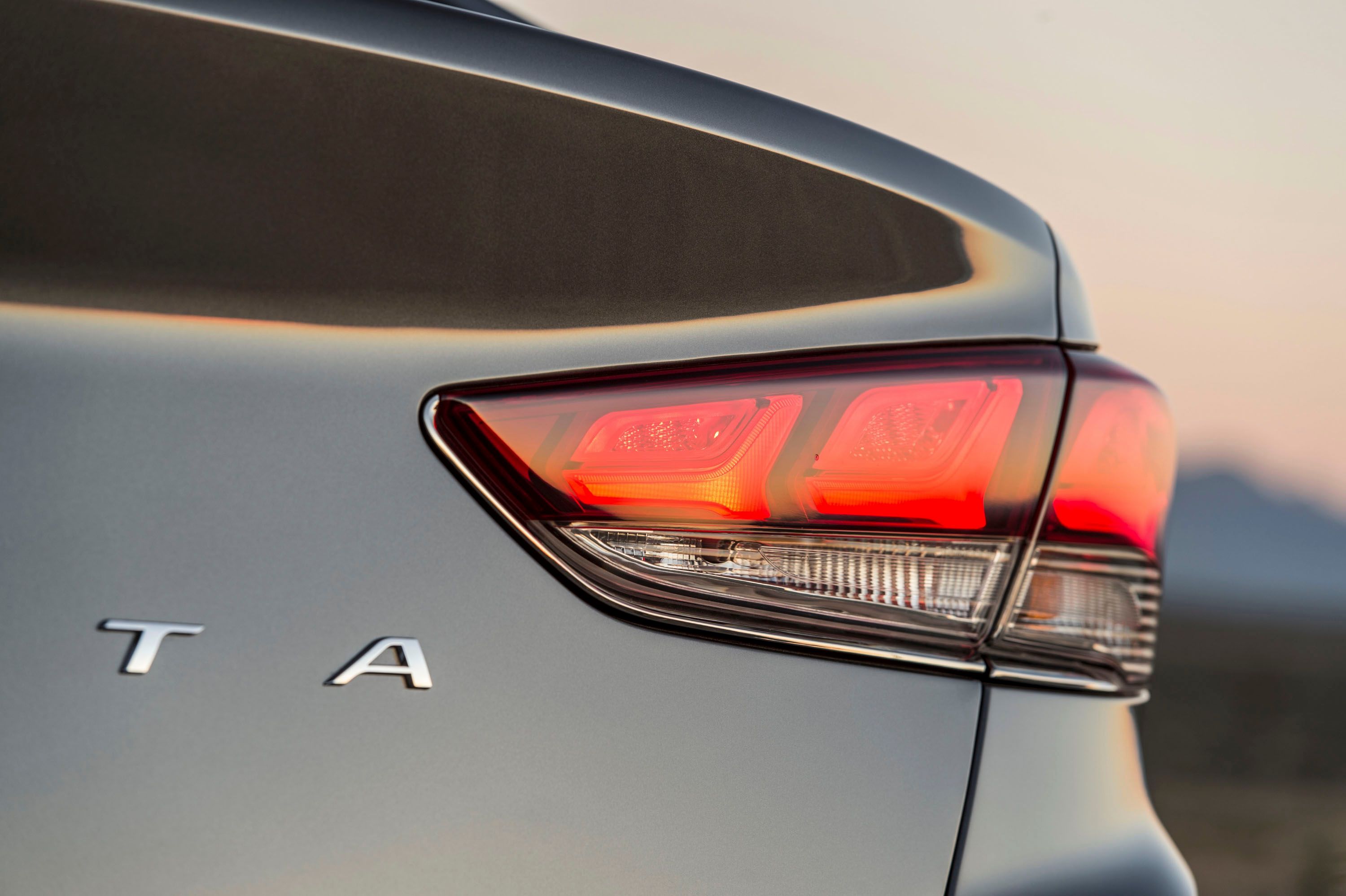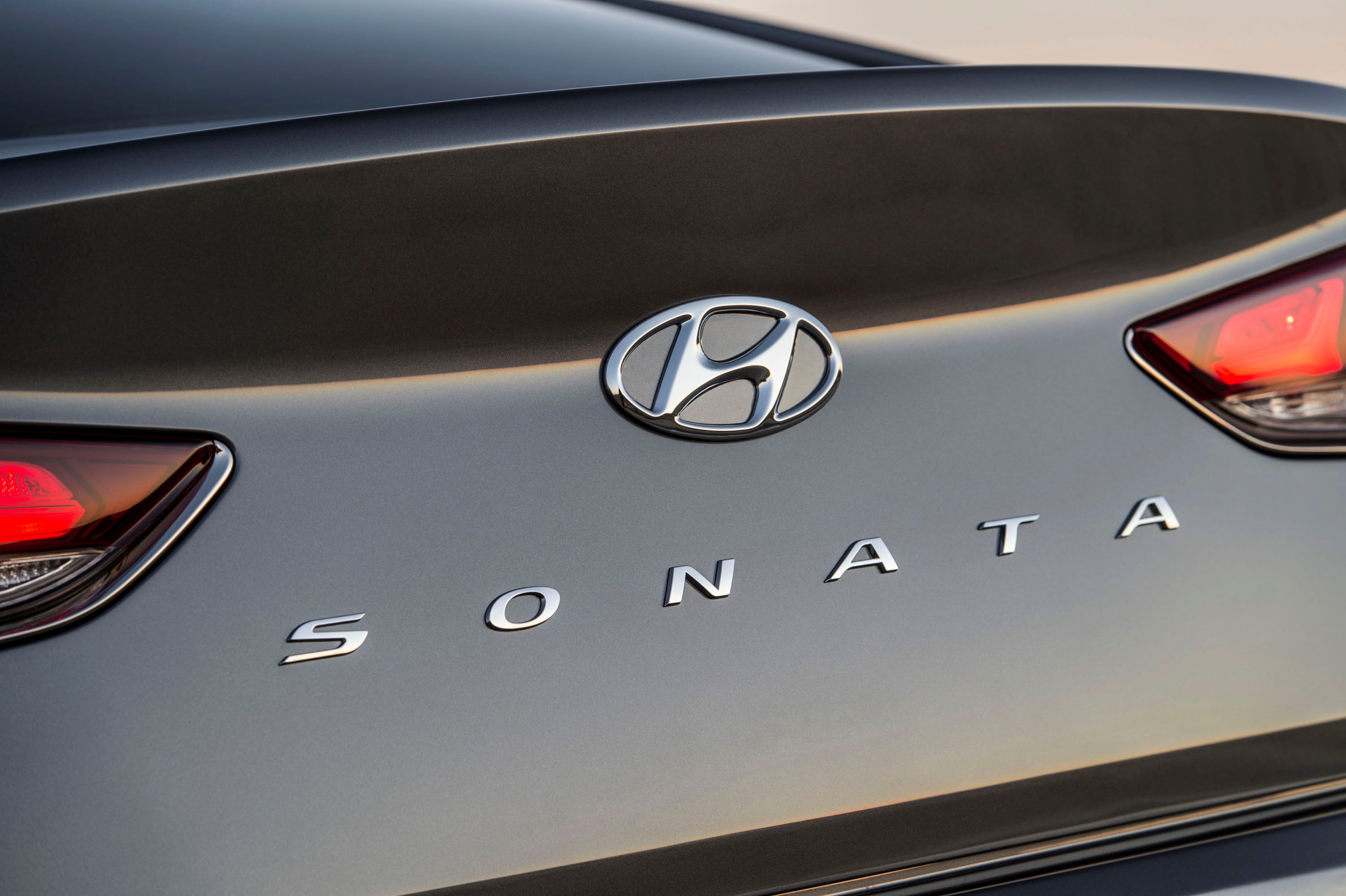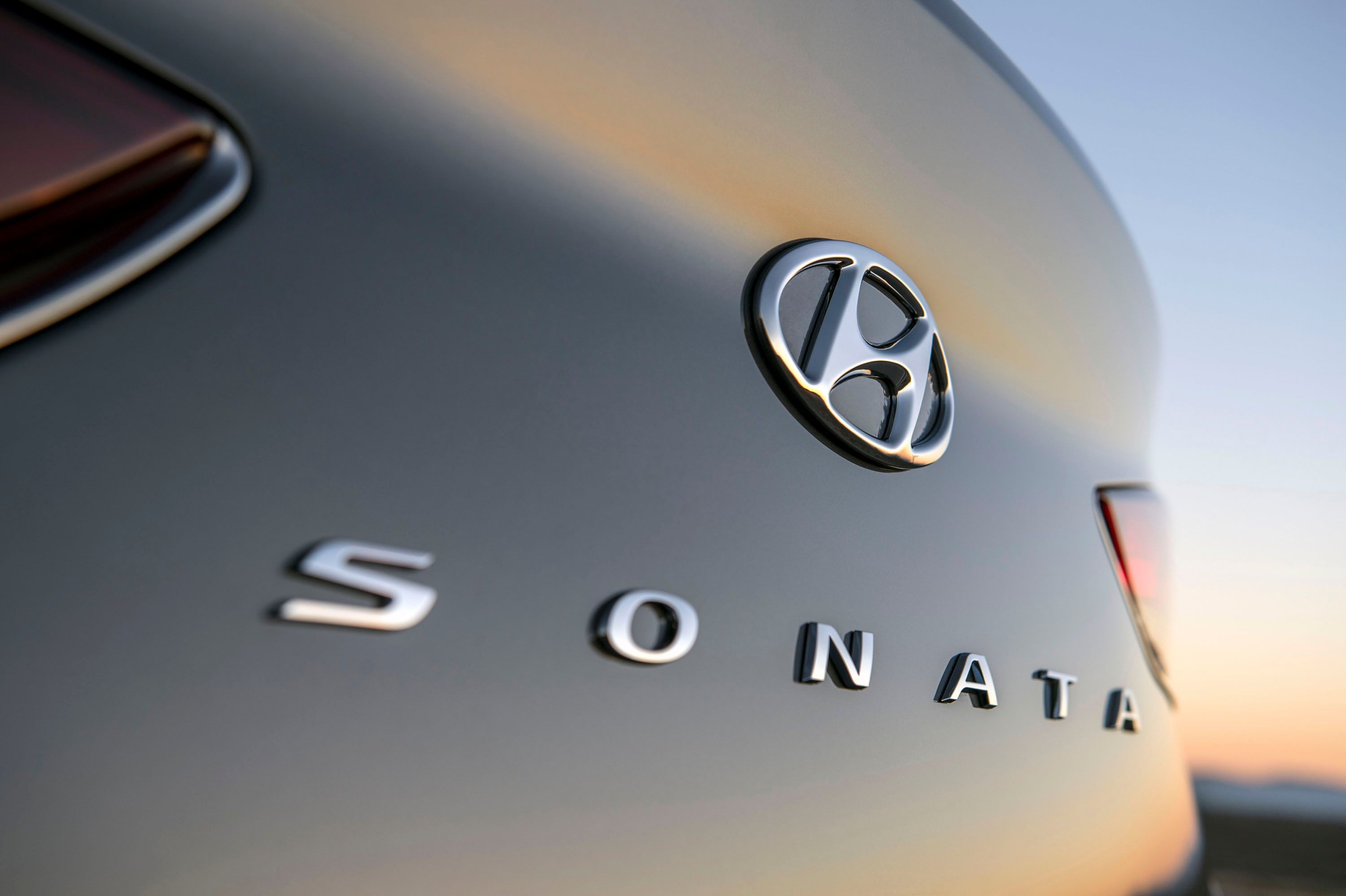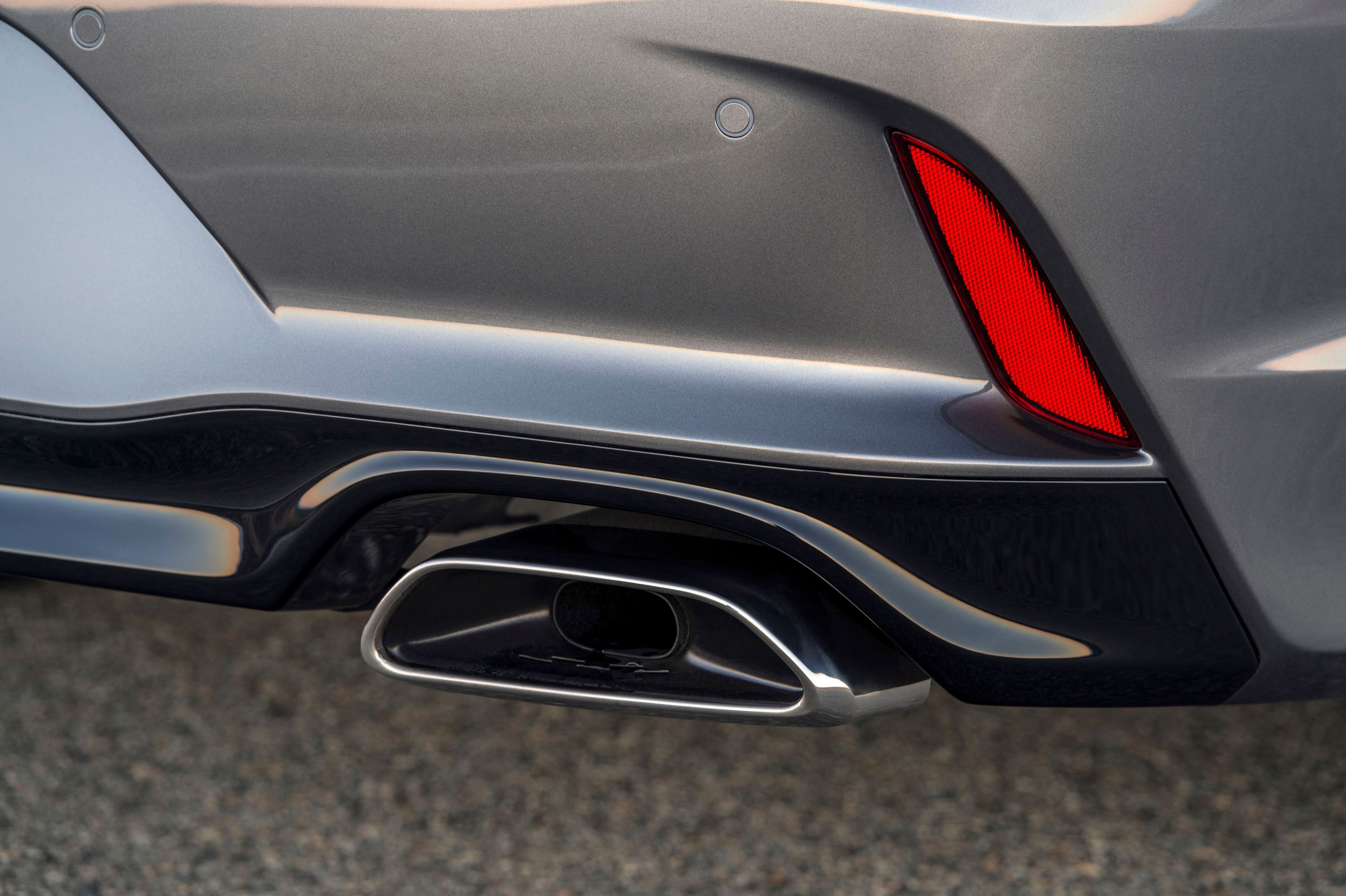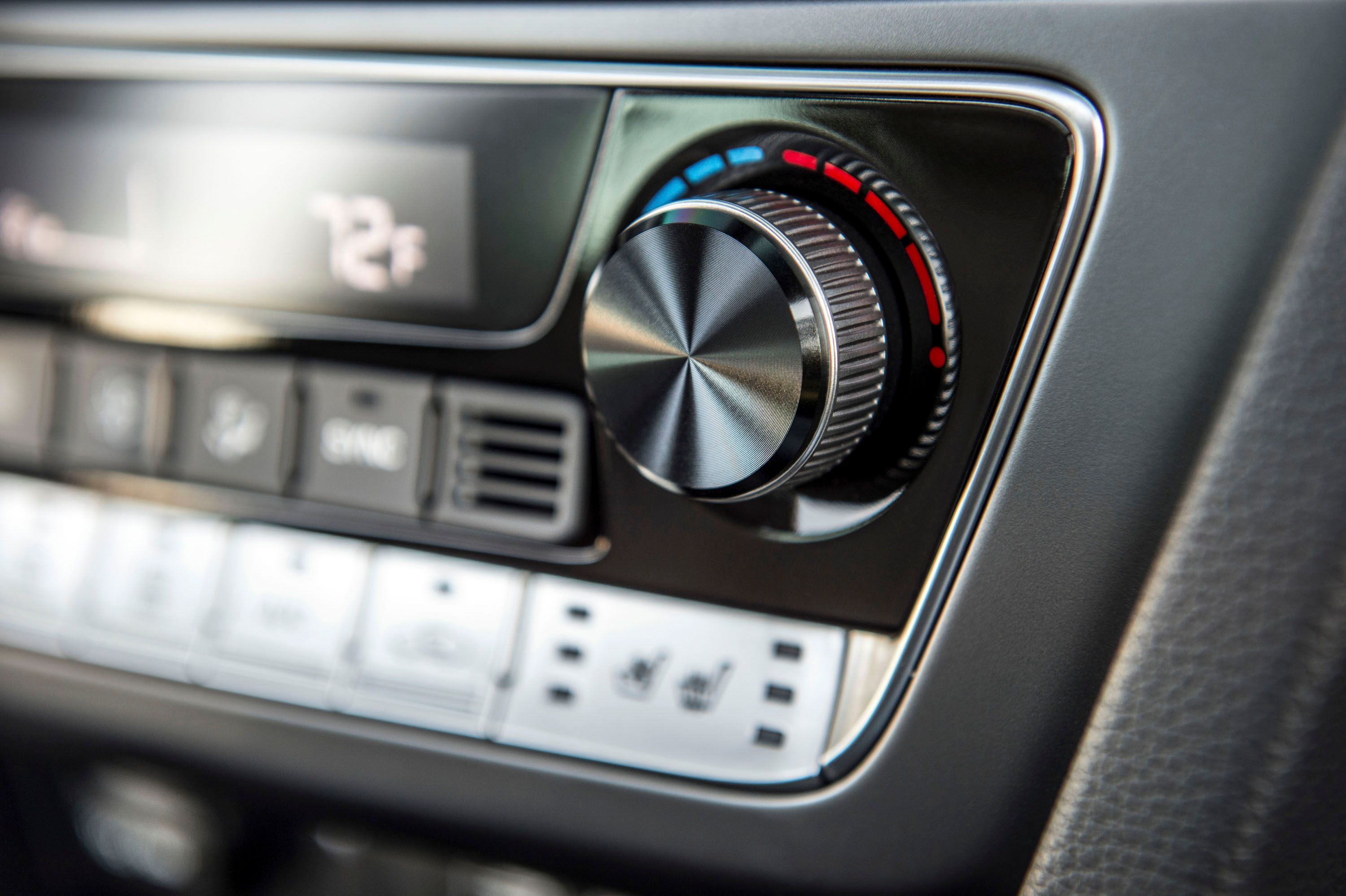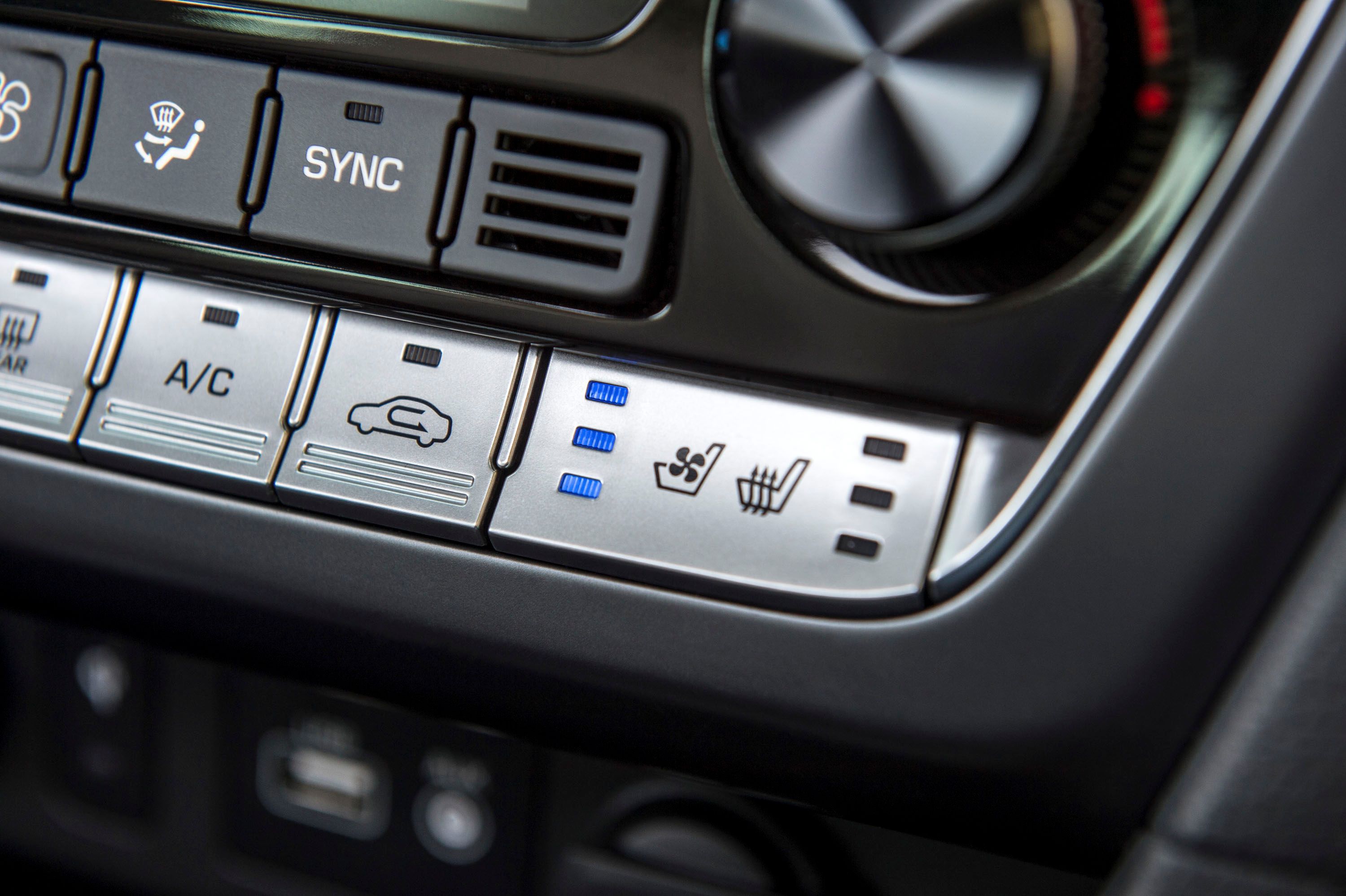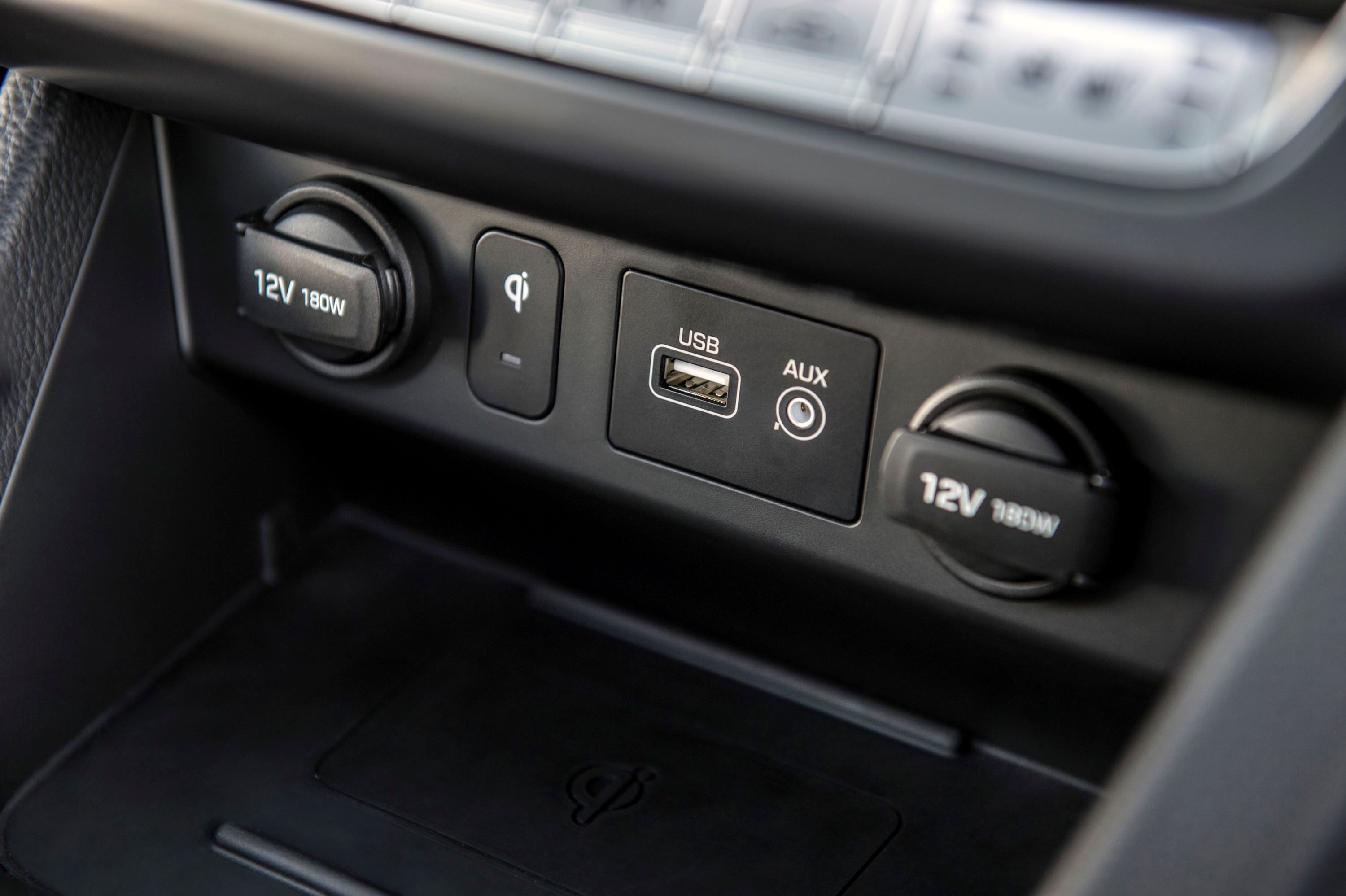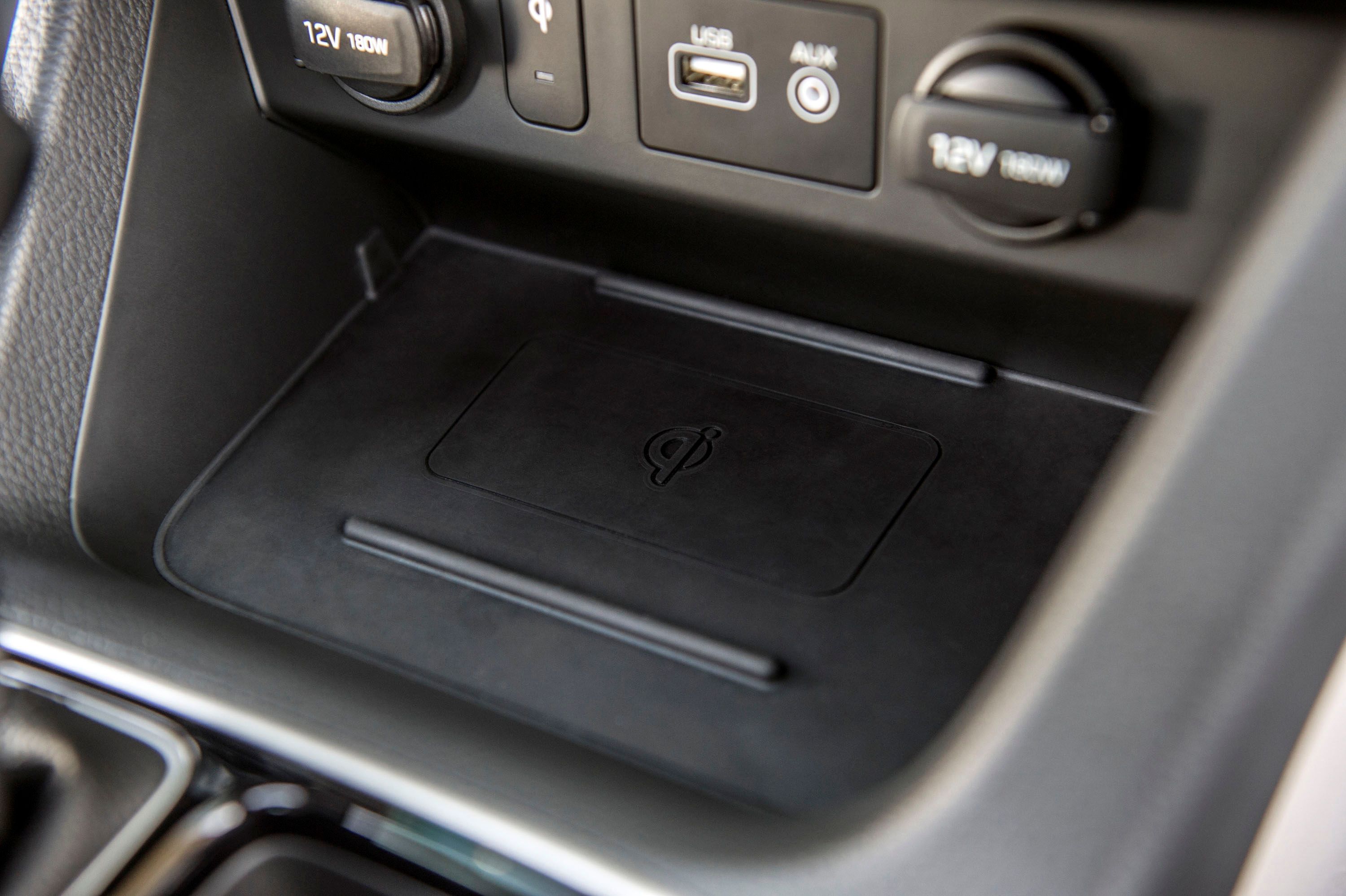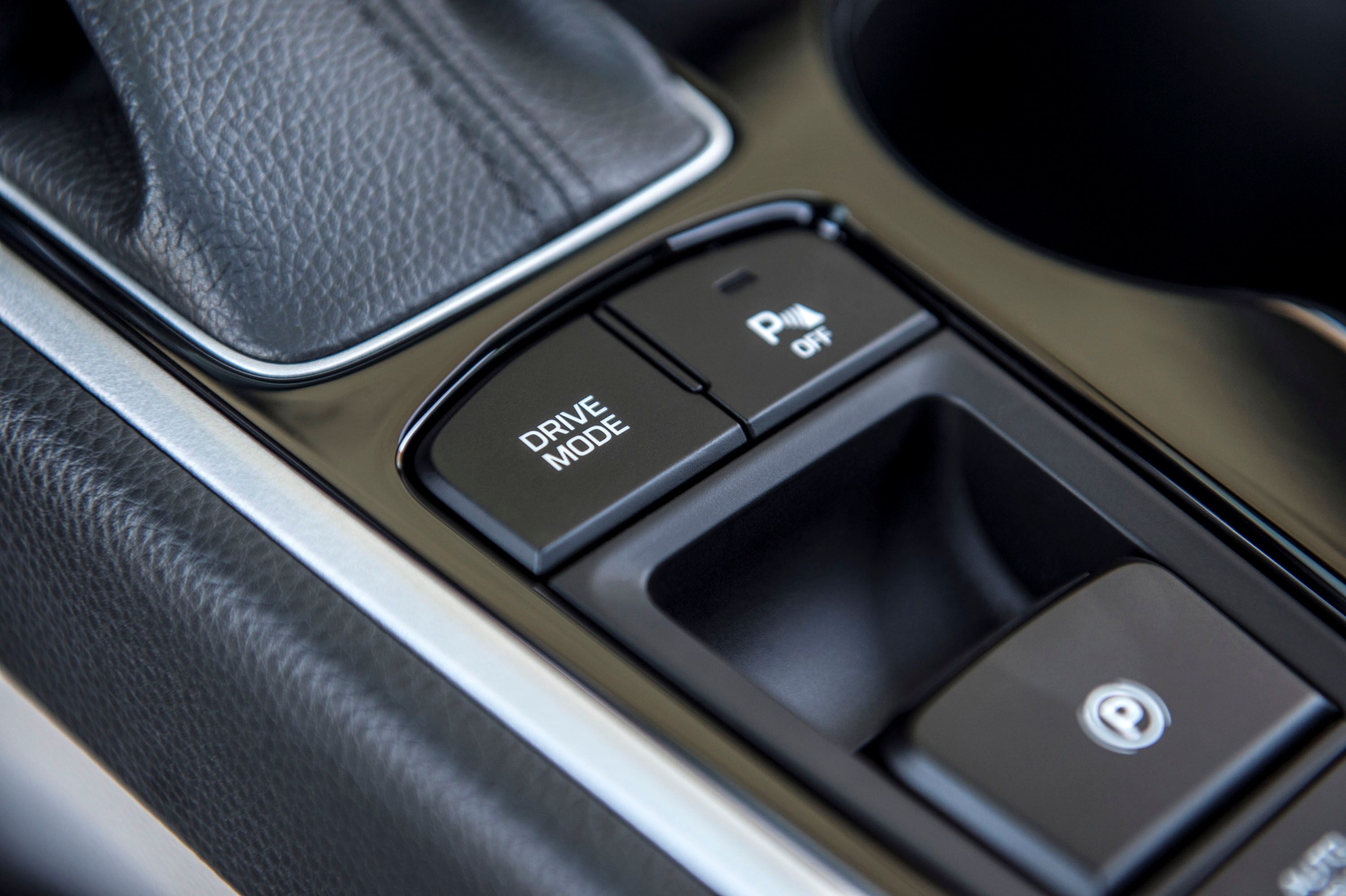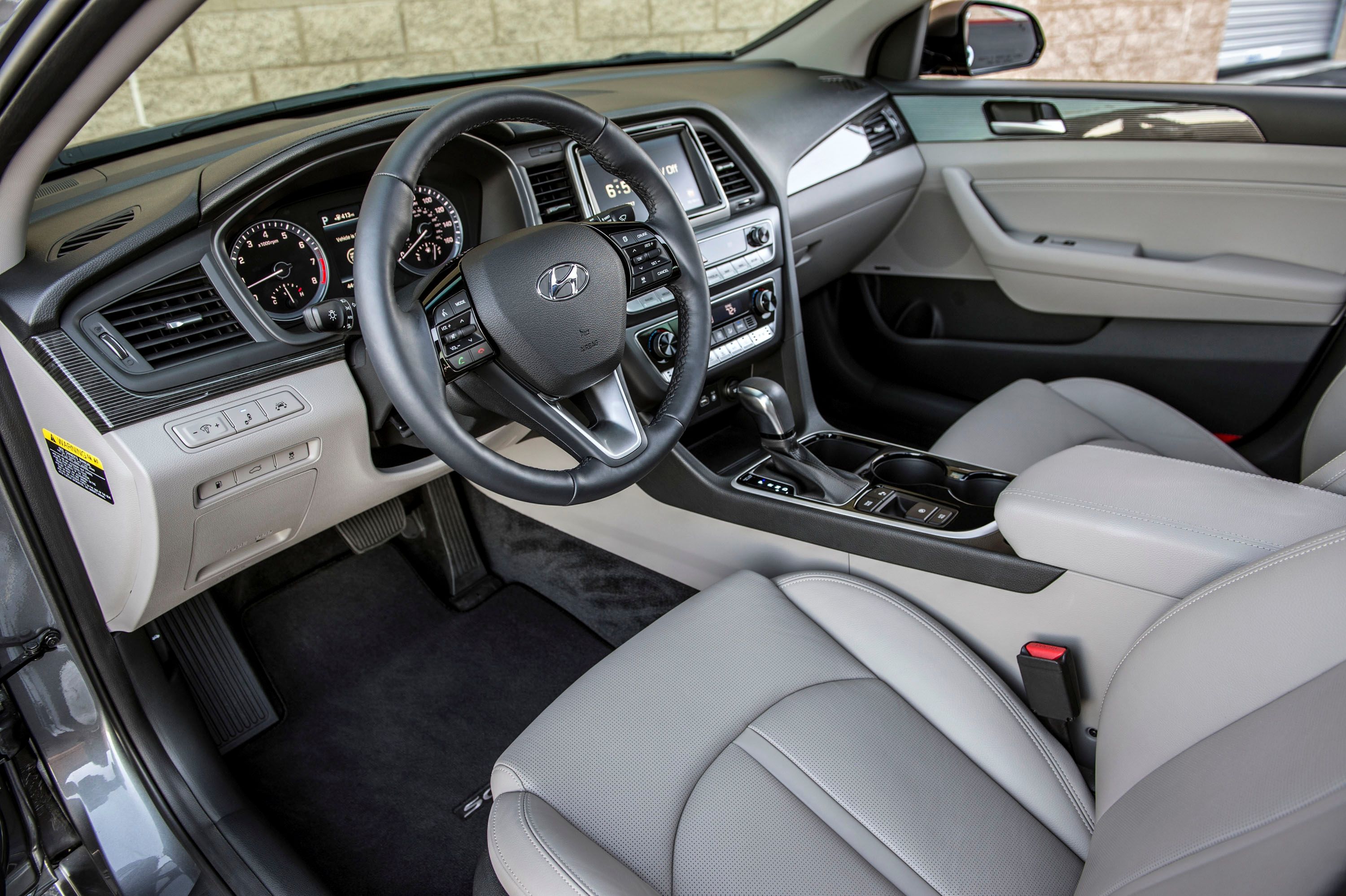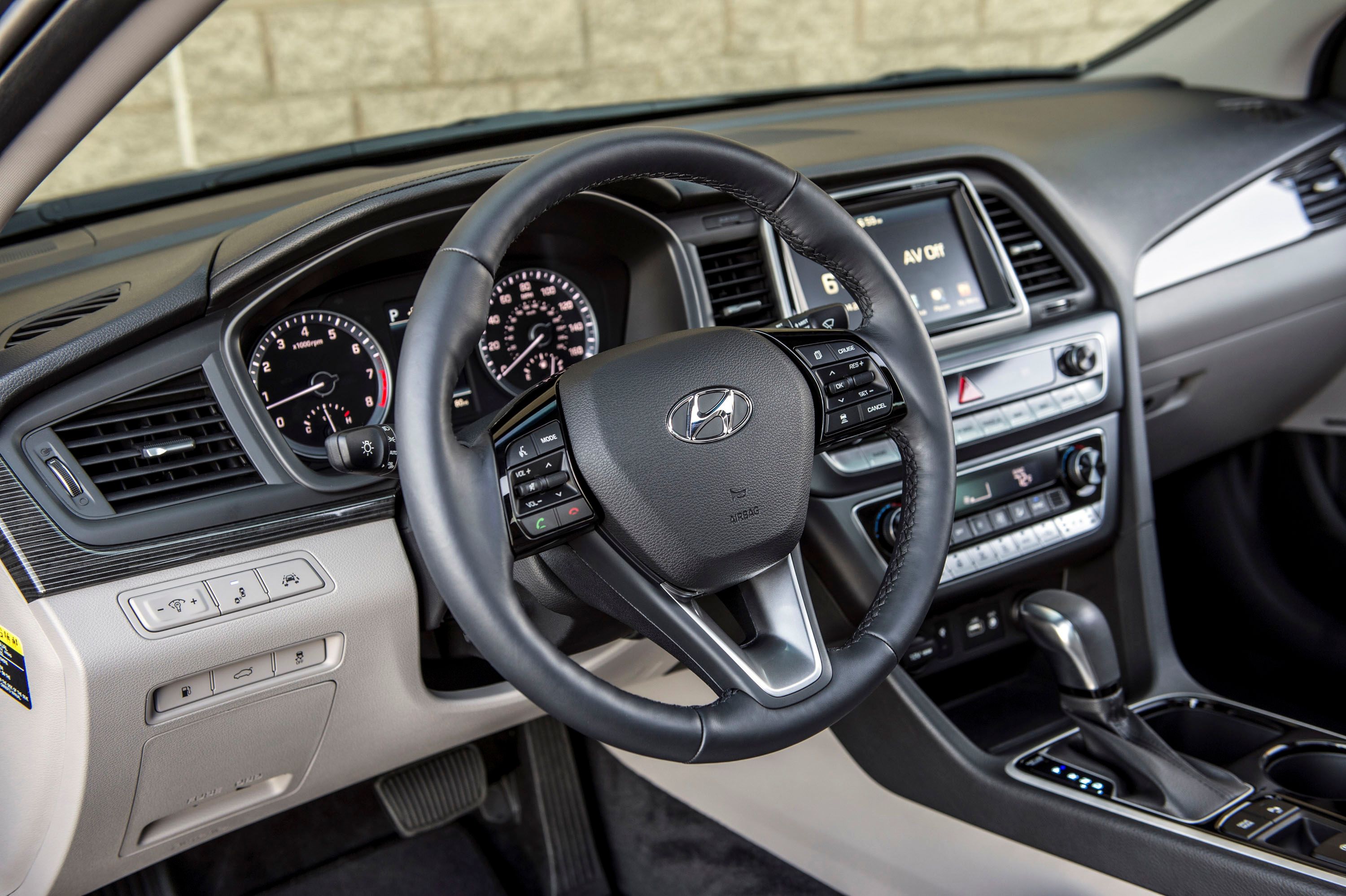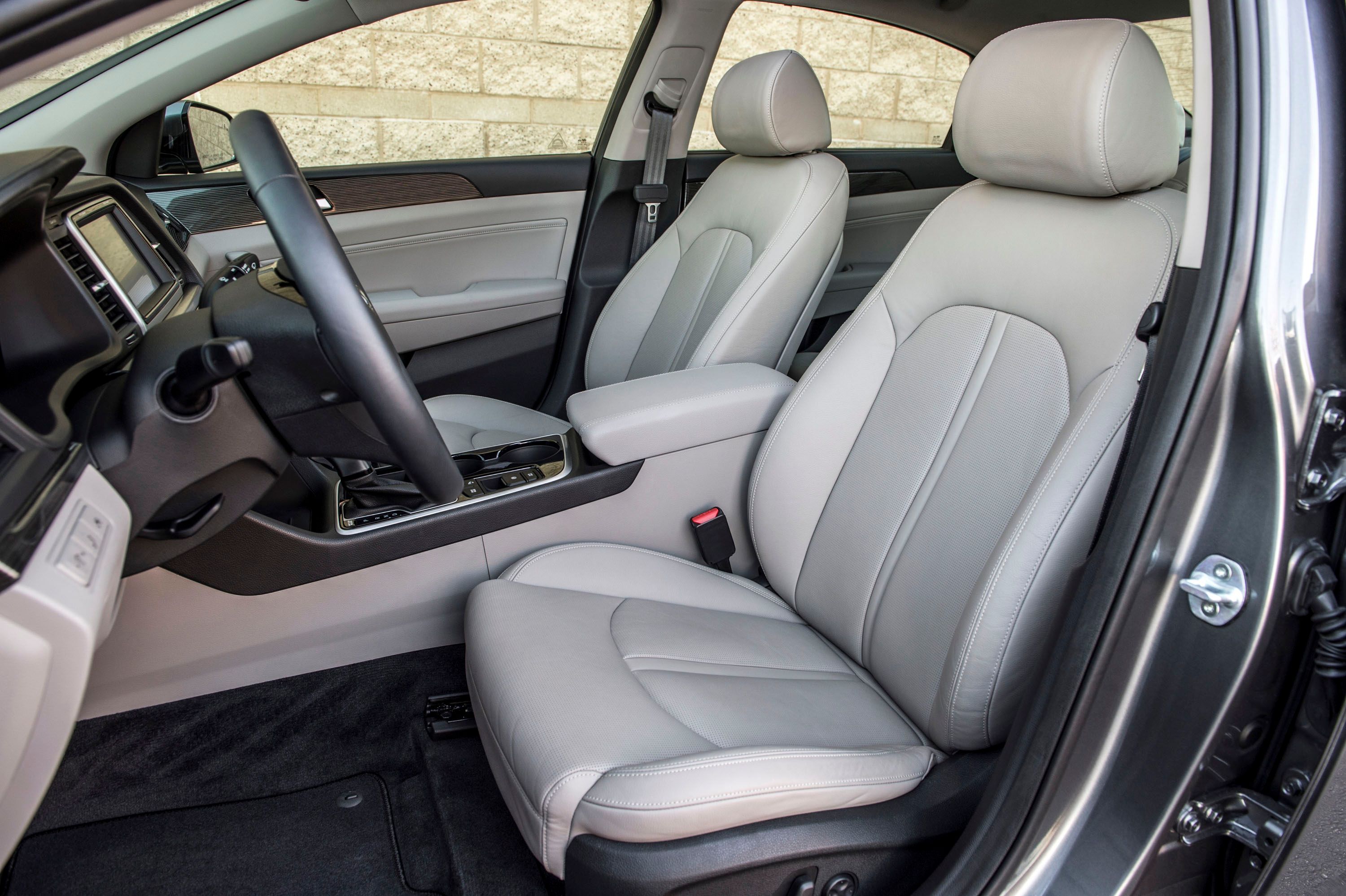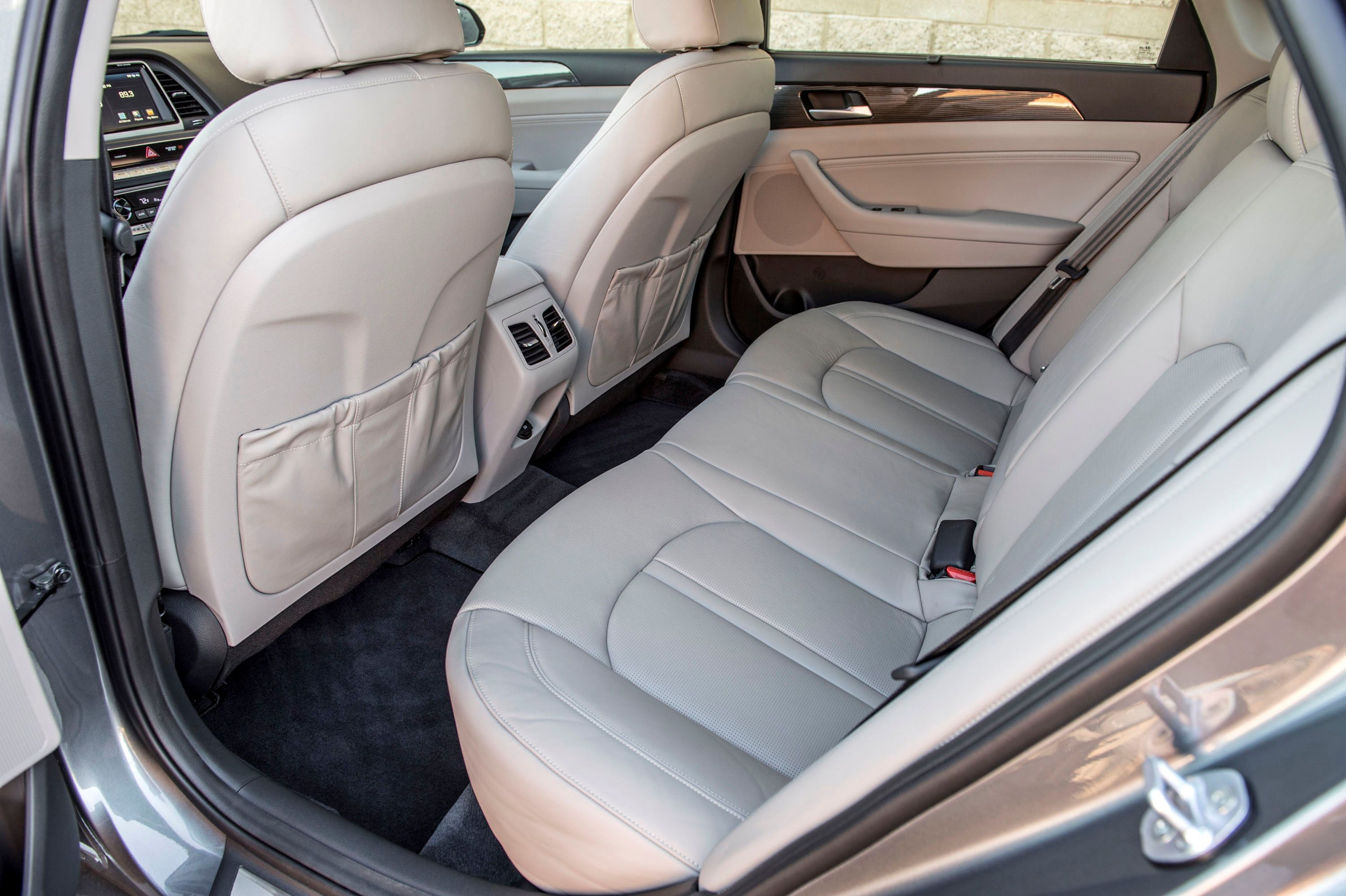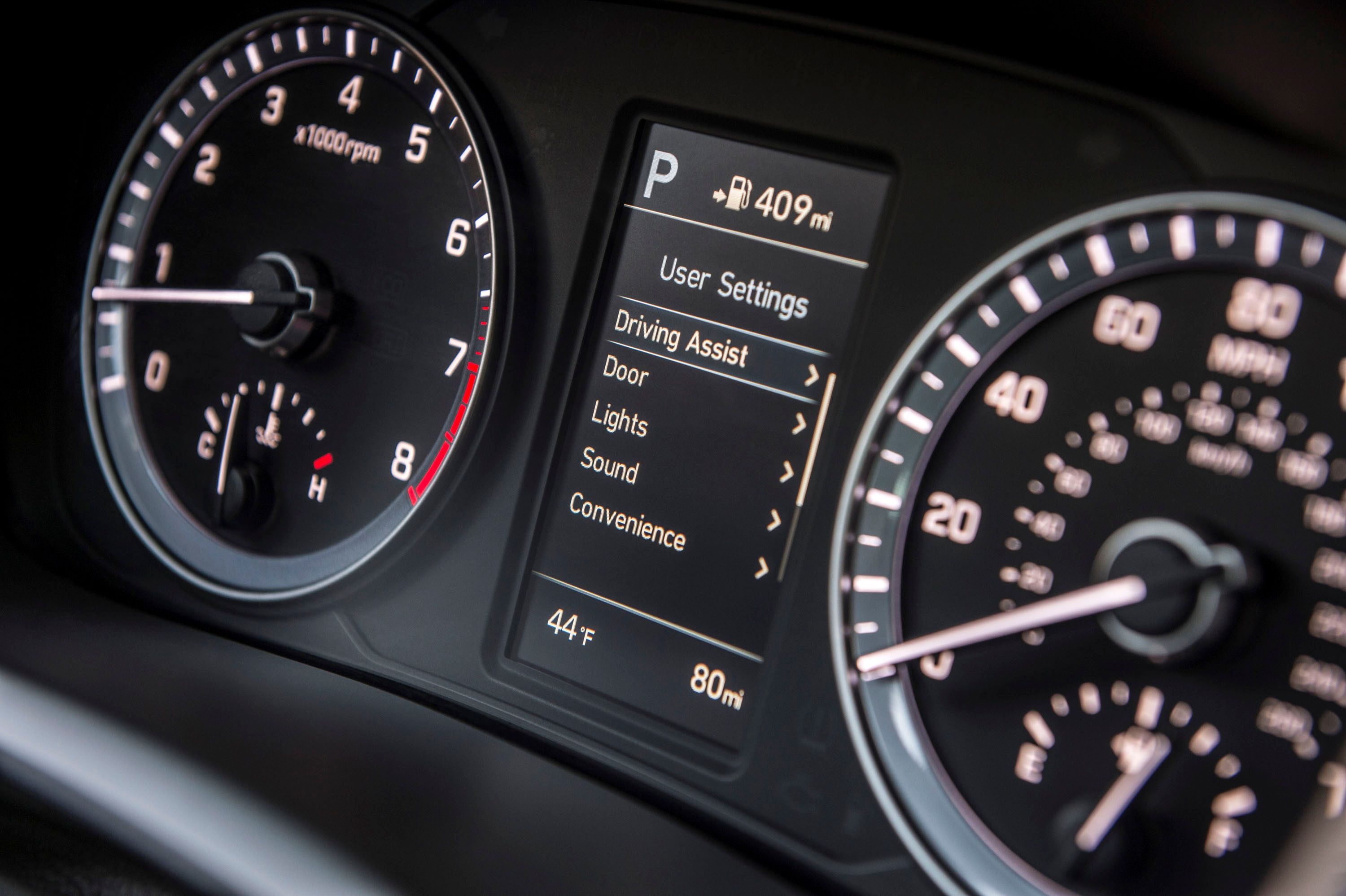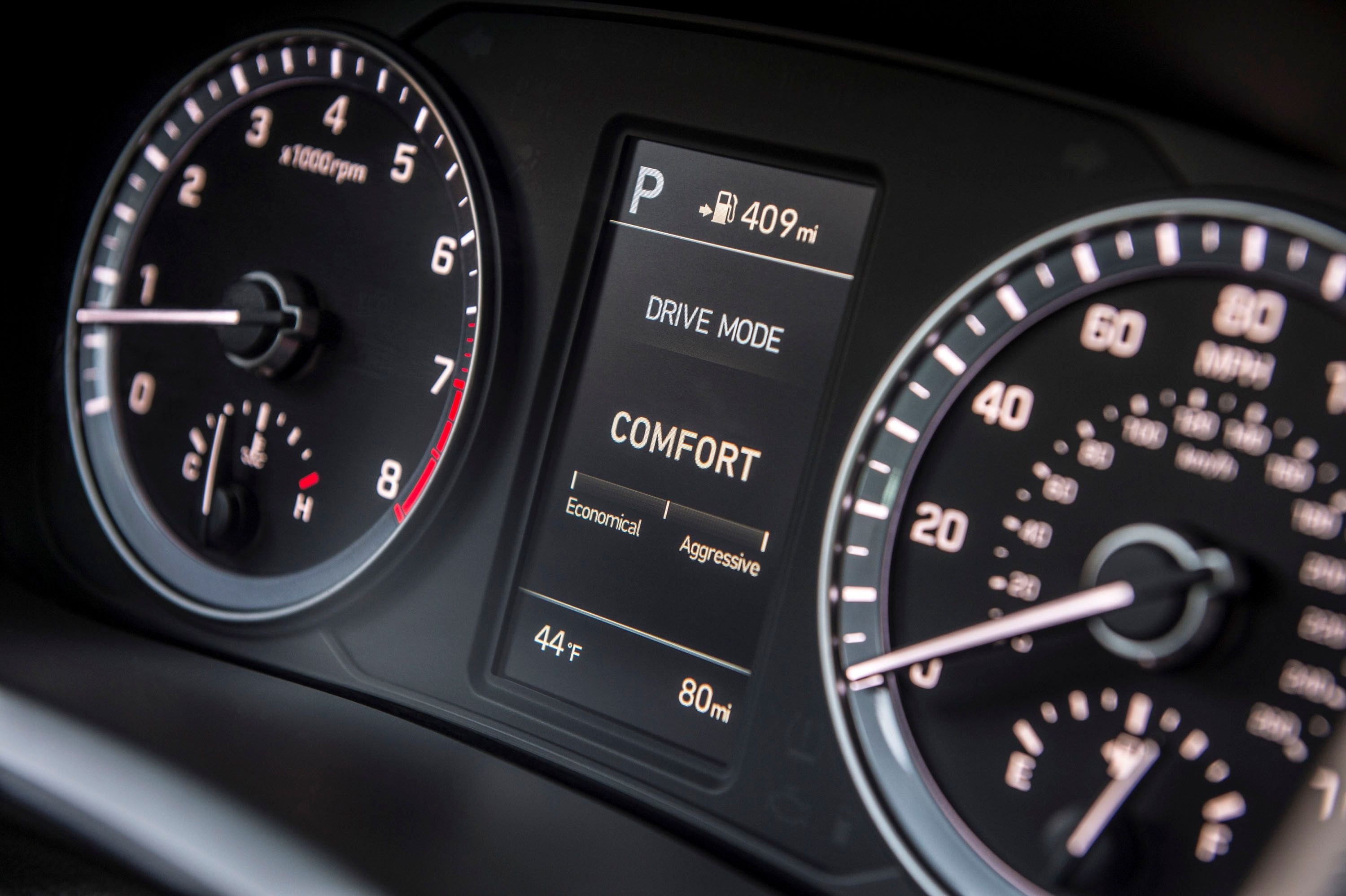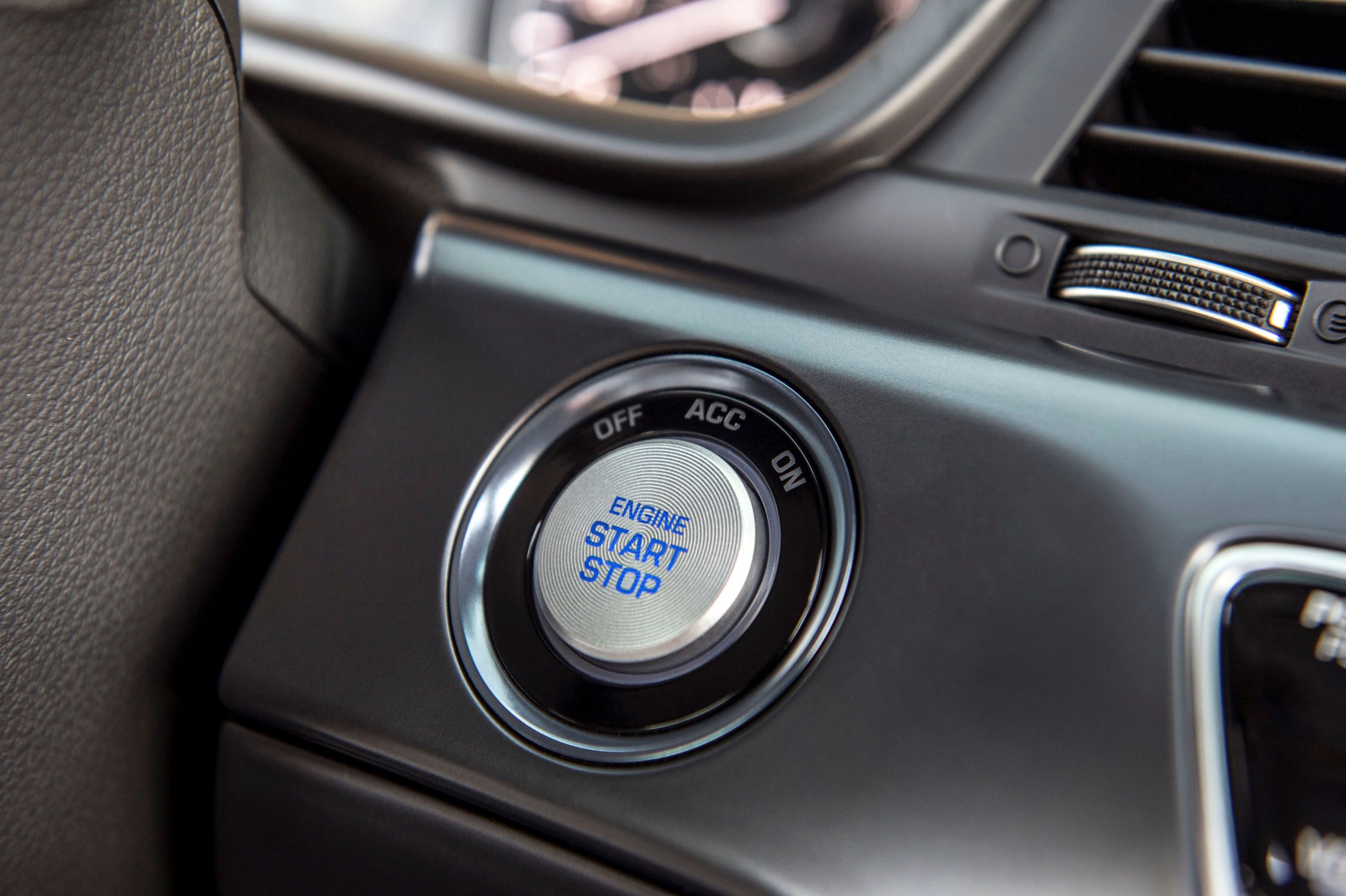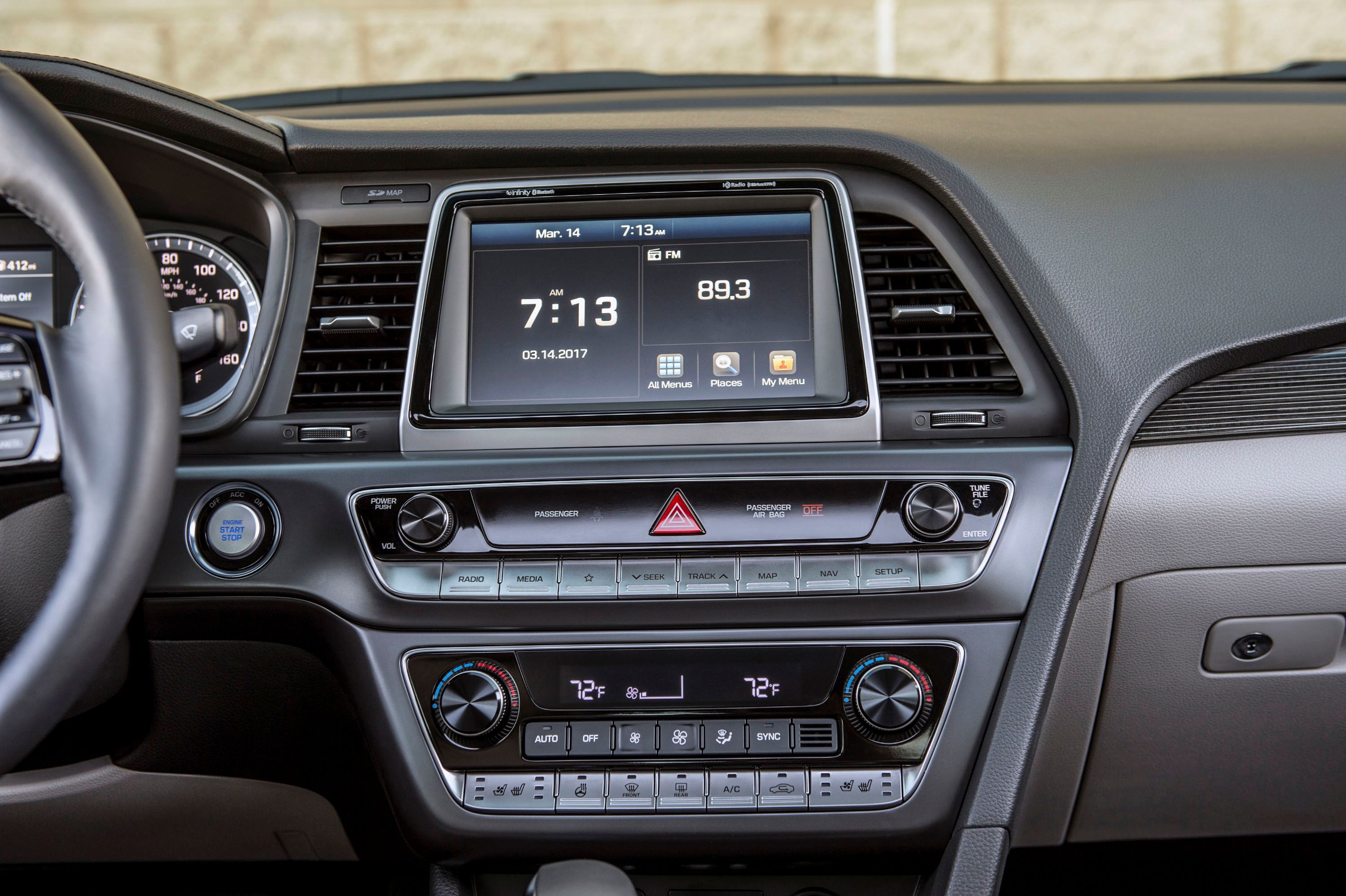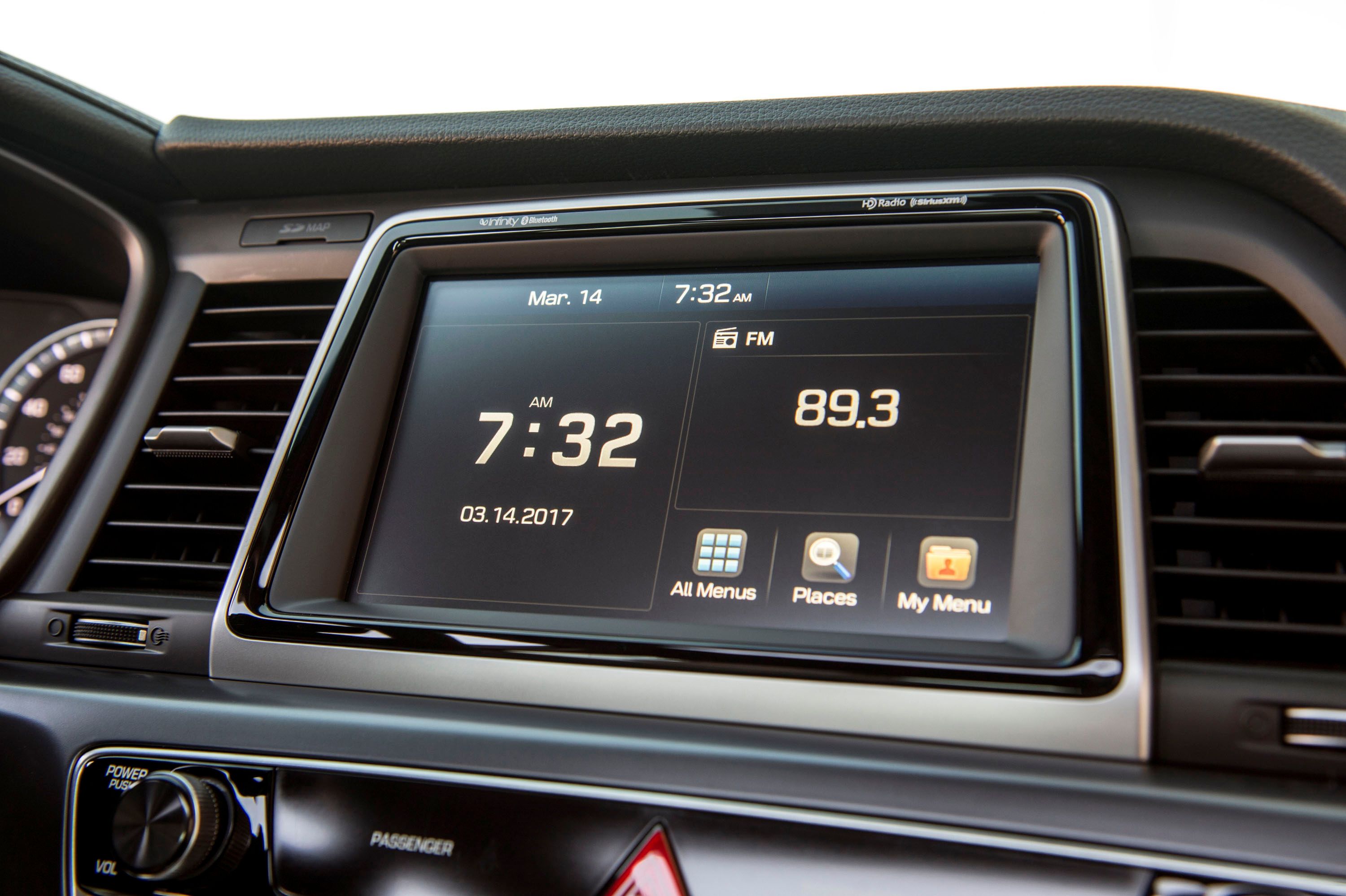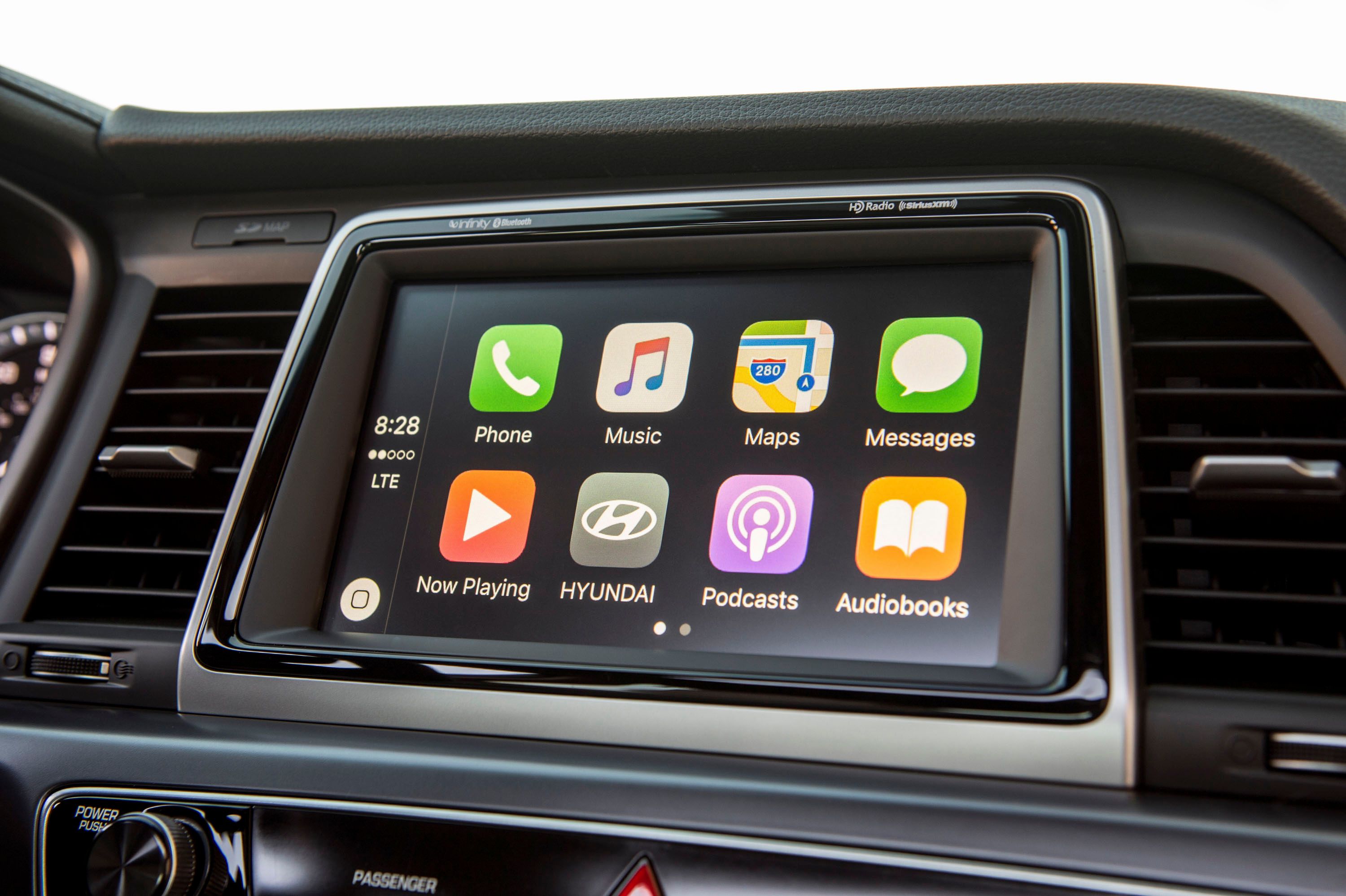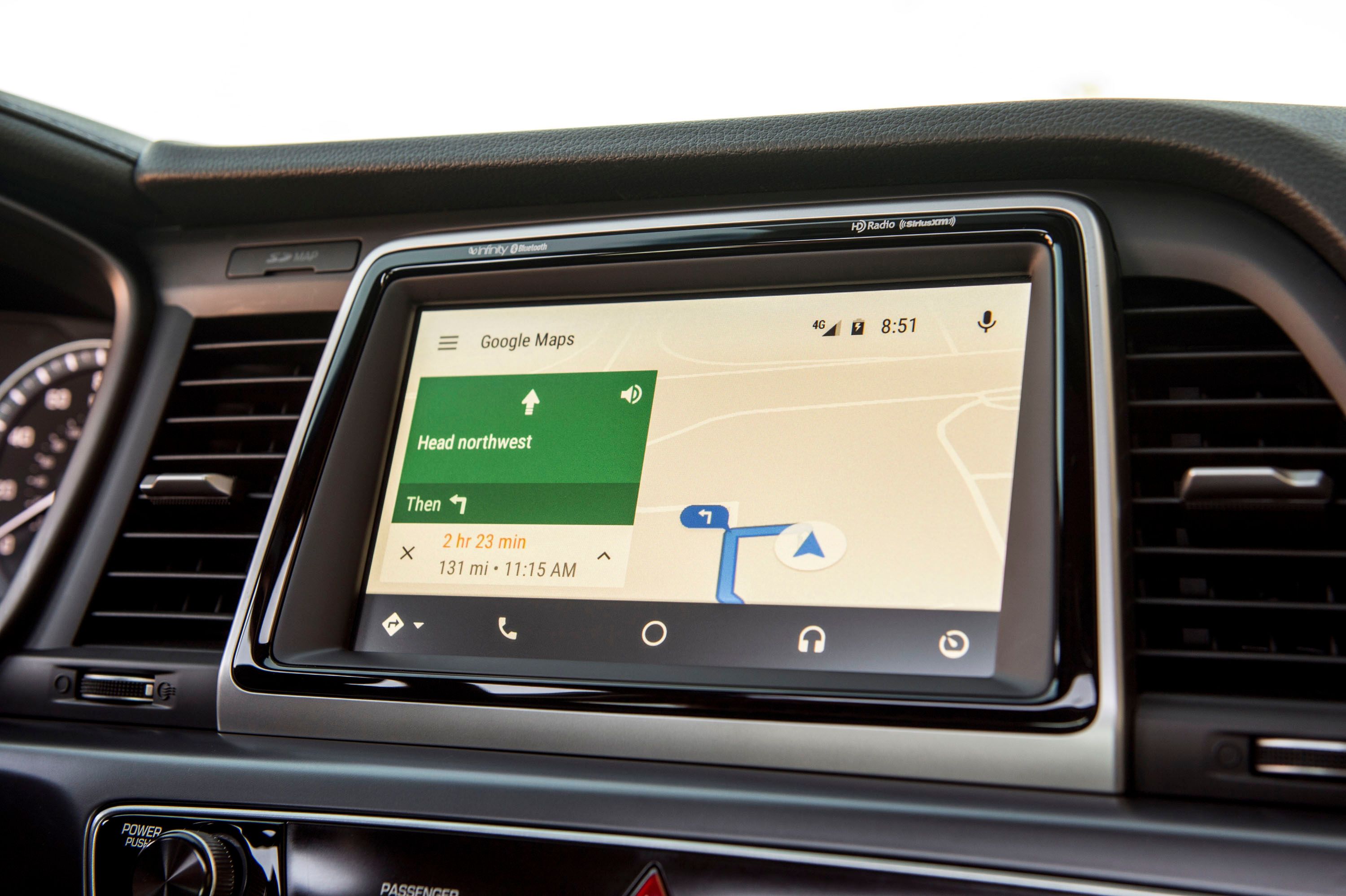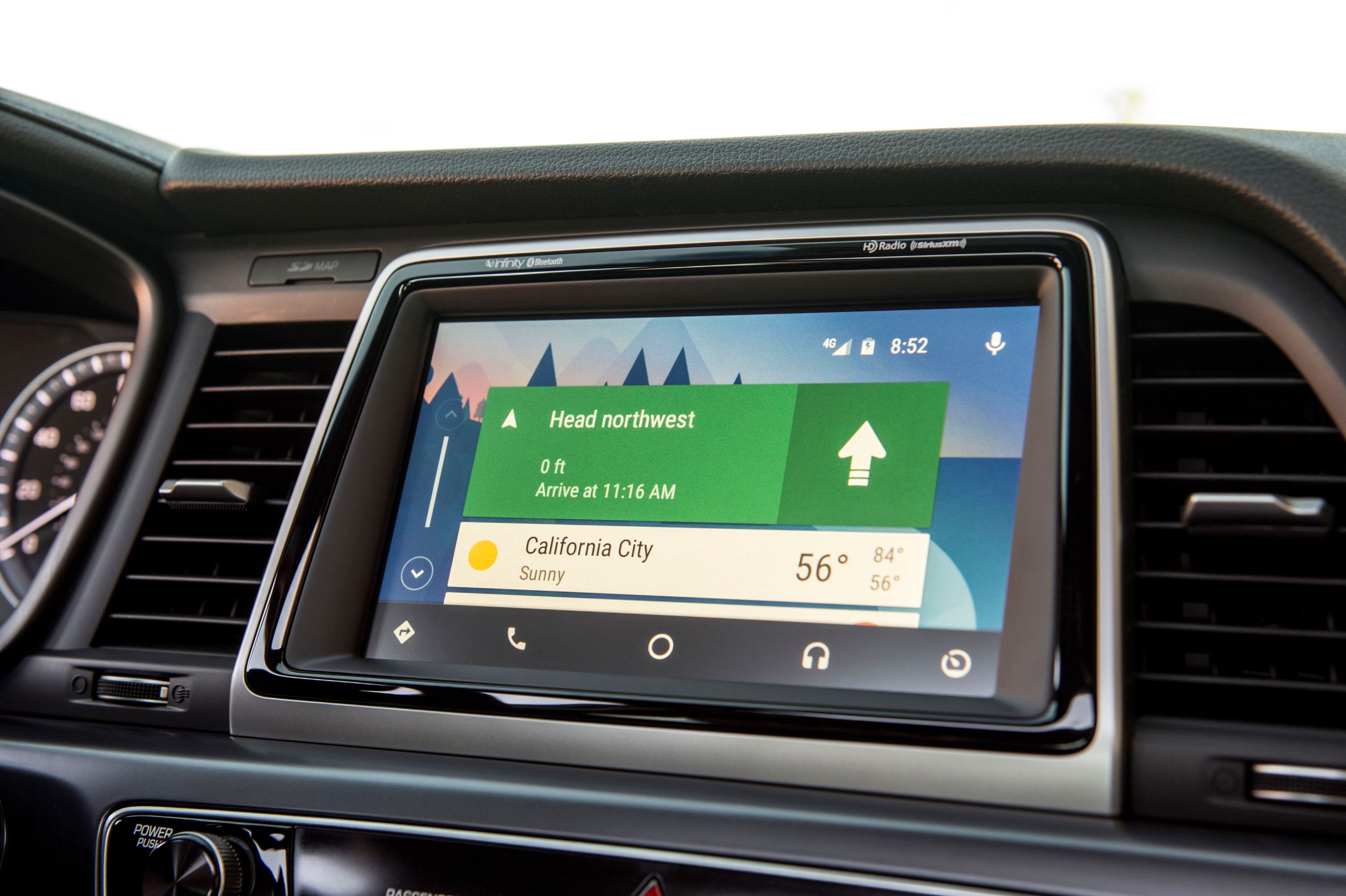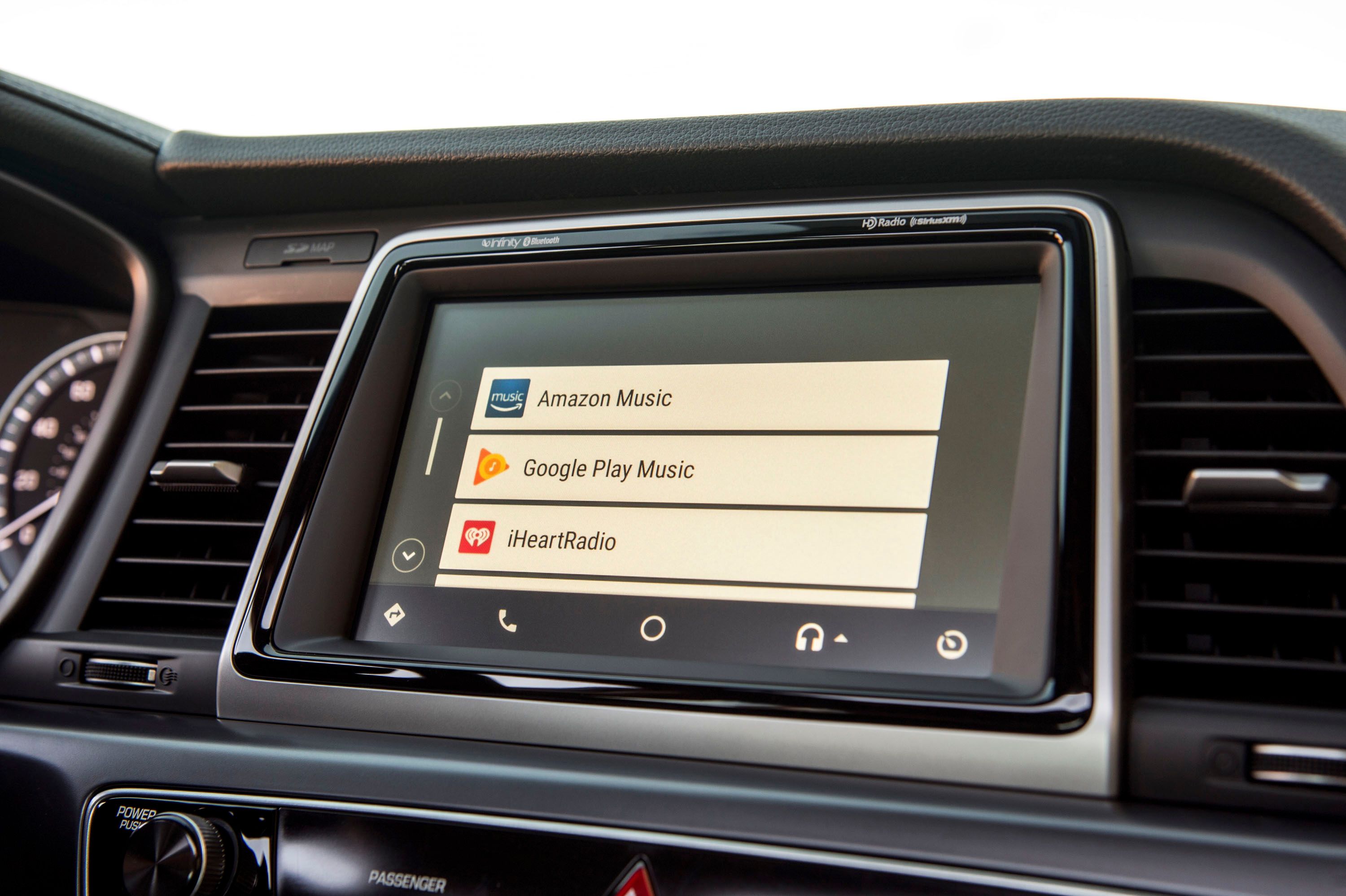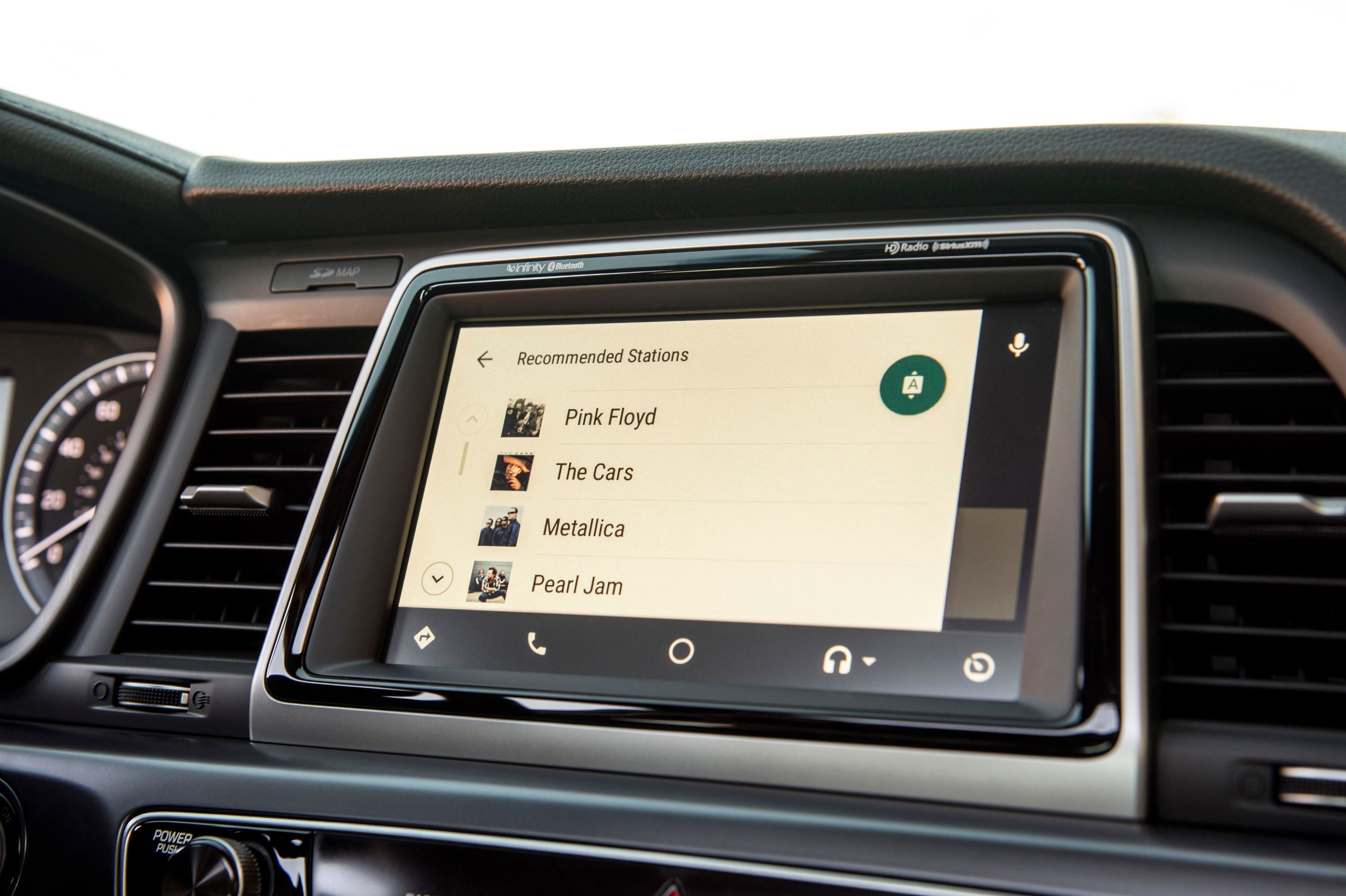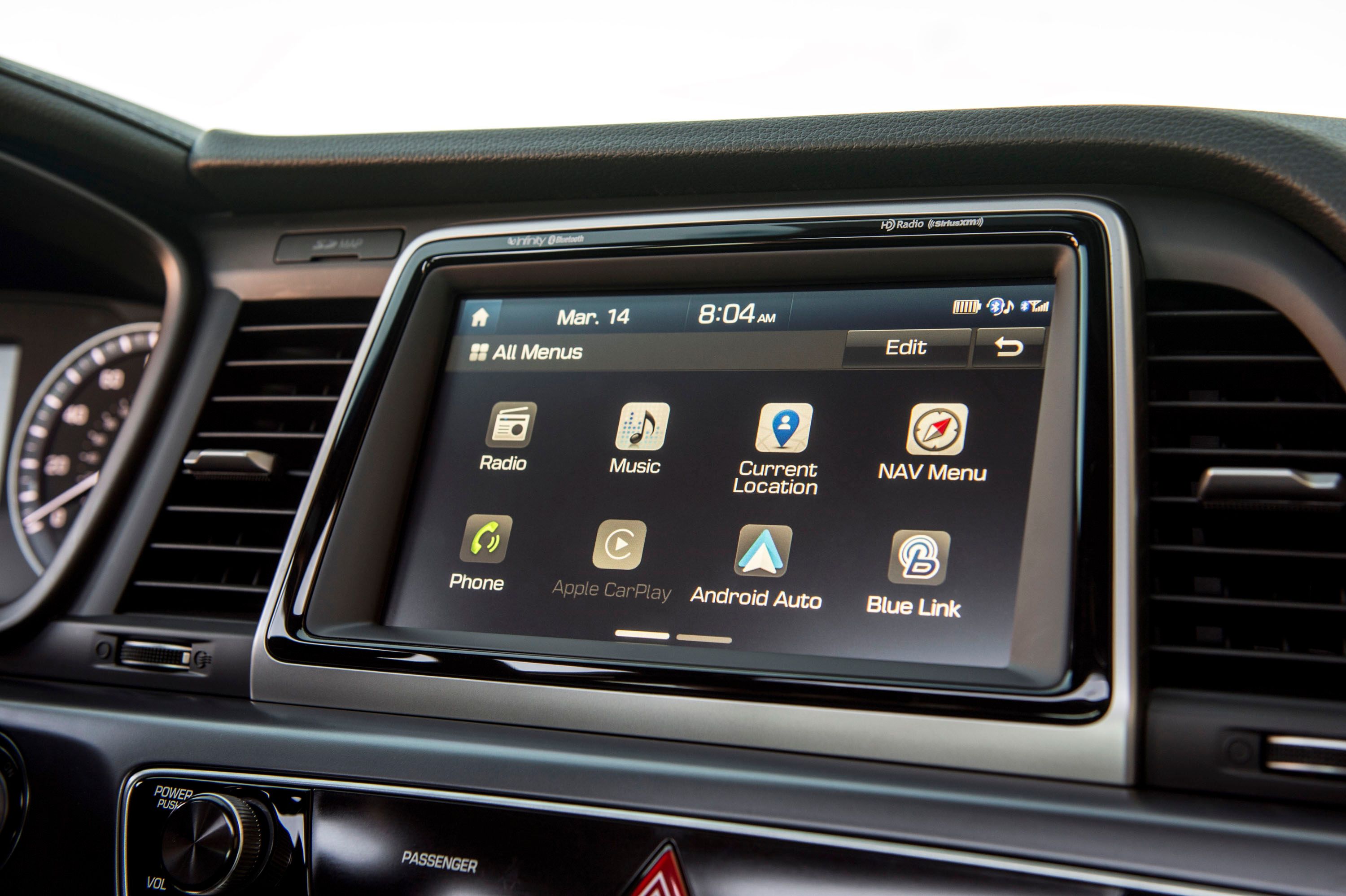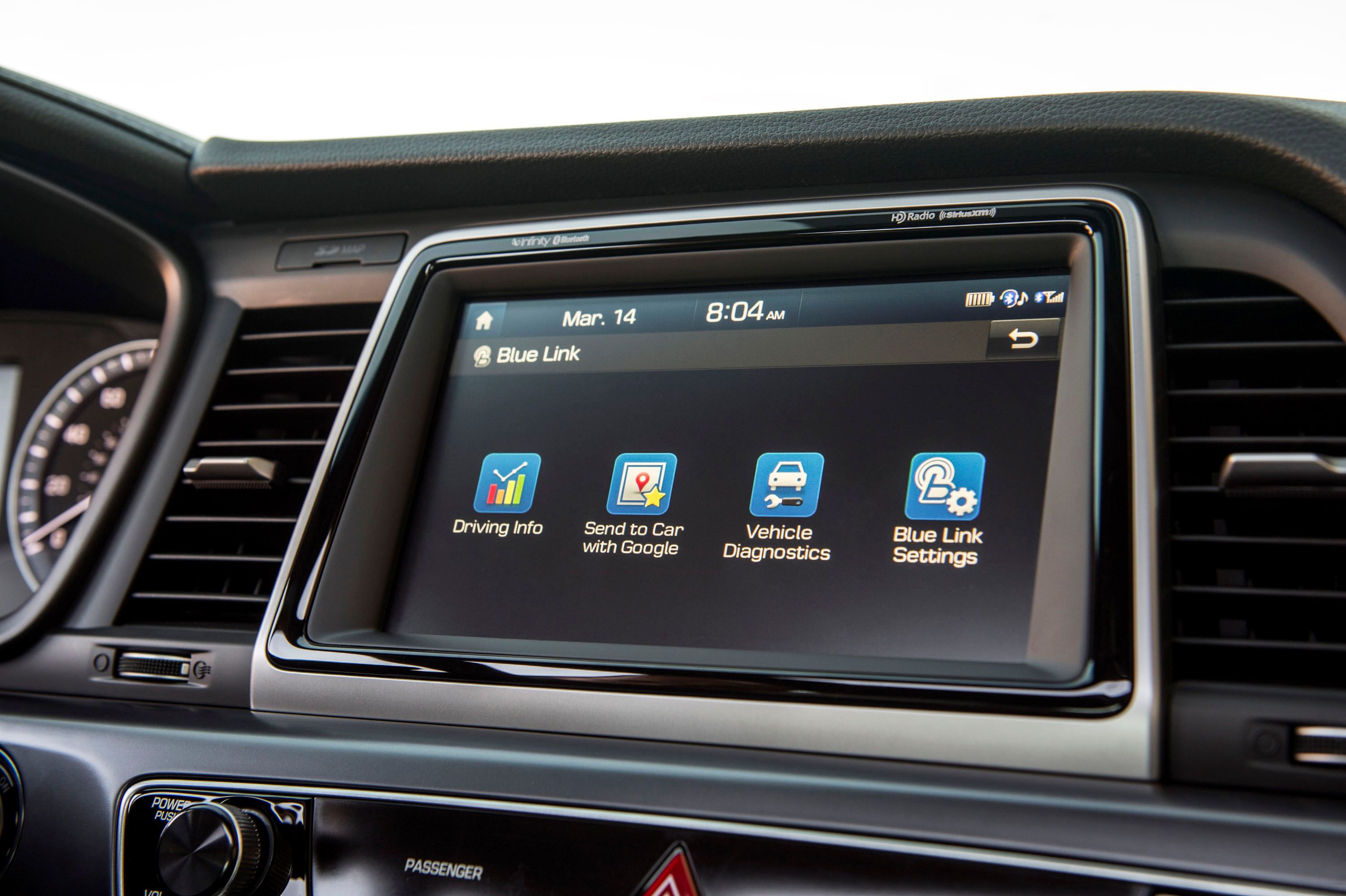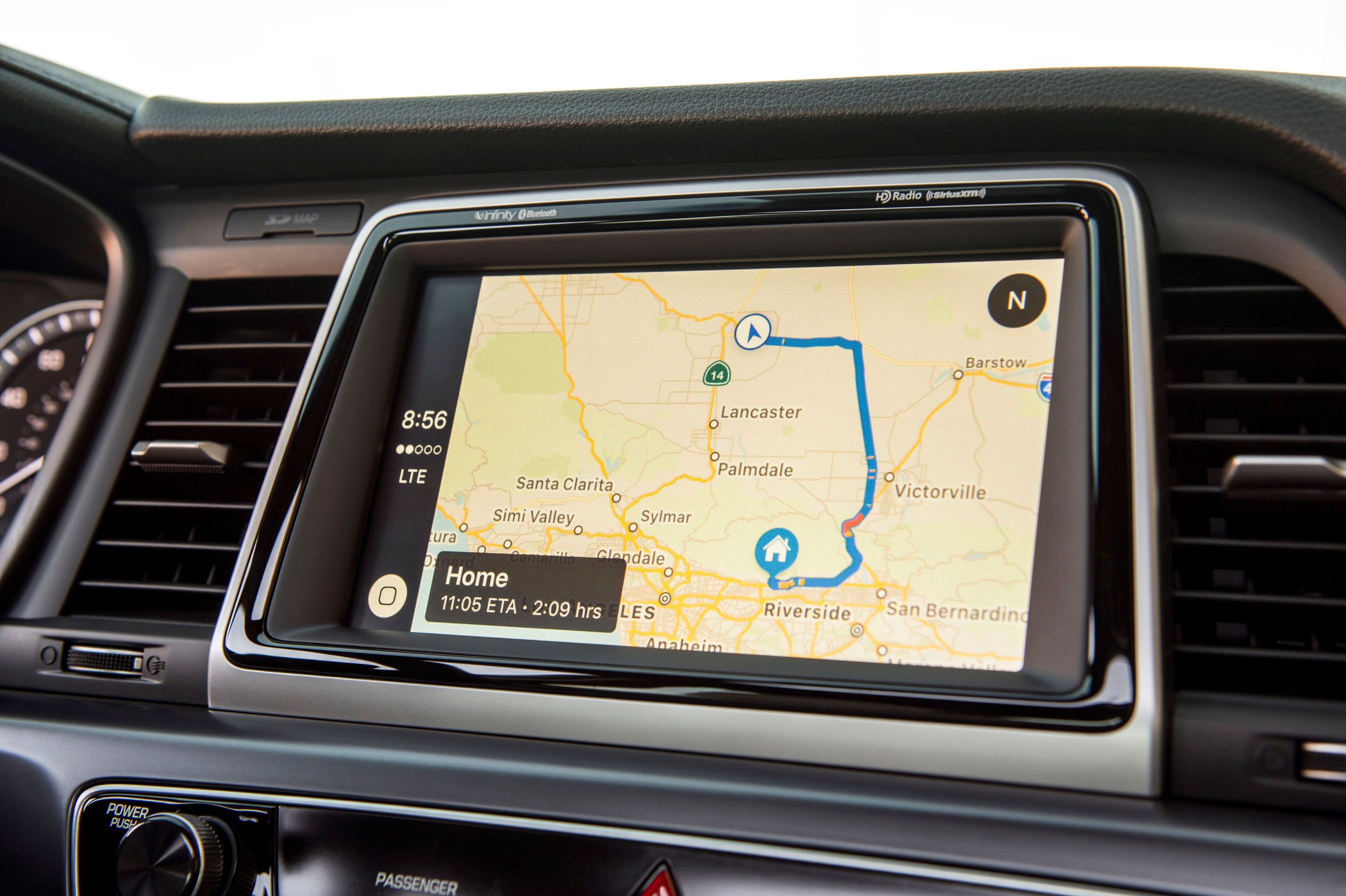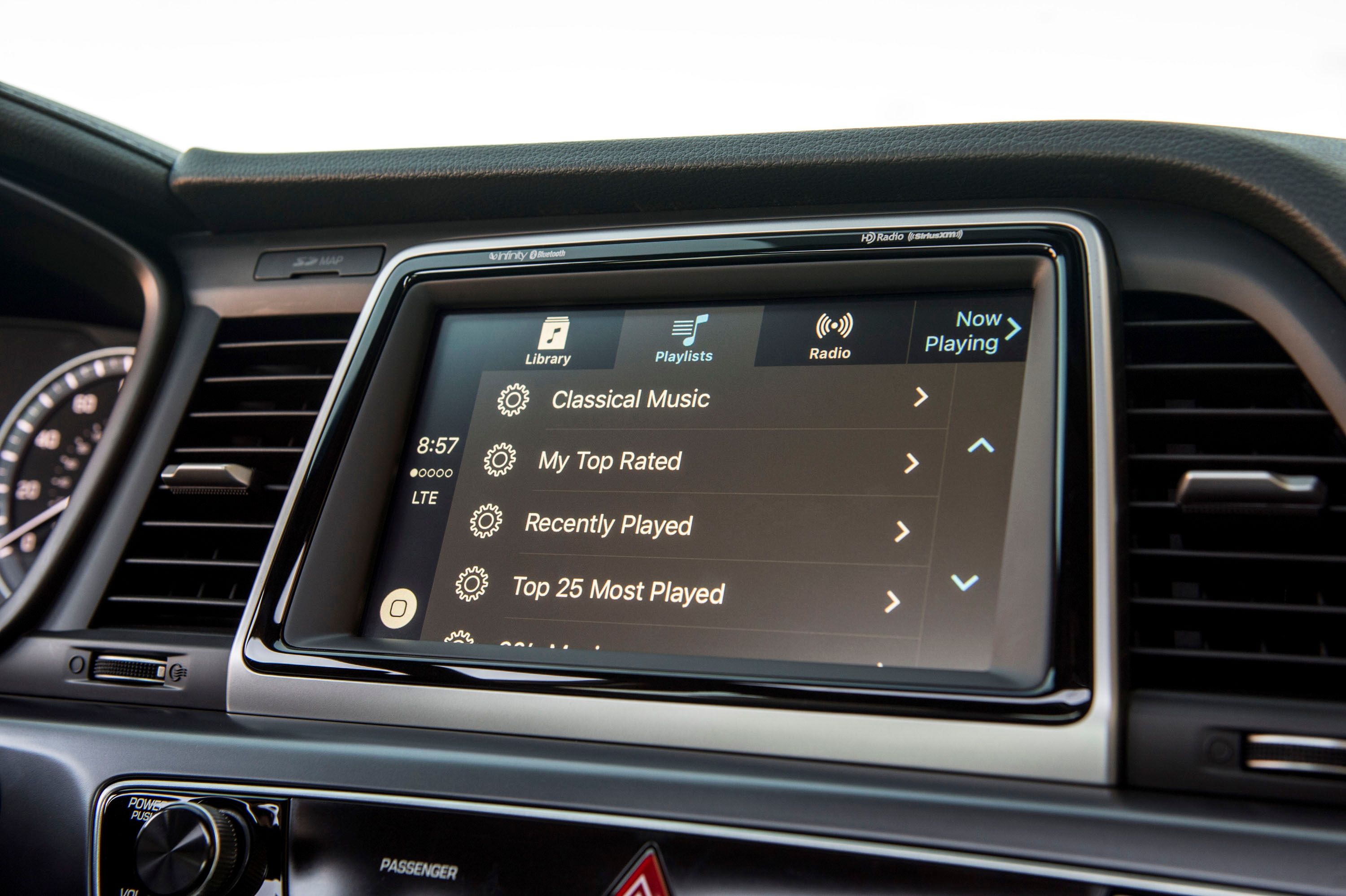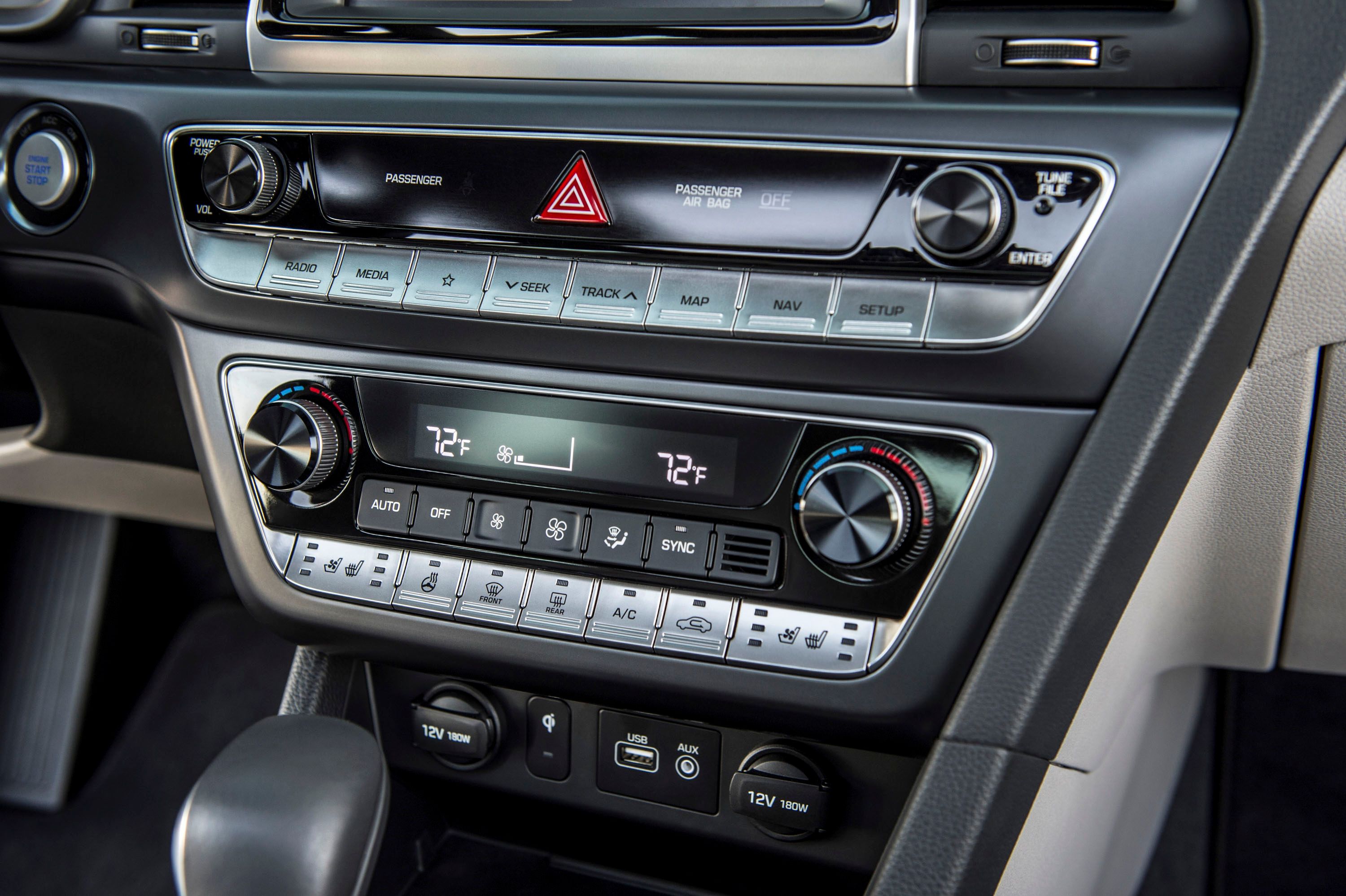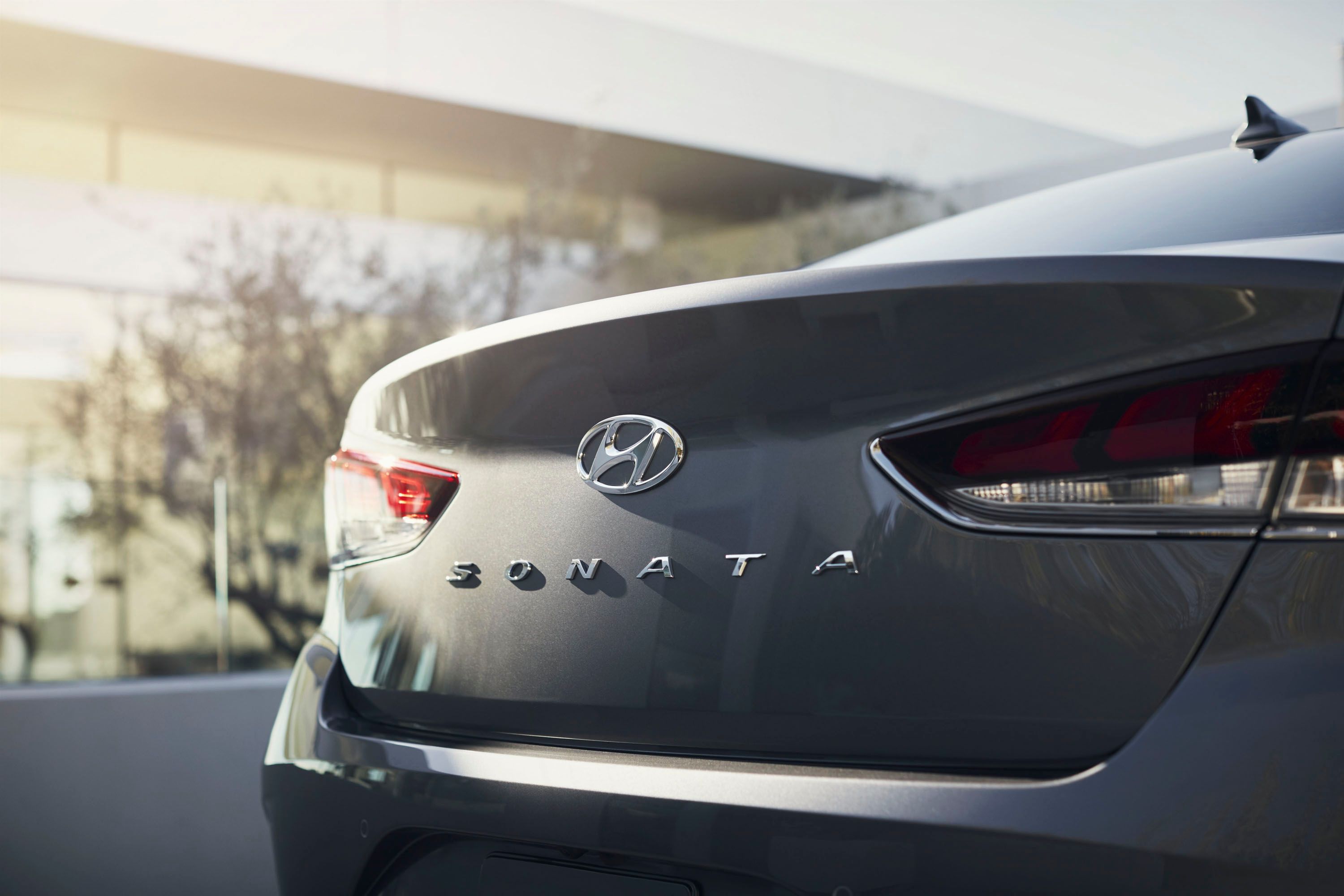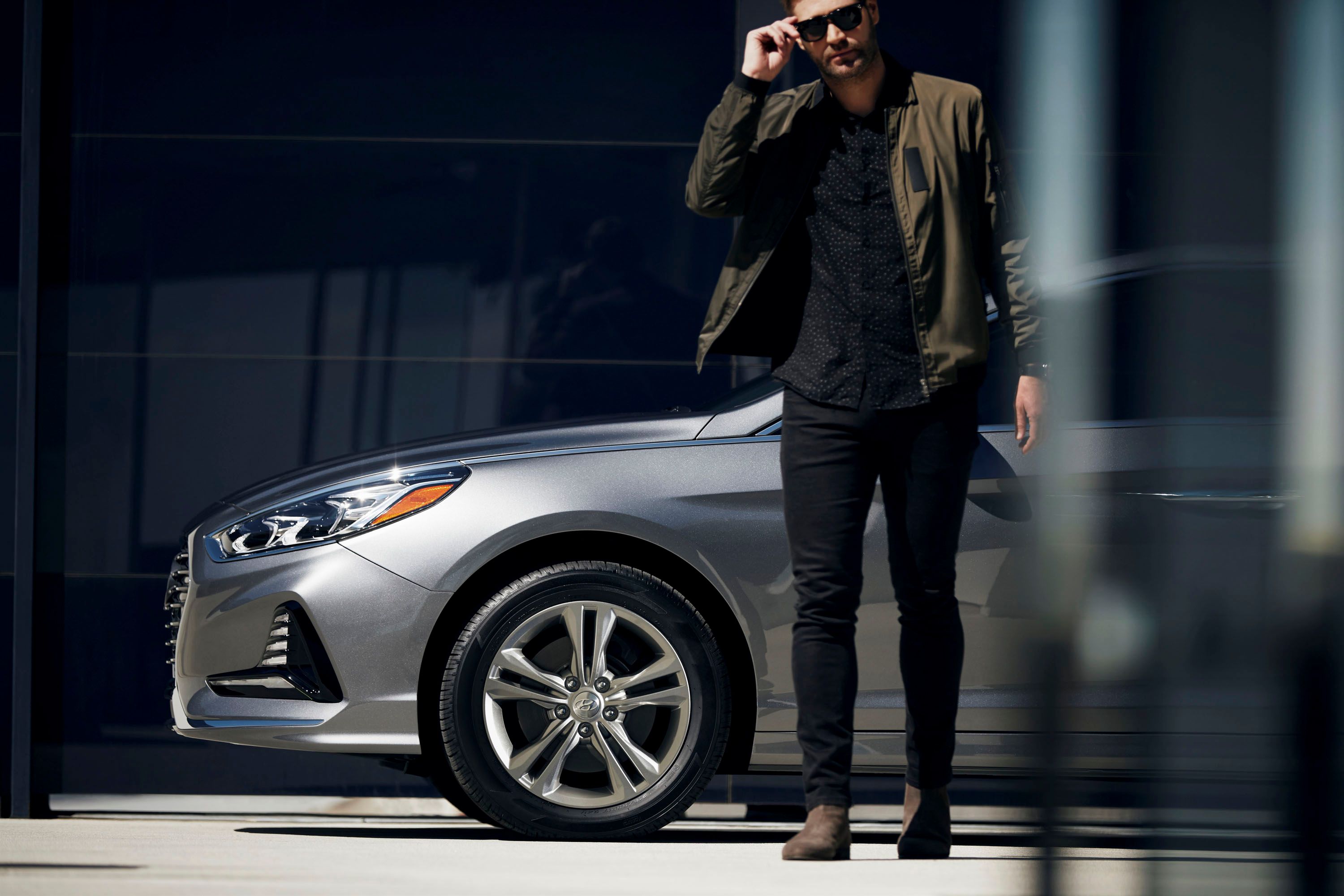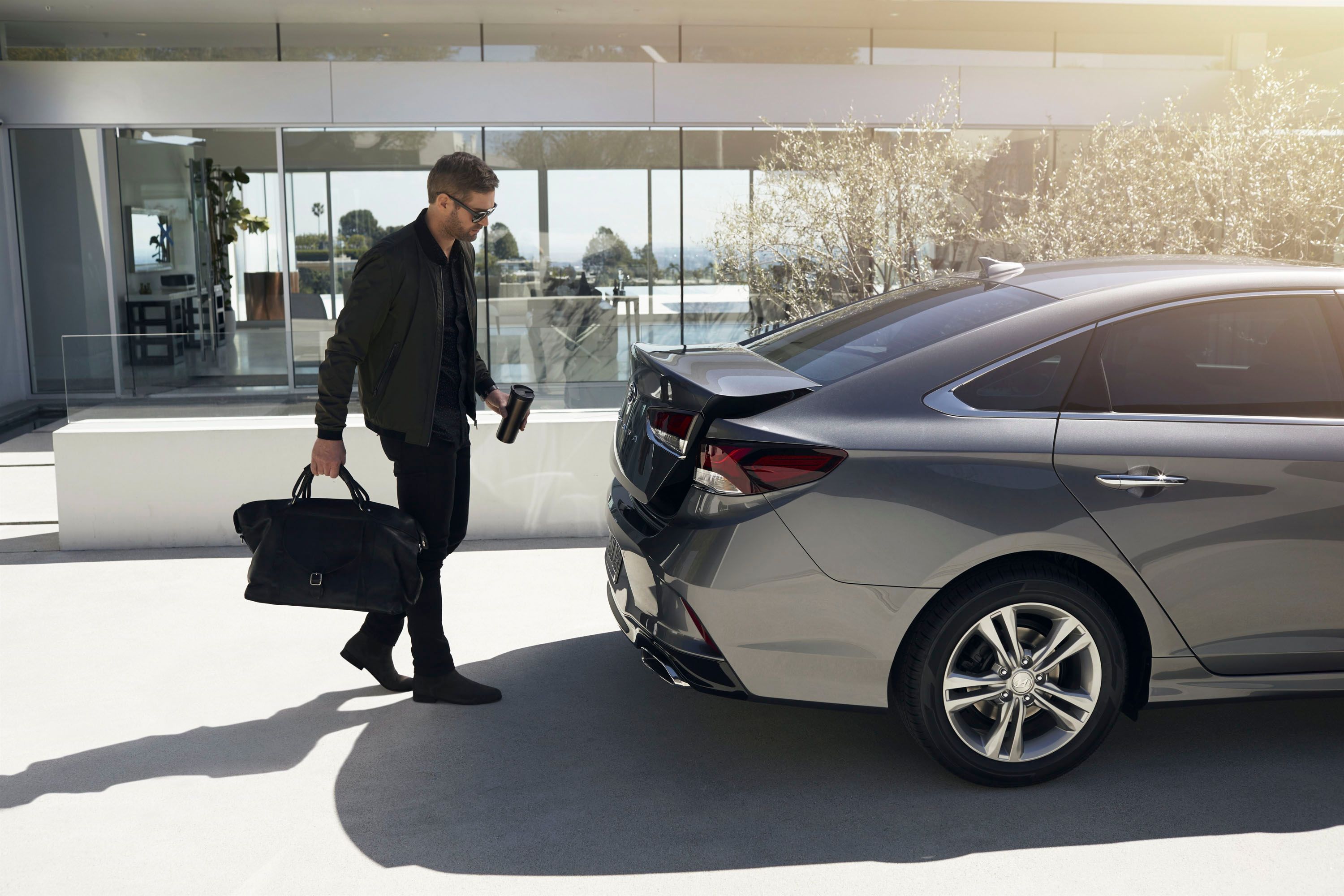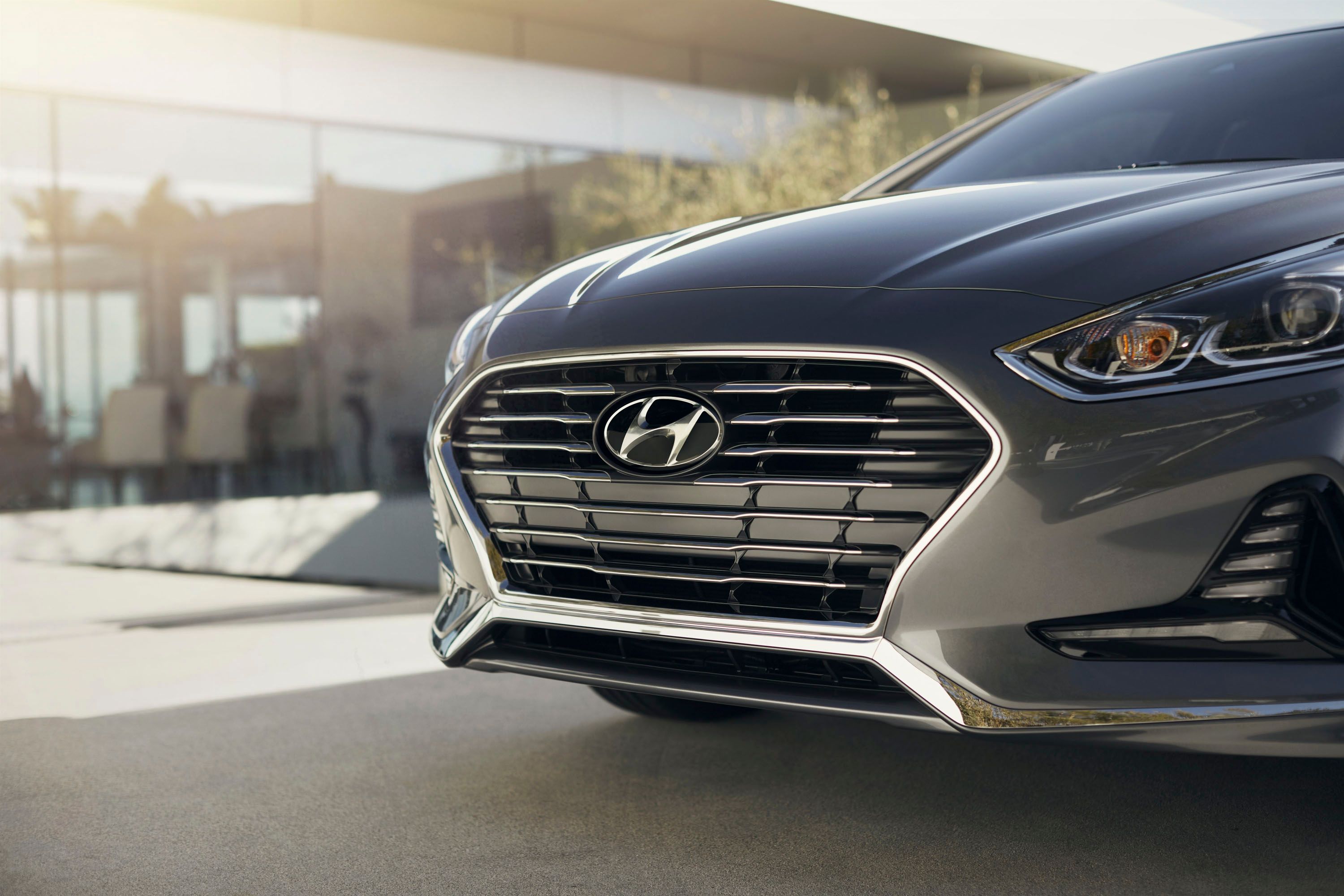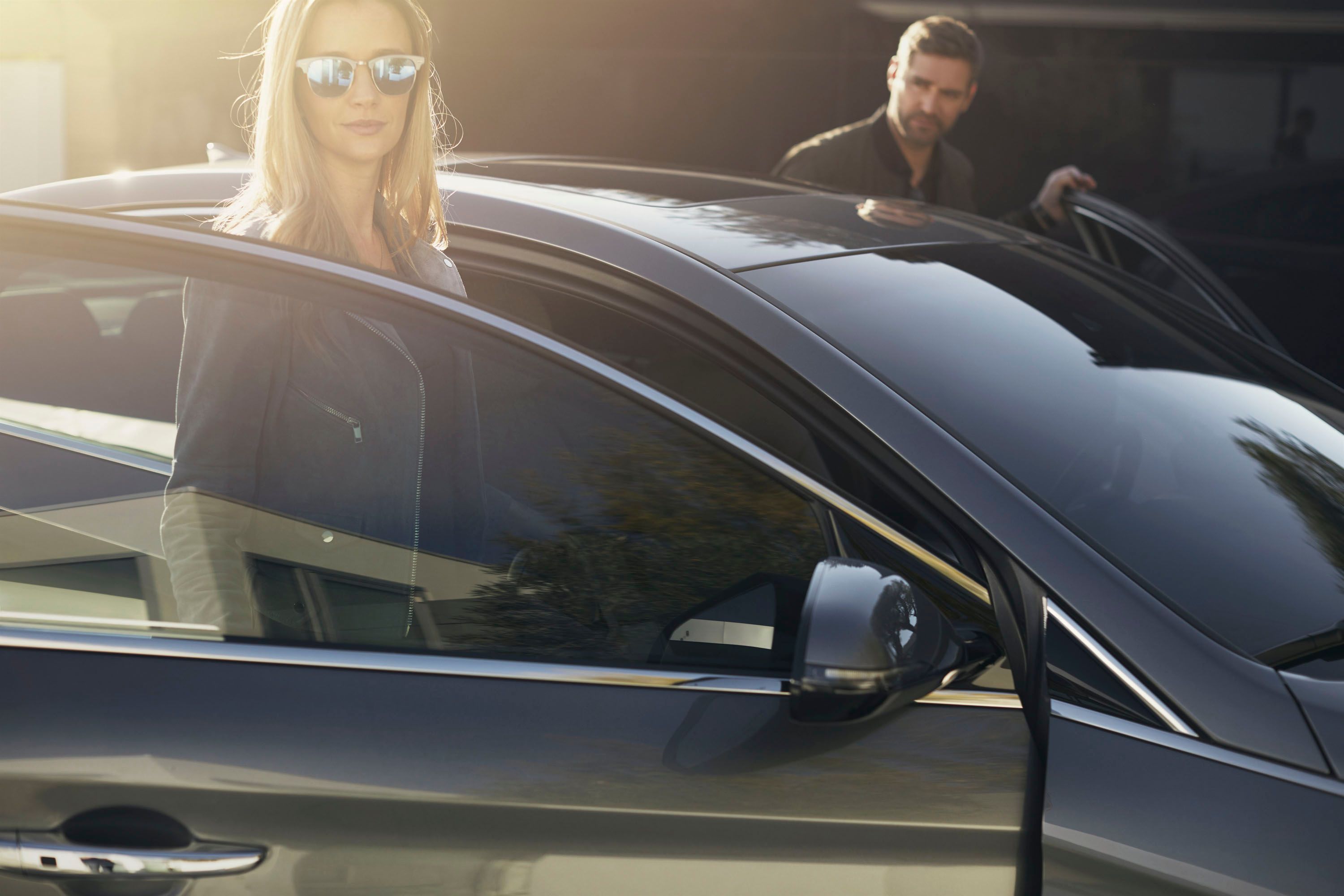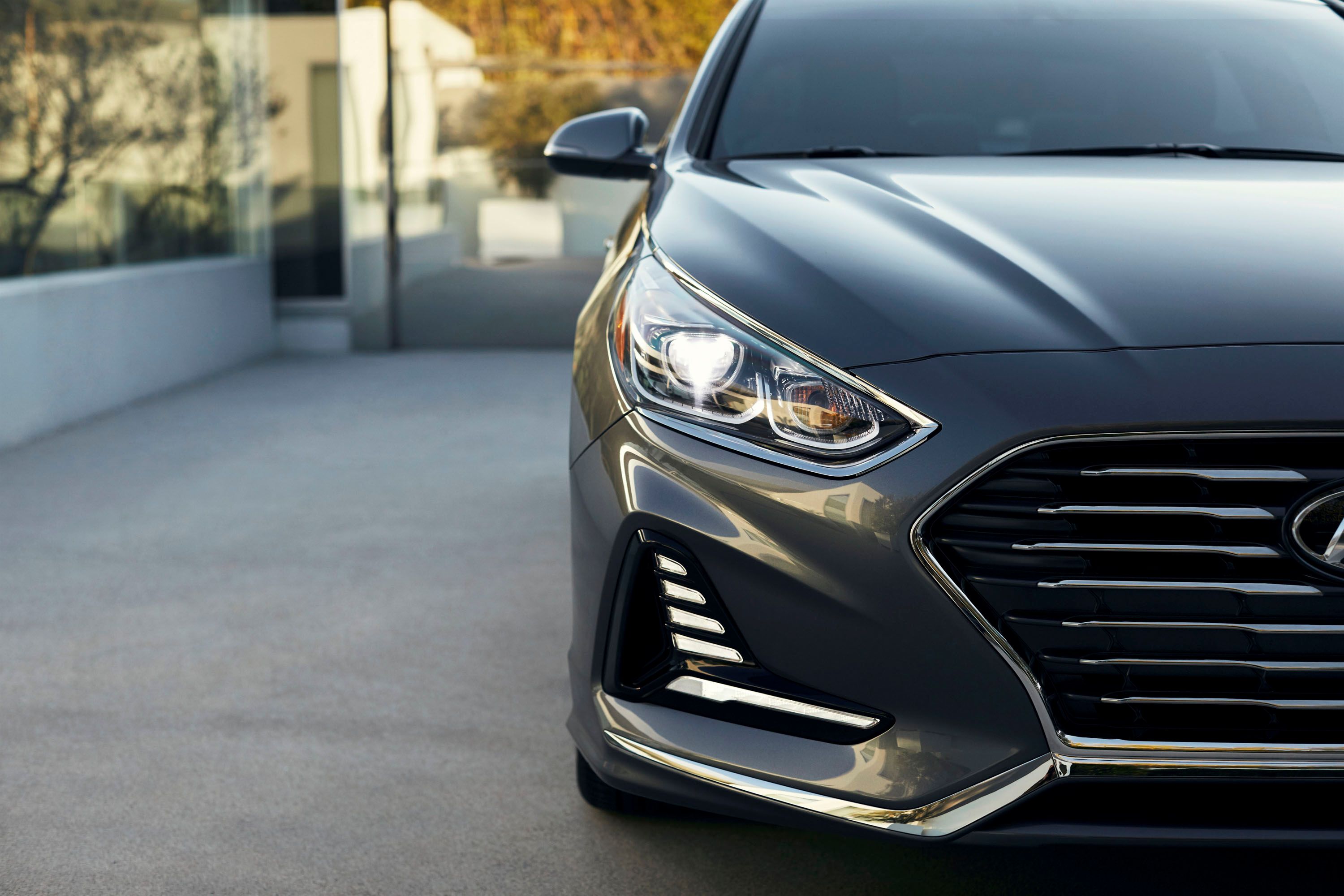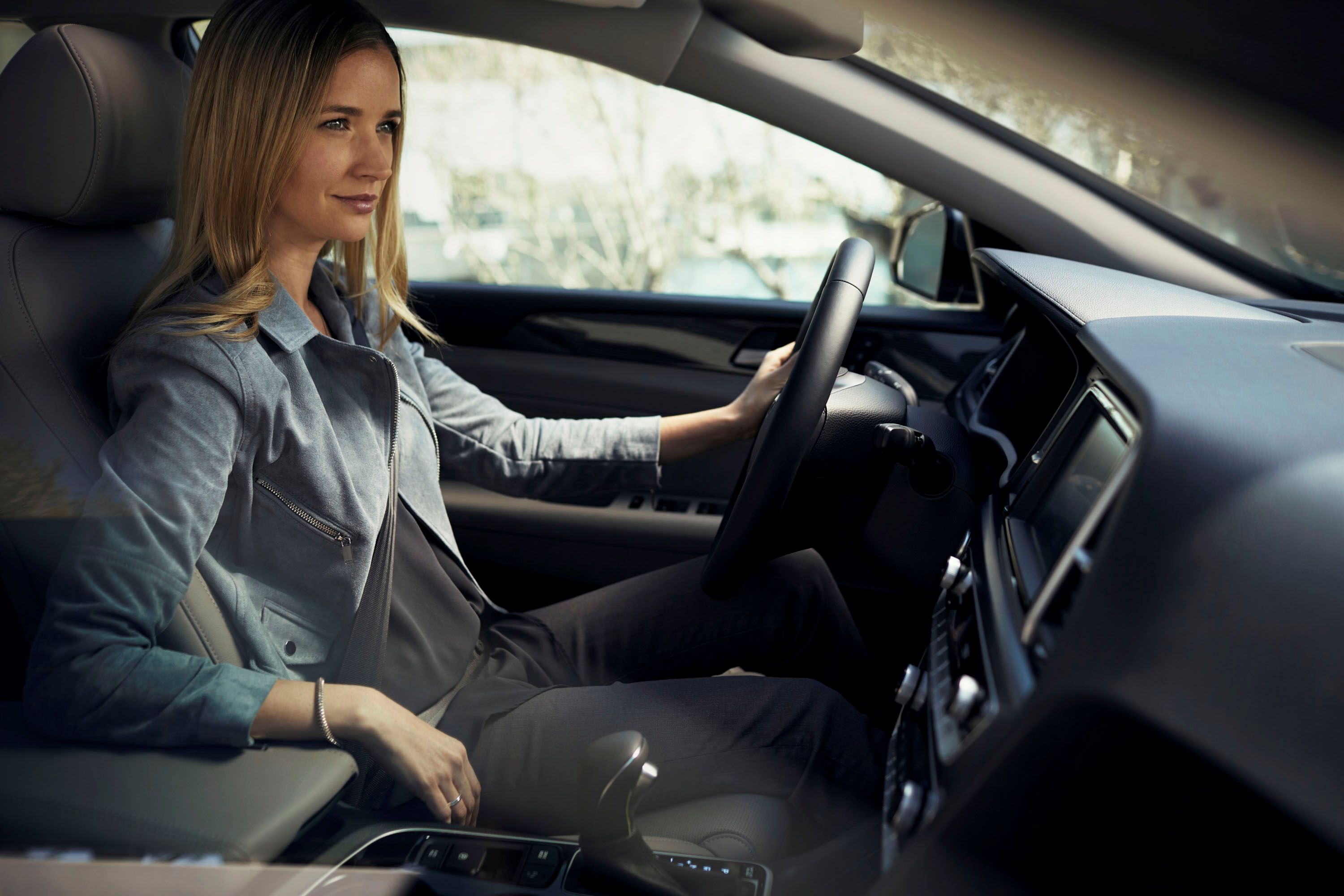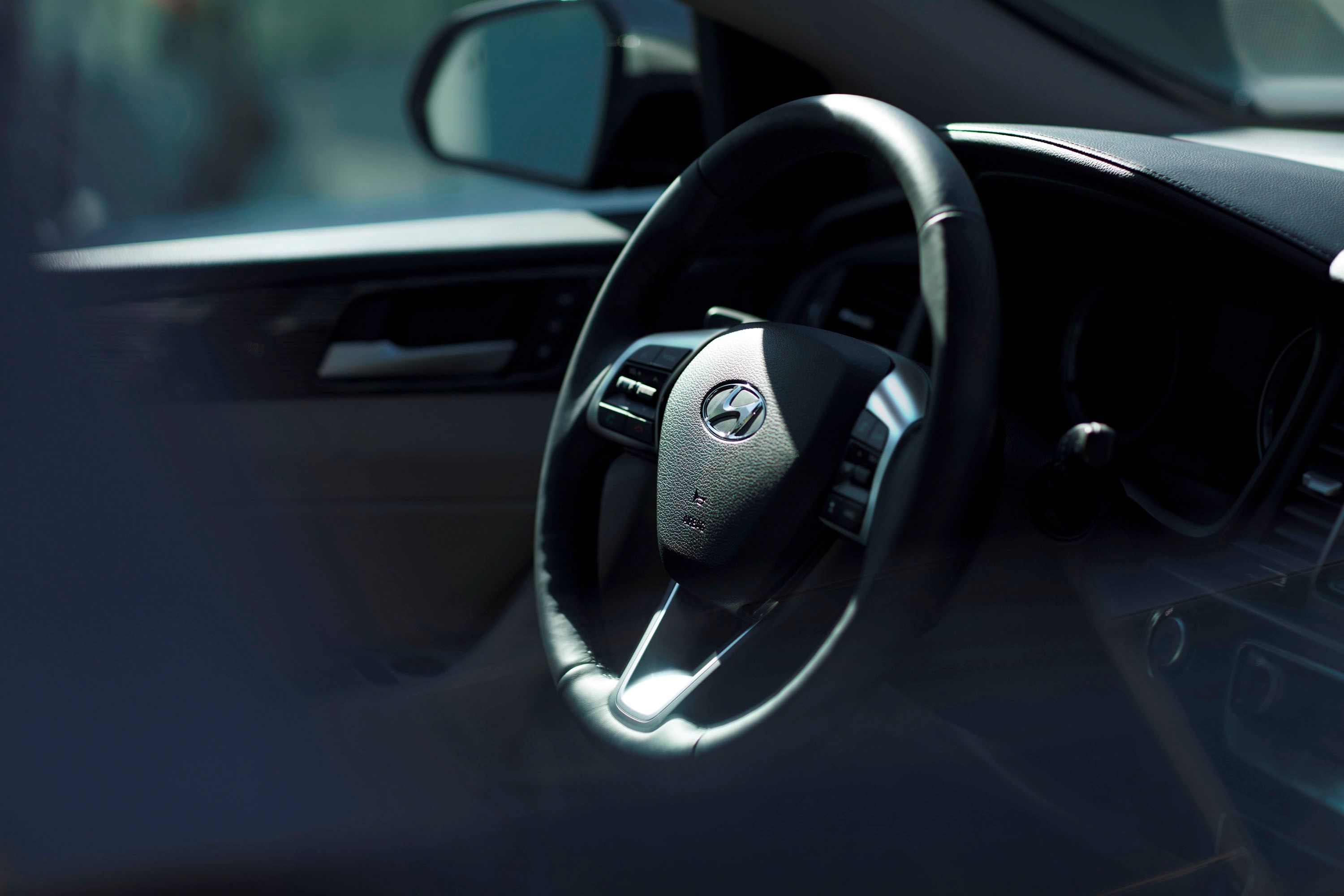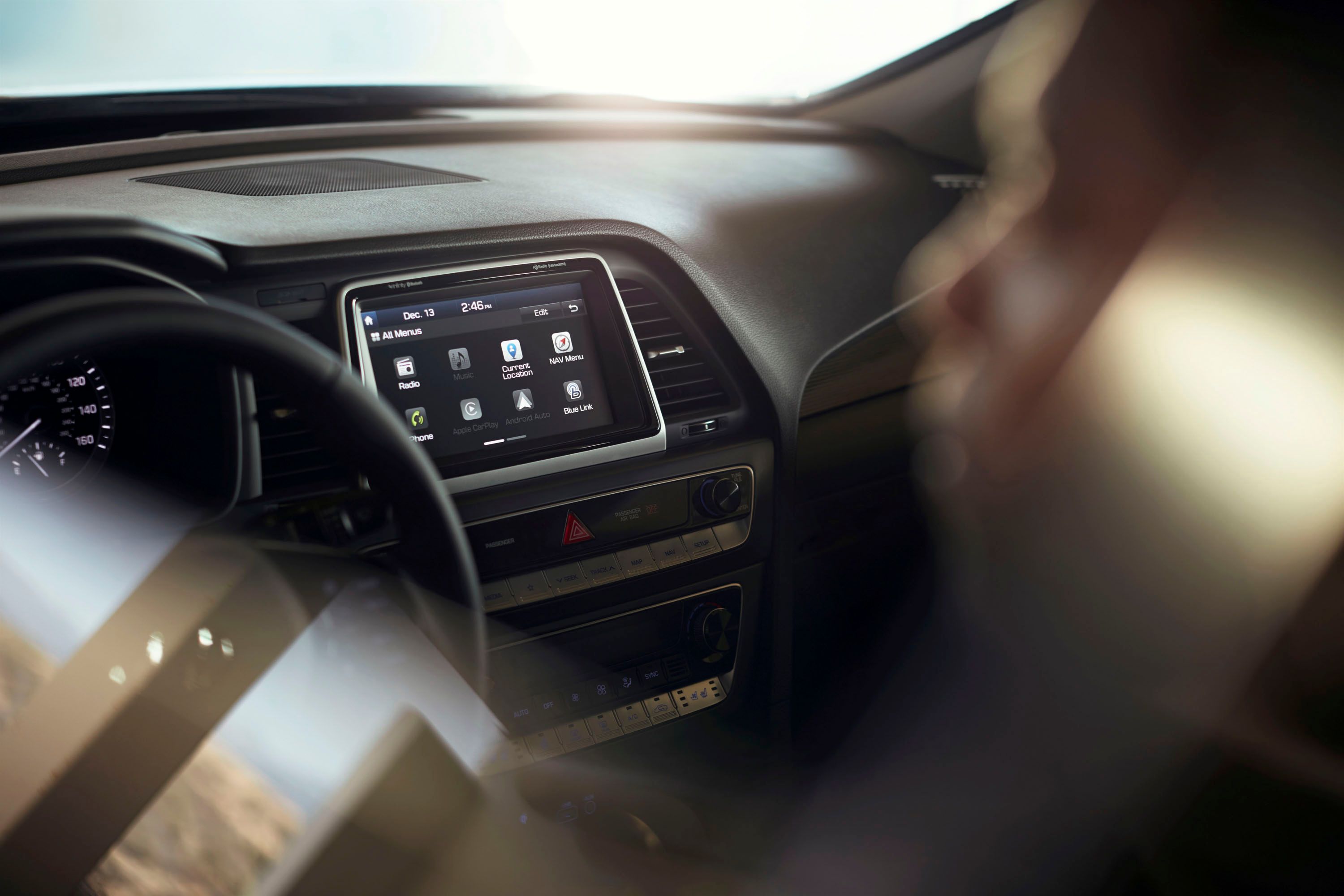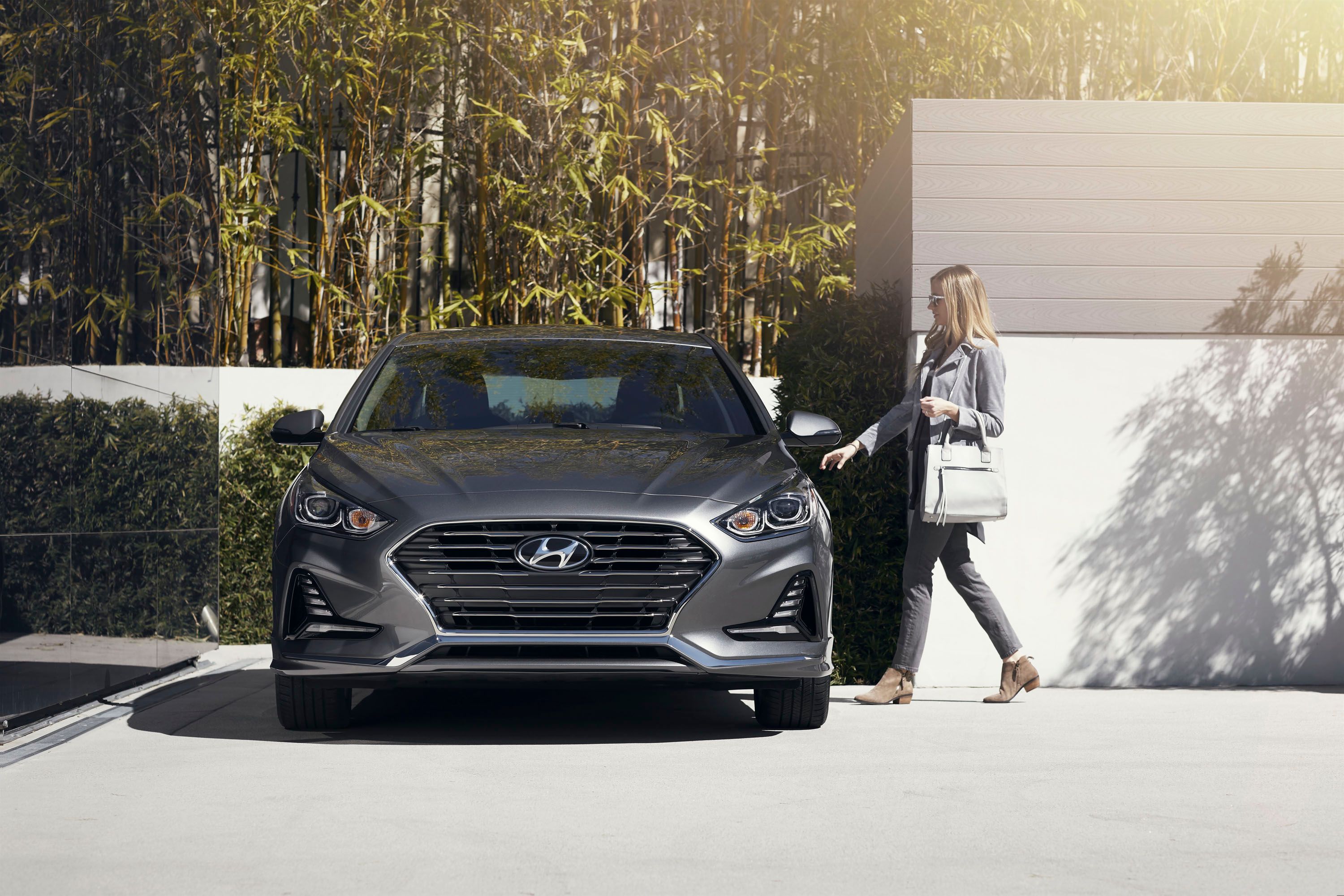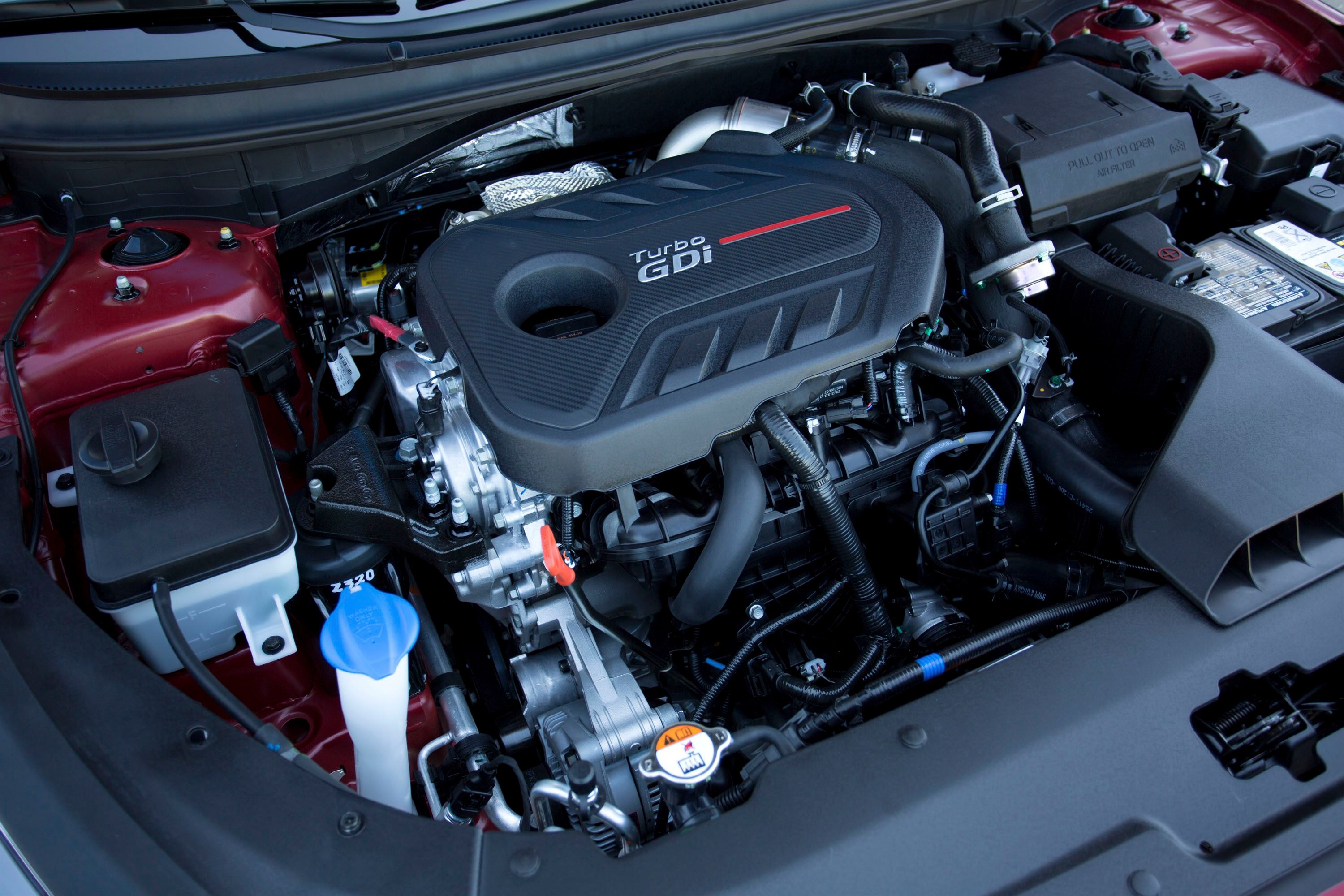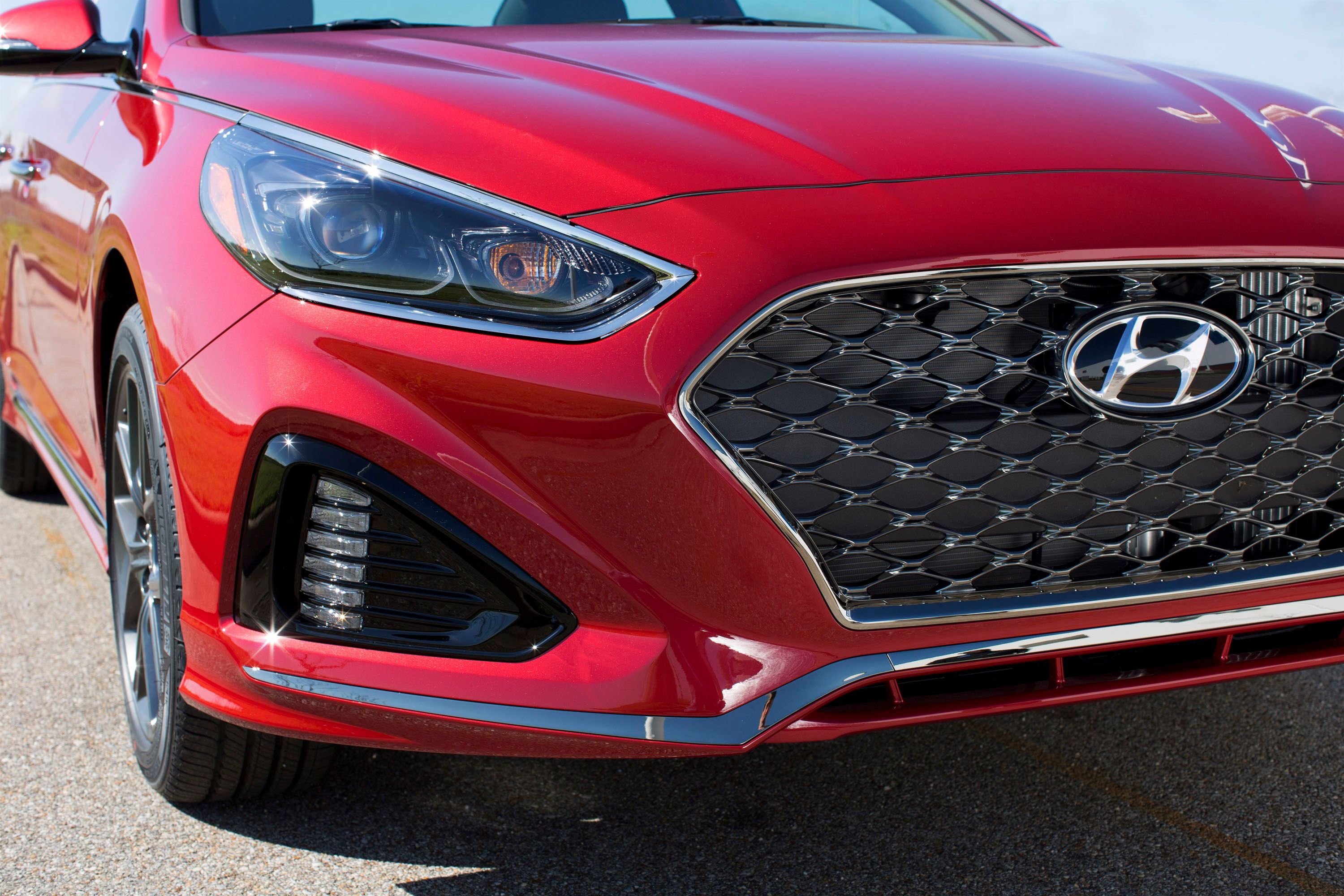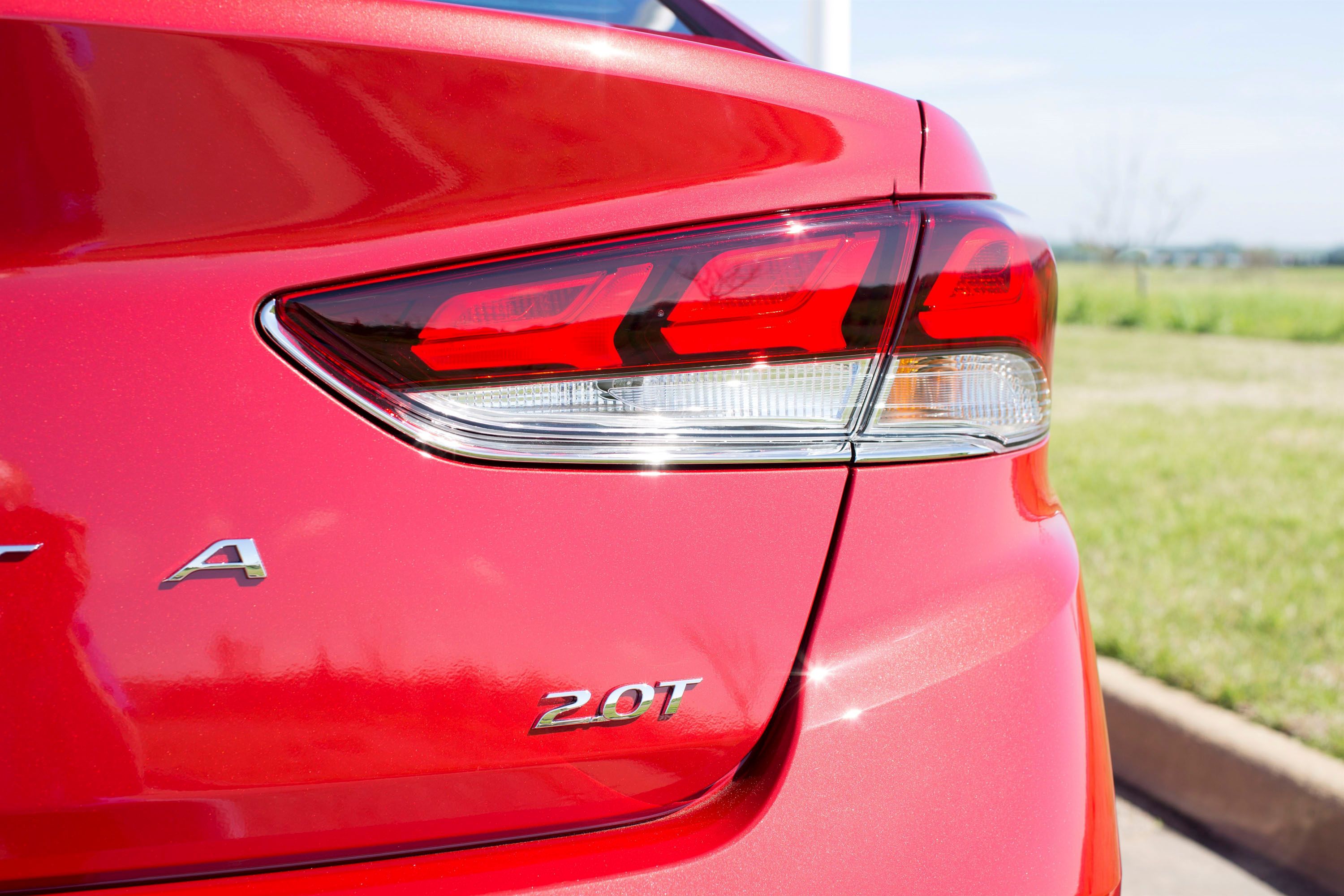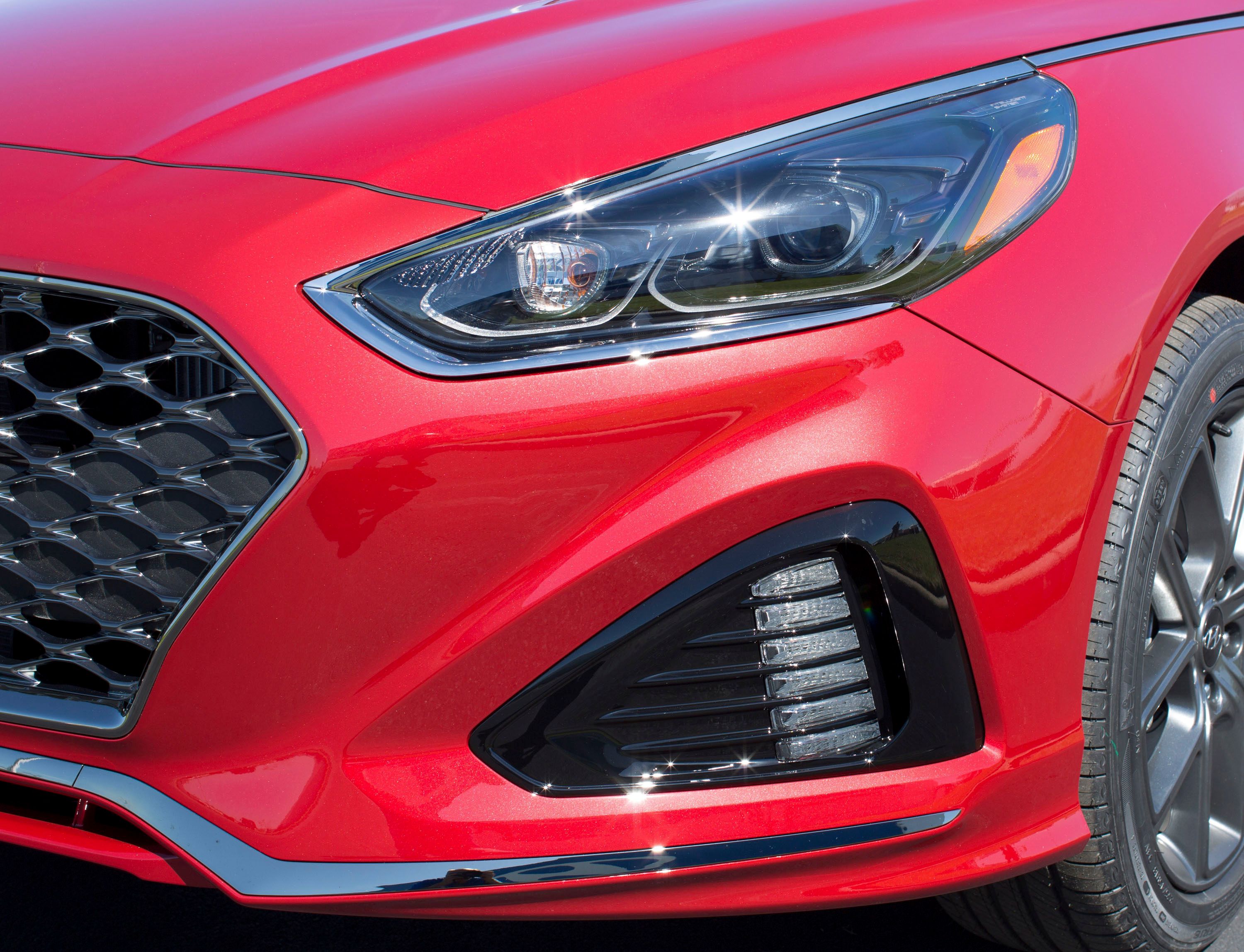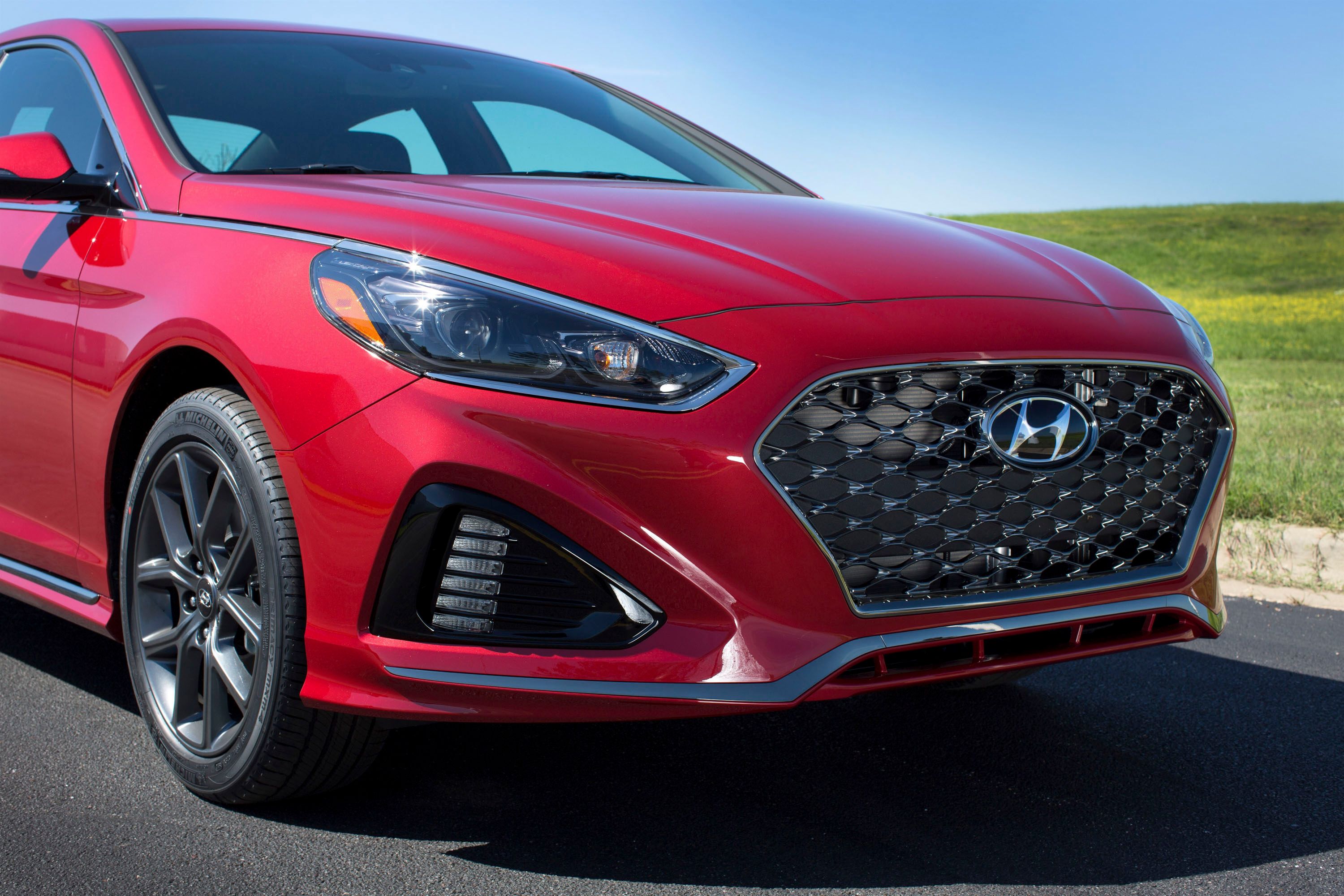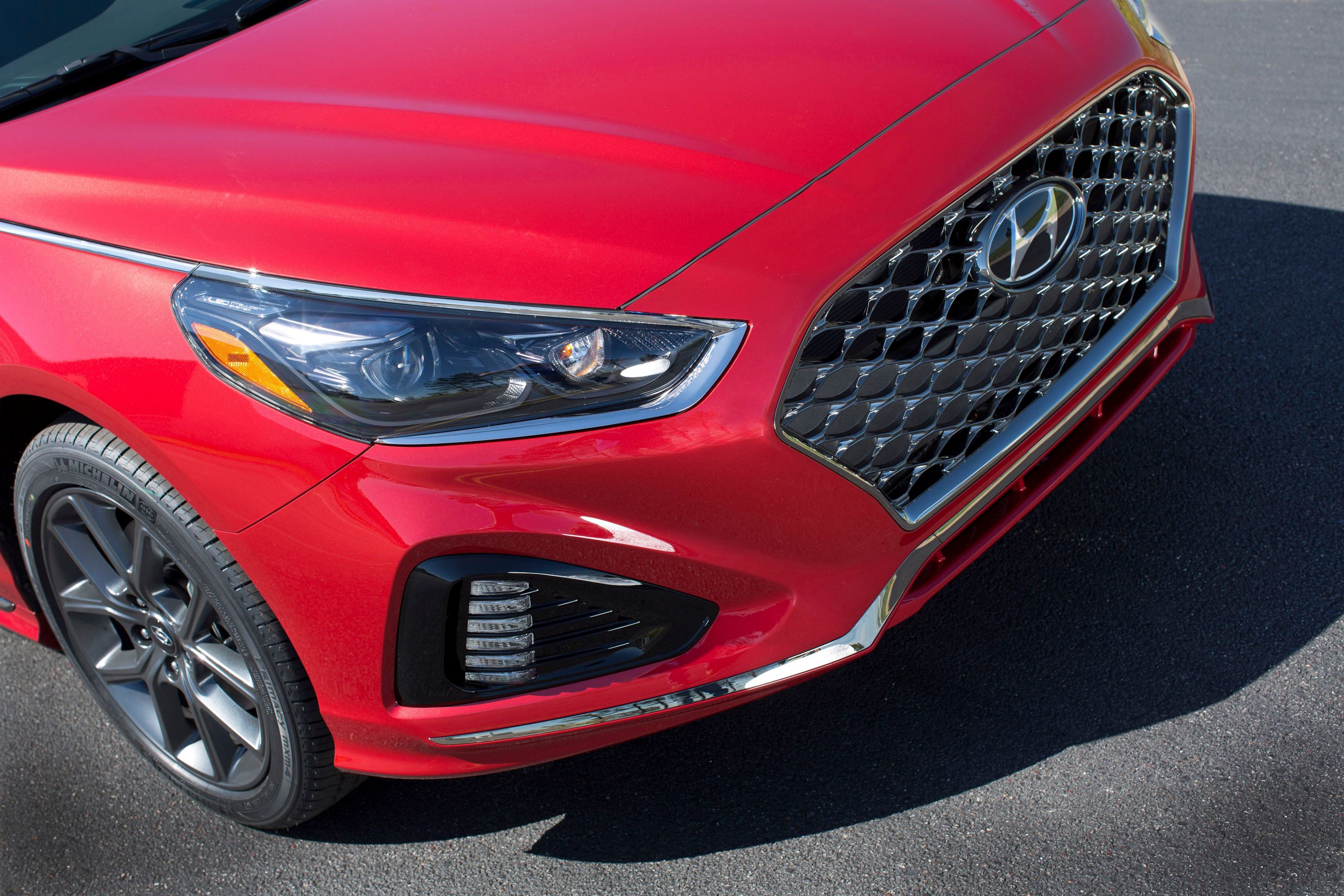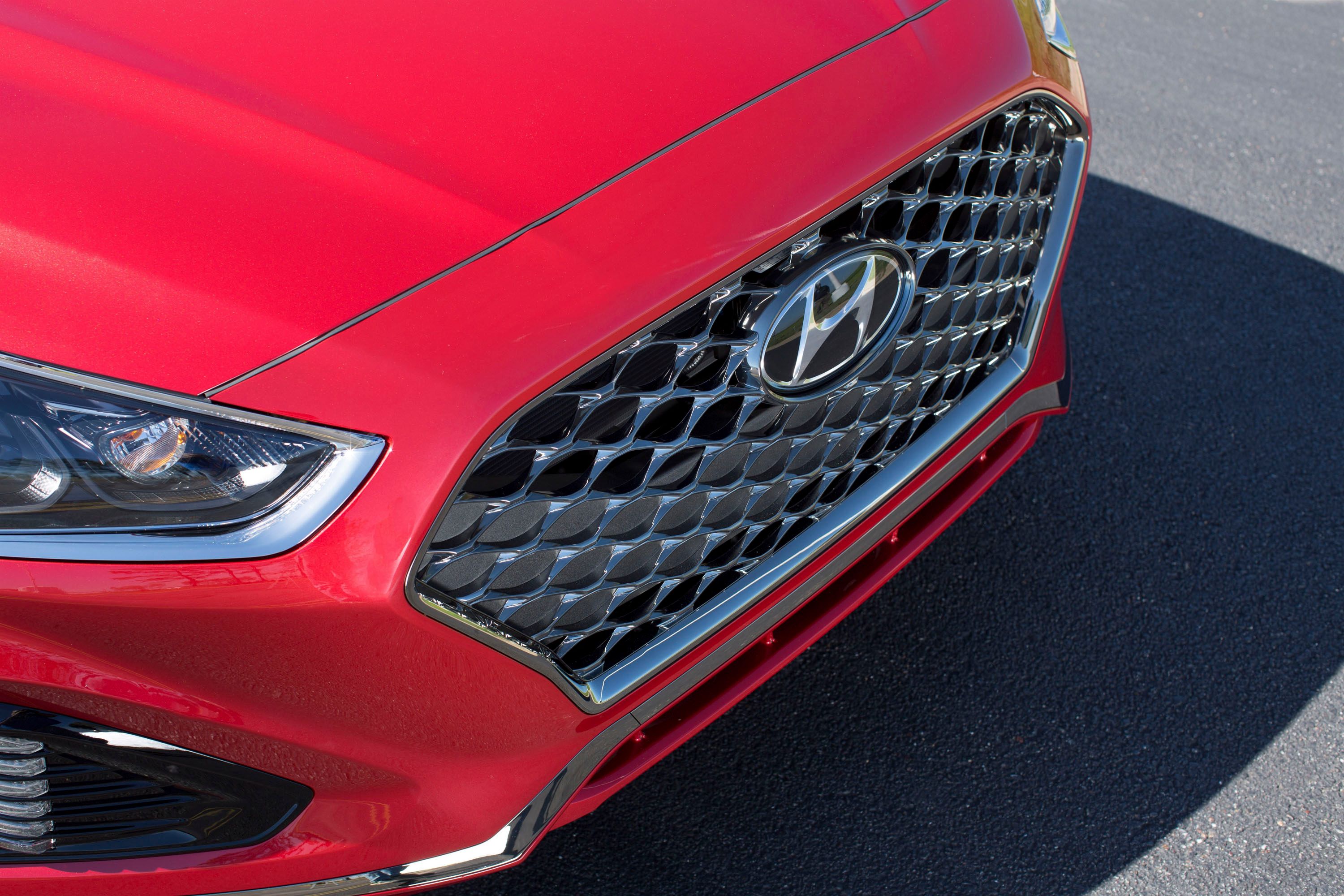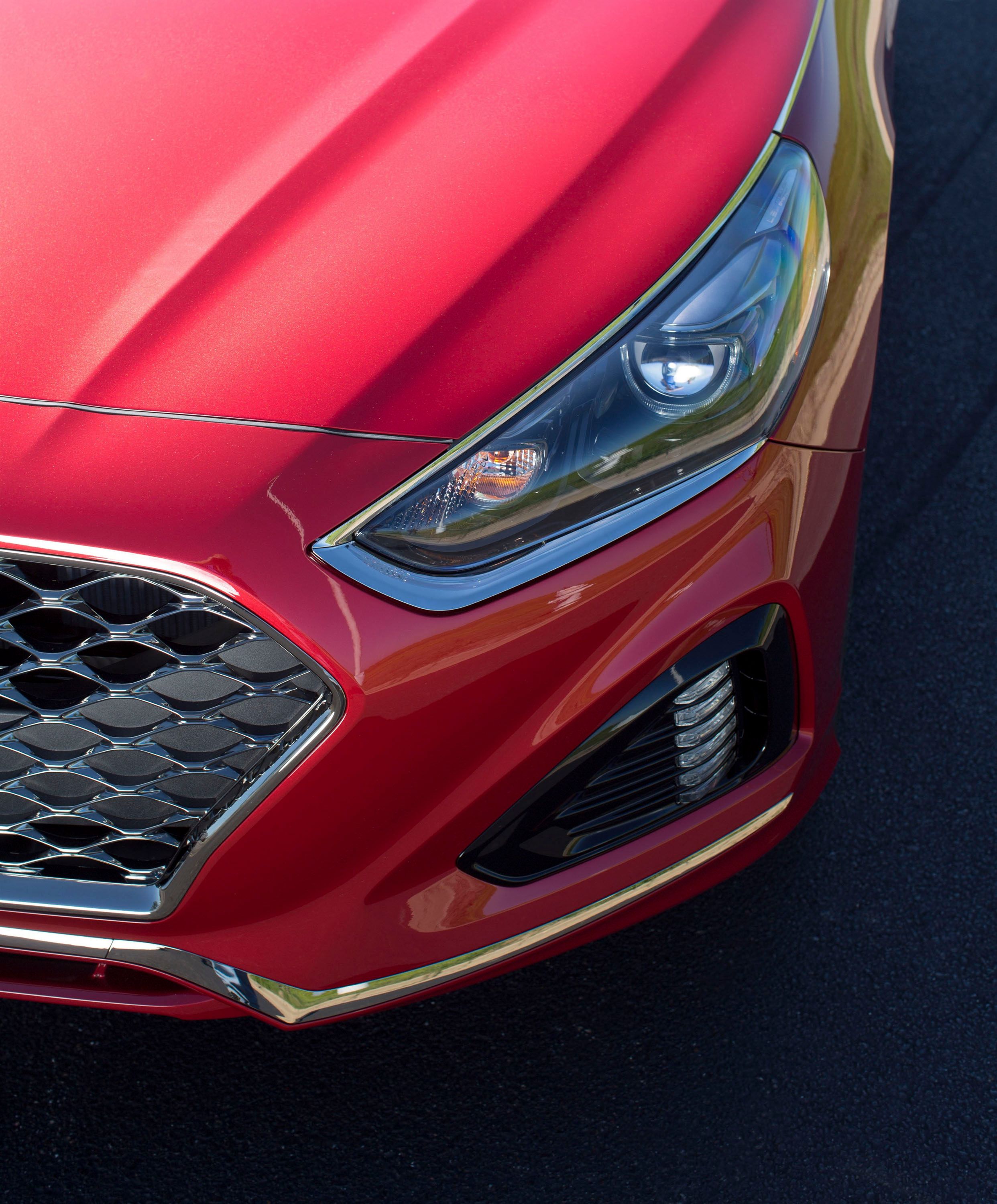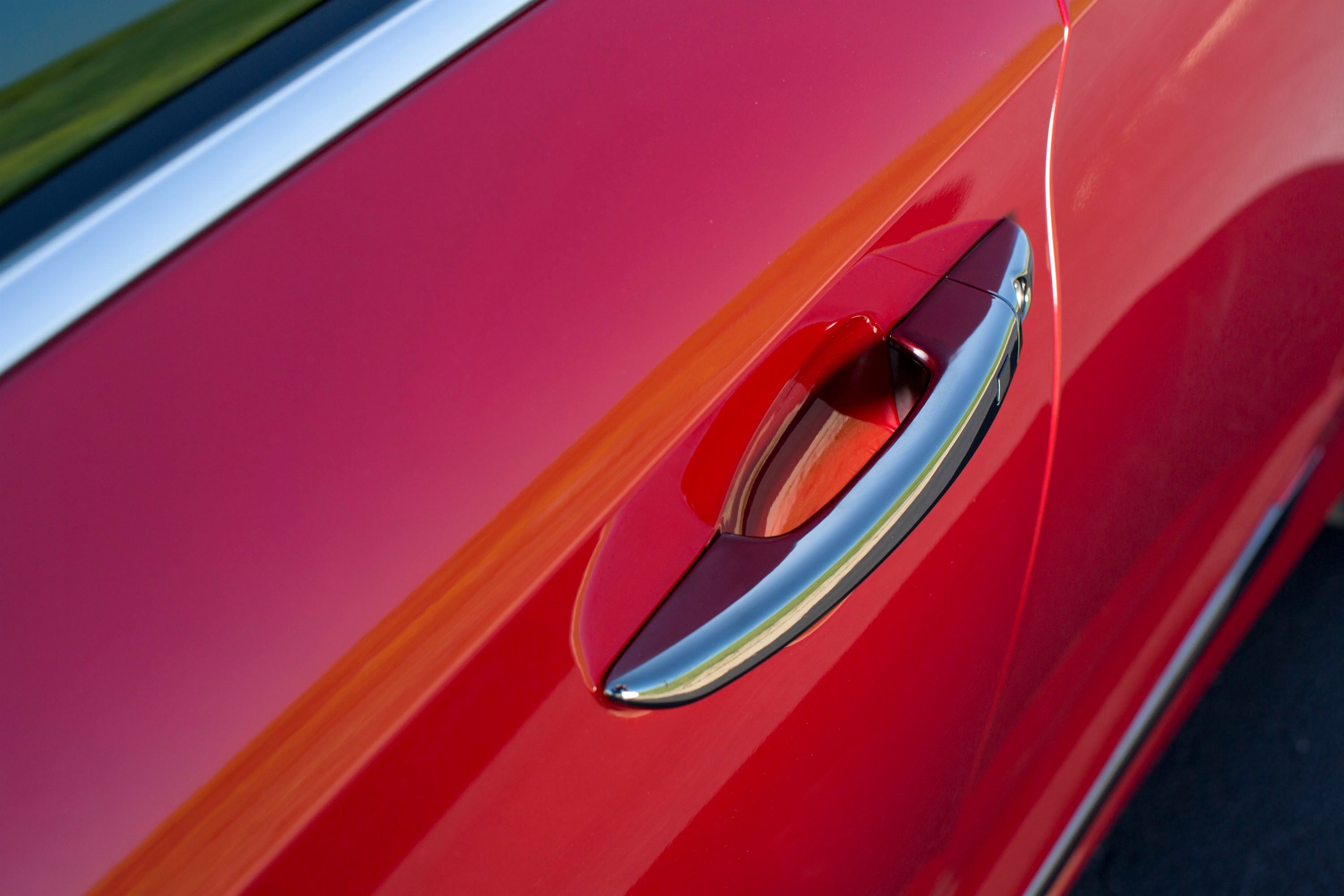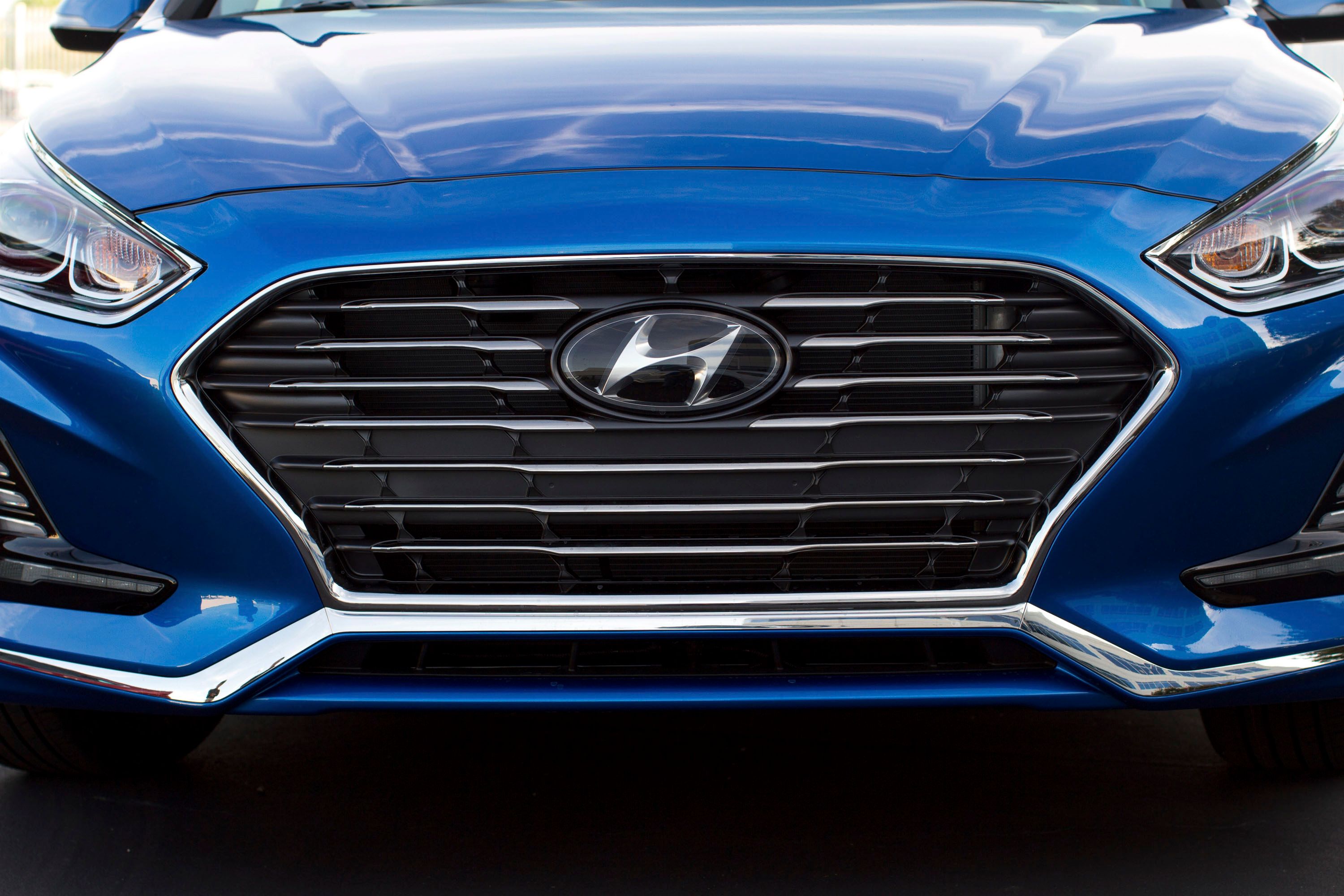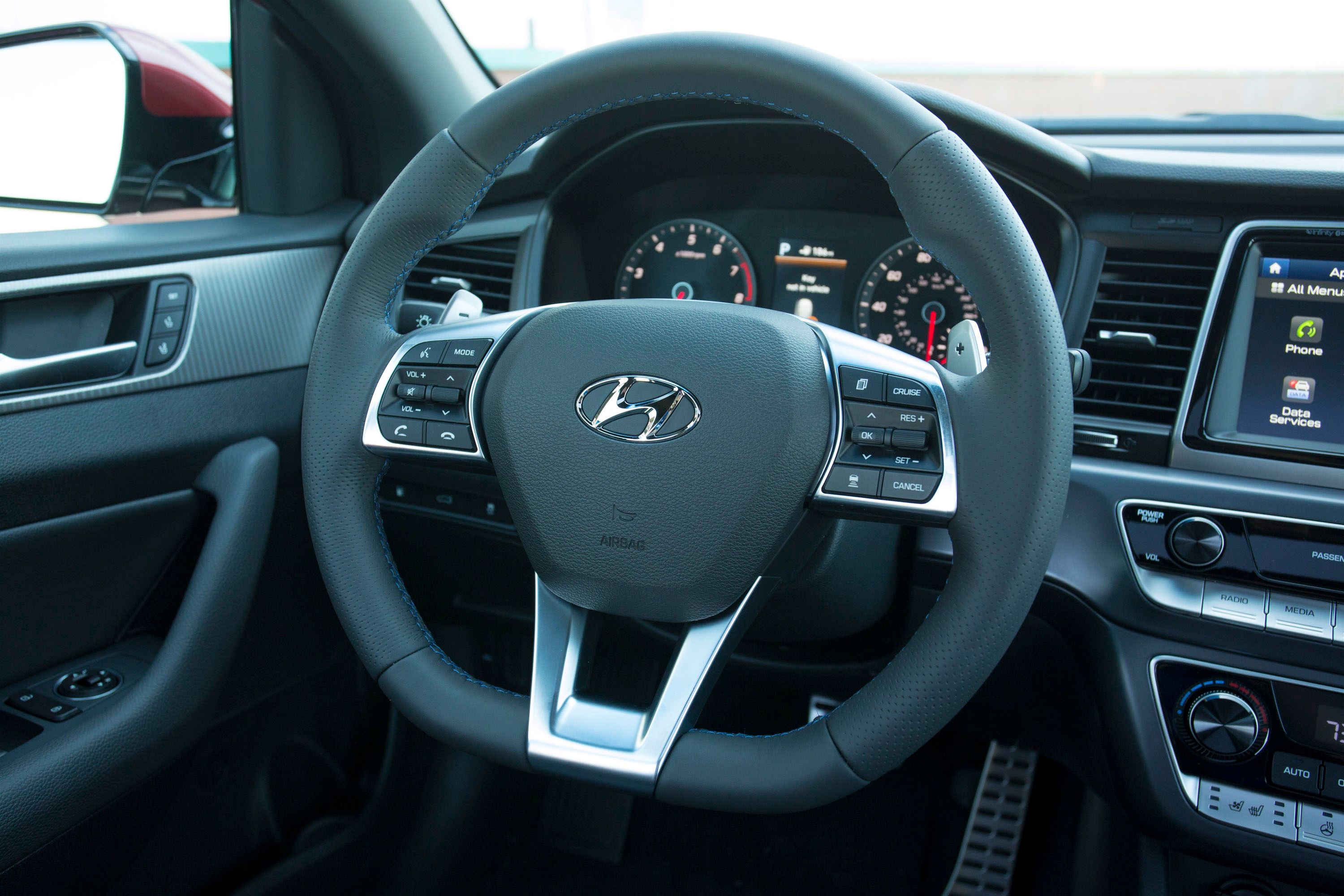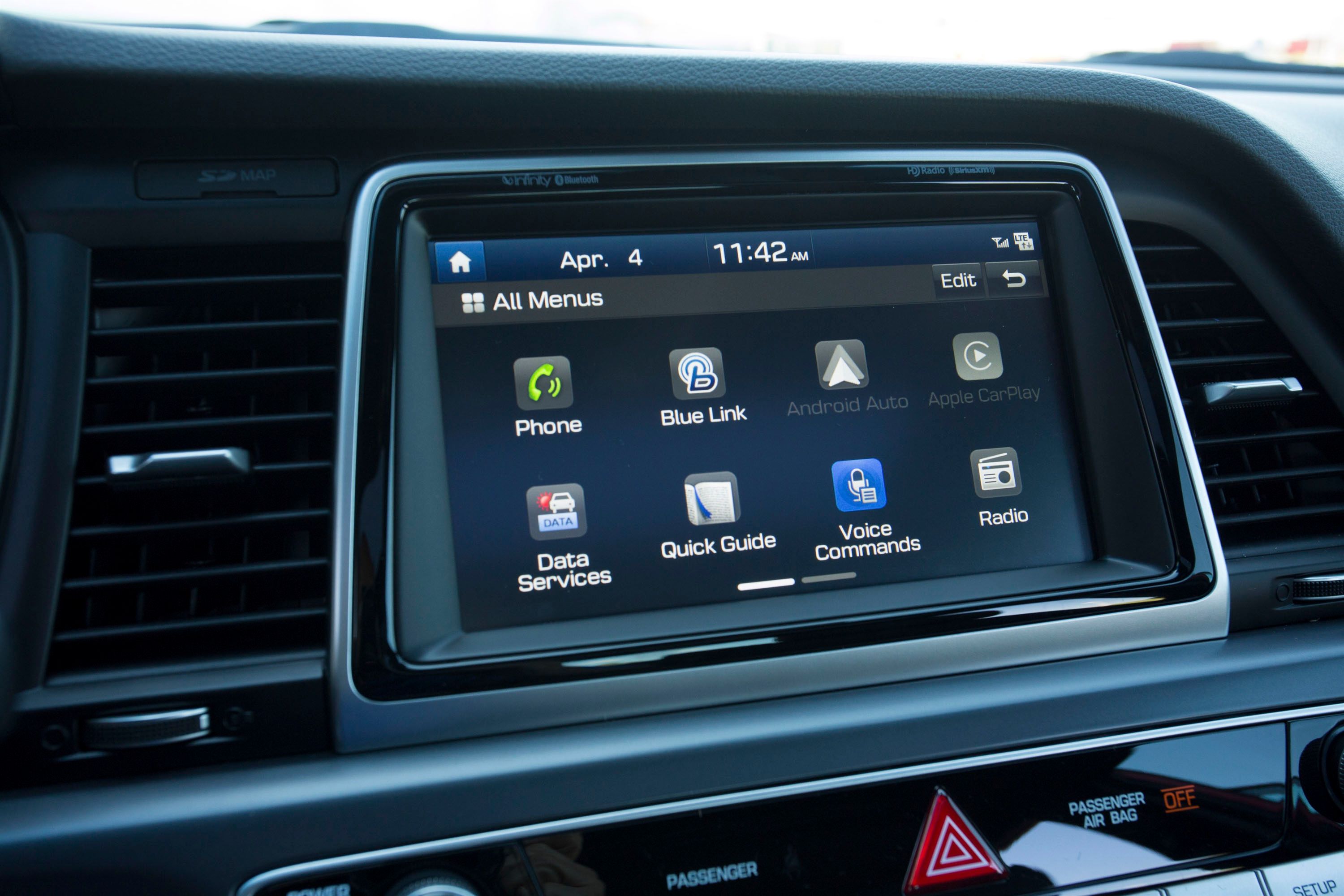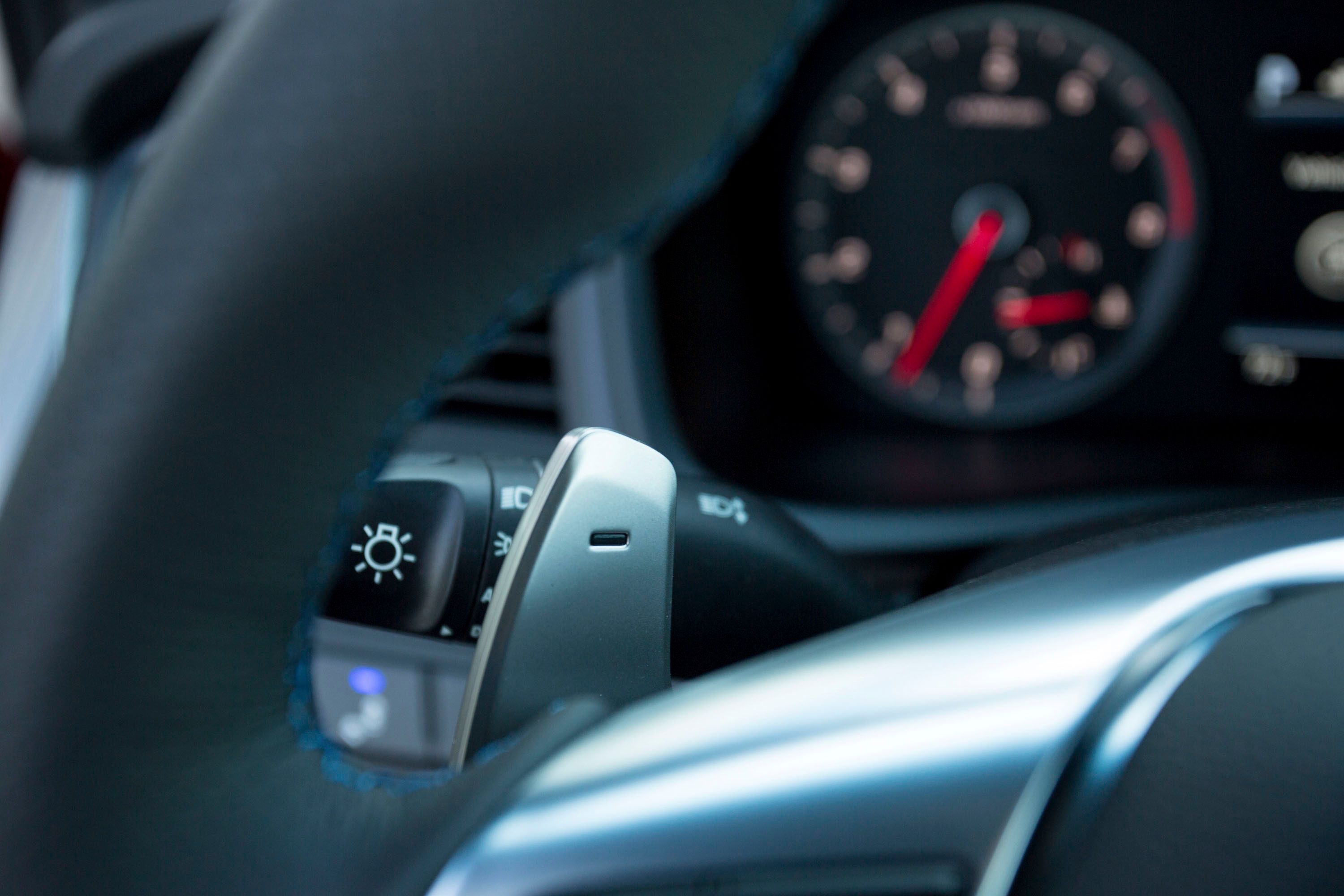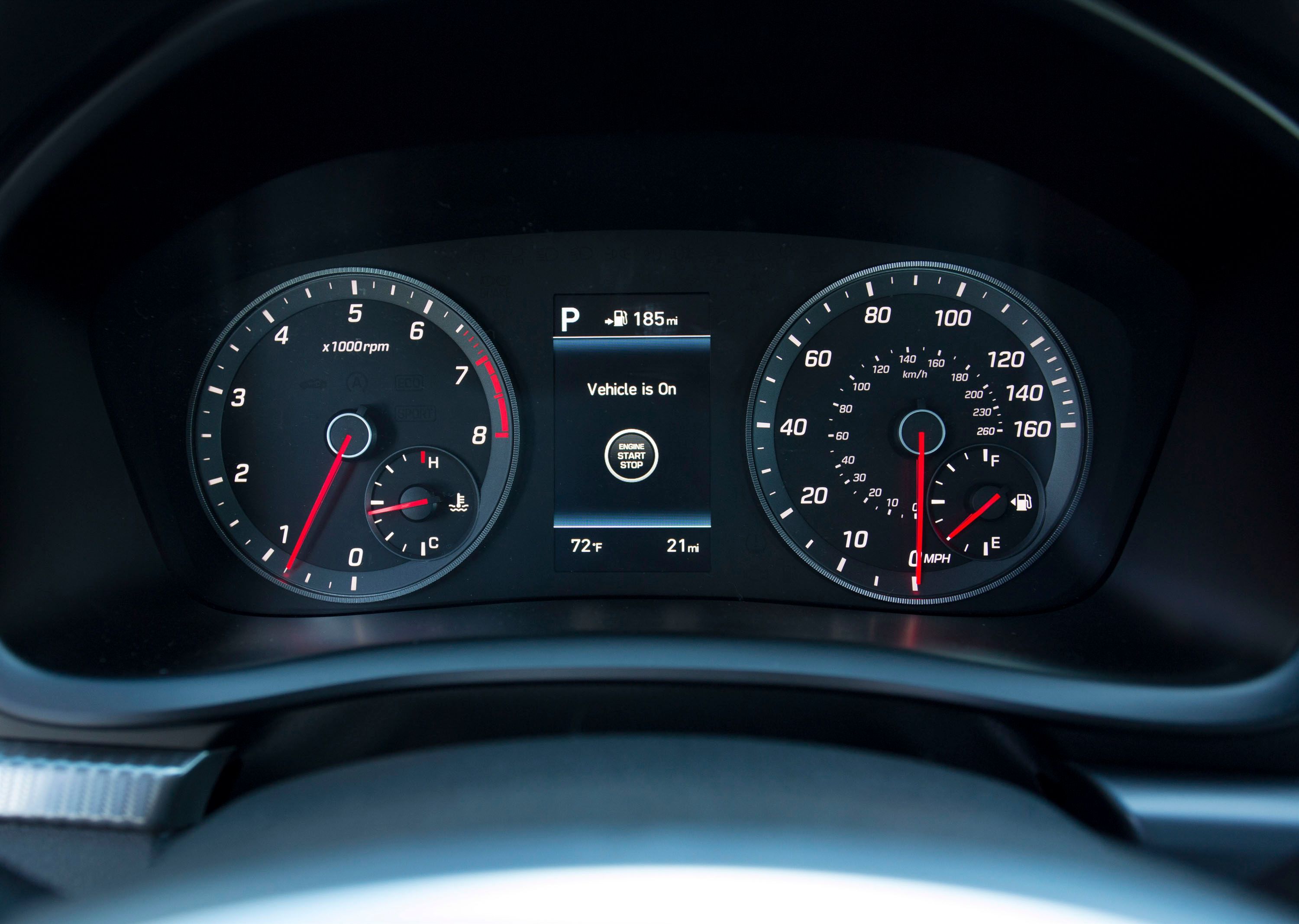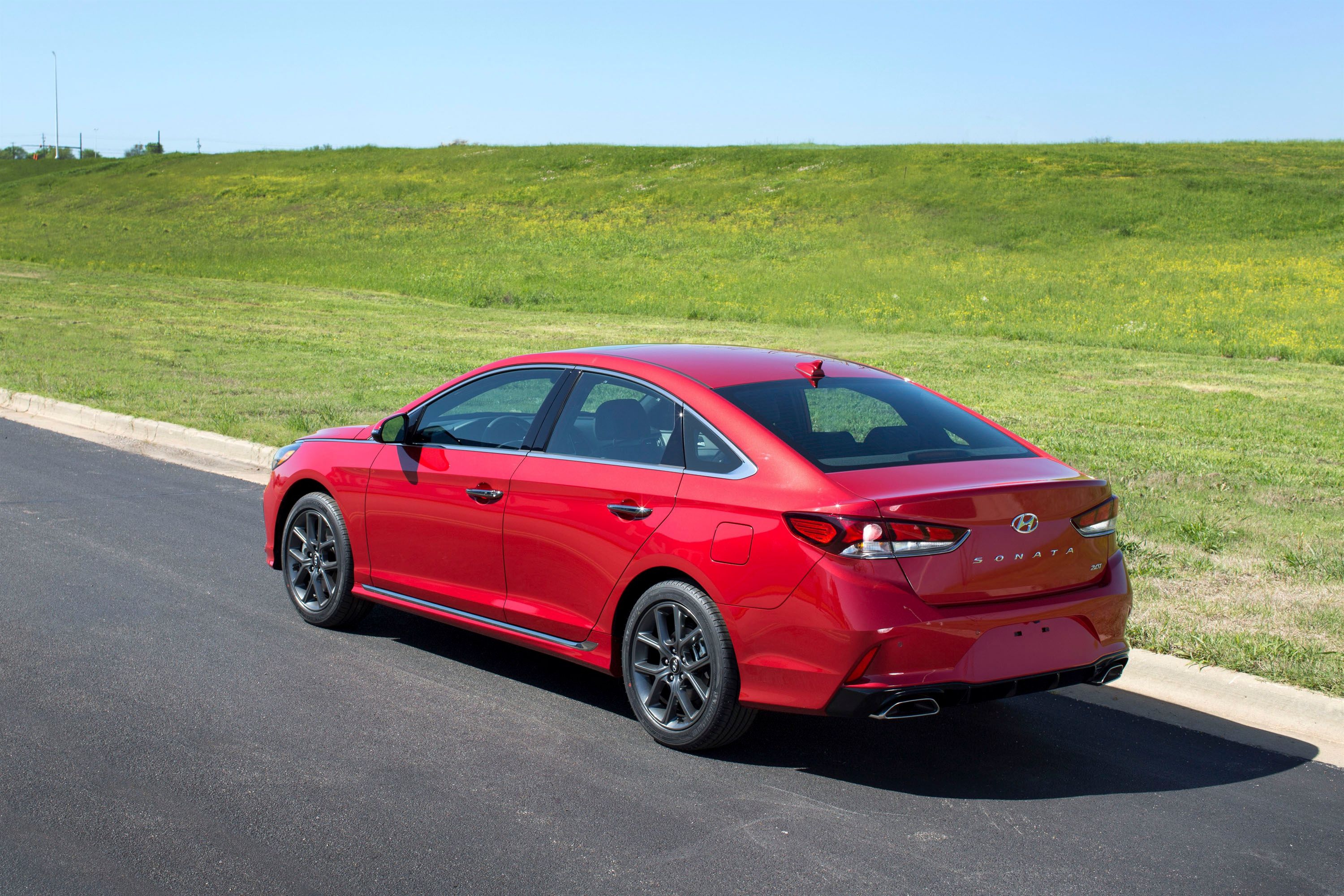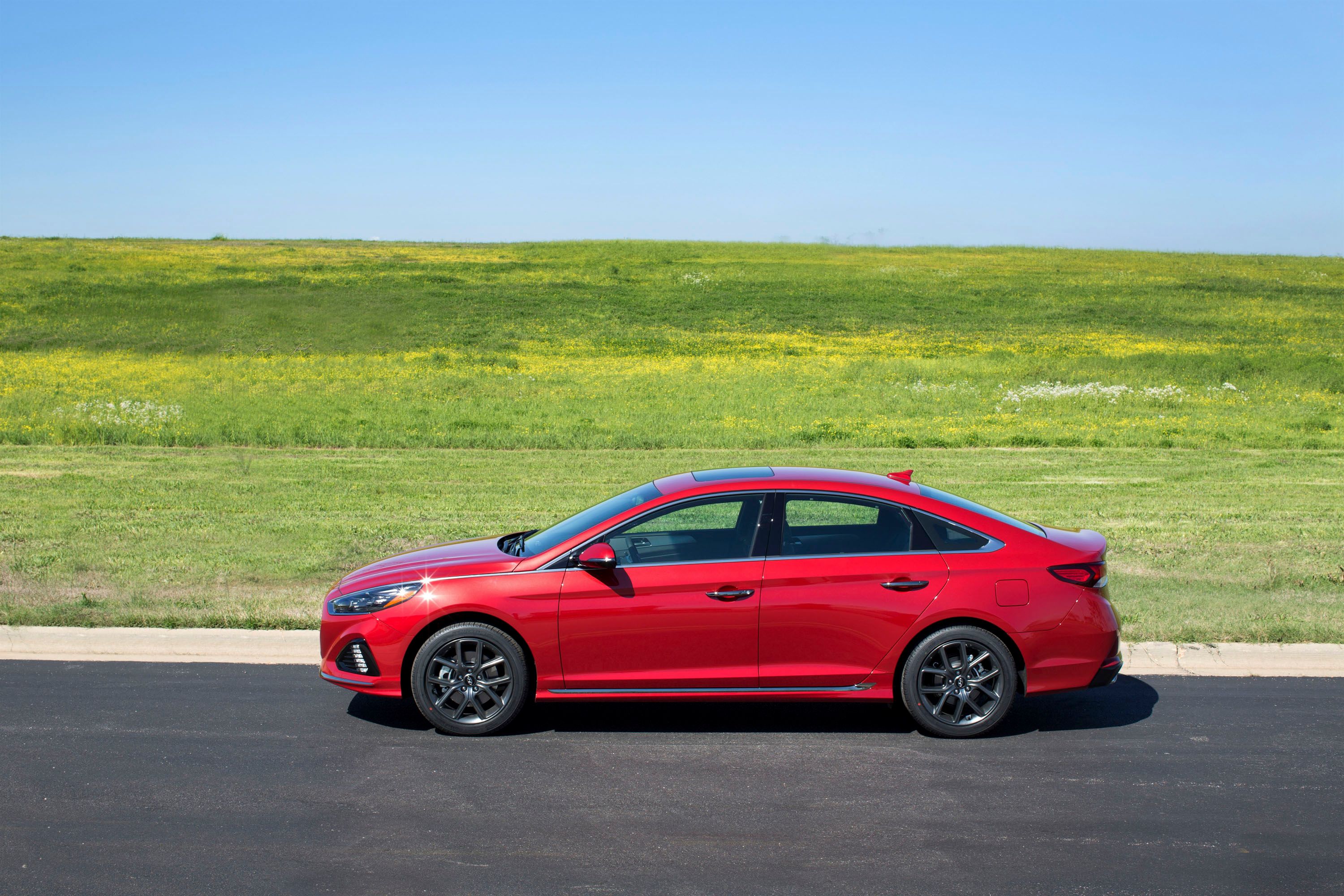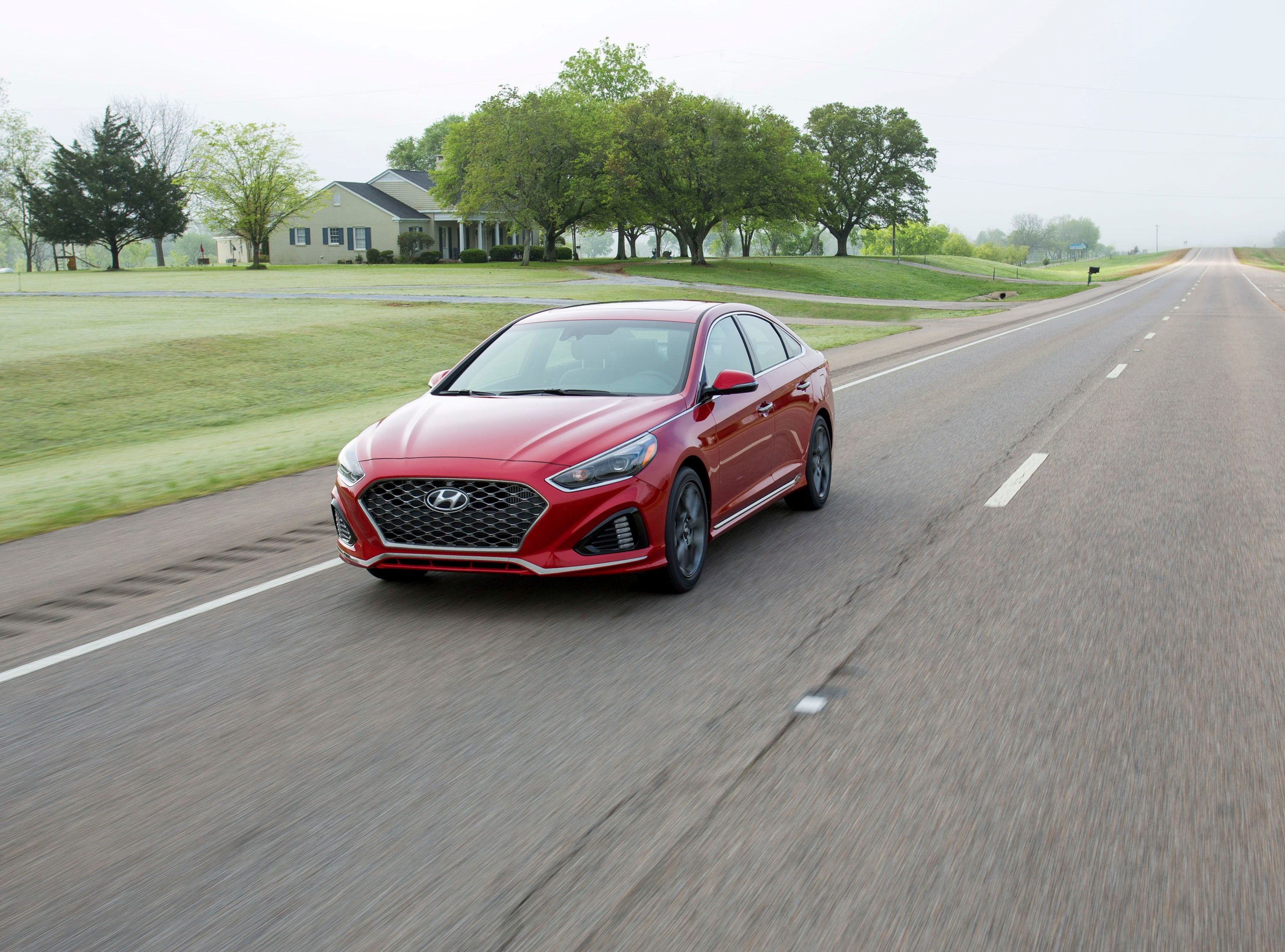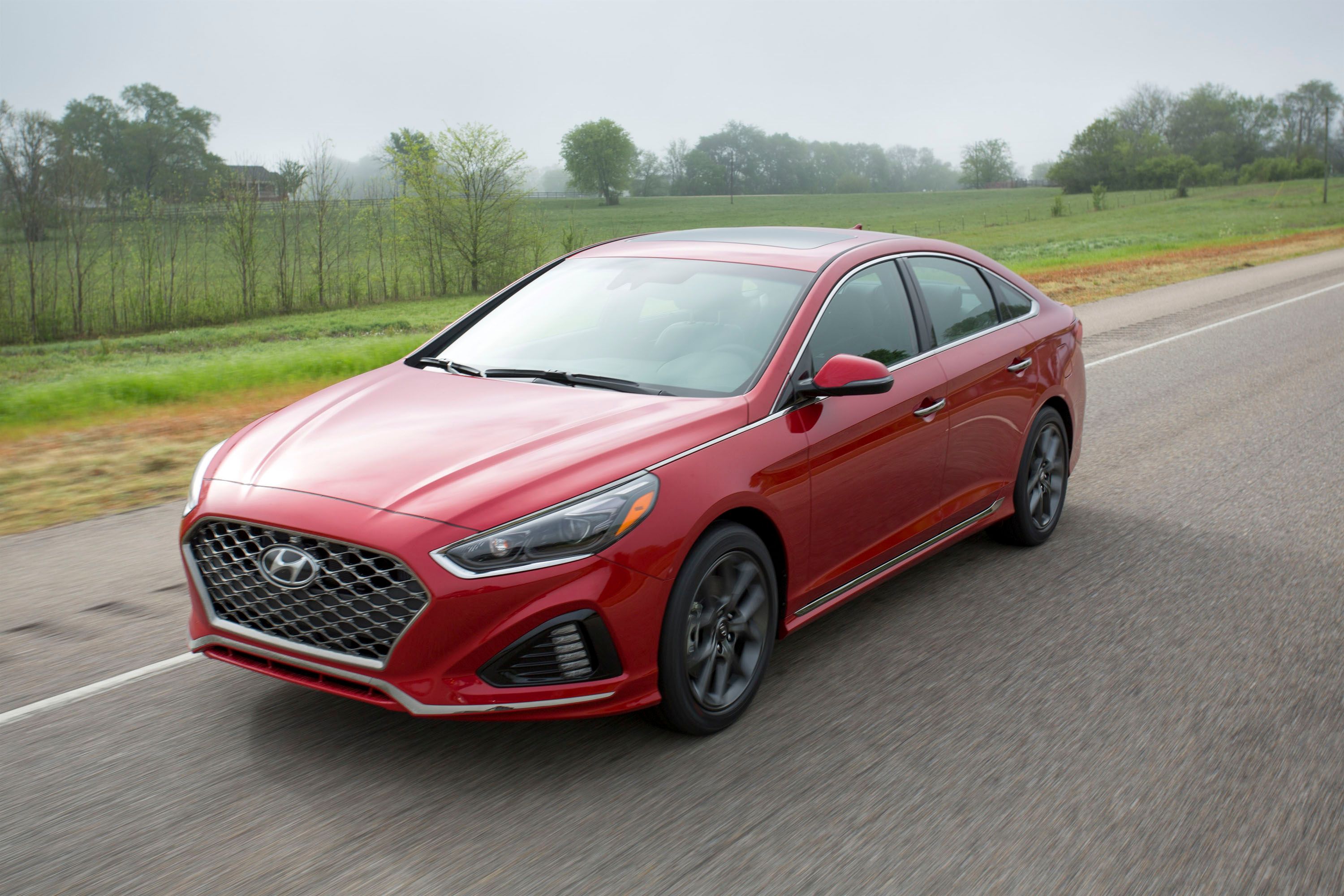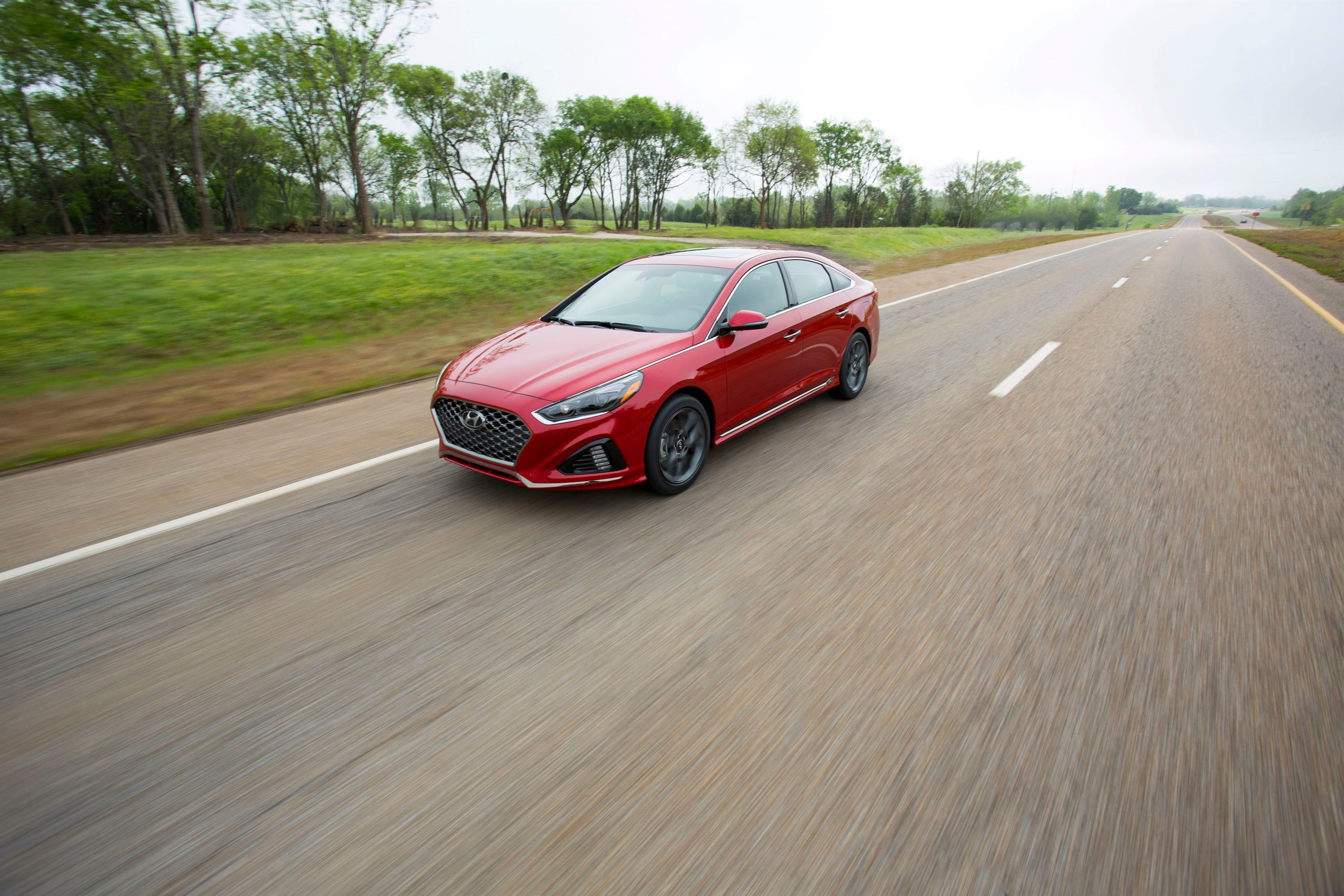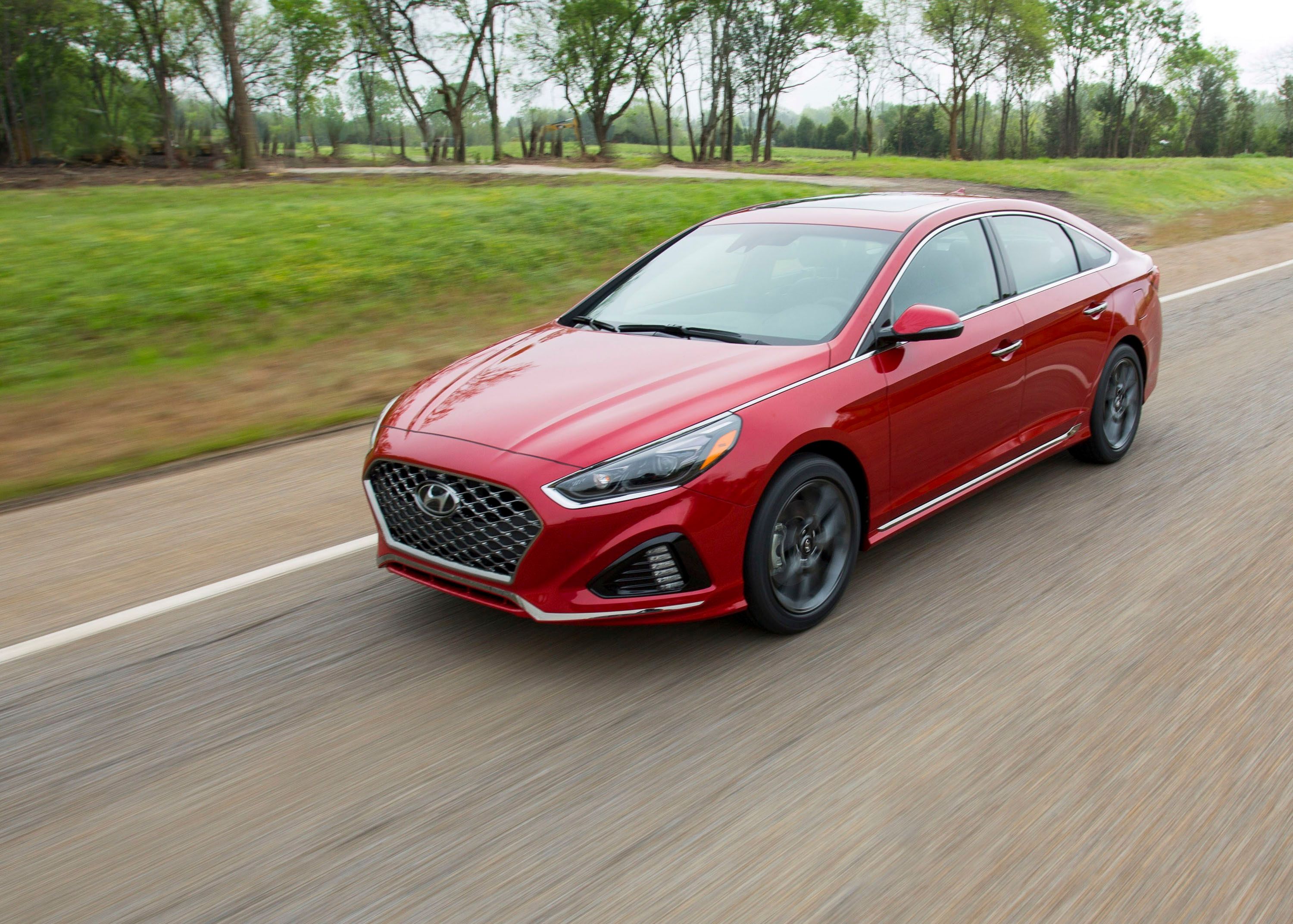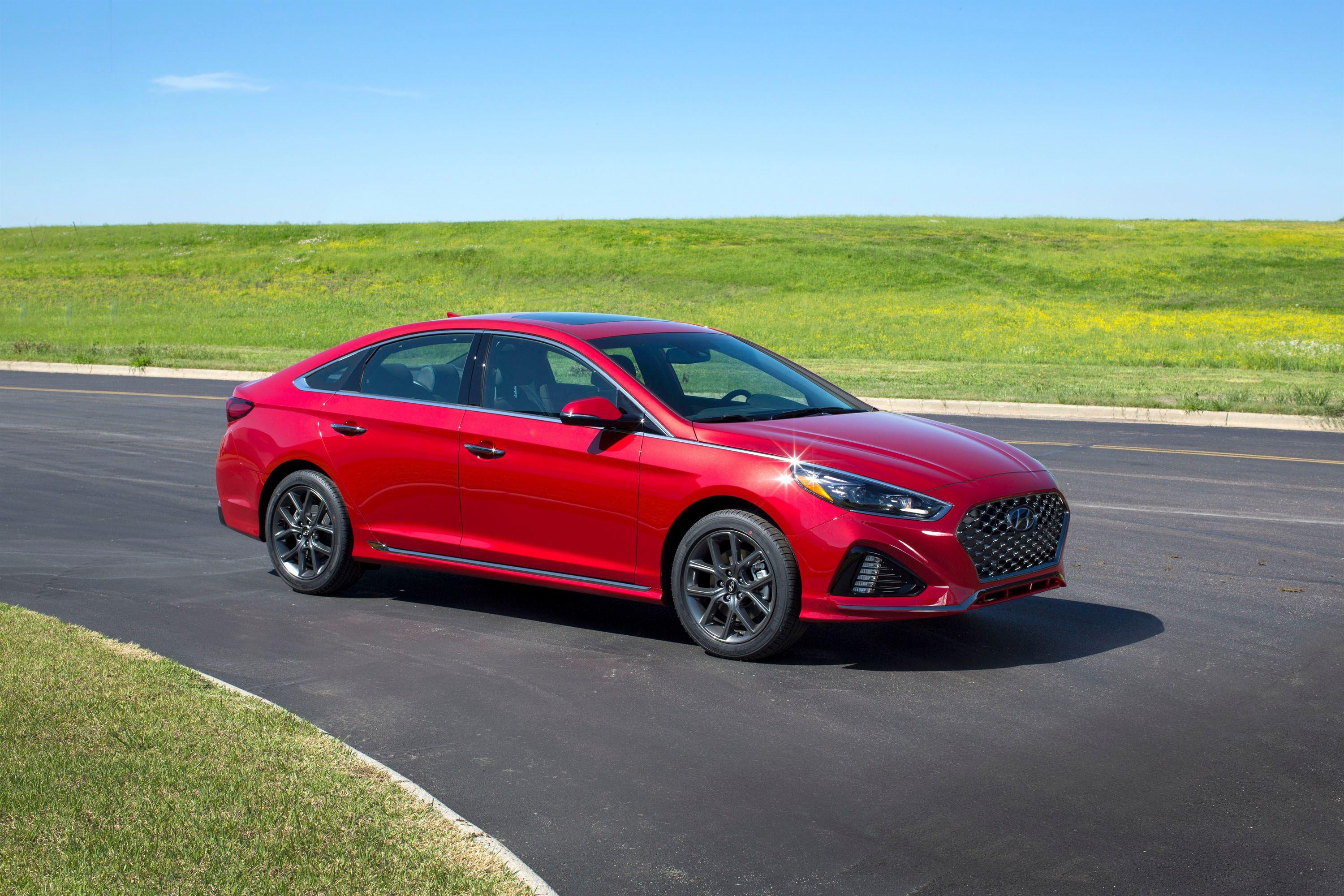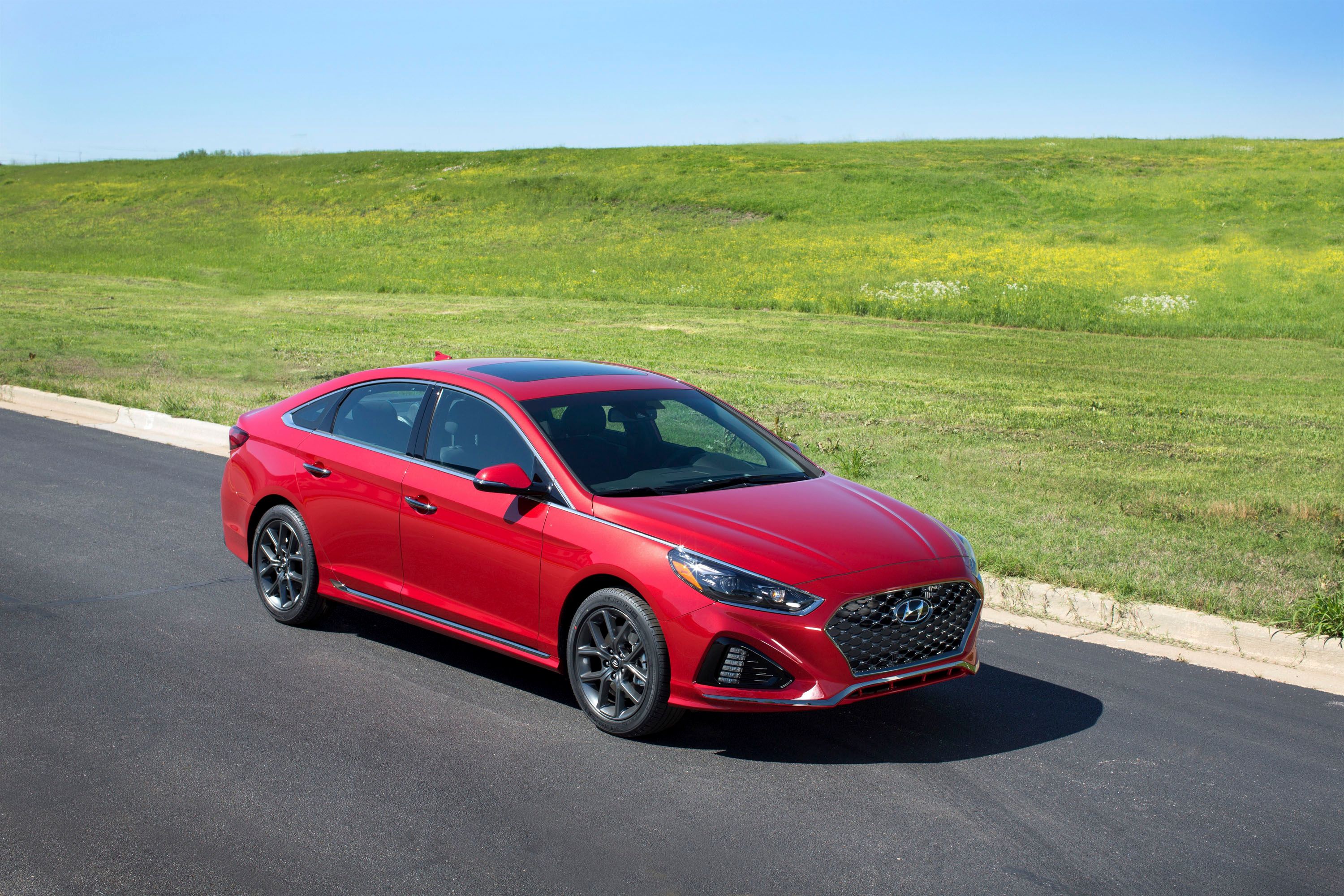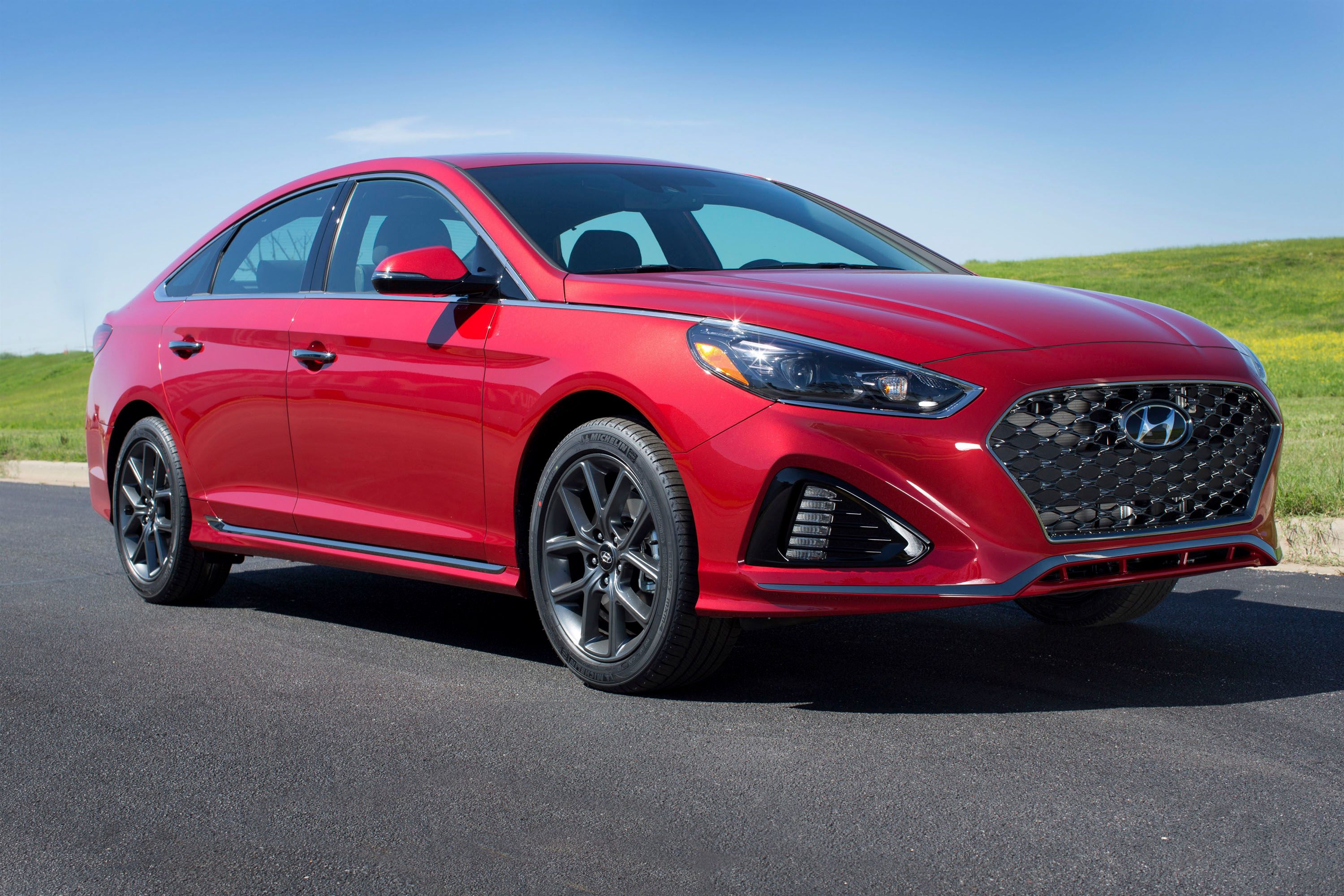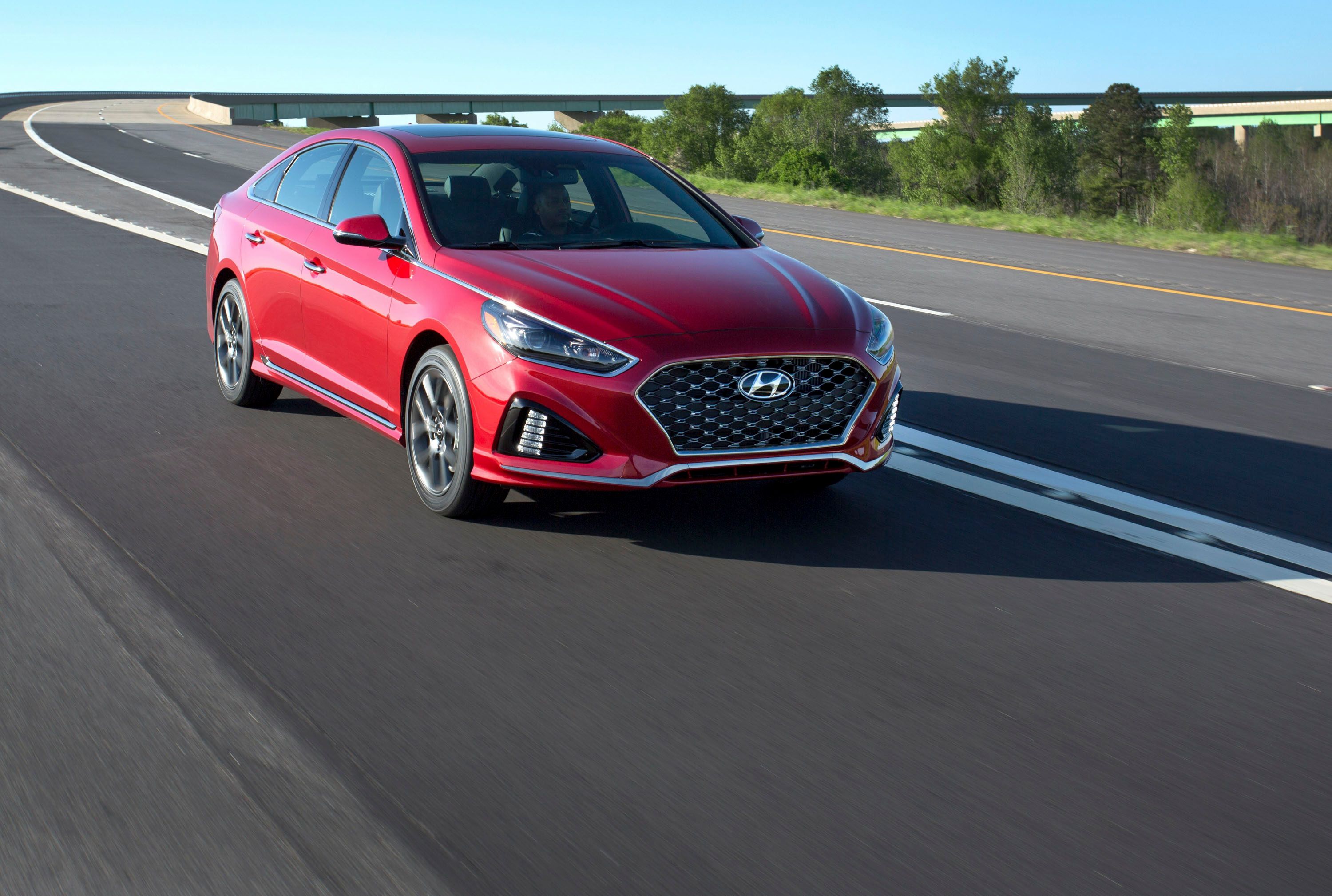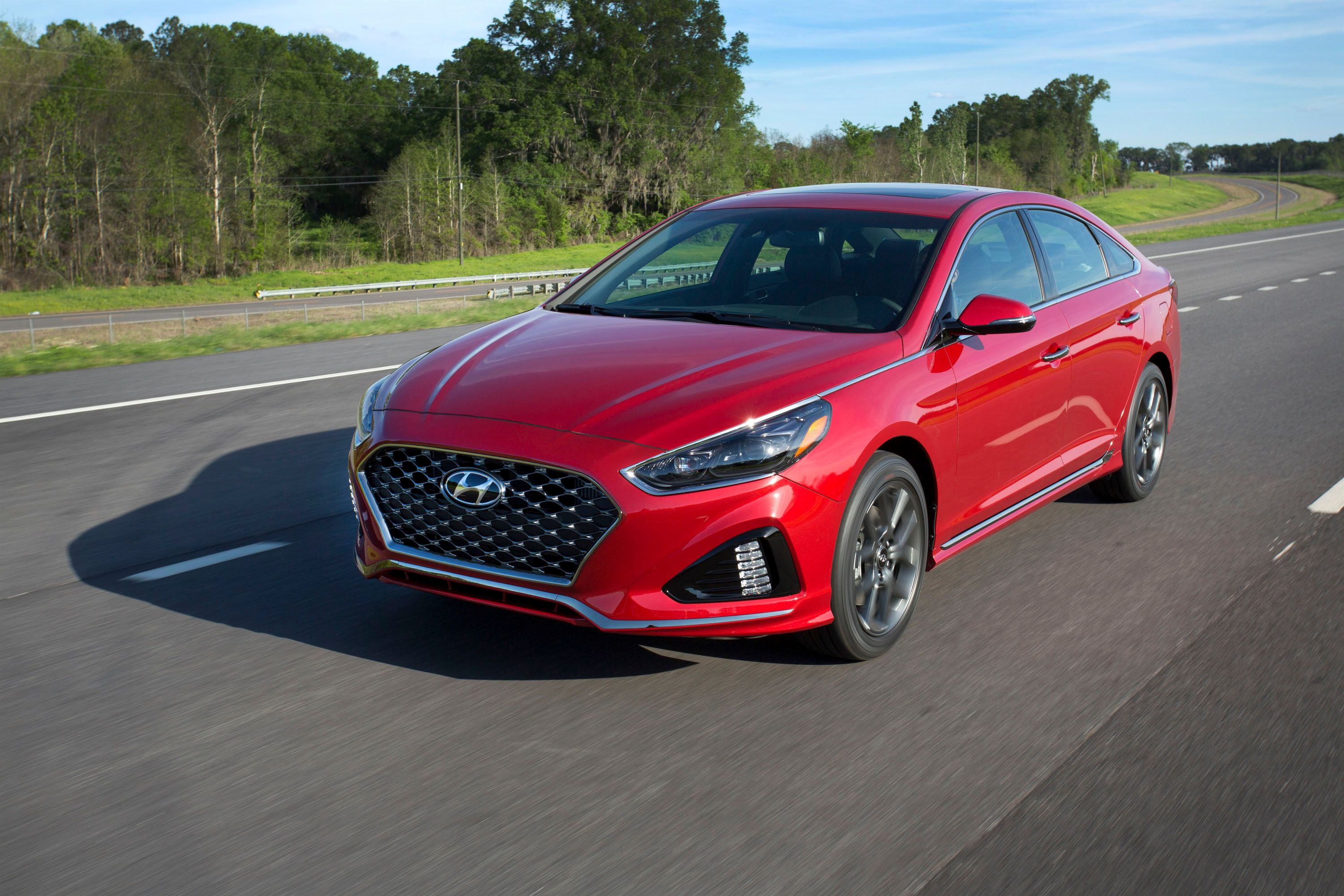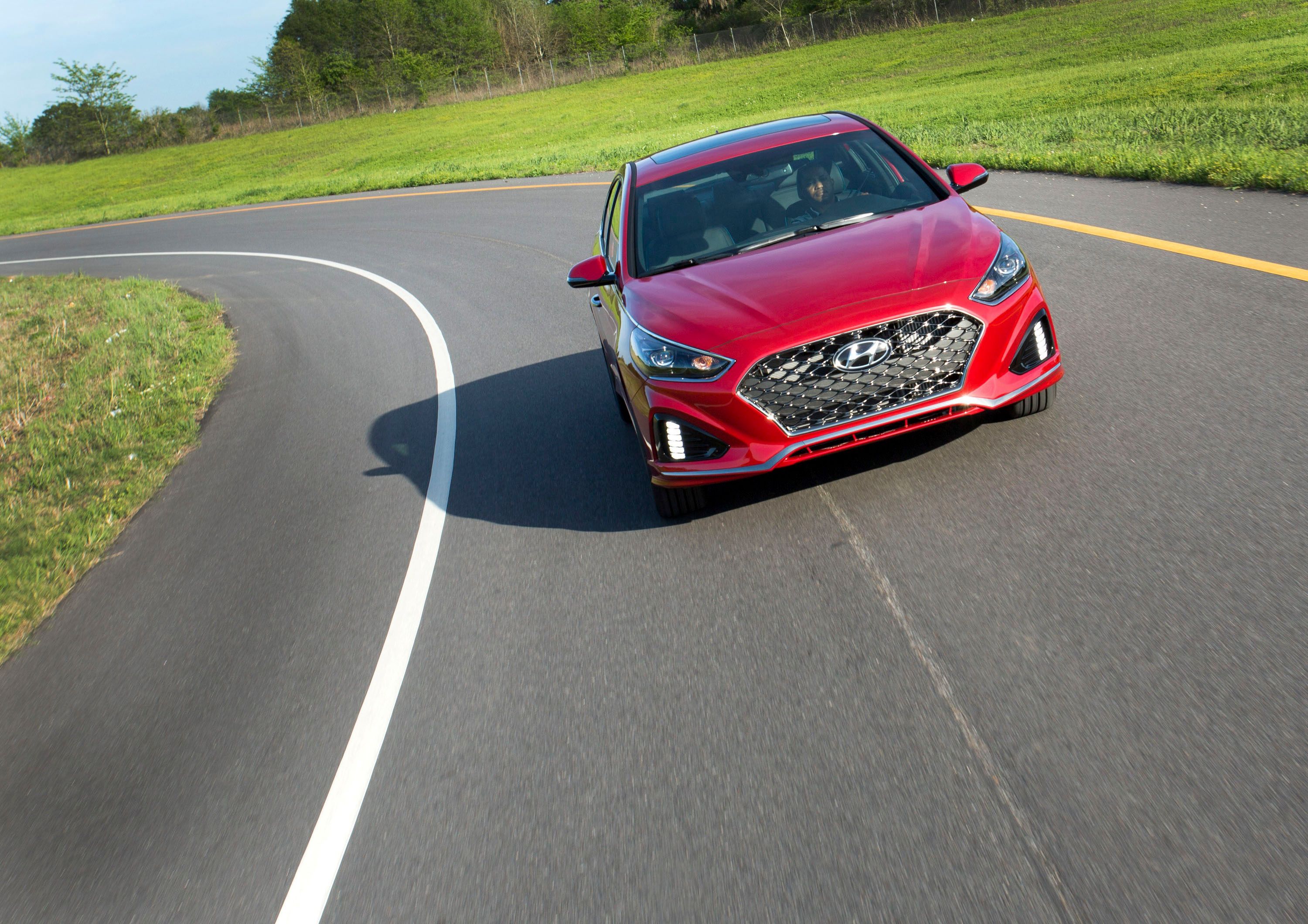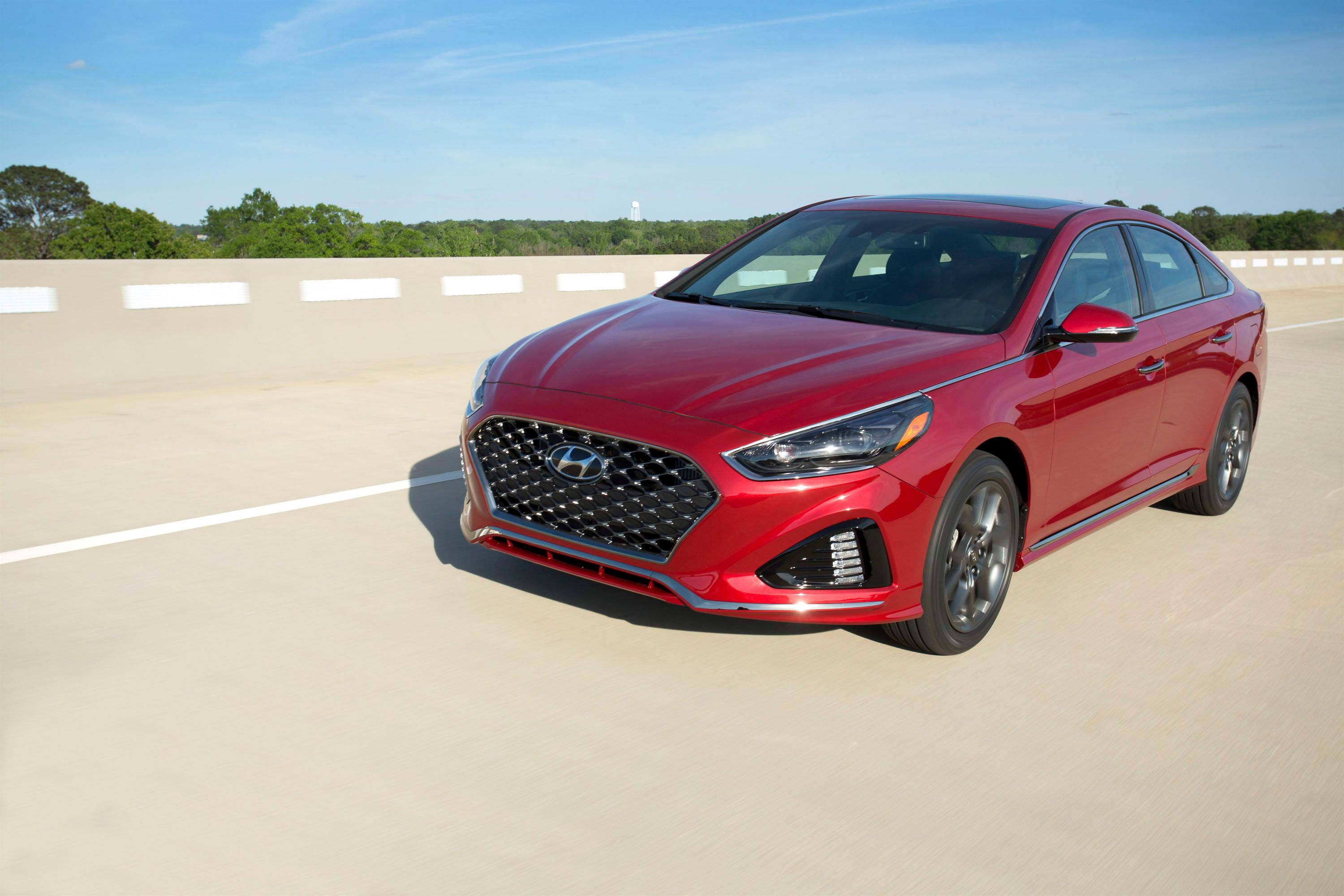At one time, Hyundai was one of the best econobox suppliers out there, bringing affordable and efficient vehicles to those who, quite honestly, didn’t have much to spend. Fast forward to today, however, and the brand’s evolution has brought it to a place where its cars are quite luxurious, comfortable, and a pleasure to drive. One prime example of that is the Hyundai Sonata, which has now gone through an extensive facelift for the 2018 model year, bringing about a new and more aggressive exterior look, a revamped, balanced interior, and some enhancements under the metal that include revised suspension and steering systems, a new transmission, and some new safety features as standard equipment.
When the seventh-generation model debuted for the 2015 model year, the Sonata featured DNA from the HCD-14 concept and a few cues from the Hyundai Genesis. It was a big departure from the previous model, but sales still dropped from 2014 to 2015. So, Hyundai went back to the drawing board and revised its Fluidic Sculpture 2.0 design language into what you’re looking at here today – a car that means business and looks good doing it. Will its new looks, updated interior, and revised suspension be enough to give models like the Ford Fusion, Toyota Camry, and Chevy Malibu a run for their money? Let’s takes a closer look and find out for ourselves.
2018 Hyundai Sonata
- Make: Array
- Model: 2018 Hyundai Sonata
- Engine/Motor: inline-4
- Horsepower: 185 @ 6000
- Torque: 178 @ 4000
- [do not use] Vehicle Model: Array
Exterior
The 2018 model year may have only brought about a facelift for the Sonata, but other automakers should make note, because this is what a facelift is supposed to be about. The car itself has dramatically changed. So much so, in fact, that it puts shame to changes BMW brought forth with the seventh-generation 5 Series. But, back to the topic at hand, the most noticeable change that comes into play to the Sonata’s exterior is its all-new nose. The grille is now reminiscent of that found on the Hyundai Tucson and the Veloster, only it sits much lower. This balances out those long headlights and emphasizes the length of the car, as the whole front end now looks longer. It’s well thought out, and the designers should be commended, but the new look wouldn’t be anything without those recessed and sharp-looking corner vents with LED running lights. And, with the new bumper design, the air dam has shrunk to almost nothing, but is now shaped in a way that the front fascia now has a sporty and aggressive lip.
The body lines on the hood are now longer and more dominate, which also helps to emphasize the look and feel of length that I mentioned earlier. As usual, nothing really changes when it comes to the side profile, however, the side skirts have been slightly revised and the 2.0-liter turbo models now get 18-inch wheels with Michelin tires – a nice change compared to the econo-rubber found on the current model. But, what’s more important is what’s going on in the rear, as there’s lots of new back here as well. To start off, there’s an all-new fascia with tons of character and uniquely shaped reflectors. The license plate area has been dropped down from the rear deck to the lower fascia, making way for a larger Hyundai logo and a new Sonata badge.
More importantly, however, are the new taillight units. Gone are the bubbly, and oddly shaped units from the current model, making way for new, sleeker units with an upscale lens layout. The only downside here is that instead of redesigning the rear fascia, Hyundai simply changed the cut in the fascia for the taillights, leaving a weird recessed area just below them that used to be taken up by the bulkier lenses. It doesn’t necessarily look bad, and it does ad a little more character back here, but Hyundai certainly could have done a little better in this regard. Down below, a new insert and new exhaust outlet design rounds out the exterior package.
Old vs New
|
Facelifted, 2018 Sonata |
2015 – 2017 Sonata |
As you can see from the image comparison above, the facelifted Sonata is a huge departure from the now, current model. It’s more aggressive, sportier, and the overall exterior design has clearly been thought out very well. LED headlights are not an option for the new Sonata, and there are several new wheel designs to choose from as well. But, it’s not all about looks, so let’s move on and talk a little more about the interior.
2018 Hyundai Sonata - Exterior Dimensions
|
Overall length |
191.14 inches |
|
Overall width |
73.42 inches (excluding door mirrors) |
|
Overall height |
58.07 inches |
|
Wheelbase |
110.43 inches |
|
Front overhang |
37.99 inches |
|
Rear overhang |
42.71 inches |
Interior
Changes to the interior are much less invasive than those that came to the exterior, so don’t expect to see a whole lot of change here. In fact, the changes to the interior are more subtle than anything and may not even be noticeable unless you have a keen eye or OCD. To start off, the instrument cluster now gets a defining ring that runs the entire perimeter, which also makes it looks like there’s a layered overhang up top. The portion of the dash that hangs over the instrument cluster looks a little more angular than before an possible even a little longer. Then again, that extra length could just be an illusion afforded by the rind that surrounds the instrument clusters, so take that with grain of salt. All of the HVAC vents on the dash have changed. The driver’s side vent is now taller and boxy, while the vent on the far passenger side is now a little larger and features rounded edges. The central vents have been trimmed down a bit and no longer have the chrome surrounds. The right, center vent retains the same shape as that of the current model, but the left, center vent is now rectangular, which kind of throws the balance off a bit.
As I said before, though, it’s all about the subtleties, and in this case, that comes in the form of a revised, three-spoke steering wheel. (The 2.0 turbo models should still get that flat-bottom unit.) The wheel now features gloss black trim around the thump buttons and just a little more padding in all the right places. The controls directly below the infotainment display have been revised a bit, and now feature slightly different buttons and larger knobs. Just below that, the HVAC controls now feature just one row up buttons at the bottom, with the second row of controls positioned between the larger control know on each said. This makes for a cleaner look up front, while providing for easier access to USB and 12-Volt access ports. Finally, the gauge dials in the instrument cluster get a new look. Again, it’s not a lot, but it’s not bad for a facelift. And, the car still comes with vented, cooled, and heated seats up front while the rear bench has a heating feature. A panoramic sunroof should be optional, as well as voice recognition and smartphone integration.
2018 Hyundai Sonata - Interior Dimensions
|
Front |
Rear |
|
|
Head room |
40.4 inches |
38.0 inches |
|
Leg room |
45.5 inches |
35.6 inches |
|
Shoulder room |
57.9 inches |
56.5 inches |
|
Hip room |
55.3 inches |
56.1 inches |
Drivetrain
The seventh-gen Sonata is offered with your choice of a 2.4-liter four-cylinder in SE, Sport, and Limited trim levels. There’s also a 1.6-liter in the Eco trim level, and a 2.0-liter turbocharged mill available in the Sport 2.0t and the Limited 2.0t. Technical specs of each engine remains the same through the facelift, which means 178 horsepower and 195 pound-feet of torque from that 1.6-liter in the eco, and 185 horsepower and 178 pound-feet from the 2.4-liter in the SE, Sport, and Limited trims. Finally, the 2.0t models deliver a cool 245 horsepower and 260 pound-feet of torque. The 2.4-liter models come standard with a six-speed automatic transmission. The Eco model gets a seven-speed dual-clutch tuned to save fuel. The 2.0-liter now has an all-new eight-speed automatic transmission. According to Hyundai, the new eight-speed delivers extra thrust off the line and a “more fuel-efficient dash down the interstate.” 2.0t models also get 18-inch wheels and Michelin tires.
So, buying a 2018 Sonata will still yield you the same engine choices, but you will get the benefit of better handling and ride quality thanks to improved steering response (12-percent stiffer torsion) and trailing arms that are 21-percent thicker than those on pre-2018 models. The new, more advanced bushings allow for quicker response time while the stiffer trailing arms provide better load management on harsh roads. If you want PR talk, that translates to “a communicative, nimble, and comfortable sedan.”
|
Engine |
SE |
Eco |
Sport |
Sport 2.0T |
Limited |
Limited 2.0T |
|
Type |
Inline 4-cylinder |
Inline 4-cylinder Twin-scroll Turbo |
Inline 4-cylinder |
Inline 4-cylinder Twin-scroll Turbo |
Inline 4-cylinder |
Inline 4-cylinder Twin-scroll Turbo |
|
Displacement (liters) |
2.4 |
1.6 |
2.4 |
2.0 |
2.4 |
2.0 |
|
Horsepower |
185 HP @ 6,000 RPM |
178 HP @ 5,500 RPM |
185 HP @ 6,000 RPM |
245 HP @ 6,000 RPM |
185 HP @ 6,000 |
245 HP @ 6,000 RPM |
|
Torque |
178 LB-FT @ 4,000 RPM |
195 LB-FT @ 1,500-4,500 RPM |
178 LB-FT @ 4,000 RPM |
260 LB-FT @ 1,350-4,000 RPM |
178 LB-FT @ 4,000 RPM |
260 LB-FT @ 1,350-4,000 RPM |
|
Compression ratio |
11.3:1 |
10.0:1 |
11.3:1 |
10.0:1 |
11.3:1 |
10.0:1 |
|
EPA Mileage City/Highway/Combined |
25 / 36 / 29 |
28 / 36 / 31 |
25 / 35 / 28 |
22 / 31 / 26 |
25 / 35 / 28 |
21 / 30 / 24 |
|
Curb weight (lbs.) |
3,250 |
3,219 |
3,311 |
3,492 |
3,380 |
3,589 |
Note: As of June 2017, Hyundai has yet to release official specs for the ECO and 2.0t trim levels, however, those trim levels are expected to carry the same power output and fuel economy when they are reintroduced to the lineup.
Pre-2018 Sonata’s came standard with dual front, side, and curtain airbags as well as an airbag for the driver’s knees. Safety systems included stability management, traction control, ABS, brake-force distribution, BA, and TPMS. These systems are now supplemented with blind spot detection and rear cross-traffic alert as standard. Optional safety features include lane departure warning and a lane-keep assist function. Even without the optional safety systems, the Sonata still leads the pack as far as standard safety equipment as of June 2017.
Pricing
Originally thought to be just a mild update, the new Sonata is actually a pretty big departure from the current model. But, pricing has increased for some models and dropped for others. For instance, the Sonata SE comes in at $22,050, which is just $100 more than the outgoing model. Meanwhile, the Eco will set you back $22,650 and the SEL $23,700. Limited and Sport models come in at $27,400 and $27,500, respectively. The range-topping Sport 2.0t and Limited 2.0t come in at $27,600 and $32,450. It should be noted that the range-topping Limited 2.0t trim level has actually decreased in price by $1,900. Now that’s impressive.
|
Model |
Engine |
Transmission |
MSRP |
|
SE |
2.4L GDI 4-cyl |
6-Speed Automatic with SHIFTRONIC® |
$22,050 |
|
Eco |
1.6L Turbo GDI 4-cyl |
7-Speed EcoShift® Dual Clutch Transmission with SHIFTRONIC® |
$22,650 |
|
SEL |
2.4L GDI 4-cyl |
6-Speed Automatic with SHIFTRONIC® |
$23,700 |
|
Limited |
2.4L GDI 4-cyl |
6-Speed Automatic with SHIFTRONIC® |
$27,400 |
|
Sport |
2.4L GDI 4-cyl |
6-Speed Automatic with SHIFTRONIC® |
$25,200 |
|
Sport 2.0T |
2.0L Turbo GDI 4-cyl |
8-Speed Automatic with SHIFTRONIC® |
$27,600 |
|
Limited 2.0T |
2.0L Turbo GDI 4-cyl |
8-Speed Automatic with SHIFTRONIC® |
$32,450 |
Competition
Honda Accord
The Honda Accord went through a major refresh for the 2016 model year, but it should still be pretty fresh as far as design goes when the refreshed Sonata hits showrooms. The Accord carries a similar price point but has a more aggressive exterior design that is vaguely reminiscent of the new Acura NSX. But, what really sets the Accord apart from the Sonata is the transmission choices, with a six-speed manual being the standard choice, while a conventional six-speed auto is available as is a CVT. Engine options include a 2.4-liter four-banger with 185 horsepower and 181 pound-feet of torque and a 3.5-liter V-6 with 278 horsepower and 252 pound-feet on tap. Fuel economy ranges anywhere between 18 mpg in the city, 28 on the highway, and 21 combined in V-6 models with a six-speed manual up to as much as 27 mpg in the city, 36 on the highway, and 30 combined for the four-banger with a CVT. There’s also a hybrid option that manages 49 mpg in the city, 47 on the highway, and 48 combined. The Accord starts out at $22,455 for the entry-level LX model and increases to as much as $34,930 for the range-topping Touring V-6 model. The Hybrid is offered as a stand-alone model, starting out at $29,605 and climbs to as much as $35,955 for the range-topping model.
|
Accord Sedan L4 |
2.4 L4 LX 6MT |
$22,455 |
|
2.4 L4 LX CVT |
$23,255 |
|
|
2.4 L4 Sport 6MT |
$24,515 |
|
|
2.4 L4 Sport CVT |
$25,315 |
|
|
2.4 L4 Sport CVT w/ Honda Sensing |
$26,315 |
|
|
2.4 L4 Sport SE 6MT |
$25,515 |
|
|
2.4 L4 Sport SE CVT |
$26,315 |
|
|
2.4 L4 EX 6MT |
$25,830 |
|
|
2.4 L4 EX CVT |
$26,630 |
|
|
2.4 L4 EX CVT w/ Honda Sensing |
$27,630 |
|
|
2.4 L4 EX-L CVT |
$28,920 |
|
|
2.4 L4 EX-L CVT w/ Navi & Honda Sensing |
$30,920 |
|
|
Accord Sedan V6 |
3.5 V6 EX-L 6AT |
$30,995 |
|
3.5 V6 EX-L 6AT w/ Navi & Honda Sensing |
$32,995 |
|
|
3.5 V6 Touring 6AT |
$34,930 |
Read our full review here.
Chevy Malibu
Flash back to the 2015 New York Auto Show, and you’ll see Chevy introducing the newest design of the Malibu that went on sale for the 2016 model year. Taking on a fastback-like design, the ninth-gen model is the sportiest Malibu of recent years and borrows some design cues from its big brother, the Impala. Sporty and sleek, the new Malibu features a four-inch longer wheelbase than before and came out to be some 300 pounds lighter than the model it replaced. The interior is unique but comfortable and offers decent technology for its price point. It’s quite comfortable and actually feels a little more upscale than you might expect. When it comes to the drivetrain department, the Malibu fell victim to the way of turbocharging, so there is no V-6 engine available for this generation. But, that’s not necessarily a bad thing.
The entry-level model, as well as the LS and 1LT trim levels, all get a 1.5-liter turbocharged mill with 160 horsepower and 184 pound-feet of torque. Meanwhile, the Premier trim comes with a 2.0-liter that puts out 250 horsepower and 258 pound-feet. The 1.5-liter mates to a six-speed auto while the 2.0-liter gets an eight-cog unit. There’s also a hybrid model that makes use of a 1.8-liter, two-motor hybrid setup, but it only delivers 124 horsepower and 129 pound-feet of torque. All models make use of direct fuel injection and are front-wheel drive. 1.5-liter models manage as much as 27 mph in the city and 36 mph on the highway while the 2.0-liter model gets 22 and 33, respectively. The hybrid really pays off in the fuel economy department, garnering 49 mpg in the city and 43 mpg on the highway. Pricing starts out at $21,680 for the entry-level L trim and increases to as much as $30,975 for the range-topping Premier trim level.
|
Model |
Price |
|
2016 Chevrolet Malibu L |
$22,500 |
|
2016 Chevrolet Malibu LS |
$23,995 |
|
2016 Chevrolet Malibu LT Ecotec 1.5L turbo |
$25,895 |
|
2016 Chevrolet Malibu LT 2.0L turbo |
$29,495 |
|
2016 Chevrolet Malibu Premier 2.0L turbo |
$31,795 |
|
2016 Chevrolet Malibu Hybrid LT |
$28,645 |
Read our full review here.
Conclusion
So here’s the deal: the Sonata was selling quite well here in the U.S. prior to the introduction of the seventh-generation, but Hyundai was worried about performance in South Korea, so it toned the model down. Obviously, that was a big mistake, as just a few years later we’re looking at a facelifted model that significantly more aggressive and more attractive too. Before, I speculated that Hyundai really needed to hit a homerun with this facelift or it would have to scramble to come up with an eighth-gen model that will actually appeal to the masses. But, I spoke a little too soon, as Hyundai obviously figured that out and that’s why we’re looking at a car that’s so attractive as we roll into 2018. Models like the Honda Accord and Ford Fusion really need to watch out, and you can bet that this generation will run well past the turn of the decade.
What do you think of the Sonata’s new look? Is it exactly what the car needed or is there something more Hyundai could have done to make the car better? Let us know your thoughts in the comments section below.


